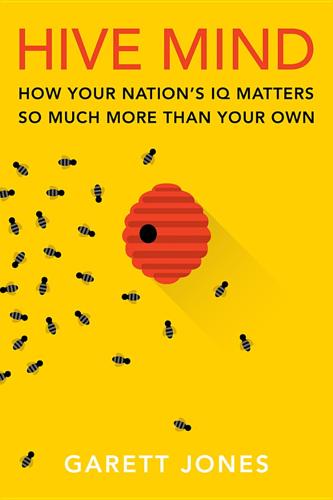
Hive Mind: How Your Nation’s IQ Matters So Much More Than Your Own
by
Garett Jones
Published 15 Feb 2015
Or instead are they more likely to come to the insight of economist Gordon Tullock, who stopped voting once he learned that he was more likely to die in an accident on the way to the voting booth than he was to change the outcome of the election? Early studies of who votes looked at years of education, which of course has a moderate to strong relationship with IQ. In a classic study from the 1970s, aptly titled Who Votes, political scientists Wolfinger and Rosenstone concluded, The core finding is the transcendent importance of education. . . . [T]he personal qualities that raise the probability of voting are the skills that make learning about politics easier and more gratifying and reduce the difficulties of voting.8 The positive link between education and voting turns up in many countries.
…
Pande argues that informed voters can hold politicians accountable: they remember if the politician was corrupt, effective, scandalous, whatever. Recalling the famous Dali painting with the melting clock—the one on the cover of Barro and Sala-i-Martin’s textbook—let’s call this the “persistence of memory” channel.14 As one piece of evidence she discusses a classic study by economists Ferraz and Finan of Brazilian government audits: Brazil’s central government mandated audits in some regions but not others, and so Ferraz and Finan could compare how voters treated incumbent mayors both pre- and post-audit, as well as between audited and non-audited regions.15 Yes, the audits mattered, but it also turns out that radio mattered: radio, that key source of low-cost information for so many people around the world.
…
The Social Construction of Opinion Exactly what is the effect of the opinions of others on our own? Solomon Asch, “Opinions and Social Pressure”17 We’ve seen evidence of conformity in the classroom and after a neighbor wins the lottery, but the most famous conformity study deserves a moment of our time. The classic study: social psychologist Solomon Asch puts a group of students in a room, and they’re all shown three lines drawn on a piece of cardboard, labeled A, B, C. The second line is clearly the longest and C is clearly the shortest. Students are asked, one by one, to say out loud which of the lines is longest.
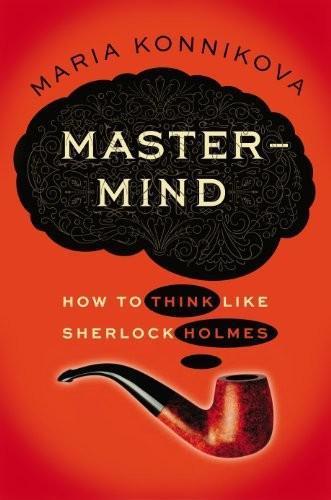
Mastermind: How to Think Like Sherlock Holmes
by
Maria Konnikova
Published 3 Jan 2013
The effect disappeared if subjects were first made explicitly aware of the rainy day: if they were asked about the weather prior to stating their happiness level, the weather no longer had an impact. In studies of the effect of the environment on emotion, if a nonemotional reason is given for a subject’s state, the prime effect is likewise eliminated. For instance, in one of the classic studies of emotion, if you’re given a shot of adrenaline and then you interact with someone who is displaying strong emotion (which could be either positive or negative), you are likely to mirror that emotion. However, if you are told the shot you received will have physically arousing effects, the mirroring will be mitigated.
…
What separates Holmes from Watson, the passive observer from the active one, engaged passivity from disengaged activity, is precisely the descriptor I’ve used in both cases: engagement. Flow. Motivation. Interest. Call it what you may. That thing that keeps Holmes focused exclusively on his visitor, that enraptures him and prevents his mind from wandering anywhere but to the object at hand. In a set of classic studies, a group of Harvard researchers set out to demonstrate that active perceivers categorize and characterize on a near-subconscious level, automatically and without much thought, but then fail to implement the final step of correction—even when they have all of the information to do so—and so end up with an impression of someone that does not take into account all of the variables of the interaction.
…
You are led into a room with a table. On the table are three items: a box of tacks, a book of matches, and a candle. You are told that you have only one assignment: attach the candle to the wall. You can take as much time as you need. How do you proceed? If you are like over 75 percent of the participants in the now-classic study by the Gestalt psychologist Karl Duncker, you would likely try one of two routes. You might try to tack the candle onto the wall—but you’ll quickly find that method to be futile. Or you might try to light the candle and use the dripping wax to attach it to the wall, foregoing the box of tacks entirely (after all, you might think, it could be a distracter!).

The Eureka Factor
by
John Kounios
Published 14 Apr 2015
Loyd, Cyclopedia of Puzzles: en.wikibooks.org/wiki/Creativity_-_An_Overview/Thinking_outside_the_box#mediaviewer/File:Eggpuzzle.jpg. 3 An early classic study of the Nine-Dot Problem is described in N. R. F. Maier, “Reasoning in Humans: I. On Direction,” Journal of Comparative Psychology 10 (1930): 115–43. An example of a recent cognitive psychology study of the Nine-Dot Problem is described in T. C. Kershaw and S. Ohlsson, “Multiple Causes of Difficulty in Insight: The Case of the Nine-Dot Problem,” Journal of Experimental Psychology Learning Memory and Cognition 30 (2004): 3–13. Here is another solution to the Nine-Dot Problem. This one uses three, rather than four, lines: 4 The classic study of the Two-String Problem was conducted by N.
…
The diagram of the brain shown in figure 3.9 is reproduced from commons.wikimedia.org/wiki/File:Brain_headBorder.jpg. 2 The study of problem solving in patients with frontal lobe damage is described in C. Reverberi et al., “Better Without (Lateral) Frontal Cortex? Insight Problems Solved by Frontal Patients,” Brain 128 (2005): 2882–90. Think Smart, Not More 1 The classic study of the cognitive foundations of expertise in chess was written by A. D. de Groot, Thought and Choice in Chess, 2nd ed. (The Hague: Mouton Publishers, 1965). A recent article discusses more recent perspectives and misquotations of de Groot’s work: M. Bilalic, P. McLeod, and F. Gobet, “Expert and ‘Novice’ Problem Solving Strategies in Chess: Sixty Years of Citing de Groot (1946),” Thinking and Reasoning 14 (2008): 395–408.
…
Morton and Rafto’s findings of hemispheric asymmetry are discussed in B. E. Morton and S. E. Rafto, “Behavioral Laterality Advance: Neuroanatomical Evidence for the Existence of Hemisity,” Personality and Individual Differences 49 (2010): 34–42. CHAPTER 12: CARROTS AND STICKS * * * The Paradox of Motivation 1 Glucksberg’s classic study of the effects of financial incentives on performance in solving the Candle Problem is described in S. Glucksberg, “The Influence of Strength of Drive on Functional Fixedness and Perceptual Recognition,” Journal of Experimental Psychology 63 (1962): 36–41. Figure 12.1 is taken from upload.wikimedia.org/wikipedia/commons/d/d6/Genimage.jpg.

Unfinished Empire: The Global Expansion of Britain
by
John Darwin
Published 12 Feb 2013
The greatest challenge they faced, having arrived on the scene, was deciding what goal to aim for and what tactics to use. In European warfare the rules of the game were straightforward. When its army was beaten, the sovereign state would surrender and a new treaty was made. Against non-European foes, nothing could be taken for granted. In his classic study Small Wars: Their Principles and Practice, published in 1896, Colonel Charles Callwell identified three different kinds: campaigns to suppress insurrection, campaigns of conquest and annexation and campaigns ‘to wipe out an insult, to avenge a wrong or overthrow a dangerous enemy’.45 The difficulty with small wars, as Callwell admitted, was that conditions varied so much.
…
Williams, Capitalism and Slavery, pp. 40–41. 34. Quoted in T. B. Macaulay, History of England (Everyman edn, London, 1906), vol. III, p. 278. 35. Speech on ‘Conciliation with America’, 22 March 1775, in Burke’s Speeches and Letters on American Affairs (Everyman edn, London, 1908), p. 105. 36. The classic study of this is P. J. Marshall, The Impeachment of Warren Hastings (Oxford, 1965). 37. Macaulay in the House of Commons, 10 July 1833. A. B. Keith (ed.), Speeches and Documents on Indian Policy 1750–1921 (Oxford, 1922), vol. 2, p. 244. 38. J. S. Mill, Representative Government (1861), ch. 18. 39.
…
Rogers, The History of Georgetown County, South Carolina (Columbia, SC, 1970), p. 10. 34. This is the main theme of Merrell, American Woods. 35. See J. O. Spady, ‘Colonialism and the Discursive Precedents of “Penn’s Treaty with the Indians”’, in W. A. Pencak and D. K. Richter (eds.), Friends and Enemies in Penn’s Woods (University Park, PA, 2004), p. 21. 36. The classic study is F. Jennings, The Invasion of America: Indians, Colonialism and the Cant of Conquest (Chapel Hill, NC, 1975). 37. I owe this point to Richter, Facing East, p. 41. 38. Ibid., p. 51. 39. P. C. Mancall, Deadly Medicine: Indians and Alcohol in Early America (London, 1995), p. 14. 40. V. Lieberman, Strange Parallels: Southeast Asia in Global Context c. 800–1830 (Cambridge, 2003), vol. 1, pp. 277–82. 41.
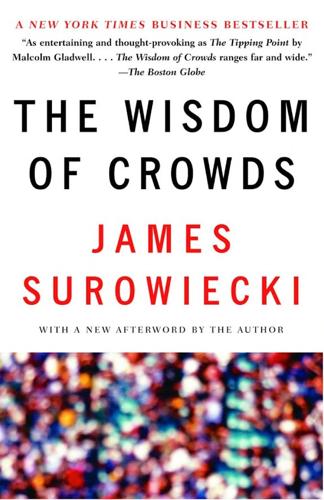
The Wisdom of Crowds
by
James Surowiecki
Published 1 Jan 2004
Just as water buffalo will herd together in the face of a lion, football coaches, money managers, and corporate executives often find the safety of numbers alluring—as the old slogan “No one ever got fired for buying IBM” suggests. The striking thing about herding is that it takes place even among people who seem to have every incentive to think independently, like professional money managers. One classic study of herding, by David S. Scharfstein and Jeremy C. Stein, looked at the tendency of mutual-fund managers to follow the same strategies and herd into the same stocks. This is thoroughly perplexing. Money managers have jobs, after all, only because they’ve convinced investors that they can outperform the market.
…
In their recent comprehensive study of what makes companies, Nitin Nohria, William Joyce, and Bruce Roberson found that in the best companies, “Employees and managers were empowered to make many more independent decisions, and urged to seek out ways to improve company operations, including their own.” The virtues of decentralization are twofold. On the one hand, the more responsibility people have for their own environments, the more engaged they will be. In one classic study, two groups of people were put in rooms to work on puzzles and do proofreading while loud, random noises recurred in the background. One group was left alone, while the other was given a button they could press to turn off the sound. The second group solved five times as many puzzles and made many fewer proofreading errors.
…
They find losses more painful—by some accounts, twice as painful—as they find gains pleasurable, and so they hold on to losing stocks longer than they should, believing that as long as they haven’t sold the stock, then they haven’t suffered any losses. And, above all, investors are overconfident, which, among other things, means that individuals trade more than they should and end up costing themselves money as a result. One classic study by Brad M. Barber and Terrance Odean looked at all the stocks that sixty-six thousand individual investors bought and sold between 1991 and 1996. The average investor turned over 75 percent of his portfolio every year, which is far more than most economists would recommend, but the most aggressive traders turned over an incredible 250 percent of their portfolios every year.
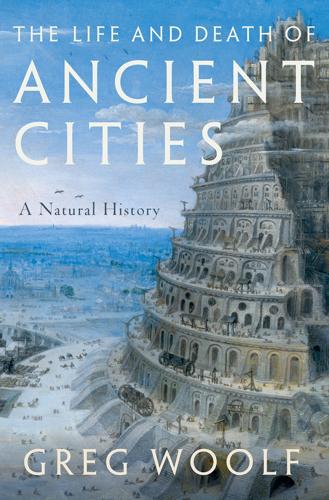
The Life and Death of Ancient Cities: A Natural History
by
Greg Woolf
Published 14 May 2020
Intellectually curious, forever turning up new things to read and argue about, endlessly enthusiastic and enormously good fun, he is missed by many of us. This book would have been much better if I could have argued about it with him for a little longer. The text itself has been written largely in the Institute of Classical Studies in the School of Advanced Study of the University of London. Directing the ICS has been a huge privilege. At the heart of all we do there is an extraordinary library, run by the University and the Hellenic and Roman Societies in partnership, provided not just with fantastic collections but also with a marvellous specialist staff.
…
On upland resources see Garnsey (1988b). 4.A theme of Horden and Purcell (2000). 5.Garnsey (1988a), Halstead and O’Shea (1989). 6.Thonemann (2011). 7.Osborne and Cunliffe (2005) considers the Iron Age, but some essays have wider application, e.g., Purcell (2005b). 8.Garnsey (1988a, 1999). 9.Cherry (1990), Dawson (2011). 10.See Malone (2015) for a clear account. 11.Halstead and O’Shea (1982). 12.On maritime transport see Bass (1972), Casson (1974), André and Baslez (1993), Pomey (1997), Robinson and Wilson (2011), Harris and Iara (2011). 13.Finley (1964), Grethlein (2010). 14.Knapp (2008) is the best guide to Cyprus in prehistory. 15.For discussion of the various ways to interpret this see Knapp (1990). 16.Manning et al. (2014). 17.Cline and Harris-Cline (1998). 18.Broodbank (2000). 19.Dickinson (1994), Bennet (2007). A classic study with much still of value is Renfrew (1972). For a short synoptic account see Dickinson (2014), and for collections of recent work see Shelmerdine (2008), Cline (2010). 20.Letesson and Knappett (2017). 21.Whitelaw (2017). 22.Bevan (2010), Bevan and Wilson (2013), Whitelaw (2017). 23.Whitelaw (2000). 24.Manning (2008). 25.Chadwick (1976). 26.Kelder (2006). 27.Blake (2008). 28.Sandars (1978). 29.Michel (2008). 30.Rossel et al. (2008). 31.Edens and Kohl (1993). 32.Sherratt (1993).
…
Malden, MA: Wiley-Blackwell. Briant, Pierre. 2017. Kings, Countries, Peoples: Selected Studies on the Achaemenid Empire. Translated by Amélie Kuhrt, Stuttgart: Franz Steiner Verlag. Broadhead, William. 2000. “Migration and Transformation in Northern Italy in the 3rd–1st Centuries B.C.” Bulletin of the Institute of Classical Studies (44): 145–166. Broadhead, William. 2007. “Colonization, Land Distribution and Veteran Settlement.” In Companion to the Roman Army, edited by Paul Erdkamp, 148–163. Malden, MA: Wiley-Blackwell. Broodbank, Cyprian. 2000. An Island Archaeology of the Early Cyclades. Cambridge: Cambridge University Press.
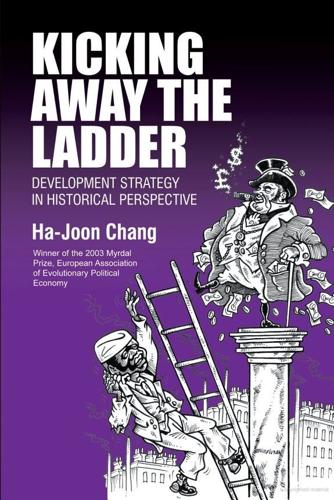
Kicking Awaythe Ladder
by
Ha-Joon Chang
Published 4 Sep 2000
For example, in what was until recently the standard overview of US economic history, North mentions tariffs once, only to dismiss them as an insignificant factor in explaining US industrial development. He argues, without bothering to establish the case and by citing only one highly-biased secondary source (the classic study by F Taussig, 1892), 'while tariffs became increasingly protective in the years after the Civil War, it is doubtful if they were very influential in affecting seriously the spread of manufacturing'.54 However, a more careful and unbiased reading of the history reveals that the importance of infant industry protection in US development cannot be overemphasized.
…
The Japanese government also started building telegraph infrastructure in 1869, and by 1880 all major cities were linked in this way.179 How do we evaluate the role of state-owned enterprises in industry and infrastructure in early modern Japan? Many commentators are not very positive about them, given that they were mostly-unprofitable.180 However, other scholars see more positive aspects. For example, in his classic study, Thomas Smith sums up his verdict on the role of Japanese state-owned enterprises in the early Meiji period in the following way: What did government enterprise accomplish between 1686 and 1880? Quantitatively, not much: a score or so of modern factories, a few mines, a telegraph system, less than a hundred miles of railway.
…
Of course, in most cases, the manufacturers' support for free trade was a selfcentred one, rather than out of their intellectual conversion to lofty principle of free trade - while supporting the repeal of the Corn Law, the cotton manufacturers remained opposed to free export of cotton machinery right until the end of the ban (first imposed in 1774) in 1842 (Musson 1978, p. 101; see section 2.3.3.). 41. Bairoch 1993, pp. 20-1. 42. The term comes from Gallagher and Robinson 1953. 43. Kindleberger 1978, p. 196. See Semmel 1970 for a classic study of the role of economic theory in the development of British trade policy between 1750 and 1850. 44. Kindleberger 1975; Reinert 1998. In 1840, Bowring advised the member states of 45. 46. 47. 48. 49. 50. 51. 52. 53. 54. 55. 56. 57. 58. 59. 60. German Zollverein to grow wheat and sell it to buy British manufactures (Landes 1998, p. 521).
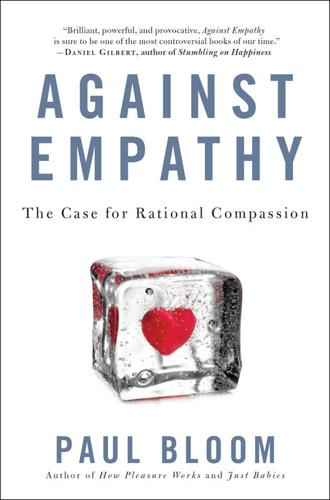
Against Empathy: The Case for Rational Compassion
by
Paul Bloom
But the children do not typically show signs of distress themselves. The only times that they reliably seem to get upset is when they themselves cause the suffering of another person, but here the negative response is most likely due to guilt and perhaps fear, not empathic engagement. Or consider a classic study in which pairs of six-month-olds were observed as they interacted in a playroom in the presence of their mothers. Sometimes one of the babies would become distressed, and sometimes the other baby would react by touching or gesturing toward him or her. But again, there was no evidence that the distress of one baby ever bothered another baby.
…
But there’s something even better. Self-control can be seen as the purest embodiment of rationality in that it reflects the working of a brain system (embedded in the frontal lobe, the part of the brain that lies behind the forehead) that restrains our impulsive, irrational, or emotive desires. In a series of classic studies, Walter Mischel investigated whether children could refrain from eating one marshmallow now to get two later. He found that the children who waited for two marshmallows did better in school and on their SATs as adolescents and ended up with better mental health, relationship quality, and income as adults.
…
Preston and Frans de Waal, “Empathy: Its Ultimate and Proximate Bases,” Behavioral and Brain Sciences 25 (2002): 1–71. 174 Paul Harris has reviewed Paul Harris, “The Early Emergence of Concern for Others” (unpublished manuscript, Harvard University, n.d.). “The 15-month-old, Len” Example from Judy Dunn and Carol Kendrick, Siblings: Love, Envy, and Understanding (Cambridge, MA: Harvard University Press, 1982), 115. 175 consider a classic study Dale F. Hay, Alison Nash, and Jan Pedersen, “Responses of Six-Month-Olds to the Distress of Their Peers,” Child Development (1981): 1071–75. an observation about chimpanzees Frans B. M. De Waal and Filippo Aureli, “Consolation, Reconciliation, and a Possible Cognitive Difference Between Macaques and Chimpanzees,” Reaching into Thought: The Minds of the Great Apes (1996): 80–110.
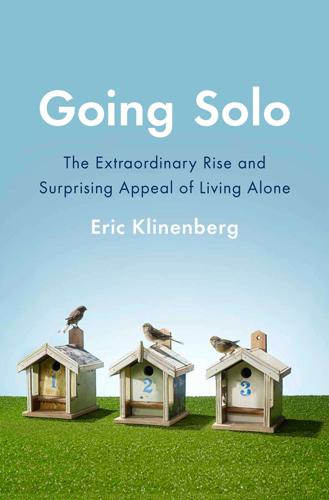
Going Solo: The Extraordinary Rise and Surprising Appeal of Living Alone
by
Eric Klinenberg
Published 1 Jan 2012
“‘The city is like that,’” he quoted her as saying, and added his own conclusion: “Such complete anonymity could be found nowhere but in the city of today, and nowhere in the city save in the rooming-house.”13 Some city dwellers relished this anonymity, however, because it liberated them to live by their own “inner laws.” In another classic study from the University of Chicago, The Ghetto, sociologist Louis Wirth explained that in the early twentieth century a number of Jewish hotels popped up in Chicago to house Jews who wanted to escape the confines of their local community. During the same era in New York City, writes one historian, “the first full-blown generation of American moderns” moved to Greenwich Village so they could enjoy “life without a father” (to use Gertrude Stein’s phrase) and forge “a community of dissidents who prided themselves on living a life apart.”
…
The data on aging in Europe come from Henry Aaron, “Longer Life Spans: Boon or Burden?” Daedalus, Winter 2006: 9–19. And see Robert William Fogel, The Escape from Hunger and Premature Death, 1700–2100: Europe, America, and the Third World (Cambridge: Cambridge University Press, 2004), p. 1. 3. The classic study of increased mortality among the recently widowed is C. Murray Parkes, B. Benjamin, and R. G. Fitzgerald, “Broken Heart: A Statistical Study of Increased Mortality Among Widowers,” British Medical Journal 1, no. 5646 (March 22, 1969): 740–43. 4. About 1.5 million Americans live in a nursing home on any given day, and about 3 million people reside in them over the course of a typical year.
…
See Laura Carstensen, “Social and Emotional Patterns in Adulthood: Support for Socioemotional Selectivity Theory,” Psychology and Aging 7 (1982) no. 3: 331–38. 12. See Martha Albertson Fineman, The Autonomy Myth: A Theory of Dependency (New York: New Press, 2005). 13. For instance, in his classic study of urban social networks, Claude Fischer reports that “old men were the most isolated” of all social groups. Claude Fischer, To Dwell Among Friends: Personal Networks in Town and City (Chicago: University of Chicago Press, 1982), p. 253. Erin Cornwell’s analysis of recent General Social Survey data reveals the same pattern. 14.

How to Blow Up a Pipeline
by
Andreas Malm
Published 4 Jan 2021
Absent swift results, ‘Negroes unquestionably will look to untried and perhaps less responsible leaders’ – notably Malcolm X – and before this spectre, the federal government acquiesced. The civil rights movement won the Act of 1964 because it had a radical flank that made it appear as a lesser evil in the eyes of state power. That flank was associated with black violence, ever an incubus of the white American psyche. In the classical study of the radical flank effect, Black Radicals and the Civil Rights Mainstream, 1954–1970, Herbert H. Haines recaps the dialectic: ‘Nonviolent direct action struck at the heart of powerful political interests because it could so easily turn to violence. The result was federal action designed to make further protest unnecessary.’
…
If the channel of non-violence … ‘Letter from Birmingham City Jail’ in King, A Testament, p. 297. p. 49. ‘Negroes unquestionably …’ G. Mennen Williams, assistant secretary of state for African affairs, to Kennedy, quoted in Herbert H. Haines, Black Radicals and the Civil Rights Mainstream, 1954–1970 (Knoxville: University of Tennessee Press, 1988), p. 161. p. 49. In the classical study … Ibid., p. 179. Cf. e.g. Churchill, Pacifism, pp. 55–57, 109. p. 49. If the cities burned … McGeorge Bundy, quoted in Haines, Black Radicals, p. 179. p. 50. In the words of Verity Burgmann … Verity Burgmann, ‘The Importance of Being Extreme’, Social Alternatives 37 (2018), p. 10. p. 51. ‘Our policy to achieve …’ Nelson Mandela, Long Walk to Freedom (London: Abacus, 1995), pp. 433, 320.

You Are Here: Why We Can Find Our Way to the Moon, but Get Lost in the Mall
by
Colin Ellard
Published 6 Jul 2009
But if the flash of light suggests that you are walking in the completely wrong direction—back toward the door rather than toward the far wall where the power switch is located—you might be prone to disbelieve your eyes, wondering if the poor light has caused some kind of illusion. WHAT’S GOOD FOR THE GOOSE MAY NOT BE GOOD FOR US In a classic study of animal navigation, Ursula von St. Paul took a group of domestic geese on a country ride in a small covered cart. The ride began at their home and proceeded through a series of complicated switchback turns along narrow lanes through varying types of terrain. For some segments of the ride, von St.
…
The study of lost-person behavior in Peter Lougheed Park was conducted by David Heth of the University of Alberta and described in the paper “Characteristics of Travel by Persons Lost in Albertan Wilderness Areas,” Journal of Environmental Psychology 18 (1998), 223-235. 3. Ronald Schmidt and Dwight McCarter, Lost! A Ranger’s Journal of Search and Rescue (Graphicom: Yellow Springs, OH, 1988). 4. Many of Wehner’s classic studies are described in his paper with Martin Muller entitled “Path Integration in Desert Ants, Cataglyphis fortis,” Proceedings of the National Academy of Sciences 85, no. 4 (1988), 5287-5290. 5. The studies showing that ants with backpacks still estimate distance accurately are described in a chapter called “Arthropods” written by Wehner for the book Animal Homing, edited by F.
…
The studies of the effects of physical proximity on communication in the two research laboratories are described by R. E. Kraut, C. Egido, and J. Galegher, “Patterns of Contact and Communication in Scientific Research Collaboration,” in Intellectual Teamwork, edited by Galegher, Kraut, and Egido (L. Erlbaum: Hillsdale, NJ, 1990). 14. Early classic studies of the effects of proximity are described in Thomas Allen’s paper “Communications Networks in R&D Laboratories,” R&D Management 1, no. 1 (1970), 14-21. 15. The case study of the redesign of the ThoughtForm offices is found in the paper by J. Peponis et al., “Designing Space to Support Knowledge Work,” Environment and Behavior 39 (2007), 815-841.

Who Rules the World?
by
Noam Chomsky
Accordingly, what’s surprising is to see the reactions to the release of those Justice Department memos, even by some of the most eloquent and forthright critics of Bush malfeasance: Paul Krugman, for example, writing that we used to be “a nation of moral ideals” and that never before Bush “have our leaders so utterly betrayed everything our nation stands for.”2 To say the least, that common view reflects a rather slanted version of American history. Occasionally, the conflict between “what we stand for” and “what we do” has been forthrightly addressed. One distinguished scholar who undertook the task was Hans Morgenthau, a founder of realist international relations theory. In a classic study published in 1964 in the glow of Kennedy’s Camelot, Morgenthau developed the standard view that the United States has a “transcendent purpose”: establishing peace and freedom at home and indeed everywhere, since “the arena within which the United States must defend and promote its purpose has become world-wide.”
…
The resolution also has another paragraph, calling for “steps towards the goal of establishing in the Middle East a zone free from weapons of mass destruction”—obligating the United States and United Kingdom even more than others to take this initiative seriously.16 These comments naturally leave out many urgent topics, among them the horrifying descent of Syria into suicide and ominous developments in Egypt, which are sure to have a regional impact. Nonetheless, this is how some of the core issues appear, to me at least. 12 “Nothing for Other People”: Class War in the United States Norman Ware’s classic study of the industrial worker appeared ninety years ago, the first of its kind.1 It has lost none of its significance. The lessons Ware draws from his close investigation of the impact of the emerging industrial revolution on the lives of working people, and on society in general, are just as pertinent today as when he wrote, if not more so, in the light of the striking parallels between the 1920s and today.
…
It is important to remember the condition of working people when Ware wrote. The powerful and influential American labor movement that arose during the nineteenth century was being subjected to brutal attack, culminating in Woodrow Wilson’s Red Scare after World War I. By the 1920s, the movement had largely been decimated; a classic study by the eminent labor historian David Montgomery is entitled The Fall of the House of Labor. The fall occurred in the 1920s. By the end of the decade, he writes, “corporate mastery of American life seemed secure.… Rationalization of business could then proceed with indispensable government support,” with government largely in the hands of the corporate sector.2 It was far from a peaceful process; American labor history is unusually violent.
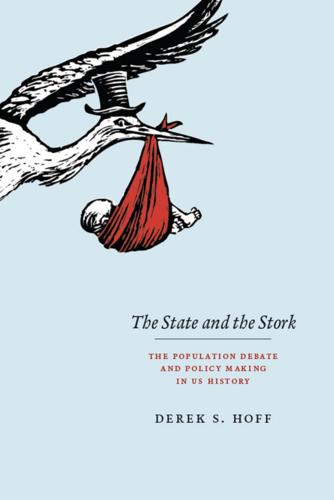
The State and the Stork: The Population Debate and Policy Making in US History
by
Derek S. Hoff
Published 30 May 2012
Republicans maintained that North America was sufficiently vast and underpopulated to remain agricultural for generations to come, especially if free trade allowed farmers to export crop surpluses. (Colonists believed that Native Americans lived at such an early stage of development that contact and competition with Europeans could produce only two possible outcomes: assimilation or extinction.) As historian Drew McCoy observes in his classic study of republi- foundations 19 can political economy, the essence of Jeffersonianism was the promotion of development across space rather than time; westward expansion would stall the progression through the social stages that ended in corruption and decay.16 British Americans who thought about population in geopolitical terms, though, tended to celebrate their rising numbers.
…
Finally, slavery fostered efficient land use by preserving an agricultural economy, which, in classic republican terms, prevented manufacturinginduced population concentrations. A few Southerners denied that slavery put pressure on white population growth, but the majority admitted a demographic drag, and, in Malthusian terms, identified social advantages arising from it. According to a classic study of proslavery ideology, “the slaveholder concluded that slavery was the best answer to the gloomy speculation advanced under the Malthusian law.”128 In this vein, the South’s languid demographics and slow pace of life compared favorably to the rapid population growth in northern industrial cities, which pauperized workers and created a permanent class of urban wage slaves.
…
Progressive intellectuals such as Walter Weyl, one of the founders of the New Republic, were captivated by the metaphor of the closing of the frontier and utilized Malthusian arguments to call for new frontiers of social democracy.80 Further, postfrontier concerns with the possible exhaustion of America’s natural resources animated the turn-of-the-century conservation movement. Yet, progressive conservation was driven not by Malthusianism but by a desire to scientifically manage natural resources in the name of economic efficiency.81 Samuel Hays notes in his classic study of the progressives that although conservationists “expressed some fear that diminishing resources would create critical shortages in the future . . . they were not Malthusian prophets of despair and gloom.”82 the birth of the modern population debate 57 In addition, even though poverty had been linked to demography since Malthus, progressives did not assume that overpopulation played much of a role in the ills of the city.
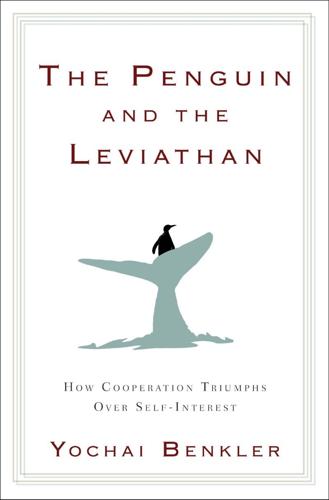
The Penguin and the Leviathan: How Cooperation Triumphs Over Self-Interest
by
Yochai Benkler
Published 8 Aug 2011
The effects of humanization—of seeing the other person as a fellow human being—on cooperation can be observed not only in brain scans, or by asking people what they feel, but through the laboratory as well. Experiments have been conducted to see to what extent humanization motivates people to cooperate with others even when it is actually costly to them. One such classic study was done by economists Iris Bohnet and Bruno Frey. They recruited students who had never met one another and divided them into two groups. They gave the students in Group A ten dollars and told them that they could choose to take any amount of it home for themselves, and could put any portion of it into a sealed envelope, marked with a number corresponding to one of the students in Group B.
…
Because it is so implausible, the question of why anyone would donate their time and energy to collaborative online projects has been the subject of much research, initially in economics, and later in other disciplines ranging from computer science and process engineering to anthropology. And the answers that show up repeatedly in surveys and other studies align perfectly with all the different intrinsic motivations we have discussed so far: community, fairness, reciprocity, adherence to norms, and so on. In one classic study, Karim Lakhani and Robert Wolf found that the most common reason (cited by 44 percent of responders) to participate in open-source development was simply the enjoyment, or the pleasure of the intellectual stimulation it provides. The second most important was building one’s skills. Another widely reported motivation was more normative—one-third of developers said that they thought “source code should be open.”
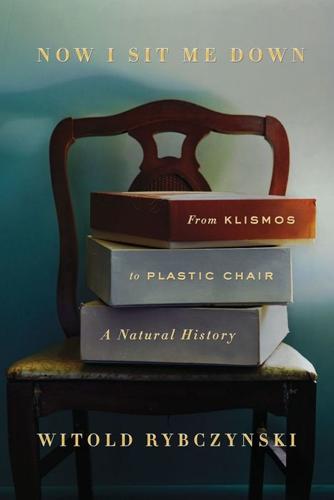
Now I Sit Me Down: From Klismos to Plastic Chair: A Natural History
by
Witold Rybczynski
Published 22 Aug 2016
The prince, attired in a dark robe and a white ghutrah, reclines on a pile of sheepskins, while his colleague, Sherif Ali, leans casually against a tent pole. The various postures cinematically underline a central point: the relaxed Bedouins are at home in this place—the desert—while the stiff English colonel is an interloper. Lawrence is somewhere in between. The world is divided into people who sit on the floor and those who sit on chairs. In a classic study of human posture around the world, the anthropologist Gordon W. Hewes identified no fewer than one hundred common sitting positions. “At least a fourth of mankind habitually takes the load off its feet by crouching in a deep squat, both at rest and at work,” he observed. Deep squatting is favored by people in Southeast Asia, Africa, and Latin America, but sitting cross-legged on the floor is almost as common.
…
Quotes from Dunnigan are based on personal conversations and are also drawn from John Dunnigan Furniture Maker (Peter Joseph Gallery, 1991), an interview with Dunnigan in Bebe Pritam Johnson and Warren Eames Johnson’s Speaking of Furniture: Conversations with 14 American Masters (Artist Book Foundation, 2013), and Dunnigan’s essay in Under Cover: Some Thoughts on Upholstered Furniture, an exhibition catalogue (Gallery NAGA, Boston, 2005). 3. Sitting Up Gordon W. Hewes’s classic study “The Anthropology of Posture” appeared in Scientific American (February 1957) and was originally published as “World Distribution of Certain Postural Habits” in American Anthropologist, vol. 2, no. 1, part 1 (April 1955). G.M.A. Richter’s authoritative The Furniture of the Greeks, Etruscans and Romans (Phaidon Press, 1966) provides much useful information.

T: The Story of Testosterone, the Hormone That Dominates and Divides Us
by
Carole Hooven
Published 12 Jul 2021
One, for example, describing what he believed to be a girl (although it was really a boy) said, “She is friendly, and female infants smile more,” while another found a supposed female (actually a male) to be “more satisfied and accepting” than a male child would have been. We shouldn’t rely on “common sense” or even our own observations of children’s behavior to determine the extent to which boys and girls are different. Fortunately, there are numerous scientific studies investigating just this issue. I’ll describe one classic study in the next chapter. But the bottom line is that Griffin’s fantasy play is representative of what boys tend to engage in: heroes battling bad guys to save the universe at great risk to themselves; the destruction of objects, homes, planets, and solar systems; and any kind of dangerous battle in which the boy can emerge as the victor (today many of these kinds of themes are played out not in fantasy but in video games).
…
Still, some T skeptics have found ingenious ways to avoid the inevitable conclusion. Here’s an example from Jordan-Young and Karkazis’s book Testosterone. They describe one of the cleanest, most influential studies ever conducted on testosterone and its effects on muscle in men, by the endocrinologist Shalender Bhasin and his colleagues: That classic study is the go-to citation for evidence that T builds muscle. But it’s also a great study to look at to understand some of the limitations of that claim. First, to find the effects of T on muscle, Bhasin and colleagues had to give huge doses of T, six times more than had been studied in previous research on the effect of T on muscle.
…
Similarly, girls who shun dresses and prefer rougher sports and horseplay with the boys are more likely to grow up to be lesbians. This association between gender-atypical interests in childhood and later homosexuality or bisexuality has been found in diverse cultures, from the United States to the Philippines, Samoa, Guatemala, the UK, and Brazil. Here’s an example of the relevant research. In a classic study, one of the largest of its kind, Richard Green (then a psychiatrist at UCLA) and his team followed a group of boys from childhood into early adulthood to determine whether early gender-atypical behavior predicted adult homosexuality. They recruited sixty-six boys between four and eleven years old, who showed “extensive cross-gender behavior.”
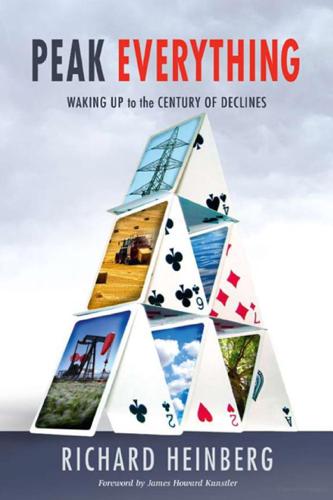
Peak Everything: Waking Up to the Century of Declines
by
Richard Heinberg
and
James Howard (frw) Kunstler
Published 1 Sep 2007
Tainter’s Axiom: Any society that continues to use critical resources unsustainably will collapse. Exception: A society can avoid collapse by finding replacement resources. Limit to the exception: In a finite world, the number of possible replacements is also finite. I have named this axiom for Joseph Tainter, author of the classic study, The Collapse of Complex Societies, which demonstrates that collapse is a frequent if not universal fate of complex societies. He argues that collapse is directly related to declining returns on efforts to support growing levels of societal complexity with energy harvested from the environment.
…
Random House, 1979, pp. 56-58. 7 Zerzan’s Elements of Refusal (Left Bank Books, 1988) includes chapters on time, language, number, art, agriculture, and domestication, arguing in each instance that the costs for each of these “advances” has far outweighed its benefit. Whether one agrees or disagrees with his opinion, he must be credited with consistency. 8 Robert Adler. “Entering a dark age of innovation.” NewScientist.com news service, July 2, 2005. newscientist.com/article.ns?id=dn7616 (Cited June 12, 2007) Chapter 2 1 Fernand Braudel, in his classic study The Structures of Everyday Life: The Limits of the Possible (translated from French by Sian Reynolds, University of California Press, 1992), notes that, “Famine recurred so insistently for centuries on end that it became incorporated into man’s biological regime and built into his daily life.… France, by any standard a privileged country, is reckoned to have experienced 10 general famines during the tenth century; 26 in the eleventh; 2 in the twelfth; 4 in the fourteenth; 7 in the fifteenth; 13 in the sixteenth; 11 in the seventeenth and 16 in the eighteenth.”
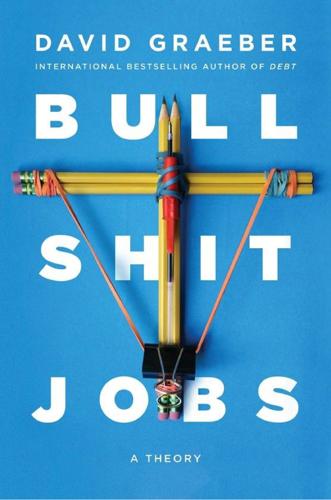
Bullshit Jobs: A Theory
by
David Graeber
Published 14 May 2018
But if that’s true, and people’s social life really is often rooted in the office, then it’s all the more striking that the overwhelming majority of those in bullshit occupations claim to be so miserable. on the misery of ambiguity and forced pretense Let us return to the subject of make-believe. Obviously, a lot of jobs require make-believe. Almost all service jobs do to a certain extent. In a classic study of Delta Airlines flight attendants, The Managed Heart: Commercialization of Human Feeling, sociologist Arlie Russell Hochschild introduced the notion of “emotional labor.” Hoschschild found air hostesses typically had to spend so much effort creating and maintaining a perky, empathetic, good-natured persona as part of their conditions of employment that they often became haunted by feelings of emptiness, depression, or confusion, unsure of who or what they really were.
…
There is some debate over the relative weight, in medieval Christian theology, of the degree to which work was seen as an imitation of divine creation, and as a means of perfecting the self (see the discussion in Ehmer and Lis 2009:10–15), but both principles appear to have been present from the very beginning. 47. Classic studies include Kraus, Côté, and Keltner 2010, and Stellar, Manzo, Kraus, and Keltner 2011. 48. As a result underlings will also tend to care more about their superiors than their superiors will care about them, and this extends to almost any relation of structural inequality: men and women, rich and poor, black and white, and so on.
…
I’d say one out of a hundred really get excited about work” (1972:xxxiv); but at the same time, from the same testimony, “somebody has to do this work. If my kid ever goes to college, I just want him to have a little respect” (1972:xxxv). 52. Gini and Sullivan 1987:649, 651, 654. 53. Noel Ignatiev’s How the Irish Became White (1995) is the classic study of this phenomenon. 54. The formula was later reduced to “the greatest good for the greatest number,” but Bentham’s original theory was based on hedonistic calculation and that’s what Carlyle was responding to. 55. Carlyle 1843:134. 56. Ibid. Chapter 7: What Are the Political Effects of Bullshit Jobs, and Is There Anything That Can Be Done About This Situation?
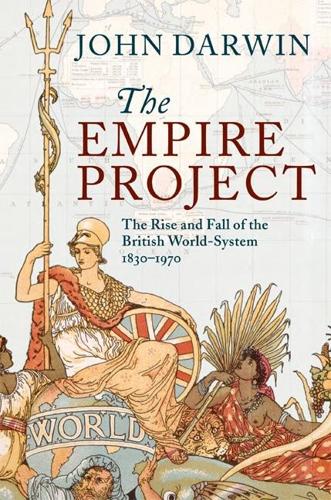
The Empire Project: The Rise and Fall of the British World-System, 1830–1970
by
John Darwin
Published 23 Sep 2009
Amanat, Pivot of the Universe: Nasir al-Din Shah Qajar and the Iranian Monarchy 1831–96 (1997), pp. 424–5. 44. A classic study is M. Lynn, Commerce and Economic Change in West Africa: The Palm Oil Trade in the Nineteenth Century (Cambridge, 1997); see also C. Jones, ‘“Business Imperialism” in Argentina: A Theoretical Note’, Journal of Latin American Studies, 12 (1980), 440ff. 45. R. Austen, African Economic History (1987), p. 275. 46. Ibid., p. 114. 47. K. O. Dike, Trade and Politics in the Niger Delta 1830–1885 (Oxford, 1956), is the classic study. 48. J. D. Hargreaves, Prelude to the Partition of West Africa (1966), pp. 35–7. 49.
…
Raychaudhuri, Europe Reconsidered: Perceptions of the West in Nineteenth-Century Bengal (Oxford, 1989). 16. S. Teng and J. K. Fairbank (eds.), China's Response to the West (Cambridge, MA, 1979), p. 152. 17. E. W. Blyden, Christianity, Islam and the Negro Race (1887), pp. 20, 65, 387. 18. See A. Hourani, Arabic Thought in the Liberal Age 1798–1939 (1962). 19. The classic study is B. H. Sumner, Russia and the Balkans 1870–1880 (Oxford. 1937). 20. For this estimate, see R. W. Seton-Watson, Disraeli, Gladstone and the Eastern Question (1935), pp. 560–1. 21. See Swartz, The Politics of British Foreign Policy, p. 101. 22. G. Waterfield, Layard of Nineveh (1963), p. 442: Salisbury to Layard, April 1880. 23.
…
Stanley, The Birth of Western Canada: A History of the Riel Rebellions [1936] (Toronto, 1961). 10. See W. L. Morton, Manitoba: A History (Toronto, 1957). 11. See M. L. Hansen and J. B. Brebner, The Mingling of the Canadian and American Peoples (1940), vol. I, pp. 183–4. 12. See G. Stewart, The Origins of Canadian Politics (Vancouver, 1986). The classic study of Macdonald remains D. Creighton, John A. Macdonald: The Young Politician (Toronto, 1952) and D. Creighton, John A. Macdonald: The Old Chieftain (Toronto, 1955). 13. See R. W. Cox, ‘The Quebec General Election of 1886’ (Master's thesis, McGill University, 1948). 14. See P. Crunican, Priests and Politicians: Manitoba Schools and the Election of 1896 (Toronto, 1974), pp. 310–16. 15.
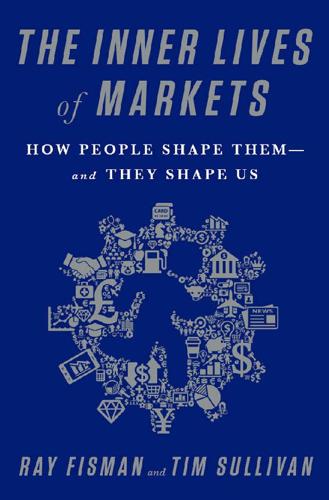
The Inner Lives of Markets: How People Shape Them—And They Shape Us
by
Tim Sullivan
Published 6 Jun 2016
The Schultz model added the notion that individual productivity could differ based on whether the individuals were, say, high school dropouts or engineering PhDs. He effectively started economics toward doing for labor what Solow had done for capital. (The fuller development of human capital theory came from another Nobel Laureate Gary Becker with his classic study of why individuals invest in education or experience and the consequences of these “human capital” investments for the economy.) As obvious as this all seems—machines aren’t interchangeable, nor are human beings—these new insights represented a real step forward for the discipline of economics.
…
(This desire to have the profession reflect more directly what we observe in reality has also contributed, no doubt, to the rise of empirical economics, which aims to use data to inform our view of the world. This empirical revolution has been powered in large part by the IT revolution and resultant computing power, which lets researchers put data to work on a scale that was unimaginable in Akerlof’s time.) Abstractions aside, what did Akerlof actually do? His classic study focused on the problems that arise in the car business as a result of a few lemons sitting on a used car lot, which he saw as an easy way into the general problem of a market with informed sellers and unwitting consumers. Akerlof’s model follows exactly the logic that Podolny was relying on when he predicted, if only to himself, the failure of eBay.

The Global Auction: The Broken Promises of Education, Jobs, and Incomes
by
Phillip Brown
,
Hugh Lauder
and
David Ashton
Published 3 Nov 2010
The growth of corporate bureaucracies and a burgeoning public sector accelerated the increase in white-collar employment, The False Promise 17 adding support to a model of technological evolution from a low-skill to high-skill economy. The growth of middle-class jobs was assumed to represent an ever-tighter relationship between human capital, jobs, and rewards, as it became more important to get the best minds working on the scientific and technological challenges of the age. In his classic study The Coming of Post-Industrial Society, published in the early 1970s, Daniel Bell highlighted the link between a rising meritocracy and economic efficiency. “The post-industrial society, in its initial logic, is a meritocracy. Differential status and differential income are based on technical skills and higher education.
…
The Future of Knowledge Work Economic history shows that the power to both innovate and standardize has increased over time. It also shows, at least in America and Britain, a proclivity toward managerial control over employee discretion. But it is important not to emphasize control for its own sake as in Harry Braverman’s classic study of Taylorism because it should be seen as the latest attempt to boost productivity and corporate profits.39 The economic landscape is also strewn with historical examples of how highly skilled workers have found that their skills are not as unique as they assumed or have been rendered redundant by technological innovation.

A Guide to the Good Life: The Ancient Art of Stoic Joy
by
William Braxton Irvine
Published 14 Feb 2009
Many readers would therefore do well to get a book containing a selection of these letters. Musonius Rufus is worth reading for his practical advice on daily living. The only published translation of Musonius that I know of, though, is Cora Lutz’s “Musonius Rufus: ‘The Roman Socrates,’ ” in volume 10 of Yale Classical Studies (1947), which is difficult to buy or borrow. Readers are therefore encouraged to visit my author website (williambirvine.com) for information on how to obtain a copy of Cynthia King’s translation of Musonius’s works. (This is the translation I quote from in this book.) Readers wishing to sample Epictetus are encouraged to start with his Handbook (also known as his Manual or Encheiridion).It has the advantage of being short, easily obtainable, and philosophically accessible.
…
Lecky, William Edward Hartpole. History of European Morals: From Augustus to Charlemagne. New York: George Braziller, 1955. Works Cited 299 Long, A. A. Epictetus: A Stoic and Socratic Guide to Life. Oxford: Clarendon Press, 2002. Lutz, Cora. Introduction to “Musonius Rufus: ‘The Roman Socrates.’ ” Yale Classical Studies. Vol. 10. New Haven: Yale University Press, 1947. Marcus Aurelius. Meditations. Translated by Maxwell Staniforth. London: Penguin, 1964. Marrou, H. I. A History of Education in Antiquity. Translated by George Lamb. New York: New American Library, 1956. Musonius Rufus. “The Lectures.” In The Lectures and Sayings of Musonius Rufus.

The Broken Ladder
by
Keith Payne
Published 8 May 2017
The workplace is where most people experience inequality most directly on a daily basis. In this chapter we explore how equality and inequality in pay, status, and power shape the meaning we assign to our work. Workplaces are organized as hierarchies, in part because just about everything humans do is arranged in that structure. In one classic study, groups of strangers were brought together for a one-hour discussion session and given little direction about what to do otherwise. Without any instructions from the researchers, these groups sorted themselves into hierarchies with leaders directing the discussion and subordinates following. If you observe people gathering together, whether in backyard barbecues or hanging out on a street corner or in a college classroom, they tend to organize themselves into little hierarchies.
…
Stouffer used survey research and statistical analysis: T. F. Pettigrew, “Samuel Stouffer and Relative Deprivation,” Social Psychology Quarterly 78 (2015): 7–24; J. W. Ryan, Samuel Stouffer and the GI Survey: Sociologists and Soldiers During the Second World War (Knoxville: University of Tennessee Press, 2013). In one classic study, groups of strangers: P. E. Slater, “Role Differentiation in Small Groups,” American Sociological Review 20 (1955): 300–310. scholars observed the daily routines of its employees: R. I. Sutton and A. Hargadon, “Brainstorming Groups in Context: Effectiveness in a Product Design Firm,” Administrative Science Quarterly 41 (1996): 685–718.
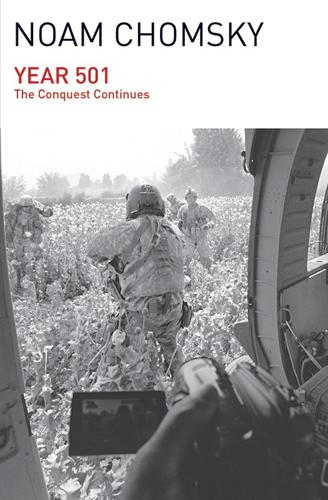
Year 501
by
Noam Chomsky
Published 19 Jan 2016
Economic rationality requires that the tools of production overcome their reluctance to see their communities and families destroyed. “It is not for the commodity to decide where it should be offered for sale, to what purpose it should be used; at what price it should be allowed to change hands, and in what manner it should be consumed or destroyed,” as Karl Polanyi commented in his classic study of the laissez-faire experiment in 19th century England, quickly terminated as it came to be understood by the business classes that their interests would be harmed by the free market, which “could not exist for any length of time without annihilating the human and natural substance of society; it would have physically destroyed man and transformed his surroundings into a wilderness.”
…
The Department had previously described the “uncultivated waste” as a miracle of progress, with successful production by people living in considerable comfort, a level of education “equal to that furnished by an ordinary college in the States,” flourishing industry and commerce, an effective constitutional government, a high level of literacy, and a state of “civilization and enlightenment” comparable to anything known: “What required five hundred years for the Britons to accomplish in this direction they have accomplished in one hundred years,” the Department declared in wonder.15 Jackson ends her account in 1880 with a question: “Will the United States Government determine ‘to reduce the size of the reservation’?” It was soon to be answered, in just the way she anticipated. Again, the advanced civilization of the Indians stood in the way of civilization, properly conceived. What followed is described by Angie Debo in her classic study And Still the Waters Run. In the independent Indian Territory, land was held collectively and life was contented and prosperous. The Federal Indian Office opposed communal land tenure by ideological dogma, as well as for its practical effect: preventing takeover by white intruders. In 1883, a group of self-styled philanthropists and humanitarians began to meet to consider problems of the Indians.
…
Ibid., on the role of banks in German industrial development. Gerschenkron, Economic Backwardness, Landes, Unbound, for extensive discussion. 6. Bils, cited by DuBoff, Accumulation, 56. Bartel, editor, Challenge, July/August 1992. See Du Boff on the general topic. Brady, Business, on 1920s and ‘30s. A classical study of the abandonment of the free market is Polanyi, Great Transformation. For further references, see DD, ch. 1, n. 19. 7. Lazonick, Business Organization. 8. Taylor, Dollars & Sense, Nov. 1991. 9. Steven Elliott-Gower, Assistant Director, Center for East-West Trade Policy, U.of Georgia, NYT News Service, Dec., 23, 1991.
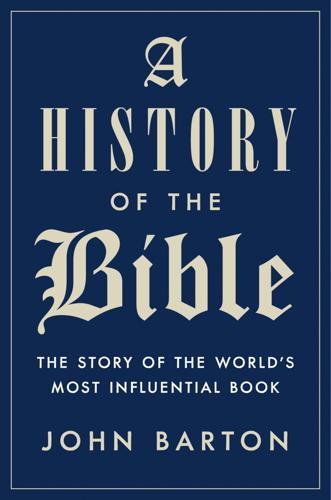
A History of the Bible: The Story of the World's Most Influential Book
by
John Barton
Published 3 Jun 2019
Davies, Studying the Synoptic Gospels (London: SCM Press and Philadelphia: Trinity Press, 1989). This discusses selected passages and provides a structured study course. The classic study in English is B. H. Streeter, The Four Gospels: A Study of Origins, Treating of the Manuscript Tradition, Sources, Authorship & Dates (London: Macmillan, 1924), which still provides all the standard arguments in favour of the ‘two-source’ hypothesis. The (equally classic) study questioning the existence of Q is A. M. Farrer, ‘On Dispensing with Q’, in D. E. Nineham (ed.), Studies in the Gospels in Memory of R. H. Lightfoot (Oxford: Blackwell, 1955), pp. 55–88; the argument is developed further in M.
…
The Gospels themselves may already show this process at work; for example, details of the passion story may have been adjusted to match Psalm 22, such as the text, ‘they divide my clothes among themselves, and for my clothing they cast lots’ (verse 18); compare Matthew 27:35 and especially John 19:23–5. On this phenomenon see the classic study by Barnabas Lindars, New Testament Apologetic: The Doctrinal Significance of the Old Testament Quotations (London: SCM Press, 1961). 29. Justin also harmonized the Gospels of Matthew and Luke, or else drew on an already existing harmony, and there may be links between his work and the Diatessaron; see Watson, Gospel Writing, pp. 474–5. 30.
…
On the definition of ‘canonicity’ as well as reflections on the formation of both canons see J. Barton, The Spirit and the Letter: Studies in the Biblical Canon (London: SPCK, 1997); the American edition (Louisville, Ky.: Westminster John Knox Press, also 1997) is called Holy Writings, Sacred Text, but has the misleadingly restrictive subtitle The Canon in Early Christianity. A classic study, which dethroned the old idea that Jews in Palestine and the diaspora had different canons of the Hebrew Bible, is A. C. Sundberg Jr, The Old Testament of the Early Church (Cambridge, Mass.: Harvard University Press, 1964). For a discussion of the status of various books in the community at Qumran see T.
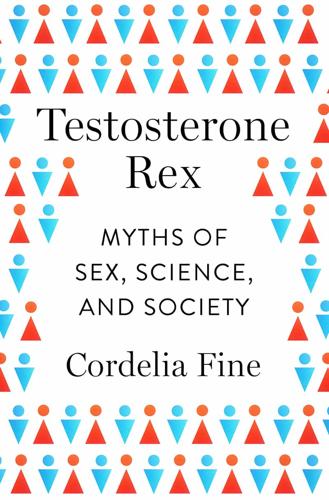
Testosterone Rex: Myths of Sex, Science, and Society
by
Cordelia Fine
Published 13 Jan 2017
A reappraisal of Bateman’s classic study of intrasexual selection. Evolution, 61(11), 2457–2468. Quoted on pp. 2458 and 2457, respectively. 10. In fact, a later attempt to replicate Bateman’s study (by Patricia Gowaty and her colleagues) challenged Bateman’s assumption that there would be a quarter-share each of offspring with a maternal mutation only, paternal mutation only, a double mutation, and no mutation. Double-mutation flies, in particular, were particularly unlikely to survive. Gowaty, P. A., Kim, Y.-K., & Anderson, W. W. (2012). No evidence of sexual selection in a repetition of Bateman’s classic study of Drosophila melanogaster.

Palaces for the People: How Social Infrastructure Can Help Fight Inequality, Polarization, and the Decline of Civic Life
by
Eric Klinenberg
Published 10 Sep 2018
“Of course mixed groups are no panacea….But mixed groups have been shown to have two desirable effects. First, exposure to competing positions generally increases political tolerance….Second, mixing increases the likelihood that people will be aware of competing rationales and see that their own arguments might be met with plausible counterarguments.” Sunstein draws on classic studies and experimental research to show that, as in South Chicago during its industrial heyday, in-group attachments and prejudices against others diminish when people interact across the usual social boundaries. Democratic politics, Sunstein argues, works better when we are regularly exposed to different people and competing positions.
…
“nothing but sit her black ass down”: Barbershop, story written by Mark Brown; screenplay written by Mark Brown, Don D. Scott, and Marshall Todd, directed by Tim Story, 2002. prepared to engage the world outside: Urban ethnographers have also observed the social processes visible in black barbershops in other protected spaces, including the tavern. The classic study is Elijah Anderson’s A Place on the Corner (Chicago: University of Chicago Press, 1978). Anderson writes: “Urban taverns and bars, like barbershops, carryouts, and other such establishments, with their adjacent street corners and alleys, serve as important gathering places for people of the ‘urban villages’ and ghetto areas of the city.
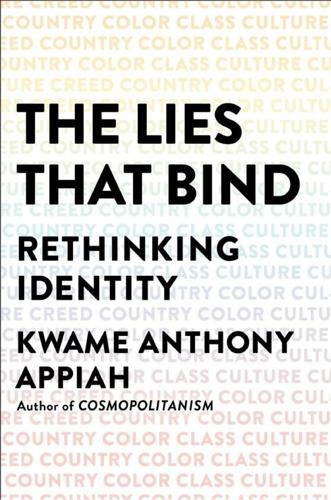
The Lies That Bind: Rethinking Identity
by
Kwame Anthony Appiah
Published 27 Aug 2018
Here is a young man talking to his college-educated interviewer: “Um, let me try to explain to you why I was so nervous at the beginning of the interview,” said a house painter. “It’s not you, you’re all right—but you see . . . um . . . whenever I’m with educated people, you now, or people who aren’t my own kind . . . um . . . I feel like I’m making a fool of myself if I just act natural, you know?”36 Sennett and Cobb’s classic study was memorably titled The Hidden Injuries of Class. Such injuries have persisted. In a best-selling 2016 account of growing up as what he himself calls a “hillbilly,” J. D. Vance reports many moments of just such anxiety as a rare white working-class student at Yale Law School.37 We’ve repeatedly seen that the significance of identities is always being contested.
…
The question of when “European,” as a group identity, gained broader traction is taken up, if not entirely resolved, in Peter Burke, “Did Europe Exist Before 1700?” History of European Ideas 1 no. 1 (1980): 21–29. He notes, “If the first context in which people became aware of themselves as Europeans was that of being invaded by other cultures, the second was that of invading other cultures.” 10.G. W. F. Hegel, “On Classical Studies,” On Christianity: Early Theological Writings, trans. T. M. Knox and Richard Kroner (Chicago: University of Chicago Press, 1948), 324. The lecture was given in 1809. “The perfection and glory of those masterpieces,” he continued, “must be the spiritual bath, the secular baptism that first and indelibly attunes and tinctures the soul in respect of taste and knowledge.” 11.Mark R.
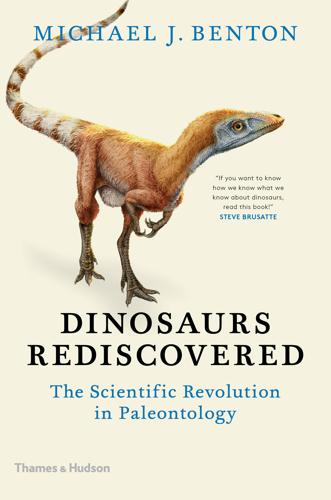
Dinosaurs Rediscovered
by
Michael J. Benton
Published 14 Sep 2019
When I was seven, I was given a classic little book, Fossils, a Guide to Prehistoric Life, by Frank Rhodes, Herbert Zim, and Paul Shaffer. What excited me was that the illustrations were all in colour – unusual still in the 1960s – and that there were not only pictures of fossils, but reconstructions too. The text reflected the knowledge of the time – this is what Tyrannosaurus looked like, based on the classic studies by Professor Henry Osborn of the American Museum of Natural History, and this is how the dinosaurs died out, rather slowly, and perhaps as a result of long-term cooling climates (or maybe simply because they were too stupid to adapt to a changing world), according to the ideas of Professor Leigh Van Valen of the University of Chicago.
…
These, as in modern reptiles, and indeed in trees, are light and spacious when growth is rapid (usually summer), and tight and dark when growth is slow (usually winter), when life conditions are poor. In a series of papers, Greg Erickson has explored the growth rates of many dinosaurs using observations of their growth rings. In a classic study of T. rex and its relatives, Erickson counted growth rings in bones from animals of all sizes. In one example, he counted to nineteen growth rings, and he was confident he had reached the endpoint because the outside of the bone was finished with some tightly packed bone layers, called the external fundamental system (EFS).

Shady Characters: The Secret Life of Punctuation, Symbols, and Other Typographical Marks
by
Keith Houston
Published 23 Sep 2013
Parkes, “Influences of the Application of Punctuation,” in Pause and Effect: Punctuation in the West (Berkeley: University of California Press, 1993), 65–96. 10.E.G. Turner and P.J. Parsons, “Introduction,” in Greek Manuscripts of the Ancient World (London: University of London, Institute of Classical Studies, bulletin supplement, 1987), 1–23. 11.Brown et al, “Punctuation.” 12.M.B. Parkes, “Antiquity: Aids for Inexperienced Readers and the Prehistory of Punctuation,” in Pause and Effect: Punctuation in the West (Berkeley: University of California Press, 1993), 12. 13.Parkes, “Introduction,” 1–8; G.
…
From the Beginnings to the End of the Hellenistic Age (Oxford, UK: Clarendon, 1968), 252–79. 4.E.Dickey, “Dionysius Thrax,” in Ancient Greek Scholarship: A Guide to Finding, Reading, and Understanding Scholia, Commentaries, Lexica, and Grammatical Treatises, from Their Beginnings to the Byzantine Period, Classical Resources Series (New York: Oxford University Press, 2007), 77–80; J.Alan Kemp, “The Tekhne Grammatike of Dionysius Thrax: Translated into English,” Historiographia Linguistica 13, no. 2 (1986): 343–63. 5.Dickey, “Dionysius Thrax,” 215. 6.D.J. Murphy, “Hyphens in Greek Manuscripts,” Greek, Roman, and Byzantine Studies 36, no. 3 (1995): 296–99; E.G. Turner and P.J. Parsons, “Introduction,” in Greek Manuscripts of the Ancient World, Bulletin Supplement, University of London Institute of Classical Studies (University of London, 1987), 1–23. 7.Paul Saenger, “The Hyphen,” in Space Between Words: The Origins of Silent Reading (Palo Alto: Stanford University Press, 1997), 69–70. 8.Paul Saenger, “Silent Reading: Its Impact on Late Medieval Script and Society,” Viator: Medieval and Renaissance Studies 13 (1982): 367–414. 9.Bernhard Bischoff and University of Cambridge, “Palimpsests,” in Latin Paleography: Antiquity and the Middle Ages (Cambridge, UK: Cambridge University Press, 1995), 11–12; Bernhard Bischoff and University of Cambridge, “Writing Instruments,” in Ibid., 18–29; Saenger, “The Hyphen,” 69–70. 10.D.Christian, S.Jacobsen, Associated Press, and D.Minthorn, “Editing Marks,” in Associated Press Stylebook and Briefing on Media Law (New York: Basic Books, 2009), 407. 11.Paul Saenger, “The Circle of Sedulius Scottus,” in Space Between Words: The Origins of Silent Reading (Palo Alto: Stanford University Press, 1997), 109–15. 12.Murphy, “Hyphens in Greek Manuscripts,” 296–99. 13.Ibid. 14.Saenger, “Silent Reading,” 367–414. 15.N.R.

The Rise of the Network Society
by
Manuel Castells
Published 31 Aug 1996
As for office automation, it has gone through three different phases, largely determined by available technology.55 In the first phase, characteristic of the 1960s and 1970s, mainframe computers were used for batch processing of data; centralized computing by specialists in data-processing centers formed the basis of a system characterized by the rigidity and hierarchical control of information flows; data entry operations required substantial efforts since the goal of the system was the accumulation of large amounts of information in a central memory; work was standardized, routinized, and, in essence, deskilled for the majority of clerical workers, in a process analyzed, and denounced, by Braverman in his classic study.56 The following stages of automation, however, were substantially different. The second phase, in the early 1980s, was characterized by the emphasis on the use of microcomputers by the employees in charge of the actual work process; although they were supported by centralized databases, they interacted directly in the process of generating information, although often requiring the support of computer experts.
…
The social context, and particularly the relationship between capital and labor according to specific decisions by the management of firms, drastically affects the actual shape of the work process and the consequences of the change for workers. This was particularly true during the 1980s when the acceleration of technological change went hand in hand with the process of capitalist restructuring, as I have argued above. Thus, the classic study by Watanabe 62 on the impact of the introduction of robots into the automobile industry in Japan, the United States, France, and Italy, showed substantially different impacts of a similar technology in the same industry: in the United States and Italy, workers were displaced, because the main goal of introducing new technology was to reduce labor costs; in France, job loss was lower than in the two other countries because of government policies to cushion the social impacts of modernization; and in Japan, where companies were committed to life-tenured employment, employment actually increased, and productivity shot up, as a result of retraining and higher teamwork effort which increased the competitiveness of firms and took market share away from their American counterparts.
…
On the other hand, there has been a spatial concentration of the upper tier of such activities in a few nodal centers of a few countries.9 This concentration follows a hierarchy between tiers of urban centers, with the higher-level functions, in terms of both power and skill, being concentrated in some major metropolitan areas.10 Saskia Sassen’s classic study of the global city has shown the joint dominance of New York, Tokyo, and London in international finance, and in most consulting and business services of international scope.11 These three centers together cover the spectrum of time zones for the purpose of financial trading, and work largely as a unit in the same system of endless transactions.

Mysteries of the Mall: And Other Essays
by
Witold Rybczynski
Published 7 Sep 2015
When Marco Velardi, the editor of Apartamento, a self-styled “everyday life interiors magazine” based in Milan and Barcelona, invited me to contribute something “to celebrate the fact we were inspired by your words five years ago when we started doing our magazine,” I couldn’t resist. PART TWO Our Urban Condition Tocqueville, Urban Critic Alexis de Tocqueville is celebrated for Democracy in America, his classic study of American civilization at the beginning of the nineteenth century. The author was only twenty-five when he visited the United States, but he had a wide-ranging intellect, a keen sense of observation, and a journalist’s knack for eliciting the opinion of others. Consequently, one can pick almost any subject—slavery, religion, education—and find that he had something interesting to say about it.
…
Most musicians, critics, and concertgoers would probably include not only Vienna’s Musikvereinssaal and Boston’s Symphony Hall but also Amsterdam’s Concertgebouw and New York’s Carnegie Hall. A systematic study of these and other halls is contained in Concert and Opera Halls: How They Sound, a vastly revised and enlarged edition of the now-classic study Music, Acoustics, and Architecture (which was originally published in 1962). The author is Leo L. Beranek, a Cambridge, Massachusetts–based acoustician who is co-founder of one of the world’s leading firms of acoustical consultants—Bolt, Beranek & Newman. Beranek’s top rating is “Superior,” and it is accorded only to the Musikvereinssaal, Symphony Hall, and the Concertgebouw.

Cheese and Culture: A History of Cheese and Its Place in Western Civilization
by
Paul Kindstedt
Published 31 Mar 2012
The image of the sacred healing snake coiled around Asklepios’s staff has become a universal symbol of medicine and healing that is often included in medical-related logos, such as that of the American Medical Association. What does all this have to do with milk coagulation and cheese making? Well, during the 1930s an archaeological team from the American School of Classical Studies at Athens led by Ferdinand Joseph de Waele systematically excavated the site of the Asklepieion at Corinth (de Waele 1933). The original sanctuary was built in the sixth century BC and then rebuilt in fourth century BC. Among the many artifacts found at the site were large flat terra-cotta basins that contained heavy spouts.
…
Gomi, T. 1980. On Dairy Productivity at Ur in the Late Ur III Period. Journal of the Economic and Social History of the Orient 23(1/2):1–42. Grandjouan, C., E. Markson, and S. I. Rotroff. 1989. Hellenistic Relief Molds from the Athenian Agora. Hesperia Supplements, Vol. 23. American School of Classical Studies at Athens, Princeton. Grant, A. J. 1966. Early Lives of Charlemagne: Eginhard & the Monk of St Gall. Translated and edited by Professor A. J. Grant. Cooper Square Publishers, New York. Pp. 79–80 Grant, M. 2000. Galen on Food and Diet. Routledge, London. Granto, J., R. Inglehart, and D.
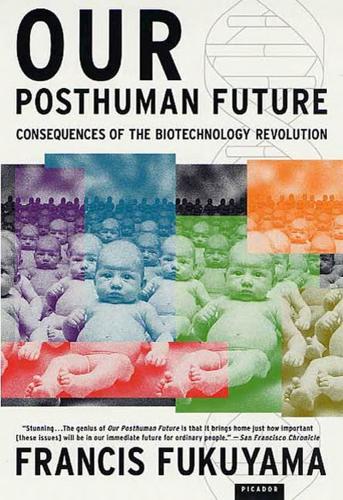
Our Posthuman Future: Consequences of the Biotechnology Revolution
by
Francis Fukuyama
Published 1 Jan 2002
Brunner, “Abnormal Behavior Associated with a Point Mutation in the Structural Gene for Monoamine Oxidase A,” Science 262 (1993): 578–580. 44 Lois Wingerson, Unnatural Selection: The Promise and the Power of Human Gene Research (New York: Bantam Books, 1998), pp. 291–294. 45 The theory that crime is the result of a failure to learn impulse control at a certain key developmental stage is sometimes referred to as the “life course” theory of crime; it offers an explanation as to why so large a percentage of crimes are committed by recidivists. The classic study establishing the existence of criminal “life courses” is Sheldon Glueck and Eleanor Glueck, Delinquency and Nondelinquency in Perspective (Cambridge, Mass.: Harvard University Press, 1968). See also the reanalysis of the Gluecks’ data in Robert J. Sampson and John H. Laub, Crime in the Making: Pathways and Turning Points Through Life (Cambridge, Mass.: Harvard University Press, 1993). 46 For an account of the rise and fall of crime rates in the United States and other Western countries after 1965, see Francis Fukuyama, The Great Disruption: Human Nature and the Reconstitution of Social Order (New York: Free Press, 1999), pp. 77–87. 47 Martin Daly and Margo Wilson, Homicide (New York: Aldine de Gruyter, 1988). 48 For an entertaining account of this incident, see Tom Wolfe, Hooking Up (New York: Farrar, Straus and Giroux, 2000), pp. 92–94. 49 Wingerson (1998), pp. 294–297. 50 David Wasserman, “Science and Social Harm: Genetic Research into Crime and Violence,” Report from the Institute for Philosophy and Public Policy 15 (1995): 14–19. 51 Wade Roush, “Conflict Marks Crime Conference; Charges of Racism and Eugenics Exploded at a Controversial Meeting,” Science 269 (1995): 1808–1809. 52 Alice H.
…
See also her article “Eugenic Anxieties, Social Realities, and Political Choices,” Social Research 59 (1992): 663–683. See also Mark H. Haller, Eugenics: Hereditarian Attitudes in American Thought (New Brunswick, N.J.: Rutgers University Press, 1963). 4 See Henry P. David and Jochen Fleischhacker, “Abortion and Eugenics in Nazi Germany,” Population and Development Review 14 (1988): 81–112. 5 The classic study of this is Robert Jay Lifton, The Nazi Doctors: Medical Killing and the Psychology of Genocide (New York: Basic Books, 1986). 6 Gunnar Broberg and Nils Roll-Hansen, Eugenics and the Welfare State: Sterilization Policy in Denmark, Sweden, Norway, and Finland (East Lansing, Mich.: Michigan State University Press, 1996).
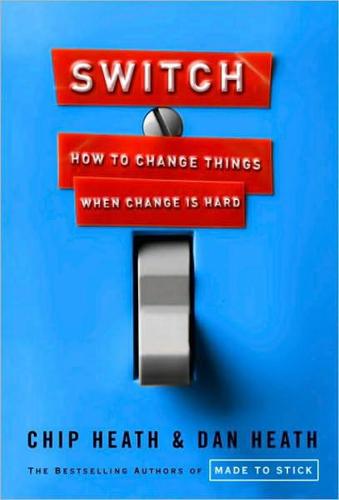
Switch: How to Change Things When Change Is Hard
by
Chip Heath
and
Dan Heath
Published 10 Feb 2010
Let’s remember something: This “inventor” identity, which has fueled business success and employee satisfaction, was made up. None of Brasilata’s employees were born “inventors.” The identity was introduced to them, and they liked the sound of it. It seemed to be a mantle worth wearing. Being an inventor has become a source of pride and strength. 5. If cultivating an identity sounds daunting, take heart. A classic study in psychology shows that you can start with small steps. In the 1960s, two psychologists from Stanford University, Jonathan Freedman and Scott Fraser, asked a researcher to go door-to-door in an upscale neighborhood in Palo Alto, California. When home owners answered the door, the researcher announced himself as a volunteer for “Citizens for Safe Driving” and asked whether they would allow a billboard reading “Drive Carefully” to be installed on their lawns.
…
But it would be inadvisable to recall the other 20 percent after the close of a $100 million acquisition. (Whoops! Those hotshot engineers refuse to leave the snow in Boulder.) Checklists provide insurance against overconfidence. And overconfidence is worth insuring against because we all have a knack for it. In one classic study, people were asked to come up with solutions for their university’s chronic parking problem. Ideas ranged from raising parking fees to creating more “Compact Only” parking spaces. After the ideas were collected, a panel of experts assessed them—eliminating wacky or impractical options—and identified a set of “best solutions.”
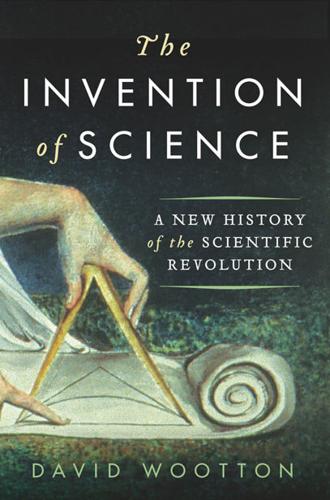
The Invention of Science: A New History of the Scientific Revolution
by
David Wootton
Published 7 Dec 2015
I am here arguing against a powerful tradition in recent historiography of science which insists that replication is always problematic, and that in the end what counts as successful replication is always decided by the intervention of authority.78 According to these historians, replication is a social artefact, not a natural fact. The classic study is Leviathan and the Air-pump, by Steven Shapin and Simon Schaffer.79 That book, which has been described as the most influential work in the history of science after Kuhn’s Structure of Scientific Revolutions, presents a number of arguments which have become famous.80 It argues that Boyle, through his air-pump experiments, was a pioneer in making facts: from the previous chapter we can see that this view is mistaken, unless one focusses narrowly on the use of the word ‘fact’.
…
In order to develop its industry, the bourgeoisie required a science that would investigate the properties of material bodies and the manifestations of the forces of nature.’ But Marxists were not alone in assuming that the new science was motivated by its possible practical applications: Robert K. Merton in his classic study of 1938, Science, Technology and Society in Seventeenth-century England, in which he emphasized the role of Puritanism in encouraging useful knowledge, followed Hessen in arguing that seventeenth-century science was indeed intended, through and through, to have practical applications, despite his own rejection of Hessen’s Marxist assumptions.6 A series of studies, however (those of Alfred Rupert Hall being particularly influential), have claimed to show that, whatever the intentions of scientists may have been, in practice, the new science had virtually no influence on technological progress.
…
Berkel, Isaac Beeckman (2013), 83 and n. 42. 7. See above, p. 24. 8. More, The Immortality of the Soul (1659), preface (b7r). More had earlier welcomed Cartesianism as a ‘Fortification about Theology’ to defend it from the assaults of the atheists: McGuire & Rattansi, ‘Newton and the “Pipes of Pan”’ (1966), 131. The classic study of More and Descartes is Webster, ‘Henry More and Descartes, Some New Sources’ (1969). 9. Parker, Disputationes de Deo et providentia divina (1678), 64; and Bayle (ed.), Nouvelles (1684), Vol. 2, 753 10. Boyle, A Defence (1662), preface (*1v) = Boyle, The Works (1999), Vol. 3, 9; Boyle, Experiments and Considerations Touching Col-ours (1664), preface (A4r) = Boyle, The Works (1999), Vol. 4, 7: ‘corpuscular philosophy’.
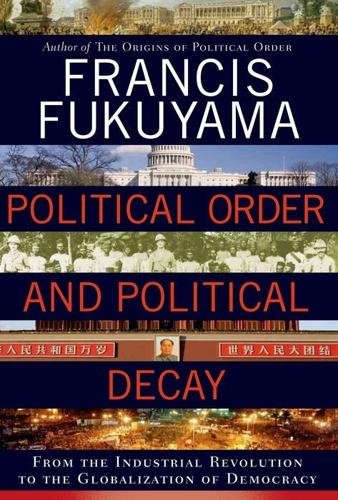
Political Order and Political Decay: From the Industrial Revolution to the Globalization of Democracy
by
Francis Fukuyama
Published 29 Sep 2014
Good outcomes, like quality public education, are a complex mixture of inputs provided by governments (teachers, curriculum, classrooms, etc.) as well as characteristics of the population being served, including their income, social habits, and culture (that is, the degree to which learning is valued in the home). A classic study of educational outcomes in the United States was the 1966 Coleman Report, whose statistical analysis showed that quality education was much more a reflection of a student’s friends and family than of the inputs being supplied by the government.11 In any event, measuring outcomes is often difficult for the kinds of complex services offered by modern governments.
…
Therefore, one cannot afford the luxury of charity, which is giving others more than their due, or even of justice, which is giving them their due … Toward those who are not of the family the reasonable attitude is suspicion.”4 According to political scientist Joseph LaPalombara, “Primary associations are still dominant; family, kinship, neighborhood, village are still the associational forms that have the greatest call on individual loyalties.”5 Another political scientist, Sidney Tarrow, in his study of peasant communism in southern Italy, writes of a culture built around “the prevalence of violence and the consciousness of death, the modest place of woman in society, and the almost occult role of corruption in economics and politics.” Building on Banfield, he asserts that “in the Mezzogiorno, individuals participate in and directly perceive modern secondary organizations, but for some reason reject them as illegitimate or corrupt.”6 His insights were given broader empirical validation in Robert Putnam’s classic study Making Democracy Work, in which he devises various empirical measures of civic engagement like newspaper readership or membership in sports clubs, and finds a striking divergence between the strong associational bonds in northern Italy and the weak or nonexistent ones in the South.7 Very similar observations have been made about the traditional Greek rural society that existed in the nineteenth century, in which, according to sociologist Apostolis Papakostas, “The only available way to organize people was through the family—a social organization which, in spite of local variations in its structure, has always played an important role in the social life of modern Greece.”8 As in southern Italy, loyalty to the family has a counterpart in distrust of strangers.
…
A classic segmentary lineage—a tribe, speaking anthropologically—is a group that traces common ancestry to a progenitor who may be two, three, or more generations distant. The system is held together by a very specific set of beliefs about the power of dead ancestors and unborn descendants to affect the fortunes of the living. As described in E. E. Evans-Pritchard’s classic study of the Nuer in South Sudan, these lineages are scalable depending on how many generations back one chooses an ancestor. For most day-to-day purposes, the relevant ancestor is very proximate and the kin group correspondingly very small. Modern ethnic groups, by contrast, encompass hundreds of thousands if not millions of people.

The Greek Revolution: 1821 and the Making of Modern Europe
by
Mark Mazower
Published 4 Nov 2021
Khurshid Pasha, illustration by Adam de Friedel, from The Greeks: Twenty-four Portraits of the Principal Leaders and Personages, 1832. (The Gennadius Library, the American School of Classical Studies at Athens) 12. Ali Pasha at Bucinto, 1819, illustration by Justin Cartwright, from Selections of the Costume of Albania and Greece, 1822. 13. The piazza of St Mark, Zakynthos, illustration by Joseph Cartwright, from The Ionian Islands, 1821. (The Gennadius Library, the American School of Classical Studies at Athens) 14. Philhellenes’ camp during the Greek War of Independence, 1835, painting by Carl von Heideck. (Staatliche Kunsthalle, Karlsruhe (photograph: akg-images)) 15.
…
(Stephen Vagliano Collection) 29. The slave market in Cairo, illustration from Robert Hay, Illustrations of Cairo, 1840. (The Gennadius Library, the American School of Classical Studies at Athens) 30. Women from the Peloponnese in a makeshift tent, c. 1828, illustration by Théodore Leblanc, from Sketches from Life Made during a Three-year Journey in Greece and the Levant, 1833–4. (The Gennadius Library, the American School of Classical Studies at Athens) 31. Greek Soldiers during the Insurrections of 1829, watercolour by Théodore Leblanc, c. 1829. (Anne S. K. Brown Military Collection, Brown Digital Repository, Brown University Library) 32.
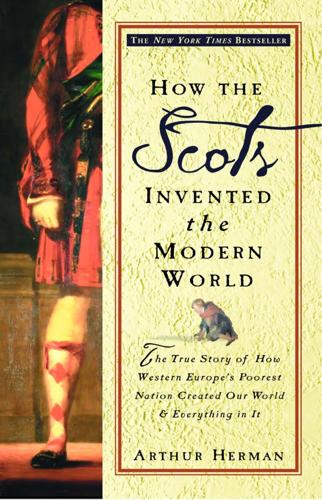
How the Scots Invented the Modern World: The True Story of How Western Europe's Poorest Nation Created Our World and Everything in It
by
Arthur Herman
Published 27 Nov 2001
For the Foulis brothers themselves, I relied on David Murray’s Robert and Andrew Foulis and the Glasgow Press (Glasgow, 1913), and Some Letters of Robert Foulis (Glasgow, 1917), and Richard Sher’s “Commerce, Religion, and the Enlightenment in Eighteenth Century Glasgow,” in Glasgow, Volume I: Beginnings to 1830, edited by T. M. Devine and Gordon Jackson (Manchester, 1995). The book I found most helpful for understanding the physical evolution of Glasgow was Andrew Gibb’s Glasgow: The Making of the City (London, 1983). For Edinburgh, A. J. Youngson’s classic study, The Making of Classical Edinburgh (Edinburgh, 1966), is still indispensable; Charles MacKean’s Edinburgh: An Illustrated Architectural Guide (Edinburgh, 1992) is a handy street-by-street, almost house-by-house guide to the evolution of this fascinating city. On James Craig, see Kitty Croft and Andrew Fraser’s James Craig, 1744–1795 (Edinburgh, 1995).
…
Todd offers another good summary of Reid’s philosophy in his introduction to The Philosophical Orators of Thomas Reid (Carbondale, 1989). I also found quite useful Peter J. Diamond’s Common Sense and Improvement: Thomas Reid as Social Theorist, which is now available in paperback, and George Davie’s classic study, The Social Significance of the Scottish Philosophy of Common Sense (Dundee, 1973). Finally, my discussion of James Wilson relies on Mark David Hall, The Political and Legal Philosophy of James Wilson 1742-1798 (Columia MO, 1997), and Shannon Stimson’s brilliant piece, “A Jury of the Country,” in the Sher and Smitten volume on Scotland and America cited above.
…
The quotation about Stewart’s appeal to the English mind comes from James McCosh in his essay on Stewart in Scottish Philosophy (1875), which can be found in various reprint editions and even online (www.utm.edu/research/iep/text/mccosh/mccosh). Dugald Stewart languishes in a scholarly limbo. No such fate has befallen his gifted students who founded the Edinburgh Review. The classic study is by John Clive: Scotch Reviewers: The Edinburgh Review, 1802–1815 (London, 1957). It can be supplemented with Joanne Shattock’s Politics and Reviews: The Edinburgh Review and the Quarterly (Leicester, 1989) and Biancamaria Fontana’s Rethinking the Politics of Commercial Society: The Edinbugh Review (Cambridge, 1985).
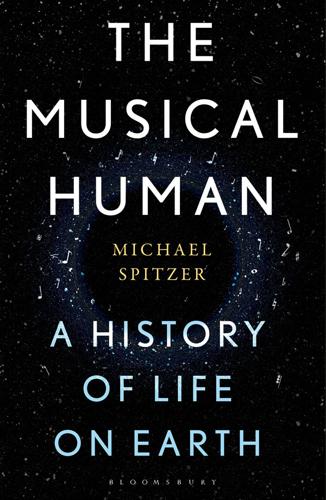
The Musical Human: A History of Life on Earth
by
Michael Spitzer
Published 31 Mar 2021
Among the Inuit of Canada, an aggrieved man has the right to challenge his opponent to a contest in which they sing taunts and gibes at each other.51 Song contests go back to the duelling shepherds in Virgil’s pastoral Eclogues.52 And the film 8-Mile, in which the rapper Eminem battles rival MCs in the clubs of Detroit, vividly shows how song contests are also the basis of hip-hop. In a classic study, the great anthropologist Alan Merriam lists a plethora of songs used by the Tutsi of Rwanda: Songs for boasting purposes, for war and greeting, songs sung when young married women meet together and reminisce about absent friends, children’s songs, songs to flatter a girl, and many more [including] boasting songs called ibirirmbo, in which two men sing in competition with each other, alternating musical phrases; they may vie either in praising one cow or in singing of the merits of one cow against another.53 Clearly, what is sauce for the cow is sauce for the gander, and the many other musics of social life: hunting, healing, war, lament, love, worship and so on.
…
.: Harvard University Press, 1998). 46Manniche, Music and Musicians, p. 94. 47Ibid., pp. 103–4. 48Patricia Bochi, ‘Gender and Genre in Ancient Egyptian Poetry: the Rhetoric of Performance in the Harpers’ Songs’, Journal of the American Research Center in Egypt 35 (1998), pp. 89–95. 49Manniche, Music and Musicians, p. 105. 50Jan Assmann, Death and Salvation in Ancient Egypt (Ithaca: Cornell University Press, 2005), p. 217. 51Ibid., p. 4. 52Camilla Di Biase-Dyson, Foreigners and Egyptians in the Late Egyptian Stories (Leiden: Brill, 2013), p. 39. 53Sachs, Rise of Music in the Ancient World, p. 93. 54Martin West, The East Face of Helicon: West Asiatic Elements in Greek Poetry and Myth (Oxford: Clarendon Press, 1997), p. 45. 55Sachs, Rise of Music in the Ancient World, p. 94. 56West, East Face of Helicon, p. 45. 57Sachs, Rise of Music in the Ancient World, p. 95. 58Ruth Finnegan, Oral Literature in Africa (Cambridge: Open Book Publishers, 2016). 59Gabriel Barkay, ‘The Iron Age II-III’, in Amnon Ben-Tor (ed.), The Archaeology of Ancient Israel (Raanana: The Open University of Israel Press, 1992), pp. 302–73 (p. 349). 60Eva Mroczek, The Literary Imagination in Jewish Antiquity (Oxford: Oxford University Press, 2016), p. 185. 61Manniche, Music and Musicians, p. 93. 62Sachs, Rise of Music in the Ancient World, p. 81. 63James McKinnon, ‘On the Question of Psalmody in the Ancient Synagogue’, Early Music History 6 (1986), pp. 159–91 (p. 187). 64Sung Jin Park, ‘ “Pointing to the Accents in the Scroll”: Functional Development of the Masoretic Accents in the Hebrew Bible’, Hebrew Studies 55 (2014) pp. 73–88. 65Sachs, Rise of Music in the Ancient World, pp. 84–5. 66David Mitchell, ‘Resinging the Temple Psalmody’, Journal for the Study of the Old Testament 36/3 (2012), pp. 355–78 (pp. 364–5). 67Susan Gillingham, ‘The Levites and the Editorial Composition of the Psalms’, in William Brown (ed.), The Oxford Handbook of the Psalms (Oxford: Oxford University Press, 2014), pp. 201–13 (p. 202). 68McKinnon, ‘On the Question of Psalmody’, p. 163. 69Joachim Braun, Music in Ancient Israel/Palestine (Grand Rapids, Michigan: William Eerdmans Publishing, 2002), pp. 301–20. 70John Garr, Living Emblems: Ancient Symbols of Faith (Atlanta, Georgia: Golden Key Press, 2007), p. 39. 71Jacob Neusner, The Idea of History in Rabbinic Judaism (Leiden: Brill, 2004). 72McKinnon, ‘On the Question of Psalmody’, p. 191. 73Penelope Murray and Peter Wilson (eds), Music and the Muses: The Culture of “mousikē” in the Classical Athenian City (Oxford: Oxford University Press, 2004). 74West, East Face of Helicon, pp. 16–17. 75Ibid., pp. 105–6. 76Naomi Weiss, The Music of Tragedy: Performance and Imagination in Euripidean Theater (Oakland: The University of California Press, 2018), p. 175. 77West, East Face of Helicon, p. 344. 78Peter Wilson, ‘Euripides’ Tragic Muse’, Illinois Classical Studies 24–5 (1999–2000), pp. 427–49. 79Ibid., pp. 436–7. 80Aristotle, Poetics (Oxford: Oxford University Press, 2013). 81Armand D’Angour, ‘The Musical Setting of Ancient Greek Texts’, in Tom Phillips and Armand D’Angour (eds), Music, Text, and Culture in Ancient Greece (Oxford: Oxford University Press, 2018), pp. 47–72. 82Albert Lord, The Singer of Tales (Cambridge, Mass.: Harvard University Press, 2000). 83Georg Danek and Stefan Hagel, ‘Homer-Singen’, Wiener humanistische Blätter 37 (1995), pp. 5–20. 84West, East Face of Helicon, p. 198. 85D’Angour, ‘Musical Setting’. 86Thomas Schmitz, ‘Reading Greek Literature’, in Enmarch and Lepper (eds), Ancient Egyptian Literature, pp. 25–44 (pp. 42–3). 87Charles Rose, The Archaeology of Greek and Roman Troy (Cambridge: Cambridge University Press, 2014), p. 90. 88West, East Face of Helicon, p. 163. 89Friedrich Nietzsche, The Birth of Tragedy and other Writings, trans.
…
.: Harvard University Press, 2010), pp. 35–8. 92Barbara Castiglioni, ‘Music, Ritual, and Self-Referentiality in the Second Stasimon of Euripides’ Helen’, Greek and Roman Studies 6 (2018), pp. 247–64 (p. 256). 93Hagel, Ancient Greek Music, p. 6. 94Eric Csapo, ‘Euripides and Tragic Theatre in the Late Fifth Century’, Illinois Classical Studies 24–5 (1999–2000), pp. 399–426. 95Ibid., p. 417. 96Timothy Moore, ‘Stinging Auloi, Aristophanes, Acharnians 860–71’, Greek and Roman Musical Studies 5 (2017), pp. 178–90 (p. 186). 97Csapo, ‘Euripides and Tragic Theatre’. 98West, East Face of Helicon, p. 192. 99Ibid., p. 284. 100Egert Pöhlmann and Martin West, Documents of Ancient Greek Music (Oxford: Clarendon Press, 2001), pp. 12–13. 101See the clip on https://www.youtube.com/watch?

The Intelligence Trap: Revolutionise Your Thinking and Make Wiser Decisions
by
David Robson
Published 7 Mar 2019
[He] was able to use his smartness to outsmart himself.’30 The use of system 2 ‘slow thinking’ to rationalise our beliefs even when they are wrong leads us to uncover the most important and pervasive form of the intelligence trap, with many disastrous consequences; it can explain not only the foolish ideas of people such as Conan Doyle, but also the huge divides in political opinion about issues such as gun crime and climate change. So what’s the scientific evidence? The first clues came from a series of classic studies from the 1970s and 1980s, when David Perkins of Harvard University asked students to consider a series of topical questions, such as: ‘Would a nuclear disarmament treaty reduce the likelihood of world war?’ A truly rational thinker should consider both sides of the argument, but Perkins found that more intelligent students were no more likely to consider any alternative points of view.
…
Perhaps experts over-reach themselves, believing their powers are infallible? The idea would seem to fit with the descriptions of the bias blind spot that we explored in the last chapter. Until recently, however, the bulk of the scientific research suggested the opposite was true: it’s the incompetents who have an inflated view of their abilities. Consider a classic study by David Dunning at the University of Michigan and Justin Kruger at New York University. Dunning and Kruger were apparently inspired by the unfortunate case of McArthur Wheeler, who attempted to rob two banks in Pittsburgh in 1995. He committed the crimes in broad daylight, and the police arrested him just hours later.
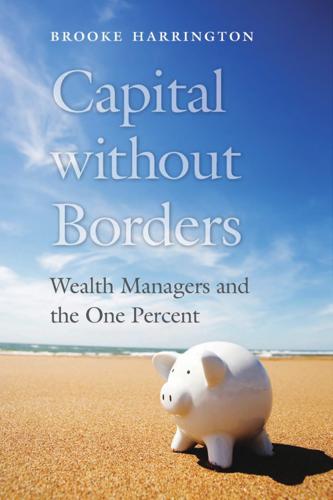
Capital Without Borders
by
Brooke Harrington
Published 11 Sep 2016
Immersion—while not a common strategy in contemporary social science because of the high costs in time, effort, and money—is nonetheless a classic approach for studying groups that are otherwise too secretive, defensive, or marginalized to grant access to outsiders. In taking this approach, I was inspired by classic studies, such as those by William Whyte and John van Maanen.82 Van Maanen set a particularly good example, because—like me—he wanted to conduct research on an occupational group that was particularly suspicious of “left-leaning” academics. For him, the subject was police departments, and his timing made the work particularly difficult.
…
Historically, the professions have been thought of as beholden to states: dependent upon government licensing to legitimate professional credentials and authority, as well as to create the markets for professional practice.1 This relationship is so strong that some social scientists define the state itself in terms of its power to shape employer-employee relations, as well as the institutions of work training and education. As a classic study explained, “The prime contingency of professionalism is the state and its policies.”2 This remains the case for many professions, such as law and medicine, which one cannot practice without a state-issued license, and then only within certain state-defined boundaries. But while other professions have traditionally depended on the state to ratify and legitimate their power, wealth management stands in a different position.
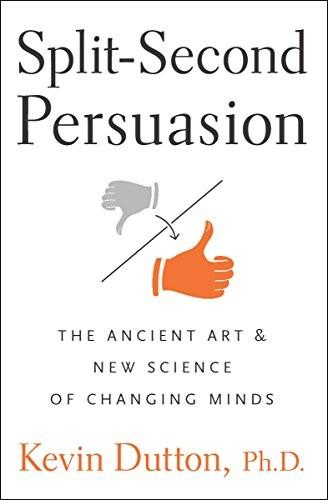
Split-Second Persuasion: The Ancient Art and New Science of Changing Minds
by
Kevin Dutton
Published 3 Feb 2011
It’s difficult in the face of such buffoonery to countenance the possibility that there may be a serious side to all of this. Yet there is. In the law courts, for instance, the hypnotic potential of language is recognised only too well as an impish impediment to justice. This is precisely the reason why, in cross-examination, ‘leading’ questions are so vehemently overruled. 16A classic study conducted in 1974 by Elizabeth Loftus of the University of Washington and her colleague John Palmer provides clear evidence as to why this should continue to be the case. The centrepiece of the study comprised a video clip of a minor road traffic accident – a moving car making contact with a stationary one – which Loftus and Palmer played to two groups of participants.
…
Journal of Abnormal and Social Psychology 41 (1946): 258–290. 15 In 2005, the Global Language Monitor … For a light-hearted tour of the latest politically (in)correct words and phrases see http://www.languagemonitor.com/news/top-politically-incorrect-words-of-2009; for the original ‘misguided criminals’ article see John Simpson, ‘London Bombs Need Calm Response.’ BBC Home (31st August 2005). http://news.bbc.co.uk/1/hi/uk/4671577.stm (accessed November 17th, 2005). 16 A classic study conducted in 1974 … Loftus, Elizabeth F. and Palmer, John C., ‘Reconstruction of Automobile Destruction: An Example of the Interaction Between Language and Memory.’ Journal of Verbal Learning and Verbal Behaviour 13 (1974): 585–589. 17 ‘As soon as the race label is added …’ David Von Drehle, ‘Five Faces of Obama.’

Can Democracy Work?: A Short History of a Radical Idea, From Ancient Athens to Our World
by
James Miller
Published 17 Sep 2018
The power of the demos was absolute, and it often changed its mind: it was for just this reason that critics considered democracy a uniquely unstable form of government. The citizens in assembly were perfectly free to reject previously approved laws, even to establish completely new institutions (as witness their adoption of the sweeping reforms of Cleisthenes). As M. I. Finley reminded readers in his classic study Democracy Ancient and Modern, “There were no theoretical limits to the power of the state, no activity, no sphere of human behaviour”—public or private, sacred or secular—“in which the state could not legitimately intervene provided the decision was properly taken for any reason that was held to be valid by the Assembly.
…
At the same time, a new kind of political institution, unknown to the ancient Greeks, took shape, producing what Hans Kelsen called “one of real democracy’s most important elements: the political party, which brings like-minded individuals together in order to secure them actual influence in shaping public affairs.” * * * THIS WAS AN AREA where the United States led the way, with Andrew Jackson and his successors turning the Democratic Party into a machine for the mass mobilization of voters. As the British scholar James Bryce put it (in the final, 1910 edition of his classic study, The American Commonwealth): “The victories of the ballot box, no less than of the sword, must be won by the cohesion and disciplined docility of troops, and … these merits can only be secured by skillful organization and long-continued training.” Around the world, a variety of political groups of various persuasions began to emulate the American Democratic Party.

The Darkening Age: The Christian Destruction of the Classical World
by
Catherine Nixey
Published 20 Sep 2017
Drake, ed., Violence in Late Antiquity: Perceptions and Practices (Aldershot: Ashgate, 2014), pp. 179–96 ———, ‘Bandits in the Roman Empire’, Past & Present, no. 105 (Nov. 1984), pp. 3–52 ———, Sacred Violence: African Christians and Sectarian Hatred in the Age of Augustine (Cambridge: Cambridge University Press, 2011) Shear, T. L., ‘The Athenian Agora: Excavations of 1971’, Hesperia: The Journal of the American School of Classical Studies at Athens, vol. 42, no. 2 (Apr–Jun 1973), pp. 121–79 Sherwin-White, A. N., ‘Why Were the Early Christians Persecuted? – An Amendment’, Past & Present 27 (1964), pp. 23–7 Sienkiewicz, H., Quo Vadis: A Narrative of the Time of Nero (1895), tr. S. F. Conrad (New York: Hippocrene, 1992) Sizgorich, T., Violence and Belief in Late Antiquity: Militant Devotion in Christianity and Islam (Philadelphia, Pa.: University of Pennsylvania Press, 2009) Smith, W., A Smaller Latin–English Dictionary, revised J.
…
.; London: Yale University Press, 1984, second, revised edition, 2003) ———, John Chrysostom and the Jews: Rhetoric and reality in the late 4th century (Berkeley, Ca.; London: University of California Press, 1983) Wilson, M. R., Our Father Abraham: Jewish Roots of the Christian Faith (Grand Rapids, Mich.; Dayton, Oh.: William B. Eerdmans, 1989) Wilson, N. G., ‘The Church and Classical Studies in Byzantium’, in Antike und Abendland 16 (1970) ———, Saint Basil on the Value of Greek Literature (London: Duckworth, 1975) Wood, I. and J. Harries, eds, The Theodosian Code, Studies in the Imperial Law of Late Antiquity (London: Duckworth, 1993) Yegül, F. K., Baths and Bathing in Classical Antiquity (Cambridge, Mass.: MIT Press, 1992) Footnotes * In Palmyra the goddess became associated with the local goddess Allat, to become ‘Athena-Allat’
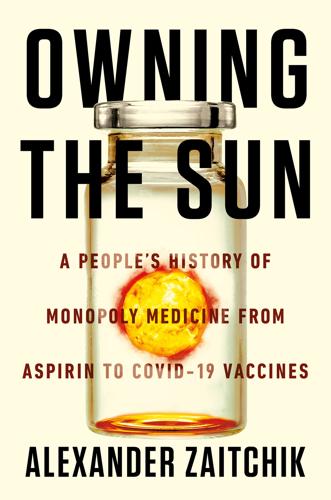
Owning the Sun
by
Alexander Zaitchik
Published 7 Jan 2022
In popular debates over the issuing of state grants and immunities, corporate charters were denounced as “mercantile monopolies” that had no place in a republic. “Such franchises and privileged grants may have made sense in monarchies as devices serving ‘to circumscribe and limit absolute power,’” observes Gordon Wood in his classic study, The Radicalism of the American Revolution. “But now that only the people ruled, these grants of corporate privileges seemed pernicious.” Early Americans may have hated all traces of the old regime, but they never followed Franklin and Jefferson’s lead when it came to patent monopolies. They used the Patent Office in such numbers that Jefferson was forced to concede the system’s role in, if not unleashing, at least bringing order to “a spring to invention beyond my comprehension.”
…
In Common as Air: Revolution, Art, and Ownership (2012), Lewis Hyde revisits Article I, Section 8 of the Constitution through the skeptical contemporary eyes of Jefferson and Franklin, products of a transatlantic Enlightenment that held views of ancient lineage about knowledge as the common store of humanity, and that saw each discovery as an addition to a cumulative, multigenerational project that had no place for the idea of the “sole inventor.” These ideas dovetailed with the democratic ethos of an early American republic that rejected private claims smacking of royal privilege. The historically unique fierceness of this rejection and its origins are the subject of Gordon S. Wood’s classic study, The Radicalism of the American Revolution (1991). For a critical look at how Congress and the courts have used the Progress Clause as constitutional cover for constitutionally questionable acts, from trade to foreign policy, see Jeanne C. Fromer, “The Intellectual Property Clause’s External Limitations” (2012).

One Good Turn: A Natural History of the Screwdriver and the Screw
by
Witold Rybczynski
Published 27 Mar 2000
GLOSSARY OF TOOLS London pattern screwdriver Scotch pattern screwdriver Undertaker’s screwdriver Gent’ fancy screwdriver Carpenter’s brace Breast auger Spiral bit auger Cooper’s adze Wooden carpenter’s brace with brass plates Try square Bevel A-level Spirit level Maul Combination case opener Plane Backsaw Skew-back handsaw Frame saw ACKNOWLEDGMENTS Thanks, first, to David Shipley for asking the question. For help with the Greek quote, my appreciation to Prof. Ralph Rosen, chair of classical studies at the University of Pennsylvania. Robert A. Ruhloff was kind enough to send me information on wrought-iron spikes, including several interesting samples. Jamie Kendrick, Adam Barzilay, Maria Gonzalez, and Yi-Ting Liu provided capable research assistance. The Milton Historical Society supplied information on the redoubtable P.

After Europe
by
Ivan Krastev
Published 7 May 2017
Raymond Aron was right when he observed five decades ago that “with humanity on the way to unification, inequality between peoples takes on the significance that inequality between classes once had.”16 The Crisis and the Left In his reflections on the impact of the refugee crisis on Europe, Slovenian philosopher Slavoj Žižek comments on Elisabeth Kübler-Ross’s classic study On Death and Dying.17 In her book, Kübler-Ross offers the well-known scheme of the five stages of how we react upon learning that we have a terminal illness: 1. denial (“This can’t be happening, not to me.”) 2. anger (“How can this happen to me?”) 3. bargaining (“Just let me live to see my children graduate.”) 4. depression (“I’m going to die, so why bother with anything?”)

The Shipwrecked Mind: On Political Reaction
by
Mark Lilla
Published 19 Oct 2015
Ever since Marcion, the second-century theologian who appealed to Paul’s authority for his doctrine that the Christian God was a deity wholly distinct from and superior to the Hebrews’ Yahweh, the Pauline corpus has been creatively misread. It is hard to find much in Jesus’s Sermon on the Mount to inspire such flights of fancy, but Paul’s epistles, with their powerful intimations about sin, grace, and imminent redemption, are another matter. As Monsignor Ronald Knox put it in his classic study Enthusiasm, “the mind of Paul has been misunderstood all down the centuries; there is no aberration of Christianity which does not point to him as the source of its inspiration, found as a rule, in his Epistle to the Romans.” And one can understand why. Consider these extraordinarily pregnant formulations from the Epistle: “We hold that a person is justified by faith apart from works prescribed by the law” (3:28).

Code Complete (Developer Best Practices)
by
Steve McConnell
Published 8 Jun 2004
System testing (in the strict sense of independent testing) is done after construction to verify that construction has been done correctly. Construction is at the center of the software-development process. With a focus on construction, the individual programmer's productivity can improve enormously. A classic study by Sackman, Erikson, and Grant showed that the productivity of individual programmers varied by a factor of 10 to 20 during construction (1968). Since their study, their results have been confirmed by numerous other studies (Curtis 1981, Mills 1983, Curtis et al. 1986, Card 1987, Valett and McGarry 1989, DeMarco and Lister 1999, Boehm et al. 2000).
…
The typical organization uses a test-heavy defect-removal approach and achieves only about 85 percent defectremoval efficiency. Leading organizations use a wider variety of techniques and achieve defect-removal efficiencies of 95 percent or higher (Jones 2000). The strong implication is that if project developers are striving for a higher defectdetection rate, they need to use a combination of techniques. A classic study by Glenford Myers confirmed this implication (1978b). Myers studied a group of programmers with a minimum of 7 and an average of 11 years of professional experience. Using a program with 15 known errors, he had each programmer look for errors by using one of these techniques: Execution testing against the specification Execution testing against the specification with the source code Walk-through/inspection using the specification and the source code Myers found a huge variation in the number of defects detected in the program, ranging from 1.0 to 9.0 defects found.
…
First, 20% of a project's routines contribute 80% of the cost of development (Boehm 1987b). That doesn't necessarily mean that the 20% that cost the most are the same as the 20% with the most defects, but it's pretty suggestive. Second, regardless of the exact proportion of the cost contributed by highly defective routines, highly defective routines are extremely expensive. In a classic study in the 1960s, IBM performed an analysis of its OS/360 operating system and found that errors were not distributed evenly across all routines but were concentrated into a few. Those error-prone routines were found to be "the most expensive entities in programming" (Jones 1986a). They contained as many as 50 defects per 1000 lines of code, and fixing them often cost 10 times what it took to develop the whole system.

When Work Disappears: The World of the New Urban Poor
by
William Julius Wilson
Published 1 Jan 1996
Since the early twentieth century, Chicago has been a laboratory for the scientific investigation of the social, economic, and historical forces that create and perpetuate economically depressed and isolated urban communities. The most distinctive phase of this research, referred to as the Chicago School of urban sociology, was completed before 1950 and was conducted by social scientists at the University of Chicago. Immediately following World War I, the Chicago School produced several classic studies, many of which were conducted under the guidance of Robert E. Park and Ernest W. Burgess over the next three decades. These studies often combined statistical and observational analyses in making distinctive empirical and theoretical contributions to our understanding of urban processes, social problems and urban growth, and, commencing in the late 1930s, the nature of race and class subjugation in urban areas.
…
But Frazier, an African-American sociologist trained at the University of Chicago, also recognized and emphasized a problem ignored in the earlier work of Park and Burgess—the important link between the black family structure and the industrial economy Frazier believed that the availability of employment opportunities in the industrial sector would largely determine the upward mobility of African-Americans and their eventual assimilation into American life. In 1945, a fundamental revision in the Chicago framework came with the publication of St. Clair Drake and Horace Cayton’s classic study, Black Metropolis. Drake and Cayton first examined black progress in employment, housing, and social integration using census, survey, and archival data. Their analysis clearly revealed the existence of a color line that effectively blocked black occupational, residential, and social mobility.

Hard Times: The Divisive Toll of the Economic Slump
by
Tom Clark
and
Anthony Heath
Published 23 Jun 2014
Putnam's underlying analysis of the individual organisations confirms that ‘the membership records of virtually every adult organization in this sample bears the scars’ of this period.8 Other, more qualitative, analyses carried out during the Depression era underline the same conclusion. Mirra Komarovsky's classic study of 59 unemployed men and their families near New York documented how economic misfortune warped relations within the home, and then spilled over into the community and ‘reduced the social life’. People who ‘used to visit and entertain friends’ suddenly did so ‘hardly at all’. One former electrician put it particularly bluntly: ‘You don't have any friends unless you have got the dollar.’9 Few aspects of community life were untouched.
…
The family provides the oldest form of economic shelter: long before anyone talked of ‘cradle to grave’ welfare states, families pooled resources and risks to nurture the young, care for the old and rescue the destitute. If hard times weaken family life, therefore, they do not merely take a direct psychological toll, but also increase economic exposure. Should we expect broke homes to become broken homes? ‘Not necessarily’ is the message from most of the research and reports from the 1930s. In her classic study of unemployed men in the American Depression, Mirra Komarovsky uncovered much desperation; but she nonetheless found that a majority of families continued to hang together, and on traditional lines, with 44 of her 59 cases reporting no change in the standing of the man within his home.44 Touring the depressed North of England in the same years, George Orwell wrote that things were ‘more normal than one really has the right to expect.
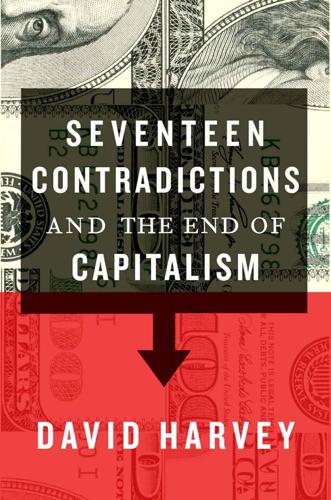
Seventeen Contradictions and the End of Capitalism
by
David Harvey
Published 3 Apr 2014
Thomas Malthus, An Essay on the Principle of Population, Cambridge, Cambridge University Press, 1992. 8. McKinsey Global Institute, ‘The World at Work: Jobs, Pay and Skills for 3.5 Billion People’, Report of the McKinsey Global Institute, 2012. 9. Guy Debord, The Society of the Spectacle, Kalamazoo, Black & Red, 2000. 10. Alvin Toffler, The Third Wave: The Classic Study of Tomorrow, New York, Bantam, 1980. 11. Michael Hardt and Antonio Negri, Commonwealth, Cambridge, MA, Harvard University Press, 2009. 12. Antonio Gramsci, The Prison Notebooks, London, NLR Books, 1971. 13. Gordon, ‘Is U.S. Economic Growth Over? Faltering Innovation Confronts the Six Headwinds’. 14.
…
-J., The Social Contract, Oxford, Oxford University Press, 2008 Sabin, P., The Bet: Paul Ehrlich, Julian Simon, and Our Gamble over Earth’s Future, New Haven, Yale University Press, 2013 Sassower, R., Postcapitalism: Moving Beyond Ideology in America’s Economic Crises, Boulder, CO, Paradigm Publishers, 2009 Schumpeter, J., Capitalism, Socialism and Democracy, London, Routledge, 1942, pp. 82–3 Seabright P., (ed.), The Vanishing Rouble: Barter Networks and Non-Monetary Transactions in Post-Soviet Societies, London, Cambridge University Press, 2000 Sen, A., Development as Freedom, New York, Anchor Books, 2000 Smith, N., Uneven Development: Nature, Capital and the Production of Space, Oxford, Basil Blackwell, 1984 —, ‘Nature as Accumulation Strategy’, Socialist Register, 2007, pp. 19–41 Stiglitz, J., The Price of Inequality, New York, Norton, 2013 Storrs, C. (ed.), The Fiscal Military State in Eighteenth Century Europe, Aldershot, Ashgate, 2009 Thomas, P., The Gramscian Moment: Philosophy, Hegemony and Marxism, Chicago, Haymarket Books, 2010 Toffler, A., The Third Wave: The Classic Study of Tomorrow, New York, Bantam, 1980 Veblen, T., The Theory of the Leisure Class, New York, Oxford University Press, 2009 edition Wallerstein, I., Collins, R., Mann, M., Derluguian, G., and Calhoun, C., Does Capitalism Have a Future?, Oxford, Oxford University Press, 2013 Whitehead, A. N., Process and Reality, New York, Free Press, 1969 Wolff, R., Moore, B., and Marcuse, H., A Critique of Pure Tolerance: Beyond Tolerance, Tolerance and the Scientific Outlook, Repressive Tolerance, Boston, Beacon Press, 1969 Wright, M., Disposable Women and Other Myths of Global Capitalism, New York, Routledge, 2006 Index Numbers in italics indicate Figures. 2001: A Space Odyssey (film) 271 A Abu Ghraib, Iraq 202 acid deposition 255, 256 advertising 50, 121, 140, 141, 187, 197, 236, 237, 275, 276 Aeschylus 291 Afghanistan 202, 290 Africa and global financial crisis 170 growth 232 indigenous population and property rights 39 labour 107, 108, 174 ‘land grabs’ 39, 58, 77, 252 population growth 230 Agamben, Giorgio 283–4 agglomeration 149, 150 economies 149 aggregate demand 20, 80, 81, 104, 173 aggregate effective demand 235 agribusiness 95, 133, 136, 206, 247, 258 agriculture ix, 39, 61, 104, 113, 117, 148, 229, 239, 257–8, 261 Alabama 148 Algerian War (1954–62) 288, 290 alienation 57, 69, 125, 126, 128, 129, 130, 198, 213, 214, 215, 263, 266–70, 272, 275–6, 279–80, 281, 286, 287 Allende, Salvador 201 Althusser, Louis 286 Amazon 131, 132 Americas colonisation of 229 indigenous populations 283 Amnesty International 202 anti-capitalist movements 11, 14, 65, 110, 111, 162 anti-capitalist struggle 14, 110, 145, 193, 269, 294 anti-globalisation 125 anti-terrorism xiii apartheid 169, 202, 203 Apple 84, 123, 131 apprenticeships 117 Arab Spring movement 280 Arbenz, Jacobo 201 Argentina 59, 107, 152, 160, 232 Aristotelianism 283, 289 Aristotle 1, 4, 200, 215 arms races 93 arms traffickers 54 Arrighi, Giovanni 136 Adam Smith in Beijing 142 Arthur, Brian: The Nature of Technology 89, 95–9, 101–4, 110 artificial intelligence xii, 104, 108, 120, 139, 188, 208, 295 Asia ‘land grabs’ 58 urbanisation 254 assembly lines 119 asset values and the credit system 83 defined 240 devalued 257 housing market 19, 20, 21, 58, 133 and predatory lending 133 property 76 recovery of 234 speculation 83, 101, 179 associationism 281 AT&T 131 austerity xi, 84, 177, 191, 223 Australia 152 autodidacts 183 automation xii, 103, 105, 106, 108, 138, 208, 215, 295 B Babbage, Charles 119 Bangkok riots, Thailand (1968) x Bangladesh dismantlement of old ships 250 factories 129, 174, 292 industrialisation 123 labour 108, 123, 129 protests against unsafe labour conditions 280 textile mill tragedies 249 Bank of England 45, 46 banking bonuses 164 electronic 92, 100, 277 excessive charges 84 interbank lending 233 and monopoly power 143 national banks supplant local banking in Britain and France 158 net transfers between banks 28 power of bankers 75 private banks 233 profits 54 regional banks 158 shell games 54–5 systematic banking malfeasance 54, 61 Baran, Paul and Sweezy, Paul: Monopoly Capitalism 136 Barcelona 141, 160 barrios pobres ix barter 24, 25, 29 Battersea Power Station, London 255 Battle of Algiers, The (film) 288 Bavaria, Germany 143, 150 Becker, Gary 186 Bernanke, Ben 47 Bhutan 171 billionaires xi, 165, 169, 170 biodiversity 246, 254, 255, 260 biofuels 3 biomedical engineering xii Birmingham 149 Bitcoin 36, 109 Black Panthers 291 Blade Runner (film) 271 Blankfein, Lloyd 239–40 Bohr, Niels 70 Bolivia 257, 260, 284 bondholders xii, 32, 51, 152, 158, 223, 240, 244, 245 bonuses 54, 77, 164, 178 Bourdieu, Pierre 186, 187 bourgeois morality 195 bourgeois reformism 167, 211 ‘Brady Bonds’ 240 Braudel, Fernand 193 Braverman, Harry: Labor and Monopoly Capital 119 Brazil a BRIC country 170, 228 coffee growers 257 poverty grants 107 unrest in (2013) 171, 243, 293 Brecht, Bertolt 265, 293 Bretton Woods (1944) 46 brewing trade 138 BRIC countries 10, 170, 174, 228 Britain alliance between state and London merchant capitalists 44–5 banking 158 enclosure movement 58 lends to United States (nineteenth century) 153 suppression of Mau Mau 291 surpluses of capital and labour sent to colonies 152–3 welfare state 165 see also United Kingdom British Empire 115, 174 British Museum Library, London 4 British Petroleum (BP) 61, 128 Buffett, Peter 211–12, 245, 283, 285 Buffett, Warren 211 bureaucracy 121–2, 165, 203, 251 Bush, George, Jr 201, 202 C Cabet, Étienne 183 Cabral, Amilcar 291 cadastral mapping 41 Cadbury 18 Cairo uprising (2011) 99 Calhoun, Craig 178 California 29, 196, 254 Canada 152 Cape Canaveral, Florida 196 capital abolition of monopolisable skills 119–20 aim of 92, 96–7, 232 alternatives to 36, 69, 89, 162 annihilation of space through time 138, 147, 178 capital-labour contradiction 65, 66, 68–9 and capitalism 7, 57, 68, 115, 166, 218 centralisation of 135, 142 circulation of 5, 7, 8, 53, 63, 67, 73, 74, 75, 79, 88, 99, 147, 168, 172, 177, 234, 247, 251, 276 commodity 74, 81 control over labour 102–3, 116–17, 166, 171–2, 274, 291–2 creation of 57 cultural 186 destruction of 154, 196, 233–4 and division of labour 112 economic engine of 8, 10, 97, 168, 172, 200, 253, 265, 268 evolution of 54, 151, 171, 270 exploitation by 156, 195 fictitious 32–3, 34, 76, 101, 110–11, 239–42 fixed 75–8, 155, 234 importance of uneven geographical development to 161 inequality foundational for 171–2 investment in fixed capital 75 innovations 4 legal-illegal duality 72 limitless growth of 37 new form of 4, 14 parasitic forms of 245 power of xii, 36, 47 private capital accumulation 23 privatisation of 61 process-thing duality 70–78 profitability of 184, 191–2 purpose of 92 realisation of 88, 173, 192, 212, 231, 235, 242, 268, 273 relation to nature 246–63 reproduction of 4, 47, 55, 63, 64, 88, 97, 108, 130, 146, 161, 168, 171, 172, 180, 181, 182, 189, 194, 219, 233, 252 spatiality of 99 and surplus value 63 surpluses of 151, 152, 153 temporality of 99 tension between fixed and circulating capital 75–8, 88, 89 turnover time of 73, 99, 147 and wage rates 173 capital accumulation, exponential growth of 229 capital gains 85, 179 capital accumulation 7, 8, 75, 76, 78, 102, 149, 151–5, 159, 172, 173, 179, 192, 209, 223, 228–32, 238, 241, 243, 244, 247, 273, 274, 276 basic architecture for 88 and capital’s aim 92, 96 collapse of 106 compound rate of 228–9 and the credit system 83 and democratisation 43 and demographic growth 231 and household consumerism 192 and lack of aggregate effective demand in the market 81 and the land market 59 and Marx 5 maximising 98 models of 53 in a new territories 152–3 perpetual 92, 110, 146, 162, 233, 265 private 23 promotion of 34 and the property market 50 recent problems of 10 and the state 48 capitalism ailing 58 an alternative to 36 and capital 7, 57, 68, 115, 166, 218 city landscape of 160 consumerist 197 contagious predatory lawlessness within 109 crises essential to its reproduction ix; defined 7 and demand-side management 85 and democracy 43 disaster 254–5, 255 economic engine of xiii, 7–8, 11, 110, 220, 221, 252, 279 evolution of 218 geographical landscape of 146, 159 global xi–xii, 108, 124 history of 7 ‘knowledge-based’ xii, 238 and money power 33 and a moneyless economy 36 neoliberal 266 political economy of xiv; and private property rights 41 and racialisation 8 reproduction of ix; revivified xi; vulture 162 capitalist markets 33, 53 capitalo-centric studies 10 car industry 121, 138, 148, 158, 188 carbon trading 235, 250 Caribbean migrants 115 Cartesian thinking 247 Cato Institute 143 Central America 136 central banks/bankers xi–xii, 37, 45, 46, 48, 51, 109, 142, 156, 161, 173, 233, 245 centralisation 135, 142, 144, 145, 146, 149, 150, 219 Césaire, Aimé 291 CFCs (chloro-fluorocarbons) 248, 254, 256, 259 chambers of commerce 168 Chandler, Alfred 141 Chaplin, Charlie 103 Charles I, King 199 Chartism 184 Chávez, Hugo 123, 201 cheating 57, 61, 63 Cheney, Dick 289 Chicago riots (1968) x chicanery 60, 72 children 174 exploitation of 195 raising 188, 190 trading of 26 violence and abuse of 193 Chile 136, 194, 280 coup of 1973 165, 201 China air quality 250, 258 becomes dynamic centre of a global capitalism 124 a BRIC country 170, 228 capital in (after 2000) 154 class struggles 233 and competition 150, 161 consumerism 194–5, 236 decentralisation 49 dirigiste governmentality 48 dismantlement of old ships 250 dispossessions in 58 education 184, 187 factories 123, 129, 174, 182 famine in 124–5 ‘great leap forward’ 125 growth of 170, 227, 232 income inequalities 169 industrialisation 232 Keynesian demand-side and debt-financed expansion xi; labour 80, 82, 107, 108, 123, 174, 230 life expectancy 259 personal debt 194 remittances 175 special economic zones 41, 144 speculative booms and bubbles in housing markets 21 suburbanisation 253 and technology 101 toxic batteries 249–50 unstable lurches forward 10 urban and infrastructural projects 151 urbanisation 232 Chinese Communist Party 108, 142 Church, the 185, 189, 199 circular cumulative causation 150 CitiBank 61 citizenship rights 168 civil rights 202, 205 class affluent classes 205 alliances 143, 149 class analysis xiii; conflict 85, 159 domination 91, 110 plutocratic capitalist xiii; power 55, 61, 88, 89, 92, 97, 99, 110, 134, 135, 221, 279 and race 166, 291 rule 91 structure 91 class struggle 34, 54, 67, 68, 85, 99, 103, 110, 116, 120, 135, 159, 172, 175, 183, 214, 233 climate change 4, 253–6, 259 Clinton, President Bill 176 Cloud Atlas (film) 271 CNN 285 coal 3, 255 coercion x, 41–4, 53, 60–63, 79, 95, 201, 286 Cold War 153, 165 collateralised debt obligations (CDOs) 78 Collins, Suzanne: The Hunger Games 264 Colombia 280 colonialism 257 the colonised 289–90 indigenous populations 39, 40 liberation from colonial rule 202 philanthropic 208, 285 colonisation 229, 262 ‘combinatorial evolution’ 96, 102, 104, 146, 147, 248 commercialisation 262, 263, 266 commodification 24, 55, 57, 59–63, 88, 115, 140, 141, 192, 193, 235, 243, 251, 253, 260, 262, 263, 273 commodities advertising 275 asking price 31 and barter 24 commodity exchange 39, 64 compared with products 25–6 defective or dangerous 72 definition 39 devaluation of 234 exchange value 15, 25 falling costs of 117 importance of workers as buyers 80–81 international trade in 256 labour power as a commodity 62 low-value 29 mobility of 147–8 obsolescence 236 single metric of value 24 unique 140–41 use value 15, 26, 35 commodity markets 49 ‘common capital of the class’ 142, 143 common wealth created by social labour 53 private appropriation of 53, 54, 55, 61, 88, 89 reproduction of 61 use values 53 commons collective management of 50 crucial 295 enclosure of 41, 235 natural 250 privatised 250 communications 99, 147, 148, 177 communism 196 collapse of (1989) xii, 165 communist parties 136 during Cold War 165 scientific 269 socialism/communism 91, 269 comparative advantage 122 competition and alienated workers 125 avoiding 31 between capitals 172 between energy and food production 3 decentralised 145 and deflationary crisis (1930s) 136 foreign 148, 155 geopolitical 219 inter-capitalist 110 international 154, 175 interstate 110 interterritorial 219 in labour market 116 and monopoly 131–45, 146, 218 and technology 92–3 and turnover time of capital 73, 99 and wages 135 competitive advantage 73, 93, 96, 112, 161 competitive market 131, 132 competitiveness 184 complementarity principle of 70 compounding growth 37, 49, 222, 227, 228, 233, 234, 235, 243, 244 perpetual 222–45, 296 computerisation 100, 120, 222 computers 92, 100, 105, 119 hardware 92, 101 organisational forms 92, 93, 99, 101 programming 120 software 92, 99, 101, 115, 116 conscience laundering 211, 245, 284, 286 Conscious Capitalism 284 constitutional rights 58 constitutionality 60, 61 constitutions progressive 284 and social bond between human rights and private property 40 US Constitution 284 and usurpation of power 45 consumerism 89, 106, 160, 192–5, 197, 198, 236, 274–7 containerisation 138, 148, 158 contracts 71, 72, 93, 207 contradictions Aristotelian conception of 4 between money and the social labour money represents 83 between reality and appearance 4–6 between use and exchange value 83 of capital and capitalism 68 contagious intensification of 14 creative use of 3 dialectical conception of 4 differing reactions to 2–3 and general crises 14 and innovation 3 moved around rather than resolved 3–4 multiple 33, 42 resolution of 3, 4 two modes of usage 1–2 unstable 89 Controller of the Currency 120 corporations and common wealth 54 corporate management 98–9 power of 57–8, 136 and private property 39–40 ‘visible hand’ 141–2 corruption 53, 197, 266 cosmopolitanism 285 cost of living 164, 175 credit cards 67, 133, 277 credit card companies 54, 84, 278 credit financing 152 credit system 83, 92, 101, 111, 239 crises changes in mental conceptions of the world ix-x; crisis of capital 4 defined 4 essential to the reproduction of capitalism ix; general crisis ensuing from contagions 14 housing markets crisis (2007–9) 18, 20, 22 reconfiguration of physical landscapes ix; slow resolution of x; sovereign debt crisis (after 2012) 37 currency markets, turbulence of (late 1960s) x customary rights 41, 59, 198 D Davos conferences 169 DDT 259 Debord, Guy: The Society of the Spectacle 236 debt creation 236 debt encumbrancy 212 debt peonage 62, 212 decentralisation 49, 142, 143, 144, 146, 148, 219, 281, 295 Declaration of Independence (US) 284 decolonisation 282, 288, 290 decommodification 85 deindustrialisation xii, 77–8, 98, 110, 148, 153, 159, 234 DeLong, Bradford 228 demand management 81, 82, 106, 176 demand-side management 85 democracy 47, 215 bourgeois 43, 49 governance within capitalism 43 social 190 totalitarian 220, 292 democratic governance 220, 266 democratisation 43 Deng Xiaoping x depressions 49, 227 1930s x, 108, 136, 169, 227, 232, 234 Descartes, René 247 Detroit 77, 136, 138, 148, 150, 152, 155, 159, 160 devaluation 153, 155, 162 of capital 233 of commodities 234 crises 150–51, 152, 154 localised 154 regional 154 developing countries 16, 240 Dhaka, Bangladesh 77 dialectics 70 Dickens, Charles 126, 169 Bleak House 226 Dombey and Son 184 digital revolution 144 disabled, the 202 see also handicapped discrimination 7, 8, 68, 116, 297 diseases 10, 211, 246, 254, 260 disempowerment 81, 103, 116, 119, 198, 270 disinvestment 78 Disneyfication 276 dispossession accumulation by 60, 67, 68, 84, 101, 111, 133, 141, 212 and capital 54, 55, 57 economies of 162 of indigenous populations 40, 59, 207 ‘land grabs’ 58 of land rights of the Irish 40 of the marginalised 198 political economy of 58 distributional equality 172 distributional shares 164–5, 166 division of labour 24, 71, 112–30, 154, 184, 268, 270 and Adam Smith 98, 118 defined 112 ‘the detail division of labour’ 118, 121 distinctions and oppositions 113–14 evolution of 112, 120, 121, 126 and gender 114–15 increasing complexity of 124, 125, 126 industrial proletariat 114 and innovation 96 ‘new international division of labour’ 122–3 organisation of 98 proliferating 121 relation between the parts and the whole 112 social 113, 118, 121, 125 technical 113, 295 uneven geographical developments in 130 dot-com bubble (1990s) 222–3, 241 ‘double coincidence of wants and needs’ 24 drugs 32, 193, 248 cartels 54 Durkheim, Emile 122, 125 Dust Bowl (United States, 1930s) 257 dynamism 92, 104, 146, 219 dystopia 229, 232, 264 E Eagleton , Terry: Why Marx Was Right 1, 21, 200, 214–15 East Asia crisis of 1997–98 154 dirigiste governmentality 48 education 184 rise of 170 Eastern Europe 115, 230 ecological offsets 250 economic rationality 211, 250, 252, 273, 274, 275, 277, 278, 279 economies 48 advanced capitalist 228, 236 agglomeration 149 of dispossession 162 domination of industrial cartels and finance capital 135 household 192 informal 175 knowledge-based 188 mature 227–8 regional 149 reoriented to demand-side management 85 of scale 75 solidarity 66, 180 stagnant xii ecosystems 207, 247, 248, 251–6, 258, 261, 263, 296 Ecuador 46, 152, 284 education 23, 58, 60, 67–8, 84, 110, 127–8, 129, 134, 150, 156, 168, 183, 184, 185, 187, 188, 189, 223, 235, 296 efficiency 71, 92, 93, 98, 103, 117, 118, 119, 122, 126, 272, 273, 284 efficient market hypothesis 118 Egypt 107, 280, 293 Ehrlich, Paul 246 electronics 120, 121, 129, 236, 292 emerging markets 170–71, 242 employment 37 capital in command of job creation 172, 174 conditions of 128 full-time 274 opportunities for xii, 108, 168 regional crises of 151 of women 108, 114, 115, 127 see also labour enclosure movement 58 Engels, Friedrich 70 The Condition of the English Working Class in England 292 English Civil War (1642–9) 199 Enlightenment 247 Enron 133, 241 environmental damage 49, 61, 110, 111, 113, 232, 249–50, 255, 257, 258, 259, 265, 286, 293 environmental movement 249, 252 environmentalism 249, 252–3 Epicurus 283 equal rights 64 Erasmus, Desiderius 283 ethnic hatreds and discriminations 8, 165 ethnic minorities 168 ethnicisation 62 ethnicity 7, 68, 116 euro, the 15, 37, 46 Europe deindustrialisation in 234 economic development in 10 fascist parties 280 low population growth rate 230 social democratic era 18 unemployment 108 women in labour force 230 European Central Bank 37, 46, 51 European Commission 51 European Union (EU) 95, 159 exchange values commodities 15, 25, 64 dominance of 266 and housing 14–23, 43 and money 28, 35, 38 uniform and qualitatively identical 15 and use values 15, 35, 42, 44, 50, 60, 65, 88 exclusionary permanent ownership rights 39 experts 122 exploitation 49, 54, 57, 62, 68, 75, 83, 107, 108, 124, 126, 128, 129, 150, 156, 159, 166, 175, 176, 182, 185, 193, 195, 208, 246, 257 exponential growth 224, 240, 254 capacity for 230 of capital 246 of capital accumulation 223, 229 of capitalist activity 253 and capital’s ecosystem 255 in computer power 105 and environmental resources 260 in human affairs 229 and innovations in finance and banking 100 potential dangers of 222, 223 of sophisticated technologies 100 expropriation 207 externality effects 43–4 Exxon 128 F Facebook 236, 278, 279 factories ix, 123, 129, 160, 174, 182, 247, 292 Factory Act (1864) 127, 183 famine 124–5, 229, 246 Fannie Mae 50 Fanon, Frantz 287 The Wretched of the Earth 288–90, 293 fascist parties 280 favelas ix, 16, 84, 175 feminisation 115 feminists 189, 192, 283 fertilisers 255 fetishes, fetishism 4–7, 31, 36–7, 61, 103, 111, 179, 198, 243, 245, 269, 278 feudalism 41 financial markets 60, 133 financialisation 238 FIRE (finance, insurance and real estate) sections 113 fishing 59, 113, 148, 249, 250 fixity and motion 75–8, 88, 89, 146, 155 Food and Drug Administration 120 food production/supply 3, 229, 246, 248, 252 security 253, 294, 296 stamp aid 206, 292 Ford, Martin 104–8, 111, 273 foreclosure 21, 22, 24, 54, 58, 241, 268 forestry 113, 148, 257 fossil fuels 3–4 Foucault, Michel xiii, 204, 209, 280–81 Fourier, François Marie Charles 183 Fourierists 18 Fourteen Points 201 France banking 158 dirigiste governmentality under de Gaulle 48 and European Central Bank 46 fascist parties 280 Francis, Pope 293 Apostolic Exhortation 275–6 Frankfurt School 261 Freddie Mac 50 free trade 138, 157 freedom 47, 48, 142, 143, 218, 219, 220, 265, 267–270, 276, 279–82, 285, 288, 296 and centralised power 142 cultural 168 freedom and domination 199–215, 219, 268, 285 and the good life 215 and money creation 51 popular desire for 43 religious 168 and state finances 48 under the rule of capital 64 see also liberty and freedom freedom of movement 47, 296 freedom of thought 200 freedom of the press 213 French Revolution 203, 213, 284 G G7 159 G20 159 Gallup survey of work 271–2 Gandhi, Mahatma 284, 291 Gaulle, Charles de 48 gay rights 166 GDP 194, 195, 223 Gehry, Frank 141 gender discriminations 7, 8, 68, 165 gene sequences 60 General Motors xii genetic engineering xii, 101, 247 genetic materials 235, 241, 251, 261 genetically modified foods 101 genocide 8 gentrification 19, 84, 141, 276 geocentric model 5 geographical landscape building a new 151, 155 of capitalism 159 evolution of 146–7 instability of 146 soulless, rationalised 157 geopolitical struggles 8, 154 Germany and austerity 223 autobahns built 151 and European Central Bank 46 inflation during 1920s 30 wage repression 158–9 Gesell, Silvio 35 Ghana 291 global economic crisis (2007–9) 22, 23, 47, 118, 124, 132, 151, 170, 228, 232, 234, 235, 241 global financialisation x, 177–8 global warming 260 globalisation 136, 174, 176, 179, 223, 293 gold 27–31, 33, 37, 57, 227, 233, 238, 240 Golden Dawn 280 Goldman Sachs 75, 239 Google 131, 136, 195, 279 Gordon, Robert 222, 223, 230, 239, 304n2 Gore, Al 249 Gorz, André 104–5, 107, 242, 270–77, 279 government 60 democratic 48 planning 48 and social bond between human rights and private property 40 spending power 48 governmentality 43, 48, 157, 209, 280–81, 285 Gramsci, Antonio 286, 293 Greco, Thomas 48–9 Greece 160, 161, 162, 171, 235 austerity 223 degradation of the well-being of the masses xi; fascist parties 280 the power of the bondholders 51, 152 greenwashing 249 Guantanamo Bay, Cuba 202, 284 Guatemala 201 Guevara, Che 291 Guggenheim Museum, Bilbao 141 guild system 117 Guinea-Bissau 291 Gulf Oil Spill (2010) 61 H Habermas, Jürgen 192 habitat 246, 249, 252, 253, 255 handicapped, the 218 see also disabled Harvey, David The Enigma of Capital 265 Rebel Cities 282 Hayek, Friedrich 42 Road to Serfdom 206 health care 23, 58, 60, 67–8, 84, 110, 134, 156, 167, 189, 190, 235, 296 hedge funds 101, 162, 239, 241, 249 managers 164, 178 Heidegger, Martin 59, 250 Heritage Foundation 143 heterotopic spaces 219 Hill, Christopher 199 Ho Chi Minh 291 holocausts 8 homelessness 58 Hong Kong 150, 160 housing 156, 296 asset values 19, 20, 21, 58 ‘built to order’ 17 construction 67 controlling externalities 19–20 exchange values 14–23, 43 gated communities ix, 160, 208, 264 high costs 84 home ownership 49–50 investing in improvements 20, 43 mortgages 19, 21, 28, 50, 67, 82 predatory practices 67, 133 production costs 17 rental markets 22 renting or leasing 18–19, 67 self-built 84 self-help 16, 160 slum ix, 16, 175 social 18, 235 speculating in exchange value 20–22 speculative builds 17, 28, 78, 82 tenement 17, 160 terraced 17 tract ix, 17, 82 use values 14–19, 21–2, 23, 67 housing markets 18, 19, 21, 22, 28, 32, 49, 58, 60, 67, 68, 77, 83, 133, 192 crisis (2007–9) 18, 20, 22, 82–3 HSBC 61 Hudson, Michael 222 human capital theory 185, 186 human evolution 229–30 human nature 97, 198, 213, 261, 262, 263 revolt of 263, 264–81 human rights 40, 200, 202 humanism 269 capitalist 212 defined 283 education 128 excesses and dark side 283 and freedom 200, 208, 210 liberal 210, 287, 289 Marxist 284, 286 religious 283 Renaissance 283 revolutionary 212, 221, 282–93 secular 283, 285–6 types of 284 Hungary: fascist parties 280 Husserl, Edmund 192 Huygens, Christiaan 70 I IBM 128 Iceland: banking 55 identity politics xiii illegal aliens (‘sans-papiers’) 156 illegality 61, 72 immigrants, housing 160 imperialism 135, 136, 143, 201, 257, 258 income bourgeois disposable 235 disparities of 164–81 levelling up of 171 redistribution to the lower classes xi; see also wages indebtedness 152, 194, 222 India billionaires in 170 a BRIC country 170, 228 call centres 139 consumerism 236 dismantlement of old ships 250 labour 107, 230 ‘land grabs’ 77 moneylenders 210 social reproduction in 194 software engineers 196 special economic zones 144 unstable lurches forward 10 indigenous populations 193, 202, 257, 283 dispossession of 40, 59, 207 and exclusionary ownership rights 39 individualism 42, 197, 214, 281 Indonesia 129, 160 industrial cartels 135 Industrial Revolution 127 industrialisation 123, 189, 229, 232 inflation 30, 36, 37, 40, 49, 136, 228, 233 inheritance 40 Inner Asia, labour in 108 innovation 132 centres of 96 and the class struggle 103 competitive 219 as a double-edged sword xii; improving the qualities of daily life 4 labour-saving 104, 106, 107, 108 logistical 147 organisational 147 political 219 product 93 technological 94–5, 105, 147, 219 as a way out of a contradiction 3 insurance companies 278 intellectual property rights xii, 41, 123, 133, 139, 187, 207, 235, 241–2, 251 interest compound 5, 222, 224, 225, 226–7 interest-rate manipulations 54 interest rates 54, 186 living off 179, 186 on loans 17 money capital 28, 32 and mortgages 19, 67 on repayment of loans to the state 32 simple 225, 227 usury 49 Internal Revenue Service income tax returns 164 International Monetary Fund (IMF) 49, 51, 100, 143, 161, 169, 186, 234, 240 internet 158, 220, 278 investment: in fixed capital 75 investment pension funds 35–6 IOUs 30 Iran 232, 289 Iranian Revolution 289 Iraq war 201, 290 Ireland dispossession of land rights 40 housing market crash (2007–9) 82–3 Istanbul 141 uprising (2013) 99, 129, 171, 243 Italy 51,161, 223, 235 ITT 136 J Jacobs, Jane 96 James, C.L.R. 291 Japan 1980s economic boom 18 capital in (1980s) 154 economic development in 10 factories 123 growth rate 227 land market crash (1990) 18 low population growth rate 230 and Marshall Plan 153 post-war recovery 161 Jewish Question 213 JPMorgan 61 Judaeo-Christian tradition 283 K Kant, Immanuel 285 Katz, Cindi 189, 195, 197 Kenya 291 Kerala, India 171 Keynes, John Maynard xi, 46, 76, 244, 266 ‘Economic Possibilities for our Grandchildren’ 33–4 General Theory of Employment, Interest, and Money 35 Keynesianism demand management 82, 105, 176 demand-side and debt-financed expansion xi King, Martin Luther 284, 291 knowledge xii, 26, 41, 95, 96, 100, 105, 113, 122, 123, 127, 144, 184, 188, 196, 238, 242, 295 Koch brothers 292 Kohl, Helmut x L labour agitating and fighting for more 64 alienated workers 125, 126, 128, 129, 130 artisan 117, 182–3 and automation 105 capital/labour contradiction 65, 66, 68–9, 146 collective 117 commodification of 57 contracts 71, 72 control over 74, 102–11, 119, 166, 171–2, 274, 291–2 deskilling 111, 119 discipline 65, 79 disempowering workers 81, 103, 116, 119, 270 division of see division of labour; domestic 196 education 127–8, 129, 183, 187 exploitation of 54, 57, 62, 68, 75, 83, 107, 108, 126, 128, 129, 150, 156, 166, 175, 176, 182, 185, 195 factory 122, 123, 237 fair market value 63, 64 Gallup survey 271–2 house building 17 housework 114–15, 192 huge increase in the global wage labour force 107–8 importance of workers as buyers of commodities 80–81 ‘industrial reserve army’ 79–80, 173–4 migrations of 118 non-unionised xii; power of 61–4, 71, 73, 74, 79, 81, 88, 99, 108, 118–19, 127, 173, 175, 183, 189, 207, 233, 267 privatisation of 61 in service 117 skills 116, 118–19, 123, 149, 182–3, 185, 231 social see social labour; surplus 151, 152, 173–4, 175, 195, 233 symbolic 123 and trade unions 116 trading in labour services 62–3 unalienated 66, 89 unionised xii; unpaid 189 unskilled 114, 185 women in workforce see under women; worked to exhaustion or death 61, 182 see also employment labour markets 47, 62, 64, 66–9, 71, 102, 114, 116, 118, 166 labour-saving devices 104, 106, 107, 173, 174, 277 labour power commodification of 61, 88 exploitation of 62, 175 generation of surplus value 63 mobility of 99 monetisation of 61 private property character of 64 privatisation of 61 reserves of 108 Lagos, Nigeria, social reproduction in 195 laissez-faire 118, 205, 207, 281 land commodification 260–61 concept of 76–7 division of 59 and enclosure movement 58 establishing as private property 41 exhausting its fertility 61 privatisation 59, 61 scarcity 77 urban 251 ‘land grabs’ 39, 58, 77, 252 land market 18, 59 land price 17 land registry 41 land rents 78, 85 land rights 40, 93 land-use zoning 43 landlords 54, 67, 83, 140, 179, 251, 261 Latin America ’1and grabs’ 58, 77 labour 107 reductions in social inequality 171 two ‘lost decades’ of development 234 lawyers 22, 26, 67, 82, 245 leasing 16, 17, 18 Lebed, Jonathan 195 Lee Kuan-Yew 48 Leeds 149 Lefebvre, Henri 157, 192 Critique of Everyday Life 197–8 left, the defence of jobs and skills under threat 110 and the factory worker 68 incapable of mounting opposition to the power of capital xii; remains of the radical left xii–xiii Lehman Brothers investment bank, fall of (2008) x–xi, 47, 241 ‘leisure’ industries 115 Lenin, Vladimir 135 Leninism 91 Lewis, Michael: The Big Short 20–21 LGBT groups 168, 202, 218 liberation struggle 288, 290 liberty, liberties 44, 48–51, 142, 143, 212, 276, 284, 289 and bourgeois democracy 49 and centralised power 142 and money creation 51 non-coercive individual liberty 42 popular desire for 43 and state finances 48 liberty and freedom 199–215 coercion and violence in pursuit of 201 government surveillance and cracking of encrypted codes 201–2 human rights abuses 202 popular desire for 203 rhetoric on 200–201, 202 life expectancy 250, 258, 259 light, corpuscular theory of 70 living standards xii, 63, 64, 84, 89, 134, 175, 230 loans fictitious capital 32 housing 19 interest on 17 Locke, John 40, 201, 204 logos 31 London smog of 1952 255 unrest in (2011) 243 Los Angeles 150, 292 Louis XIV, King of France 245 Lovelace, Richard 199, 200, 203 Luddites 101 M McCarthyite scourge 56 MacKinnon, Catherine: Are Women Human?
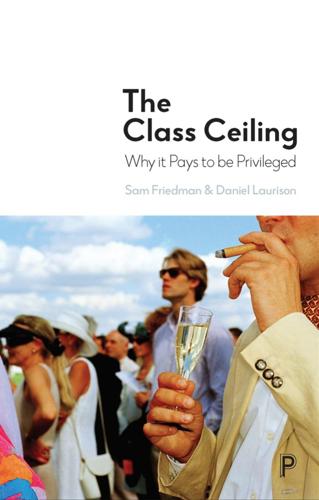
The Class Ceiling: Why It Pays to Be Privileged
by
Sam Friedman
and
Daniel Laurison
Published 28 Jan 2019
We begin our remarks here by explaining how our approach forges a critical link between contemporary mainstream mobility analysis and what is often called ‘the sociology of elite recruitment’ – a long and rich research tradition that has largely 188 Class ceilings: A new approach to social mobility been forgotten in recent decades.12 Studies of elite recruitment were central to sociological inquiry through much of the 20th century. In the 1950s and 1960s, in particular, a number of classic studies – particularly in the UK and US – investigated social mobility in a range of elite domains such as the senior civil service, the clergy, corporate management and politics.13 The key issue at stake in this work was the degree to which processes of elite recruitment enact forms of social closure,14 or how social collectives restrict access to resources and opportunities to a limited circle of the eligible.15 This issue of closure was also seen as having particular significance in terms of elite formation.
…
He eschewed the contemporary language of social mobility embraced more readily by professional service firms, feeling that architecture was now an established level-playing field. See Thaler and Sunstein (2009). The Behavioural Insights Team, also known as the Nudge Unit, is an organisation that was set up inside the Cabinet Office to apply nudge theory to UK government policy in many areas, including social mobility. Erickson’s (1996) classic study finds a similar effect in terms of the use of popular culture as a bridging tool that aids cross-class interaction and coordination in workplaces. Chapter Nine 1 2 3 4 5 6 7 8 9 10 11 12 13 APPG on Social Mobility (2012). Sandberg (2015). Bourdieu (1977, p 495, 1990a). Bourdieu (1990b, p 65).
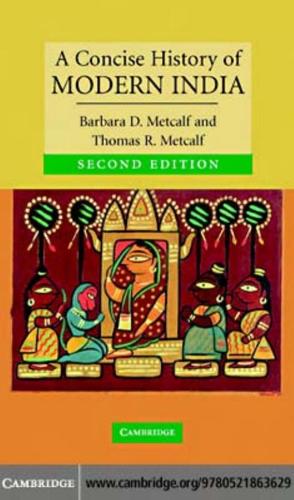
A Concise History of Modern India (Cambridge Concise Histories)
by
Barbara D. Metcalf
and
Thomas R. Metcalf
Published 27 Sep 2006
Mughal officials typically negotiated for delivery of the revenue demand with lineage heads and chieftains, homogenized in Mughal usage as zamindars (land-holders). At the bottom of this hierarchy were the peasant cultivators. Their condition under the Mughals has been a subject of controversy. In his classic study of the Mughal agrarian system, Irfan Habib concluded that the cultivating peasantry, though not owners of the land, hence unable to sell it, still possessed a hereditary right of occupancy so long as they paid the state’s revenue demand. For Habib, the result was an unceasing oppression, as their superiors sought to strip the cultivators of all surplus.
…
For the Sikhs see Richard Fox, Lions of the Punjab (Berkeley: University of California Press, 1985). For the debates between and within communities see Kenneth W. Jones, ed., Religious Controversy in British India (Albany: State University Press of New York, 1992). For the politics of ‘swadeshi’ the classic study is Sumit Sarkar, The Swadeshi Movement in Bengal, 1903–1908 (New Delhi: People’s Publishing House, 1973). For issues of gender relations see Mrinalini Sinha, Colonial Masculinity: the ‘Manly Englishman’ and the ‘Effeminate Bengali’ in the Late Nineteenth Century (Manchester: Manchester University Press, 1995); Barbara Daly Metcalf, Perfecting Women: Maulana Ashraf Ali Thanawi’s ‘Bhishti Zewar’ (Berkeley: University of California Press, 1990); Rokeya Sahkhawat Hossain, Sultana’s Dreams and Selections from the Secluded Ones, ed. and trans.
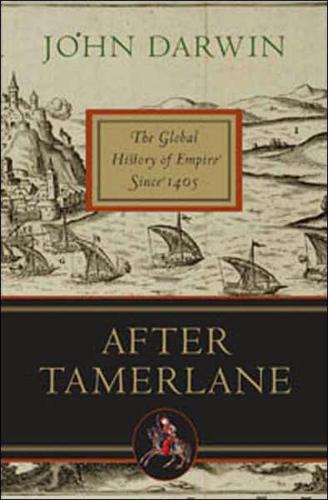
After Tamerlane: The Global History of Empire Since 1405
by
John Darwin
Published 5 Feb 2008
Russell-Wood, A World on the Move (New York, 1992). 125. See B. Lewis, Cultures in Conflict (Oxford, 1995) for Ottoman indifference to the Americas. CHAPTER 3: THE EARLY MODERN EQUILIBRIUM 1. J.B. Brebner, The Explorers of North America (pbk edn, New York, 1955), p. 255. 2. Ibid., p. 255. 3. Ibid., p. 299. 4. The classic study is J. Baker, History of Geographical Exploration (London, 1931). 5. See J. C. Beaglehole, The Life of Captain James Cook (London, 1974). 6. See R. Law, ‘ ‘‘Here is no resisting the country’’: The Realities of Power in Afro-European Relations on the West African Slave Coast’, Itinerario 17, 2 (1994), pp. 56–64. 7.
…
Dale, Indian Merchants and Eurasian Trade 1600–1750 (Cambridge, 1994). 2. P. C. Perdue, China Marches West (Cambridge, Mass., 2005). 3. For the politics of the upper Nile in the mid eighteenth century, J. J. Ewald, Soldiers, Traders and Slaves: State Formation and Economic Transformation in the Greater Nile Valley 1700–1885 (Madison, 1990). 4. The classic study is P. J. van der Merwe, The Migrant Farmer in the History of the Cape Colony, 1657–1842 (1938; Eng. trans. Athens, O., 1995). 5. W. P. Cumming, S. Hillier, D. B. Quinn and G. Williams, The Exploration of North America 1630–1776 (London, 1974), pp. 233–4. 6. Quoted in R. J. Bonney, ‘The Eighteenth Century II: The Struggle for Great Power Status and the End of the Old Fiscal Regime’, in R.
…
Wills, ‘Maritime Asia, 1500–1800: The Interactive Emergence of European Domination’, American Historical Review98, 1 (1993), pp. 83–105, is a useful survey of more recent writing. S. F. Dale, Indian Merchants and Eurasian Trade 1600–1750 (Cambridge, 1994) is a reminder of the continuing importance of overland trade. The classic study of change in the Ottoman Empire is H. A. R. Gibb and H. Bowen, Islamic Society and the West: A Study of the Impact of Western Civilisation on Moslem Culture in the Near East, vol. 1: Islamic Society in the Eighteenth Century (2pts, London, 1950, 1957). The disorder that followed the fall of the Safavids in Iran is described in J.
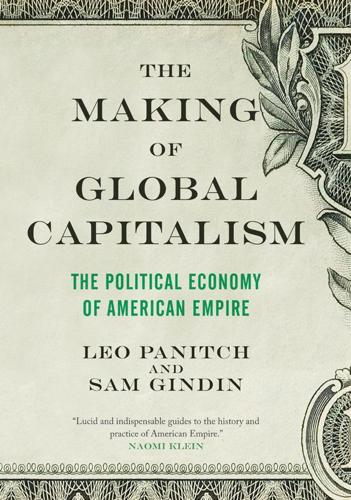
The Making of Global Capitalism
by
Leo Panitch
and
Sam Gindin
Published 8 Oct 2012
Giovanni Arrighi, The Geometry of Imperialism, London: NLB, 1978, p. 17. 15 Our argument in this respect is thus quite different from that of Niall Ferguson, who at various points adopts something close to a historical-materialist definition of the US as a liberal empire—“one that not only underwrites the free international exchange of commodities, labor and capital but also creates and upholds the conditions without which markets cannot function”—but insists, despite much of the evidence in his own book, that in practice the US “has been a surprisingly inept empire builder.” Colossus, p. 2. 16 The classic study in this vein is William Appleman Williams, The Contours of American History, Chicago: Quadrangle, 1966. Andrew J. Bacevich embraced this interpretation in his American Empire: The Realities and Consequences of US Diplomacy, Cambridge, MA: Harvard University Press, 2002, even though it fails to register the small contribution that exports made to capital accumulation relative to the domestic economy at the time, and gives vastly disproportionate weight to the significance of US capitalist expansion in Central America at a time when California was barely yet a site of US capital accumulation.
…
Hogan, “Revival and Reform: America’s Twentieth-Century Search for a New Economic Order Abroad,” Diplomatic History 8:4 (Fall 1984), p. 299. 34 For two interesting recent National Bureau of Economic Research studies that draw parallels and contrasts between the real-estate bubbles of the 1920s and early 2000s, see Eugene N. White, “Lessons from the Great American Real Estate Boom and Bust of the 1920s,” NBER Working Paper No. 15573, December 2009; and William N. Gotzmann and Frank Newman, “Securitization in the 1920s,” NBER Working Paper No. 15650, January 2010. On the stock-market bubble, the classic study remains John Kenneth Galbraith, The Great Crash: 1929 (Boston: Houghton Mifflin), especially the 1988 edition with a new introduction, “1929 and the Crash of ’87.” 35 David Gordon, “The Global Economy,” New Left Review I/168 (March–April 1988), Table 1, p. 32. 36 See Michael A. Bernstein, The Great Depression: Delayed Recovery and Economic Change in America, 1929–1939, Cambridge: CUP, 1987; and Gerard Dumenil and Dominique Levy, Capital Resurgent: Roots of the Neoliberal Revolution, Cambridge, MA: Harvard University Press, 2004, esp.
…
The NAC consisted of the secretaries of the Treasury, State and Commerce Departments and the chairmen of the Federal Reserve and Export-Import Bank. 12 On the overwhelming US influence in the constitution of the IMF, and the establishment of its loan conditionalities, see Sarah Babb, “The IMF in Sociological Perspective: A Tale of Organizational Slippage,” Studies in Comparative International Development 38: 2 (2003); Mark D. Harmon, The British Labour Government and the 1976 IMF Crisis, New York: St. Martin’s Press, 1997, esp. Chapter 1; and Fred Block’s classic study, The Origins of International Economic Disorder: A Study of United States International Monetary Policy from World War II to the Present, Berkeley: University of California Press, 1977. 13 William Y. Elliott, National Planning Association, and Woodrow Wilson Foundation, The Political Economy of American Foreign Policy: Its Concepts, Strategy, and Limits, Report of a Study Group sponsored by the Woodrow Wilson Foundation and the National Planning Association, New York: Holt & Co., 1955, p. 213. 14 A report presented to the Federal Reserve’s Board of Governors at the beginning of 1950 clearly outlined the phases through which American international economic policy passed in the early postwar years.

The Great Leveler: Violence and the History of Inequality From the Stone Age to the Twenty-First Century
by
Walter Scheidel
Published 17 Jan 2017
Santiago-Caballero 2011 documents fairly stable inequality in the province of Guadalajara in the eighteenth-century, except for a modest dip late in this period associated with land reform (see herein, chapter 12, p. 355). For falling European real wages, see herein, chapter 10, pp. 301–302. 19 France: The classic study is Le Roy Ladurie 1966, esp. 239–259, and also 263–276 for falling real wages. Portugal: Reis, Santos Pereira, and Andrade Martins n.d., esp. 27 fig. 2, 30–32, 36–37 figs. 5–6. In 1770, inequality was lower in Porto than it had been in 1700 and also lower than in 1565 Lisbon, lower in small towns and rural areas than in 1565 but higher in large towns than it had been in both 1565 and 1700 (27 fig. 2).
…
The most comprehensive data set, based on samples comprising 1.75 million households in sixteen provinces from the 1920s and 1930s, suggests that the top decile owned approximately half of all farmland. In some areas, the most affluent 10 percent or 15 percent owned not more than between a third and half of the land, a far cry from intense concentration. Indeed, in the northern village of Zhangzhuangcun, made famous by William Hinton’s classic study of land reform in the late 1940s, middling and poor peasants had already owned 70 percent of the land prior to the communist takeover.18 Yet just as in the Soviet Union, where middling farmers had been branded and exterminated as kulaks, the Chinese communist leadership was loath to let inconvenient facts get in the way of its mission.
…
Schepartz, Lynne A., Miller-Antonio, Sari, and Murphy, Joanne M. A. 2009. “Differential health among the Mycenaeans of Messenia: status, sex, and dental health at Pylos.” In Schepartz, Lynne A., Fox, Sherry C., and Bourbou, Chryssi, eds., New directions in the skeletal biology of Greece. Princeton, NJ: American School of Classical Studies at Athens, 155–174. Scheve, Kenneth, and Stasavage, David. 2009. “Institutions, partisanship, and inequality in the long run.” World Politics 61: 215–253. Scheve, Kenneth, and Stasavage, David. 2010. “The conscription of wealth: mass warfare and the demand for progressive taxation.” International Organization 64: 529–561.

The Wrecking Crew: How Conservatives Rule
by
Thomas Frank
Published 5 Aug 2008
These stories of the NAM and the House of Mirth come to us from an era when American businessmen knew where their class interests lay and acted accordingly, a conservative might sigh. But in the years after World War II, he would continue, corporations started to get soft; they started to get comfortable with big government. There was more than a little truth to this complaint. The classic study of the American corporation in the sixties, John Kenneth Galbraith’s The New Industrial State, described an organization in which shareholders had virtually no role at all and managers answered instead to government and to one another. For average citizens this arrangement made for the greatest period of mass prosperity in the nation’s history.
…
: Prizewinning Washington Post Journalists Reveal How Reality Gagged the Gingrich Revolution (New York: Touchstone, 1996), p. 89. 23. Others have made the same point. For example, the reason business failed to get its way in the 1986 corporate tax rewrite, according to Showdown at Gucci Gulch, a classic study of the industry, was the fragmented approach of the corporate lobbyists. “The total firepower of these special interests was potentially fatal to any piece of legislation, yet they never managed to form an efficient ‘killer’ coalition.” Jeffrey H. Birnbaum and Alan S. Murray, Showdown at Gucci Gulch: Lawmakers, Lobbyists, and the Unlikely Triumph of Tax Reform (New York: Random House, 1987), p. 287. 24.

The Long Boom: A Vision for the Coming Age of Prosperity
by
Peter Schwartz
,
Peter Leyden
and
Joel Hyatt
Published 18 Oct 2000
(OECD; Frankfurt, 1998) Kevin Kelly, the executive editor of Wired, expands at length on the networking metaphor in his book The New Rules of the New Economy (New York: Viking, 1998). "Education and the Wealth of Nations," The Economist (March 29, 1997), 15, 21-23. The Third Wave; AMn Toffler, The Third Wave, The Classic Study of Tomorrow (New York: Bantam Books, 1980). 306 83 83 84 87 NOTES . like the best schools: This concept is based on a conversation Leyden had with Roberto Unger, a Harvard professor, in Sao Paulo, Brazil, in the summer of 1998. Unger lays it out in his book The Future of American Pmgressivism: An Initiative for Political and Economic Reform, by Roberto Unger and Cornell West (Boston: Beacon press, 1998).
…
Things That Make Us Smart, Defending Human Attributes in the Age of the Machine, by Donald A. Norman (Reading, MA: Addison-Wesley, 1993). Norman has crusaded for designing our technologies to more seamlessly integrate into our world and, in doing so, has helped envision a future of ubiquitous computing. 320 Selected BiblioejRApky The Third Wave, the Classic Study of Tomorrow, by Alvin Toffler (New York: Bantam Books, 1980). So far ahead of its time in describing elements of the shift to the global networked society that it's still relevant. The Unbound Prometheus, by David S. Landes (New York: Cambridge University Press, 1969). Shows the power of technology as a key driving force in long-term economic change, with a particular focus on the industrial revolution.

Confronting Gun Violence in America
by
Thomas Gabor
Published 12 Sep 2016
He argued that: The relatively high death rate in gun robbery is the direct consequence of the fact that a loaded gun provides the assailant with the means to kill quickly at a distance and without much skill, strength, or danger of a counterattack. A passing whim or even the accidental twitch of a trigger finger is sufficient. Thus, a gun is intrinsically more dangerous than other types of weapons.12 In a classic study conducted in the late 1960s, Franklin Zimring, then a University of Chicago law professor, used an innovative methodology to isolate the impact of the weapon on the outcome of assaults. Reviewing Chicago Police data for 1967, he found that assaults with firearms were 56 Confronting Gun Violence in America five times as likely to result in the victim’s death as knife attacks.13 He anticipated that critics would attribute this finding to a greater intent to kill on the part of those attacking with guns, rather than the greater lethality of guns versus knives.
…
First, there is much evidence that such a clear division has no factual basis as a large body of research shows that many citizens break a wide range of laws, from cheating on taxes to committing violent acts.13 For example, a study by the Internal Revenue Service found that, in 2001, Americans shortchanged the government by $345 billion. In that year, ten million people who were required to file tax returns did not do so.14 Surveys of the general public have shown that most people violate the law at some point. One classic study of 1700 New York City adults without a criminal record revealed that 99 %admitted to at least some lawbreaking.15 Numerous surveys of high school students show widespread lawbreaking and support the notion that humanity cannot be neatly divided into “good guys” and “bad guys.”16 Even violence is not limited to a small subpopulation of “bad guys.”
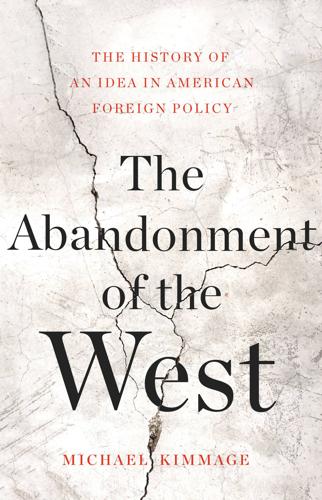
The Abandonment of the West
by
Michael Kimmage
Published 21 Apr 2020
They were as much civic statements as aesthetic monuments, and they came to define the cities that built them: the Museum of Fine Arts in Boston (1870), the Metropolitan Museum of Art in New York (1870), the Philadelphia Museum of Art (1876) and the Art Institute of Chicago (1879). Scholarly institutions followed suit: the Archaeological Institute of America (1879) and the American School of Classical Studies at Athens (1891). The ruthlessly neoclassical American School of Architecture was founded in 1894. Meanwhile, on the American stage, Shakespeare was everywhere, his characters speaking easily in the local accent. Shakespeare’s plays taught European history to those Americans for whom a college education was inaccessible.
…
Eisenhower himself studied Latin in school and had a childhood fascination with Hannibal, whose invasion of Europe Eisenhower would replicate, with amphibious landing craft instead of elephants. In his Abilene High School yearbook, Eisenhower predicted that he would become a professor of history at Yale. A graduate of West Point, Eisenhower read Clausewitz’s classic study of war three times. From 1928 to 1929, he lived in Paris, where he helped to compile a guidebook on World War I monuments. This background led to a particular interpretation of the Second World War. Fascism was a betrayal of European civilization and European liberty in Eisenhower’s view—a take on European civilization with an American tinge.

Profit Over People: Neoliberalism and Global Order
by
Noam Chomsky
Published 6 Sep 2011
UNICEF, The State of the World’s Children 1997 (Oxford University Press, 1997); UNICEF, The Progress of Nations 1996 (UNICEF House, 1996). 2. Thomas Friedman, NYT, June 2, 1992; National Security Adviser Anthony Lake, NYT, September 26, 1993; historian David Fromkin, NYT Book Review, May 4, 1997, summarizing recent work. 3. On the general picture and its historical origins, see, inter alia, Frederic Clairmont’s classic study, The Rise and Fall of Economic Liberalism (Asia Publishing House, 1960), reprinted and updated (Penang and Goa: Third World Network, 1996); and Michel Chossudovsky, The Globalisation of Poverty (Penang: Third World Network, 1997). Clairmont was an UNCTAD economist for many years; Chossudovsky is professor of economics at the University of Ottawa. 4.
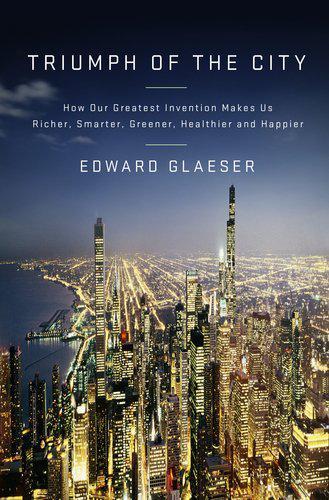
Triumph of the City: How Our Greatest Invention Makes Us Richer, Smarter, Greener, Healthier, and Happier
by
Edward L. Glaeser
Published 1 Jan 2011
This mixture of employers may not provide insurance against the global collapse of a great depression, but it sure smooths out the ordinary ups and downs of the marketplace. A one-company town like Hershey, Pennsylvania, depends on a single employer, and workers’ lives depend on whether that employer rises or falls. Not so in New York City or Rio de Janeiro, where there’s a plethora of factories in different industries. A classic study by two economists found that unemployment rates were almost 3 percent higher in the downturns of the 1970s and 1980s in places that lacked a diverse range of employers. The sheer variety of urban jobs also allows people to figure out what they can and can’t do well. For millennia, most humans toiled on farms regardless of whether or not they had any aptitude for tilling the soil.
…
There is extensive research examining the impact of incarceration on crime levels, and typically when sentence lengths double, crime rates decline by somewhere between 10 and 40 percent. Steven Levitt argues that the incapacitation effect of jails is usually more important than deterrence. One classic study of his used ACLU lawsuits against overcrowding that pushed prisons to let criminals out. After the releases, crime rates rose nearby, and he estimates that as prison populations drop by 10 percent, violent crime increases by 4 percent. Using this estimate, the increase in prison population can explain almost 40 percent of the drop in violent crime during the 1990s.
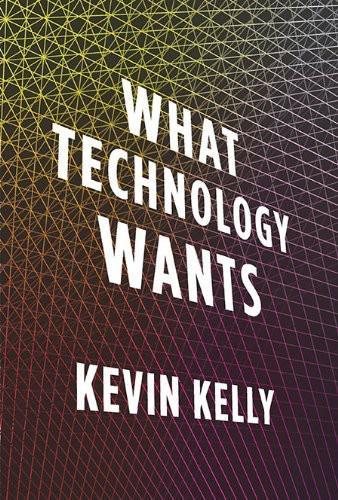
What Technology Wants
by
Kevin Kelly
Published 14 Jul 2010
For the past 30 years the conventional wisdom has been that once a person achieves a minimal standard of living, more money does not bring more happiness. If you live below a certain income threshold, increased money makes a difference, but after that, it doesn’t buy happiness. That was the conclusion of a now-classic study by Richard Easterlin in 1974. However, recent research from the Wharton School at the University of Pennsylvania shows that worldwide, affluence brings increased satisfaction. Higher income earners are happier. Citizens in higher-earning countries tend to be more satisfied on average. My interpretation of this newest research—which also matches our intuitive impressions—is that what money brings is increased choices, rather than merely increased stuff (although more stuff comes with the territory).
…
San Francisco: Sierra Club Books. 78 objects in the entire estate: Edward Waterhouse and Henry Briggs. (1970) “A declaration of the state of the colony in Virginia.” The English experience, its record in early printed books published in facsimile, no. 276. Amsterdam: Theatrum Orbis Terrarum. 78 now-classic study by Richard Easterlin in 1974: Richard A. Easterlin. (1996) Growth Triumphant. Ann Arbor: University of Michigan Press. 78 affluence brings increased satisfaction: David Leonhardt. (2008, April 16) “Maybe Money Does Buy Happiness After All.” New York Times. http://www.nytimes.com/2008/04/16/business/16leonhardt.html. 80 only a small percentage of humans lived in cities: United States Census Bureau. (2008) “Historical Estimates of World Population.” http://www.census.gov/ipc/www/worldhis.html; George Modelski. (2003) World Cities.

The Coke Machine: The Dirty Truth Behind the World's Favorite Soft Drink
by
Michael Blanding
Published 14 Jun 2010
Its standards are slightly lower on some contaminants, and it requires only weekly testing and voluntary recalls in the case of problems. And sure enough, the benzene scare over Perrier and the bromate con troversy in Britain are just the beginning of the problems with bottled water quality over the years. A classic study by the Natural Resources Defense Council of more than one thousand bottles of water in 1999 found that while most samples were safe, nearly a quarter tested above state 1 26 THE COKE MACHINE standards for bacterial or chemical contamination (only 4 percent violated weaker federal standards).
…
Page 125 set a “low priority”: Food and Drug Administration, Center for Food Safety and Applied Nutrition, “Bottled Water Regulations and the FDA,” August–September 2002. Page 125 standards are slightly lower . . . voluntary recalls: International Bottled Water As sociation, “Regulation of Bottled Water: An Overview.” Page 125 A classic study: Natural Resources Defense Council, “Bottled Water: Pure Drink or Pure Hype?” March 1999. Page 126 the American Medical Association found: Case Western Reserve University, “Study Finds Some Bottled Water Has More Bacteria and Less Fluoride Than Tap Water,” Science Daily, March 22, 2000. Page 126 a 2002 study by the University of Tuskegee: Abua Ikem et al., “Chemical Quality of Bottled Waters from Three Cities in Alabama,” Science of the Total Environment 285, nos. 1–3 (February 21, 2002), 165–175.
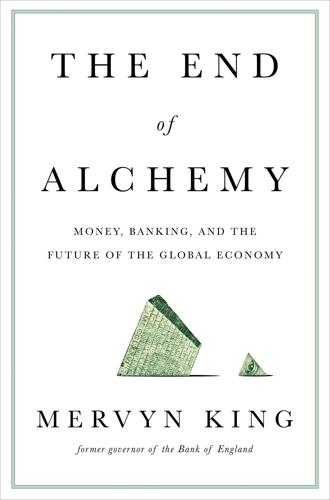
The End of Alchemy: Money, Banking and the Future of the Global Economy
by
Mervyn King
Published 3 Mar 2016
It is a little-known, though not uninteresting, fact that the Wimbledon Championships are viewed in more countries than belong to the International Monetary Fund, and they are certainly more entertaining than the Annual Meetings of the IMF. Just a stone’s throw from Centre Court is the house in which Walter Bagehot wrote his classic study of central banking, Lombard Street. Setting out the doctrine of the LOLR – lend freely against good collateral at a penalty rate to banks facing a run – it became the bible for central bankers wondering how to respond to financial crises. Ben Bernanke at the Federal Reserve, and other central bank governors, often referred to Bagehot when explaining the measures they had taken to support banks during the recent crisis.35 Although the policy is widely attributed to Bagehot, it can be traced back to Henry Thornton in An Enquiry into the Nature and Effects of the Paper Credit of Great Britain published in 1802, in which he writes: ‘if any one bank fails, a general run upon the neighbouring ones is apt to take place, which, if not checked in the beginning by pouring into the circulation a large quantity of gold, leads to very extensive mischief’.36 And even before that, in response to the first financial crisis in the United States – the panic of 1792 – Alexander Hamilton, then US Treasury Secretary, intervened to stem the crisis and in so doing was arguably the first person to discover the benefits of a LOLR.37 He certainly was the first in a long line of US Treasury Secretaries who believed in bailouts.
…
In 2008, the shock to confidence following the banking collapse led to a Keynesian downturn around the world on top of which was superimposed the adjustment to businesses and households’ earlier ‘mistake’ in assessing the sustainable level of spending. As explained above, that complicated the required policy response and led to the paradox of policy. The Great Depression in the 1930s saw violent swings of output and employment. In their classic study of the monetary history of the United States, Friedman and Schwartz argued that this was the fault of the Federal Reserve for remaining passive in the face of a sharp decline in the amount of money as banks failed and reduced lending. Out of this experience was born the view that an activist monetary and fiscal policy was essential.
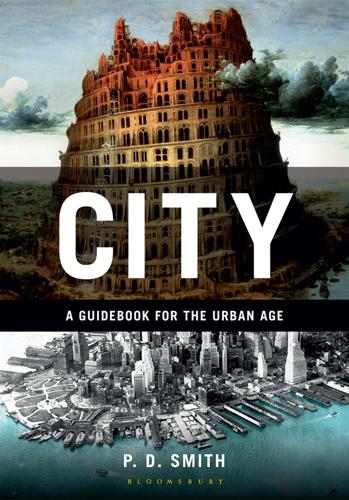
City: A Guidebook for the Urban Age
by
P. D. Smith
Published 19 Jun 2012
Remarkable though the Sumerian civilisation undoubtedly was, cities – with or without the help of the gods – did not rise out of the Mesopotamian landscape in a single generation. In Sumer, cities developed over two millennia, from c. 5500–3500 bc.4 But the city’s roots go deeper still. Archaeology is now revealing tantalising glimpses of the Neolithic origins of modern urbanism. Lewis Mumford, whose monumental work The City in History remains a classic study of urbanism, notes that ‘the embryonic structure of the city already existed in the village. House, shrine, cistern, public way, agora – not yet a specialised market – all first took form in the village.’5 As Neolithic people increasingly gained control over food production, creating surpluses that could support specialist craftsmen, their villages gradually grew into a new kind of community.
…
After all, to spend some time as a flâneur, sitting in a city centre café, watching people pass by, is to experience theatre in its purest form. Studying faces you do not know and are never likely to see again, faces from every continent, is endlessly fascinating. There is something intrinsically theatrical about urban life, one of the themes explored by Jonathan Raban in his classic study Soft City. A city can be defined as a community in which you are likely to meet strangers. You are repeatedly thrown together with unfamiliar people and you have to make snap judgements based on superficial evidence, such as how they dress or speak, or whether their smile is trustworthy or suspicious.

Bad Pharma: How Medicine Is Broken, and How We Can Fix It
by
Ben Goldacre
Published 1 Jan 2012
From the most current systematic review, there have been twenty-nine studies looking at the impact of drug rep visits.58 Seventeen of those twenty-nine studies found that doctors who see drug reps are more likely to prescribe the promoted drug (six had mixed results, the rest show no difference, and none show a drop in prescribing). Doctors who see drug reps also tend to have higher prescribing costs, and are less likely to follow best-practice prescribing guidelines. To give a flavour of this research, one classic study took forty doctors who had requested that a drug should be added to their hospital formulary – the list of locally approved drugs – in the preceding two years.59 Eighty doctors from the same places who hadn’t applied to put a drug onto the formulary were then randomly selected, and the contact these two groups had had with the industry was compared.
…
The cases which reach the public domain are only the tip of the iceberg, since there is little or no investigative work, so their exposure relies on competitors discovering and reporting a transgression, or doctors who are personally engaged in unethical behaviour reporting themselves to the authorities, which doesn’t happen often. Trips like the one described in the previous paragraph are used to influence the prescribing behaviour of doctors seeing patients like you, and spending NHS money: some with the booze, and some without, but in any case, the evidence shows that they are effective at changing behaviour. One classic study followed a group of doctors before and after an all-expenses-paid trip to a symposium in ‘a popular sunbelt vacation site’.70 Before they left, as you’d expect, the majority said they didn’t think this kind of thing would change their prescribing behaviour. After they got back, their prescription of the company’s products increased threefold.

Advances in Artificial General Intelligence: Concepts, Architectures and Algorithms: Proceedings of the Agi Workshop 2006
by
Ben Goertzel
and
Pei Wang
Published 1 Jan 2007
The Novamente system has been integrated with AGI-SIM, a 3D simulation world powered by the CrystalSpace game engine used in the Crystal Cassie embodiment of the SNePs AGI system [9]. Table 1 above shows each of our proposed developmental stages, with examples drawn from our ongoing research with the Novamente system. 1.Piaget’s Approach to Cognitive Development Jean Piaget, in his classic studies of human developmental psychology [10-15], conceived of child development in four stages, each roughly identified with an age group: infantile, preoperational, concrete operational, and formal. --Infantile: In this stage a mind develops basic world-exploration driven by instinctive actions. Reward-driven reinforcement of actions learned by imitation, simple associations between words and objects, actions and images, and the basic notions of time, space, and causality are developed.
…
To save space, some of the discussion in this paper will assume a basic familiarity with NAIE structures such as Atoms, Nodes, Links, ImplicationLinks and so forth, all of which are described in previous references and in other papers in this volume. 1.2. Cognitive Development in Simulated Androids Jean Piaget, in his classic studies of developmental psychology [8] conceived of child development as falling into four stages, each roughly identified with an age group: infantile, preoperational, concrete operational, and formal. While Piaget’s approach is out-of-date in some ways, recent researchers have still found it useful for structuring work in computational developmental psychology [9]; we have modified the Piagetan approach somewhat for usage in our own work (see [10]).
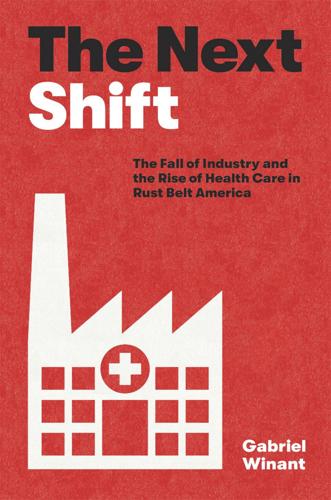
The Next Shift: The Fall of Industry and the Rise of Health Care in Rust Belt America
by
Gabriel Winant
Published 23 Mar 2021
“It was hush hush, everything,” recalled daughter Linda. “Why?”64 This silence appeared in many parts of family life but shrouded sex most of all. “Working-class wives express considerably more discomfort about what they do in the marriage bed than their middle-class sisters,” wrote Lillian Rubin in her classic study, Worlds of Pain. Sex had been almost completely forbidden as a subject of discussion for many women in adolescence and, in their telling, often remained mysterious all the way up to marriage. “I never knew about that, really, even when I was married … after I was married, because a son didn’t come until two years.
…
On the 1970s and labor history, see Jefferson R. Cowie, Stayin’ Alive: The 1970s and the Last Days of the Working Class (New York: New Press, 2010); Lane Windham, Knocking on Labor’s Door: Union Organizing in the 1970s and the Roots of the New Economic Divide (Chapel Hill: University of North Carolina Press, 2017). For the classic study of industrial job loss, see William Julius Wilson, When Work Disappears: The World of the New Urban Poor (New York: Knopf, 1996). 3. Thomas K. Glennan Jr. et al., Education, Employment, and the Economy: An Examination of Work-Related Education in Greater Pittsburgh (Santa Monica: RAND Corporation, 1989). 4.
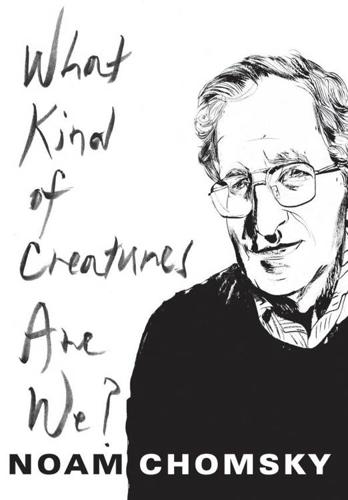
What Kind of Creatures Are We? (Columbia Themes in Philosophy)
by
Noam Chomsky
Published 7 Dec 2015
Perhaps, he thought, there might be “a most subtle spirit which pervades and lies hid in all gross bodies,” which will somehow yield a physical account of attraction and cohesion and offer some hope of rescuing an intelligible picture of the world.8 We should not lightly ignore the concerns of “the greatest and rarest genius that ever arose for the ornament and instruction of the species,” or of Galileo and Descartes, or Locke and Hume. Or of Newton’s most respected scientific contemporaries, who “unequivocally blamed [Newton] for leading science back into erroneous ways which it seemed to have definitely abandoned,” E. J. Dijksterhuis writes in the classic study of the mechanistic world picture and its collapse as a substantive doctrine. Christiaan Huygens described Newton’s principle of attraction as an “absurdity.” Gottfried Leibniz argued that Newton was reintroducing occult ideas similar to the sympathies and antipathies of the much-ridiculed scholastic science and was offering no physical explanations for phenomena of the material world.9 Newton largely agreed with his scientific contemporaries.

Designing for the Social Web
by
Joshua Porter
Published 18 May 2008
They tend to have impressive numbers that show successful behavior to others. Endowment Effect The Endowment Effect is the idea that people value something more when they feel a sense of ownership. We all know what this is like. From the moment we first compare our bicycles with our friends’ bikes, there’s something special about ours simply because it is ours. The classic study of the endowment effect involves economics. To test for the presence of the effect, researchers usually test whether or not people will insist upon selling an item for more than they can buy it for. This would show that they value it more because they own it. This quickly gets murky, however, because there are many shades of “ownership.”
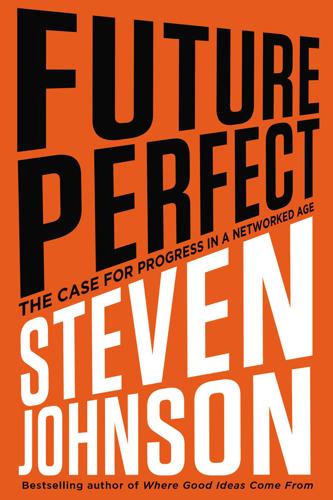
Future Perfect: The Case for Progress in a Networked Age
by
Steven Johnson
Published 14 Jul 2012
The modern system of campaign funding is an equal-opportunity offender. The peer-progressive response to this travesty is simple enough in theory. Don’t eliminate campaign financing altogether; diversify and decentralize it. A hundred years ago, during the last great crisis of political accountability, the political scientist Robert Brooks observed in his classic study of political corruption: “It is highly improbable that the question of campaign funds would ever have been raised in American politics if party contributions were habitually made by a large number of persons each giving a relatively small amount.” “A large number of persons each giving a relatively small amount.”
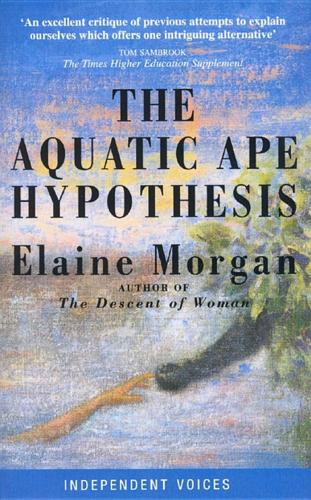
The Aquatic Ape Hypothesis
by
Elaine Morgan
Published 3 Jan 2011
Traces of ‘cutaneous moisture’ were detected on the skin of the baboon.24 Also, the rhesus monkey.25 And the macaque.26 And the chimpanzee.27 I received a (doubtless subjective) impression that a large number of primate species which had remained cool and dry throughout the first half of the twentieth century had suddenly begun sweating like stevedores. There was, understandably, a tendency to concentrate on savannah-dwelling species (with the curious exception of vervet monkeys. The last we heard of them was that they do not sweat,28 but no doubt somebody will catch up with them and make them do it). In 1980 a classic study of the patas monkey was published by Sheila A. Mahoney,29 establishing that the patas monkey sweats more profusely than any primate except man and that this is very effective in controlling its temperature. For some time I clung to a last-ditch belief that it might have been apocrine sweating; all non-human primates have apocrine glands all over their bodies.
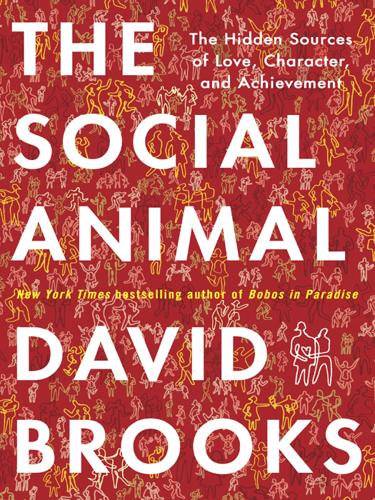
The Social Animal: The Hidden Sources of Love, Character, and Achievement
by
David Brooks
Published 8 Mar 2011
Harold’s parents kept up a constant patter when he was around. In Erica’s home, the TV was more likely to be on all the time. Erica’s mom was simply too exhausted to spend much energy on childlike conversation. Scientists have done elaborate calculations to measure the difference in word flows between middle-class and lower-class households. A classic study by Betty Hart and Todd Risley of the University of Kansas found that by the time they are four, children raised in poor families have heard 32 million fewer words than children raised in professional families. On an hourly basis, professional children heard about 487 “utterances.” Children growing up in welfare homes heard about 178.
…
People in more trusting cultures have wider stock market–participation rates. People in trusting cultures find it easier to organize and operate large corporations. Trust creates wealth. Erica noticed that there are different levels and types of trust in different communities, different schools, different dorms, and different universities. In his classic study The Moral Basis of a Backward Society, Edward Banfield noticed that peasants in southern Italy shared a great deal of trust with members of their own family, but were very suspicious of people outside their kinship boundaries. This made it hard for them to form community groups or to build companies that were bigger than the family unit.

One Less Car: Bicycling and the Politics of Automobility
by
Zack Furness
and
Zachary Mooradian Furness
Published 28 Mar 2010
suburb.”172 Cyclists, if one follows the logic in the 1890s, create this experience with each and every turn of their cranks, thereby preserving the authenticity of the natural experience itself. in doing so, they transform the bicycle from a mere transportation device into a landscaping machine. Tourism Cyclists praised the scenic landscapes of the countryside and the “tonic influences” of fresh air and sunshine, but there was a palatable tension between their longing for nature and the grounding of the city.173 Tobin’s classic study of recreational cycling posits that bicyclists of the period were not actually anti-urban, but markedly pro-urban: they never wanted to be without the conveniences of the modern city. The areas just outside the city/suburb became an extension of the urban paradigm by way of the cyclists’ roads, road maps, travel guides, and their collective desire for personal leisure and recreation.
…
One can map this disparate technical culture in the United States, at least in hindsight, by the articles and photo essays published in popular magazines like Popular Science, Mechanix Illustrated, and Modern Mechanix in the 1930s and 1940s.65 in the 1960s and 1970s, bike tinkerers played a more pronounced and pivotal role in the development of modern cycling trends and designs that one can see at work, for example, in the invention of Schwinn’s Sting-ray bicycle and its subsequent appropriation into two rather distinct techno-cultural formations: lowriding, which is a highly stylized set of practices and traditions rooted in the Chicano communities of los angeles, and BMX, which is a sport/activity pioneered by anglo youth in the beach towns and suburban sprawl of Southern California.66 Much farther north, in the woods of Marin Country, California, a slightly older group of “pot smoking peacenik misfits in flannel and denim” were similarly modifying and repurposing old Schwinn bicycles, though their designs were geared toward racing down mountains as opposed to slowly cruising city streets or jumping dirt mounds on outdoor tracks.67 With each of these innovations, bike tinkerers were engaged in a participatory technological process that effectively blurs the lines between production and consumption—a scenario not unlike the one Gene Balsley documented in his classic study of the “Hot-rod [Car] Culture.”68 Mutant bike builders toy with a similar set of technological binaries, but their interventions are actually far more radical inasmuch as they do not blur the lines between production and consumption as much as they actively erase consumption altogether: bikes are cobbled together from found, salvaged, gifted, traded, and/or scrounged (dumpstered) parts, and they are not sold when completed.

Behemoth: A History of the Factory and the Making of the Modern World
by
Joshua B. Freeman
Published 27 Feb 2018
Rather it is like Alfred Marshall’s comment about cotton spinning and weaving, that “a large factory is only several parallel smaller factories under one roof.” At Foxconn City, that was almost literally the case, with separate buildings used to assemble similar products for different companies. Beyond some point, economies of scale in production diminish or disappear. In his classic study Scale and Scope Alfred D. Chandler, Jr., after noting that at one point close to a quarter of the world’s production of kerosene came from just three Standard Oil refineries, wrote: “Imagine the diseconomies of scale that would result from placing close to one-fourth of the world’s production of shoes, textiles or lumber into three factories or mills!
…
Chaloner (Stanford, CA: Stanford University Press, 1958), 205. 44.Fitton and Wadsworth, The Strutts and the Arkwrights, 240–44; Unwin, Samuel Oldknow and the Arkwrights, 178. 45.Ure, The Philosophy of Manufactures, 150, 283–84, 312; Fitton, The Arkwrights, 146, 151; John Brown, A Memoir of Robert Blincoe, An Orphan Boy (1832), reprinted in James R. Simmons, Jr., ed., Factory Lives: Four Nineteenth-Century Working-Class Autobiographies (Peterborough, ON: Broadview Editions, 2007), 169; Cohen, “Managers and Machinery,” 25; Engels, The Condition of the Working Class in England, 174, 199; Marx, Capital, vol. 1, 422. The classic study of the change from task-oriented to time-oriented work is E. P. Thompson, “Time, Work-Discipline, and Industrial Capitalism,” Past and Present 38 (Dec. 1967), pp. 56–97. 46.Landes, Unbound Prometheus, 43; Ellen Johnston, Autobiography (1869), reprinted in Simmons, Jr., ed., Factory Lives, 308; Aspin, First Industrial Society, 92; “knocker, n.”

Transcend: The New Science of Self-Actualization
by
Scott Barry Kaufman
Published 6 Apr 2020
Lack of a reliable source of food gives rise to food insecurity, which tends to produce a specific cluster of negative behaviors: increased impulsivity and hyperactivity, increased irritability and aggression, increased anxiety, and a propensity to use rewarding narcotics.22 The evidence that food uncertainty begets this cluster of behaviors is striking and vast; it includes studies of induced food deprivation among insects, birds, and mammals (including humans); studies of people who are crash dieting and forced to undergo “therapeutic” starvation; and studies of people with clinical eating disorders. The cluster of behaviors results specifically from extreme hunger, not from preexisting personality differences. In one classic study, researchers noted that patients began the experiment compliant, pleasant, and optimistic but became increasingly impulsive and angry—to the point of engaging in physical abuse—during therapeutic starvation.23 In one instance, a “man asked for help after discharge because he was so angry when in traffic that he feared he would kill any aggravator by smashing his car into them.”24 Hunger increases the motivation to work or pay for food, while it decreases motivation to work or pay for any kind of non-food reward.25 The suite of behaviors associated with hunger is best viewed not as a system failure but as an adaptation, a response consisting of alternate strategies to improve the location, capture, and defense of food resources, even at the expense of achieving other goals.26 If the alternate strategies keep failing to achieve their aim, anxiety and hyperactivity may eventually give way to depression and lethargy.
…
As child development psychologists Nathan Fox and Jack Shonkoff explain, “Fears are not just passively forgotten over time; they must be actively unlearned.”63 While fear can be learned relatively early in life, and is influenced by both the frequency and emotional intensity of the event, unlearning can occur only after particular areas of the prefrontal cortex have properly matured, when they have enough power to regulate the amygdala and other subcortical brain areas associated with the anticipation of reward.64 The concept of learned helplessness addresses a related phenomenon. In their classic studies beginning in the late 1960s, psychologists Steven Maier and Martin Seligman found that, given enough repeated shocks, dogs eventually stop trying to escape from their situation even when they eventually are given the opportunity to do so.65 They just gave up, apparently believing that nothing they could do would matter.
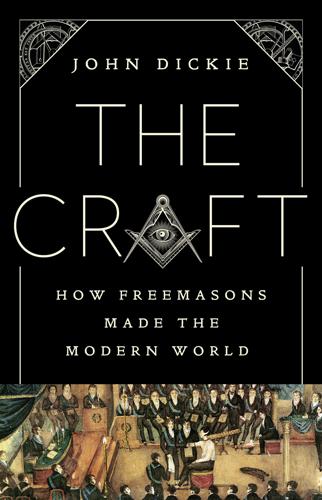
The Craft: How Freemasons Made the Modern World
by
John Dickie
Published 3 Aug 2020
Snoek (eds), Handbook of Freemasonry, Leiden, 2014. M.K. Schuchard, Restoring the Temple of Vision: Cabalistic Freemasonry and Stuart Culture, Leiden, 2002. On Hermeticism and the Scottish court, pp. 200–206. D. Stevenson, The Origins of Freemasonry: Scotland’s Century, 1590–1710, Cambridge, 1988. I have drawn heavily on this classic study throughout this chapter. For the figure of 80 per cent of Schaw Lodges still being around today, see p. 216. For that of there being thirty Schaw Lodges across Scotland by 1730, see p. 213. ‘Som secret signe delivered from hand to hand’, quoted p. 143. D. Stevenson, ‘Schaw, William (1549/50–1602)’, Oxford Dictionary of National Biography, Oxford University Press, 2004 http://www.oxforddnb.com/view/article/24799, consulted 21 February 2017.
…
Miller (eds), The Cambridge Economic History of Europe, vol. III. Economic Organization and Policies in the Middle Ages, Cambridge, 1963. E.M. Veale, ‘Craftsmen and the economy of London in the 14th century’, in R. Holt and G. Rosser (eds), The Medieval Town, 1200–1540, London, 1990. F.A. Yates, The Art of Memory, London, 1966. The classic study of the art of memory and its Renaissance adaptations. The text and translation of the Regius Poem are available at http://www.freemasons-freemasonry.com/regius.html, consulted 3 April 2017. Chapter 4: London: At the Sign of the Goose and Gridiron J. Anderson, The constitutions of the Freemasons: Containing the history, charges, regulations, etc. of that… fraternity, London, 1723.

Company: A Short History of a Revolutionary Idea
by
John Micklethwait
and
Adrian Wooldridge
Published 4 Mar 2003
Antiglobalization protesters rioted in Seattle, Washington, and London to protest against the awesome power of multinationals, raging against companies like McDonald’s, which by the mid-1990s was serving 3 million burgers a day in one hundred countries. Raymond Vernon, the author of one of the classic studies of multinationals, Sovereignty at Bay, used his last book, In the Hurricane’s Eye (1998), to predict a gloomy future for multinationals, as people turned against them. Had they really become so powerful? Businesspeople were partly to blame for the notion. They had long dreamed, as the chairman of Dow Chemical once put it, “of buying an island owned by no nation and of establishing the world headquarters of the Dow company on the truly neutral ground of such an island, beholden to no nation or society.”

Makeshift Metropolis: Ideas About Cities
by
Witold Rybczynski
Published 9 Nov 2010
Edward Bellamy, Looking Backward, 2000–1887, ed. John L. Thomas (Cambridge, Mass.: Harvard University Press, 1967), 115. 26. Robert Beevers, The Garden City Utopia: A Critical Biography of Ebenezer Howard (New York: St. Martin’s Press, 1988), 70. 27. Unwin was greatly influenced by the Viennese city planner Camillo Sitte, author of the classic study The Art of Building Cites: City building according to artistic fundamentals, trans. Charles T. Stewart (Westport, Conn.: Hyperion Press, 1991; orig. pub. in English 1945; orig. pub. 1889). See also Walter L. Creese, “An Extended Planning Progression,” introduction to Raymond Unwin, Town Planning in Practice: An Introduction to the Art of Designing Cities and Suburbs (New York: Princeton Architectural Press, 1994; orig. pub. 1909), xii-xiii. 28.

Why Women Have Better Sex Under Socialism: And Other Arguments for Economic Independence
by
Kristen R. Ghodsee
Published 20 Nov 2018
The public sector has historically offered jobs to religious minorities, people of color, and women who faced discrimination in the private sector, creating career opportunities for those disadvantaged by race or gender in competitive labor markets. Cuts in public sector employment after the Great Recession hit African American women particularly hard, forcing them to seek work in private companies, where perceptions of the value of their labor are more influenced by the color of their skin and their gender. A classic study showing the deep persistence of gender bias involved auditions for symphony orchestras. Women musicians were sorely underrepresented in professional orchestras before the introduction of an audition process whereby musicians played their instruments behind screens that separated them from the judges.
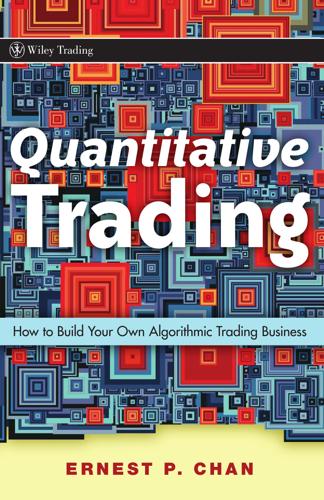
Quantitative Trading: How to Build Your Own Algorithmic Trading Business
by
Ernie Chan
Published 17 Nov 2008
Even Renaissance Technologies Corporation, arguably the most successful quantitative hedge fund of all time, lost 8.7 percent in the first half of August, though it later recovered most of it. Not only is the magnitude of the loss astounding, but the widespread nature of it was causing great concern in the financial community. Strangest of all, few of these funds hold any mortgage-backed securities at all, ostensibly the root cause of the panic. It therefore became a classic study of financial contagion as propagated by hedge funds. This kind of contagion occurs because a large loss by one hedge fund causes it to sell off some large positions that it holds (whether or not these are the positions that cause the loss in the first place). This selling causes the prices of the securities to drop (or rise in the case of short positions).

Amusing Ourselves to Death: Public Discourse in the Age of Show Business
by
Neil Postman
and
Jeff Riggenbach Ph.
Published 1 Apr 2013
If we may take advertising to be the voice of commerce, then its history tells very clearly that in the eighteenth and nineteenth centuries those with products to sell took their customers to be not unlike Daniel Webster: they assumed that potential buyers were literate, rational, analytical. Indeed, the history of newspaper advertising in America may be considered, all by itself, as a metaphor of the descent of the typographic mind, beginning, as it does, with reason, and ending, as it does, with entertainment. In Frank Presbrey’s classic study The History and Development of Advertising, he discusses the decline of typography, dating its demise in the late 1860’s and early 1870’s. He refers to the period before then as the “dark ages” of typographical display.19 The dark ages to which he refers began in 1704 when the first paid advertisements appeared in an American newspaper, The Boston News-Letter.
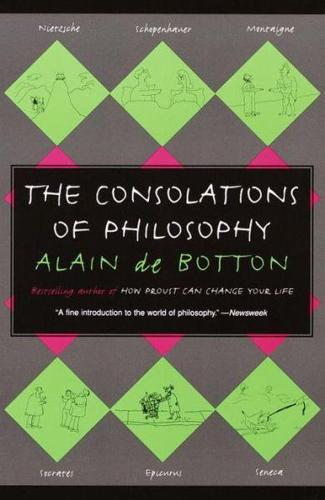
The Consolations of Philosophy
by
Alain de Botton
Published 1 Jan 2000
Picture Acknowledgments The photographs in the book are used by permission and courtesy of the following: Aarhus Kunstmuseum: 20.2; The Advertising Archives: 10.2 (DC Comics): 22.4; AKG London: (Musée du Louvre, Paris/Erich Lessing) 12.4, 19.4 (National Research and Memorial Centre for Classical German Literature, Weimar) 22.1, 22.2 (Neue Pinakothek, Munich) 22.5, 22.7 (University Library, Jena) 22.8; Albertina, Vienna: 22.17; Archivi Alinari, Florence: 22.24; American School of Classical Studies at Athens: Agora Excavations: 4.4; The Ancient Art & Architecture Collection/© Ronald Sheridan: 13.10; The Art Archive: 12.1 (detail) 14.3, 16.1, 17.9; Associated Press: 13.7; G. Bell and Sons Ltd, from A History of French Architecture by Sir Reginald Blomfield (from the French Cours d’Architecture, 1921, J.

Why Liberalism Failed
by
Patrick J. Deneen
Published 9 Jan 2018
The imposition of the liberal order is accompanied by the legitimizing myth that its form was freely chosen by unencumbered individuals; that it was the consequence of extensive state intervention is ignored by all but a few scholars. Few works have made this intervention clearer than the historian and sociologist Karl Polanyi’s classic study The Great Transformation.6 Polanyi describes how economic arrangements were separated from particular cultural and religious contexts in which those arrangements were understood to serve moral ends—and posits that these contexts limited not only actions but even prevented the understanding that economic actions could be properly undertaken to advance individual interests and priorities.
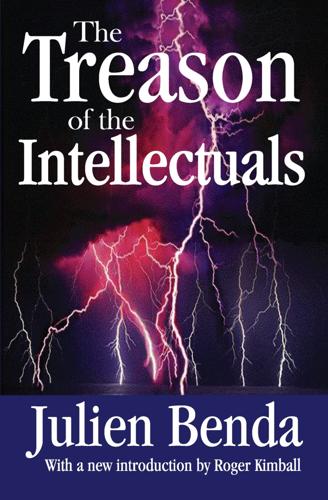
The Treason of the Intellectuals
by
Julien Benda
Published 14 Oct 2006
The humanities, as the word implies, have always taught the cult of humanity in its universal aspect, at least since the time of the Portico.129 The decline of Graeco-Roman culture in Barrès and his literary generation, in comparison with that of Taine, Renan, Hugo, Michelet, even Anatole France and Bourget, is undeniable. Still less will it be denied that this decline is considerably more noticeable in Barrès’s successors. However, this decline does not prevent these writers from extolling classical studies, but they do not do this with the idea of reviving the cult for what is human in its universal aspect, but on the contrary to strengthen the “French” mind, or at least the “Latin” mind, in the grasp of its own roots, in consciousness of itself as distinct from other minds. Notice that this decline of classical culture in the French writers coincides with the discovery of the great German realists, Hegel and especially Nietzsche, whose genius had the more effect on these Frenchmen because their lack of classical discipline deprived them of the one real barrier which can be opposed to that genius.130 Among the causes of this new attitude among men of letters I must point to their thirst for sensations, their need to experience things, which in recent times have grown stronger and have caused them to adopt a political attitude which gave them emotions and sensations.
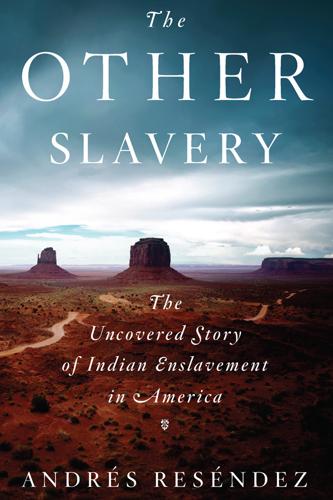
The Other Slavery: The Uncovered Story of Indian Enslavement in America
by
Andrés Reséndez
Published 11 Apr 2016
Stern, Peru’s Indian Peoples and the Challenge of Spanish Conquest: Huamanga to 1640 (Madison: University of Wisconsin Press, 1993); and William B. Taylor, Landlord and Peasant in Colonial Oaxaca (Stanford, CA: Stanford University Press, 1972). 5. For a broad comparative discussion, see Gross and de la Fuente, “Slaves, Free Blacks, and Race.” Frank Tannenbaum’s classic study Slave and Citizen was among the first to draw attention to the significant differences between the legal regimes that emerged in the Spanish and Portuguese colonies—which he believed were relatively benign and conducive to freedom—and the harsher regimes prevalent in British America. Tannenbaum, Slave and Citizen (Boston: Beacon Press, 1946).
…
Altman, The War for Mexico’s West, chap. 5; Carlos Sempat Assadourian, Zacatecas: Conquista y transformación de la frontera en el siglo XVI: Minas de plata, guerra, y evangelización (Mexico City: El Colegio de México, 2008), passim. 36. Sempat Assadourian, Zacatecas, 39–49; Zavala, Los esclavos indios en Nueva España, 110. 37. The classic study of Zacatecas is Peter J. Bakewell, Silver Mining and Society in Colonial Mexico: Zacatecas, 1546–1700 (New York: Cambridge University Press, 1971), chap. 1. See also Sempat Assadourian, Zacatecas, chap. 2. 38. “Borrador de la instrucción del Príncipe don Felipe a don Luis de Velasco, virrey de Nueva España, acerca de la libertad y buen tratamiento de los naturales que trabajaban en las minas, estancias, e ingenios, 1552,” in Mariano Cuevas, ed., Documentos inéditos del siglo XVI para la historia de México (Mexico City: Porrúa, 1975), 170–175.

To Save Everything, Click Here: The Folly of Technological Solutionism
by
Evgeny Morozov
Published 15 Nov 2013
It would be a mistake for transparency enthusiasts, of which there are quite a few in geek circles, to disregard the subtle differences and indeterminacies that politics introduces into their magnificent and abstract schemes to improve the world. But it’s not just politics that suffers once transparency is recast from an instrumental value into an intrinsic one; many other institutions have experienced similar pressures. Michael Power, in his classic study on the rise of “the audit society,” points to two troubling consequences of auditing—in the context not just of corporations but of public institutions also—both of which are likely to accompany the quest for more transparency. The first, which Power dubs “decoupling,” can be filed under the “perversity” part of Albert Hirschman’s “perversity-futility-jeopardy” triad.
…
Hibbing and Elizabeth Theiss-Morse, Stealth Democracy: Americans’ Beliefs about How Government Should Work (Cambridge: Cambridge University Press, 2002). 83 “we should not look to new ways”: ibid., 213. 84 “the difference between a 100 percent attendance record”: ibid., 212–213. 84 “members would be doing something much more beneficial”: ibid., 213. 84 Michael Power, in his classic study: Michael Power, The Audit Society: Rituals of Verification (Oxford: Oxford University Press, 1999). 85 “books and auditing of accounts”: Jean-Jacques Rousseau, Discourse on Inequality (Whitefish, MT: Kessinger Publishing, 2004), 71. 86 “the information-processing imperative”: Julie E. Cohen, Configuring the Networked Self: Law, Code, and the Play of Everyday Practice (New Haven, CT: Yale University Press, 2012), 117. 86 “to organize the world’s information and make it universally accessible and useful”: Google, “Company Overview,” http://www.google.com/about/company. 86 “discursive shift. . . towards economics”: Tony Judt and Timothy Snyder, Thinking the Twentieth Century: Intellectuals and Politics in the Twentieth Century (London: William Heinemann, 2012), 361. 86 “Intellectuals don’t ask if something is right or wrong”: ibid., 361. 87 “The reason they do this is not necessarily”: ibid., 361. 87 for assuming that “a set of indices”: Haridimos Tsoukas, “The Tyranny of Light: The Temptations and the Paradoxes of the Information Society,” Futures 29, no. 9 (November 1997): 827–843. 87 “at its core. . . transparency theory”: Mark Fenster, “The Opacity of Transparency,” Iowa Law Review 91 (2005): 885–949. 88 “the modern government’s sprawling, often incoherent bureaucracy”: ibid., 915. 88 “any ‘message’ that government information comprises”: ibid., 922. 88 As linguist George Lakoff argued: quoted in Tsoukas, “The Tyranny of Light,” 830. 88 “To reduce something to allegedly objective information”: ibid., 830. 89 “open tends toward obfuscation”: Christopher M.
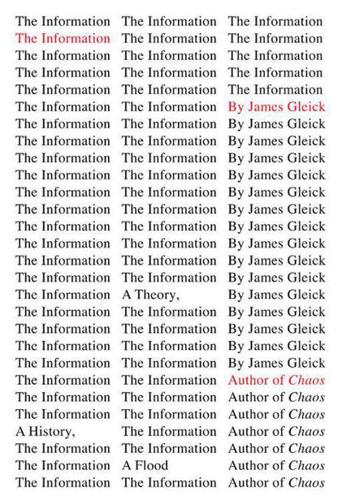
The Information: A History, a Theory, a Flood
by
James Gleick
Published 1 Mar 2011
Smith, ed., The Boole–De Morgan Correspondence 1842–1864 (Oxford: Clarendon Press, 1982), 25. ♦ “NOW SOME ZS ARE NOT XS”: De Morgan to Boole, draft, not sent, ibid., 27. ♦ “IT IS SIMPLY A FACT”: quoted by Samuel Neil, “The Late George Boole, LL.D., D.C.L.” (1865), in James Gasser, ed., A Boole Anthology: Recent and Classical Studies in the Logic of George Boole (Dordrecht, Netherlands: Kluwer Academic, 2000), 16. ♦ “THE RESPECTIVE INTERPRETATION OF THE SYMBOLS 0 AND 1”: George Boole, An Investigation of the Laws of Thought, on Which Are Founded the Mathematical Theories of Logic and Probabilities (London: Walton & Maberly, 1854), 34
…
Scientific American 193, no. 10 (October 1955): 70. Gardner, Martin. Hexaflexagons and Other Mathematical Diversions. Chicago: University of Chicago Press, 1959. ———. Martin Gardner’s Sixth Book of Mathematical Games from Scientific American. San Francisco: W. H. Freeman, 1963. Gasser, James, ed. A Boole Anthology: Recent and Classical Studies in the Logic of George Boole. Dordrecht, Netherlands: Kluwer, 2000. Gell-Mann, Murray, and Seth Lloyd. “Information Measures, Effective Complexity, and Total Information.” Complexity 2, no. 1 (1996): 44–52. Genosko, Gary. Marshall McLuhan: Critical Evaluations in Cultural Theory. Abingdon, U.K.: Routledge, 2005.
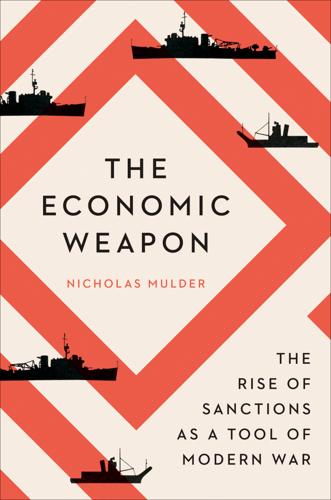
The Economic Weapon
by
Nicholas Mulder
Published 15 Mar 2021
The continuation of the blockade against Germany and Austria-Hungary has not escaped the attention of historians.3 Humanitarian efforts to feed Europeans in this period have also been well documented.4 Less appreciated are the distinct class politics of blockade. The economic campaign against Bolshevism was a form of counterrevolution on the cheap and at a distance. Classic studies by historians Arno Mayer and Charles Maier show how European elites regained their grip on power after the upheaval of the wartime years and the radical groundswell of the Russian Revolution.5 Material pressure against civilian populations deserves to be seen as an essential tool in this stabilization of the bourgeois social order in Europe.
…
Suda Lorena Bane and Ralph Haswell Lutz, eds., The Organization of American Relief in Europe, 1918–1919 (Stanford, CA: Stanford University Press, 1943); Bruno Cabanes, The Great War and the Origins of Humanitarianism, 1918–1924 (Cambridge: Cambridge University Press, 2014), pp. 189–247; Elisabeth Piller, “German Child Distress, American Humanitarian Aid and Revisionist Politics, 1918–1924,” Journal of Contemporary History 51, no. 3 (2016): 453–486. 5. The best study of the 1919 settlement as a conservative project of stabilization remains Arno Mayer, Politics and Diplomacy of Peacemaking: Containment and Counter-Revolution at Versailles, 1918–1919 (New York: Knopf, 1967); the classic study of the domestic politics and political economy of restoration is Charles S. Maier, Recasting Bourgeois Europe: Stabilization in France, Germany, and Italy in the Decade after World War I (Princeton, NJ: Princeton University Press, 1975). 6. Georges-Henri Soutou, “1918: La fin de la première guerre mondiale?”
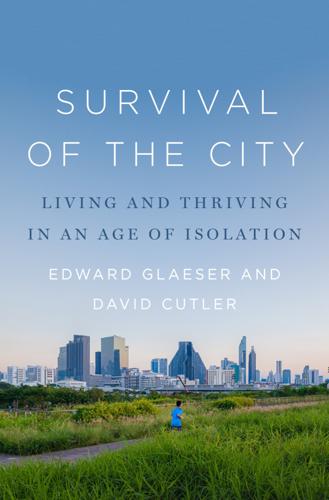
The Survival of the City: Human Flourishing in an Age of Isolation
by
Edward Glaeser
and
David Cutler
Published 14 Sep 2021
A meta-analysis of prison sentencing studies (funded by Open Philanthropy, a foundation dedicated to prison reform) “calls even those mild estimates into question.” The deterrence impact of longer sentences seems only moderately beneficial at best. The case is stronger for the connection between incapacitation and crime. A classic study by economist Steven Levitt of the University of Chicago looked at the timing of American Civil Liberties Union (ACLU) lawsuits about prison overcrowding. These lawsuits led to the release of prisoners, and those releases were followed by increases in crime nearby. Analysts who have followed up Levitt’s methodology estimate that a 10 percent increase in the number of prisoners released led to a 4.5 percent increase in the amount of violent crime and a 2.5 percent increase in the amount of property crime.
…
Between 2016 and 2019: Derived from New York City Police Department, “Historical New York City Crime Data.” One recent study: Helland and Tabarrok, “Does Three Strikes Deter?: A Nonparametric Estimation.” Their estimate is: Helland and Tabarrok. “calls even those mild”: Roodman, “The Impacts of Incarceration on Crime,” 5. A classic study: Levitt, “The Effect of Prison Population Size on Crime Rates: Evidence from Prison Overcrowding Litigation.” 4.5 percent increase: Roodman, 5. COVID-19-related prison releases: Rector, “Surge in South L.A. Bloodshed Tied to Gunfire from High-Capacity Firearms, Gang Feuds.” raise the odds of rearrest: Roodman.

Nexus: A Brief History of Information Networks From the Stone Age to AI
by
Yuval Noah Harari
Published 9 Sep 2024
For a more detailed discussion, see Yuval Noah Harari, Sapiens: A Brief History of Humankind (New York: HarperCollins, 2015), chap. 2; David Graeber and David Wengrow, The Dawn of Everything: A New History of Humanity (New York: Farrar, Straus and Giroux, 2021), chap. 3; and Joseph Henrich, The Weirdest People in the World (New York: Farrar, Straus and Giroux, 2020), chap. 3. A classic study of how religious stories and rituals produce large-scale cooperation is Donald Tuzin’s study of Ilahita. While most of its neighboring communities in New Guinea numbered a few hundred people, the complex religious beliefs and practices of Ilahita succeeded in uniting thirty-nine clans numbering about twenty-five hundred people altogether.
…
Elections Project, accessed Jan. 2, 2024, www.electproject.org/national-1789-present; Renalia DuBose, “Voter Suppression: A Recent Phenomenon or an American Legacy?,” University of Baltimore Law Review 50, no. 2 (2021), article 2. 58. Much of the following discussion of totalitarianism relies on classical studies of the phenomenon: Hannah Arendt, The Origins of Totalitarianism (New York: Harcourt, 1973); Carl Joachim Friedrich and Zbigniew Brzezinski, Totalitarian Dictatorship and Autocracy (Cambridge, Mass.: Harvard University Press, 1965); Karl R. Popper, The Open Society and Its Enemies (Princeton, N.J.: Princeton University Press, 1945); Juan José Linz, Totalitarian and Authoritarian Regimes (Boulder, Colo.: Lynne Rienner, 1975).

The Charming Quirks of Others: An Isabel Dalhousie Novel
by
Alexander McCall Smith
Published 11 Oct 2010
“She created a marvellous garden, which I’m afraid I’ve rather let run to seed. But one can’t do everything—or anything, sometimes.” He invited her in, leading her down a book-lined corridor into a large drawing room that faced, unusually, the rear garden. There were paintings on the walls, all of them conventional: landscapes, a study of birds in flight, a small classical study, an old framed map of the county of Midlothian. And there, above the white marble fireplace, was her Raeburn, the one that she had examined with Guy Peploe and that she thought he would be bidding for on her behalf next month. She stood still for a moment, wondering whether she was mistaken. Was it a copy?

Pity the Billionaire: The Unexpected Resurgence of the American Right
by
Thomas Frank
Published 16 Aug 2011
Despite the smug banker quoted in the Guardian Weekly story, ideology hasn’t ended in the Great Recession; ideology has triumphed. Intransigent Idealism “I don’t read books,” a Tea Party activist once told the historian Jill Lepore. “I read blogs.”3 The line struck a chord with me. It brought to mind a book that I had been reading of late, Part of Our Time, Murray Kempton’s classic study of “the committed and the dedicated” during the thirties—Communists and fellow travelers, mainly—whose mind-set seemed identical to the one I saw among the blog-reading rebels of the contemporary Right.4 Kempton brought the matter into sharpest focus in a biographical sketch of J. B. Matthews, a onetime radical who turned red hunter in the fifties, performing both roles with the same evangelical zeal, the same intolerance for ambiguity, the same “singular quality always to know in a flash without ever having learned.”5 “Matthews saw what he wished to see, and he had no need of books for knowledge,” Kempton writes.
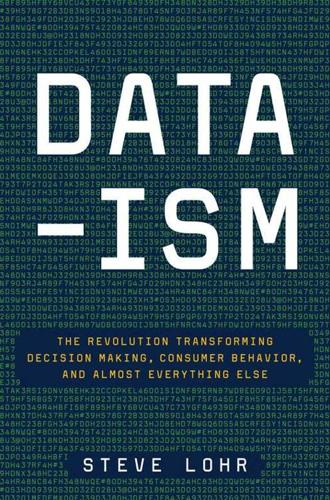
Data-Ism: The Revolution Transforming Decision Making, Consumer Behavior, and Almost Everything Else
by
Steve Lohr
Published 10 Mar 2015
Brynjolfsson, a technology optimist, has two answers for the skeptics. First, he argues, the official statistics do not fully capture the benefits of digital innovation. And second, he says that in technology, revolutions take time. To explain, Brynjolfsson points to his own work on technology and work practices, and to the research of others including a classic study by Paul David, an economic historian at Stanford. In his 1990 paper, “The Dynamo and the Computer: An Historical Perspective on the Modern Productivity Paradox,” David observed that the electric motor was introduced in the early 1880s but did not generate discernible productivity gains until the 1920s.
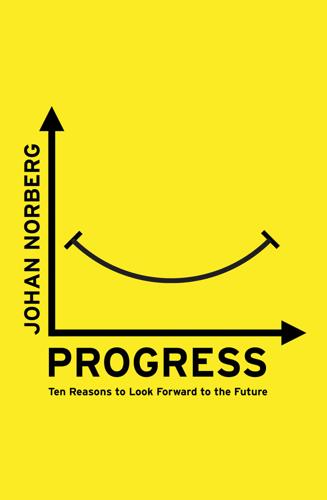
Progress: Ten Reasons to Look Forward to the Future
by
Johan Norberg
Published 31 Aug 2016
Many have argued against the Lipset hypothesis by pointing to examples of poor democracies, like India, and rich authoritarian states, like Singapore. But even though there are outliers, tonnes of studies and cross-sectional and time-series data from many countries and years reveal a very strong correlation between wealth and democracy. One classic study found that ‘the level of economic development, as measured by per capita income, is by far the best predictor of political regimes’.15 The most important factor is not that economic development directly results in democratization, but that when a regime changes for whatever reason – it can be the death of the dictator, popular protests or anything else – democracy is far more likely to survive in a fairly wealthy country.
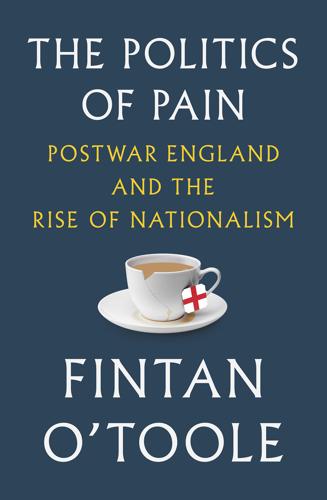
The Politics of Pain
by
Fintan O'Toole
Published 2 Oct 2019
FINTAN O’TOOLE THE POLITICS OF PAIN POSTWAR ENGLAND AND THE RISE OF NATIONALISM Contents Preface: The Importance of Not Being Earnest Introduction 1.The Pleasures of Self-Pity 2.SS-GB: Life in Occupied England 3.The Triumph of the Light Brigade 4.A Pint of Beer, a Packet of Prawn Cocktail Flavour Crisps and Two Ounces of Dog Shit, Please 5.Sadopopulism 6.The Twilight of the Gods: English Dreamtime 7.The Sore Tooth and the Broken Umbrella 8.Postscript: A Special Place in Hell Notes To Bjørn Oisín and all the new Europeans The fact is that, in spite of the way we behave, we cannot any longer feel that the infliction of pain is merely funny GEORGE ORWELL, 1944 PREFACE THE IMPORTANCE OF NOT BEING EARNEST In her classic study, Watching the English, published in 2004 and updated a decade later, the social anthropologist Kate Fox wrote of her compatriots that ‘the kind of hand-on-heart, gushing earnestness and pompous, Bible-thumping solemnity favoured by almost all American politicians would never win a single vote in this country’.1 The English, she claimed, watched such American demagogues on the TV news ‘with a kind of smugly detached amusement, wondering how the cheering crowds can possibly be so credulous as to fall for this sort of nonsense . . . such shamefully earnest platitudes, in such ludicrously solemn tones?’
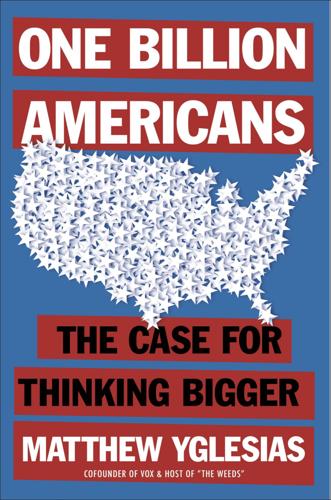
One Billion Americans: The Case for Thinking Bigger
by
Matthew Yglesias
Published 14 Sep 2020
It wouldn’t make sense to have a city’s fire or police department close up shop for months at a time just because wearing the uniforms in the summer heat is uncomfortable. To the extent that this oddity has figured in the policy conversation, the main topic of interest has been what’s known as summer learning loss—the idea that kids actually regress in their academic competencies over the summer months. The classic study on this, done way back in 1996, found that summer vacation corresponds to a decline in achievement roughly equivalent to one month of in-school time. The decline was bigger for math than for reading because kids at all points of the income spectrum experienced math decline, whereas reading loss was seen only in low-income students.* Some more recent research has called those findings into question.
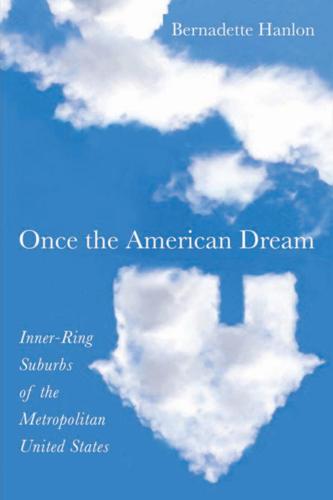
Once the American Dream: Inner-Ring Suburbs of the Metropolitan United States
by
Bernadette Hanlon
Published 18 Dec 2009
Some evolved around the mid-nineteenth century, when industry first located in the outskirts of large cities (Lewis 2004). At this time, heavy industry located in fringe areas of such cities as Chicago, Pittsburgh, Philadelphia, Detroit, Boston, Los Angeles, St. Louis, Cleveland, and others. In his classic study of streetcar suburbs, Samuel Warner (1962) notes that by Different Types of Inner-Ring Suburbs / 123 1900, the Boston metropolitan area was split between the central city and a suburban ring of industrial subcenters as well as residential homes. Old textile suburbs of Philadelphia emerged around the same time, as did the steel-manufacturing suburbs of Chicago.
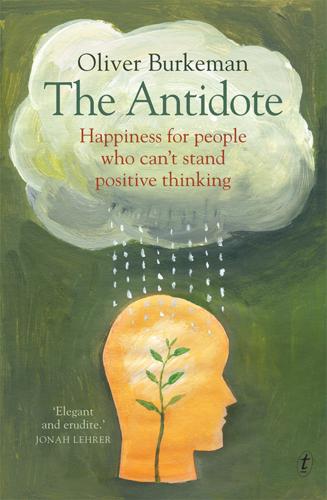
The Antidote: Happiness for People Who Can't Stand Positive Thinking
by
Oliver Burkeman
Published 1 Jul 2012
‘doing the presumably sensible thing is counterproductive’: Steven Hayes, ‘Hello Darkness: Discovering Our Values by Confronting Our Fears’, Psychotherapy Networker 31 (2007): 46-52. 2: What Would Seneca Do? a speech he gave to executives of the investment bank Merrill Lynch: See Jeanne Pugh, ‘The Eternal Optimist’, St Petersburg Times, 8 June 1985. Healthy and happy people … generally have a less accurate, overly optimistic grasp: The classic study on ‘depressive realism’ is Lauren Alloy and Lyn Abramson, ‘Judgment of Contingency in Depressed and Nondepressed Students: Sadder but Wiser?’, Journal of Experimental Psychology 108 (1979): 441-85. a particularly high-achieving week at work: Heather Barry Kappes and Gabriele Oettingen, ‘Positive Fantasies about Idealized Futures Sap Energies’, Journal of Experimental and Social Psychology 47 (2011): 719-29.

Rendezvous With Rama
by
Arthur C. Clarke
Published 27 Jun 1973
asked the Hermian Ambassador quickly. 'What's that?’ 'It's a crackpot movement,' explained Sir Robert, with as much embarrassment as a diplomat was ever likely to show, 'which is convinced that Rama is a grave potential danger. A box that shouldn't be opened, you know.' He doubted if the Hermian did know: classical studies were not encouraged on Mercury. 'Pandora - paranoia,' snorted Conrad Taylor. 'Oh, of course, such things are conceivable, but why should any intelligent race want to play childish tricks?’ 'Well, even ruling out such unpleasantness,' Sir Robert continued, 'we still have the much more ominous possibility of an active, inhabited Rama.

The Other Side of Happiness: Embracing a More Fearless Approach to Living
by
Brock Bastian
Published 25 Jan 2018
Pain, fear, stress and even humiliation are central components of group initiation rites (think of the many hazing ceremonies conducted in American college fraternities over the years), and such negative experiences have long been incorporated into many rituals around the world, throughout history. This raises the question, what are these painful experiences achieving, and why have these kinds of rituals and group practices persisted over time? A classic study by Harold Gerard and Grover Mathewson from the University of California in 1966 demonstrated how pain may enhance the value of group membership.14 As part of the study, they invited college women to listen to a group discussion on sex. The catch was that to gain permission to hear the group discussion, the women were told either (a) they had to undergo a mild electric shock, or (b) they had to undergo a strong electric shock – and this time the experimenters really did electrocute their volunteers.
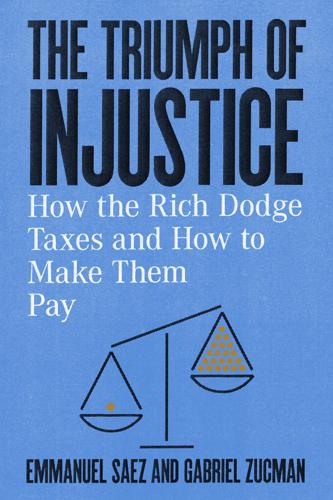
The Triumph of Injustice: How the Rich Dodge Taxes and How to Make Them Pay
by
Emmanuel Saez
and
Gabriel Zucman
Published 14 Oct 2019
The maximum tax rate was 25% from 1942 to 1964, the era of quasi-confiscatory top marginal income tax rates. 8. Oblivious to this social norm, economists could not understand why firms were paying dividends and dubbed this the “dividend puzzle” (see e.g., Black, 1976). 9. Hall (1951), p. 54. Lewellen (1968), the classic study on executive compensation from the 1960s, entirely ignores company perks, perceived as negligible. 10. A long article in Fortune in 1955 described how top executives live (Ducan-Norton, 1955). The only mention of company perks is the following statement: “A common practice is for a company president, on his way to New York in the company plane, to fill the empty seats with family and friends.
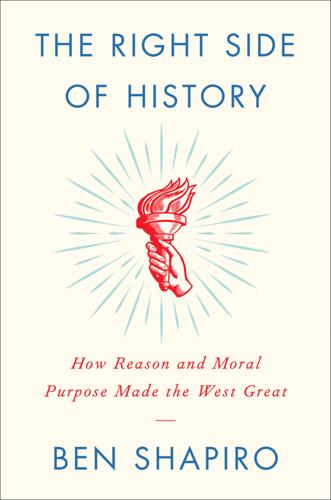
The Right Side of History
by
Ben Shapiro
Published 11 Feb 2019
There will not be different laws at Rome and at Athens, or different laws now and in the future, but one eternal and unchangeable law will be valid for all nations and all times, and there will be one master and ruler, that is, God, over us all, for he is the author of this law, its promulgator, and its enforcing judge.22 Cicero’s elegant defense of what he termed a mixed system—a system of shared governmental responsibility, in which citizens have a share in control of their government, checked by a monarch, checked in turn by an aristocracy—was treasured by the American Founding Fathers.23 This system, Cicero thought, would ensure the prevention of tyranny and the violation of virtue. WHAT ATHENS TELLS US . . . AND WHAT IT DOESN’T Yes, classical studies are still necessary. The college students who fulminate against them are undercutting the very foundations upon which they stand—they’re ignoring reason, science, and democracy. We’ll see later in this book just how that abandonment undercuts the strength of the West. But there is no question that without Athens, the West simply would not exist as it is—and that the world would suffer greatly for that fact.

Misogynies
by
Joan Smith
Published 10 Mar 1992
IV, Part I, Quaest XCII, art. 1, quoted ibid., p. 62. 10 Richard Rolle, The Fire of Love, translated into modern English by Clifton Wolters, Penguin, 1972, p. 136. 11 The Oxford Dictionary of Quotations, OUP, 1979. p. 275, No. 10. 12 Sunday Telegraph, 22 February 1987. 13 Daily Telegraph, 27 February 1987. 14 Ibid. 15 Sunday Times, 22 December 1985. 16 Ibid. 17 Independent, 12 April 1988. 18 1 Corinthians 7:10-11. 19 Genesis 2:25. 20 Genesis 3:7. 21 Genesis 3:16. 22 Genesis 3:17-19. 23 All quotations from On Female Dress (De cultu feminarum), Tertullian, Writings, Vol. 1 (from the Ante-Nicene Christian Library Series), T. and T. Clark, Edinburgh, 1869, pp. 304-5. 24 William P. Le Saint, op. cit., p. 57. 25 Jerome, Letters, quoted in Armstrong, op. cit., p. 60. 26 Richard Rolle, op. cit., p. 175. 27 All quotations from Malleus Maleficarum: The Classic Study of Witchcraft, translated by Montague Summers, Arrow Books, 1971 (Dover, 1971). 28 Ibid., pp. 120-1. 29 Ibid., p. 121. 30 Ibid., pp. 116-7. 31 Ibid., p. 122. 32 Ibid., p. 262. 33 Ibid., pp. 263-4. 34 Ibid., pp. 267-8. 35 Ibid., p. 268. WOMEN IN TOGAS 1 R. H. Barrow, The Romans, Pelican, 1949, p. 9. 2 Ibid., pp. 130-1. 3 Ibid., p. 117. 4 Thomas Godwyn, Romance historiae anthologia recognita et aucta (‘An English Exposition of the Romane Antiquities’), printed by John Lichfield and James Short for Henry Crypps, Oxford, 1623, p. 150. 5 Quoted in Eva Cantarella, Pandora’s Daughters: The Role and Status of Women in Greek and Roman Antiquity, Johns Hopkins, 1987, p. 133. 6 Ibid., p. 130. 7 The Poems of Catullus, translated by James Michie, Panther, 1972, pp. 10-11. 8 Gilbert Highet, Poets in a Landscape, Pelican, 1959, p. 17. 9 Ibid., p. 25. 10 Ibid., p. 45. 11 Catullus, Poem, 11. 12 Highet, op. cit., p. 37. 13 Ibid., p. 46. 14 Ibid., p. 45. 15 Recorded by Quintilian; quoted in T.
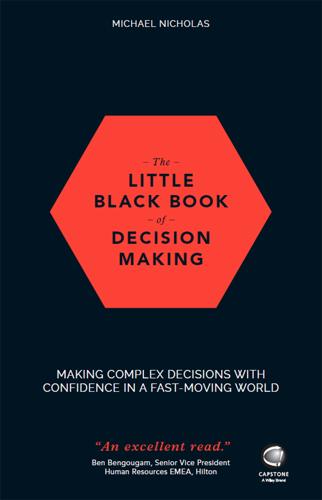
The Little Black Book of Decision Making
by
Michael Nicholas
Published 21 Jun 2017
It is hardly surprising, given what we know about confirmation bias, that the 14.2 million Donald Trump supporters who signed up to receive his unfiltered message via Twitter were completely disinterested in attempts by his opponents to discredit him. Such criticism would only appeal to those who already supported Hillary Clinton. Given this awareness, I hope it is starting to become obvious why “birds of a feather flock together”. Think about it: how often do you buy a newspaper or book that you disagree with? The classic study on how confirmation bias affects our interpretation of new information was done in 1979 by researchers from Stanford University.9 They exposed two groups of volunteers, one that supported capital punishment and one that opposed it, to two different studies (both were fictional, though participants didn't know this), one confirming and one disconfirming their existing beliefs about whether the death penalty deters violent crime.
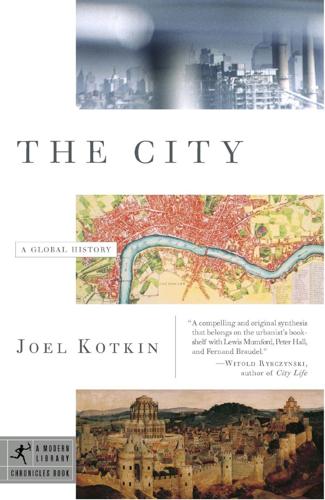
The City: A Global History
by
Joel Kotkin
Published 1 Jan 2005
Teaford, Cities of the Heartland: The Rise and Fall of the Industrial Midwest (Indiana University Press, 1994), and Andrew Lees, Cities Perceived: Urban Society in European and American Thought: 1820–1940 (Columbia University Press, 1985), as well as Charles and Mary Beard, The Rise of American Civilization (Macmillan, 1950), provide excellent resources to understand the impact of industrial growth on American cities. In studying the German experience, Carl E. Schorske’s Fin de Siècle Vienna: Politics and Culture (Knopf, 1979), remains among the great classic studies. The book also drew on the work of both Alexandra Richie, Faust’s Metropolis: A History of Berlin (Carroll and Graf, 1998), and Klaus P. Fischer, Nazi Germany: A New History (Continuum, 1995). For insight into Russian industrial urbanization, I looked to W. Bruce Lincoln, Sunlight at Midnight: St.
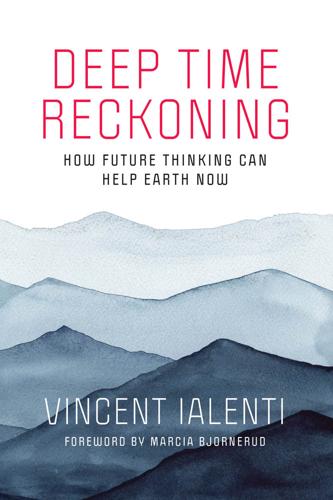
Deep Time Reckoning: How Future Thinking Can Help Earth Now
by
Vincent Ialenti
Published 22 Sep 2020
Her work explores how different paces, scales, or “scapes” of time—from democratic electoral schedules, to the tempo of capitalist commodity production, to communication and transportation speeds—converge to stoke environmental problems.9 To help achieve critical distance from their everyday office lives, participants could then learn about anthropologist E. E. Evans-Pritchard’s classic study of time-reckoning practices among Nuer communities in South Sudan.10 Evans-Pritchard made a distinction between Nuer oecological time (concepts of time derived from local environmental circumstances, like scheduling one’s day around the “cattle clock” of milking cows, taking them to the meadow, putting them in a stable, and so on) and Nuer structural time (concepts of time derived from people’s relationships with other people, lineages, clans, political groupings, statuses and ages, and so on).

What Money Can't Buy: The Moral Limits of Markets
by
Michael Sandel
Published 26 Apr 2012
Bruno Frey (an author of the Swiss nuclear waste siting study) and the economist Reto Jegen summarize the implications as follows: “Arguably, the ‘crowding-out effect’ is one of the most important anomalies in economics, as it suggests the opposite of the most fundamental economic ‘law,’ that raising monetary incentives increases supply. If the crowding-out effect holds, raising monetary incentives reduces, rather than increases, supply.”37 BLOOD FOR SALE Perhaps the best-known illustration of markets crowding out nonmarket norms is a classic study of blood donation by the British sociologist Richard Titmuss. In his 1970 book The Gift Relationship, Titmuss compared the system of blood collection used in the United Kingdom, where all blood for transfusion is given by unpaid, voluntary donors, and the system in the United States, where some blood is donated and some bought by commercial blood banks from people, typically the poor, who are willing to sell their blood as a way of making money.
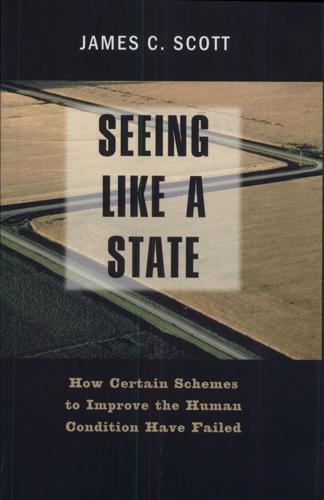
Seeing Like a State: How Certain Schemes to Improve the Human Condition Have Failed
by
James C. Scott
Published 8 Feb 1999
He was scolded by the judge, who instructed him to "leave the old manner... whereupon he after called himself Moston, according to the name of his principal house, and left that name to his posteritie" (William Camden, Remains Concerning Britain, ed. R. D. Dunn [1605; Toronto: University of Toronto Press, 1984], p. 122). This "administrative" last name almost certainly remained unknown to Thomas's neighbors. 52. See the classic study by Rodney Hilton, Bond Men Made Free: Medieval Peasant Movements and the English Rising of 1381 (New York: Viking Press, 1977), pp. 160-64. 53. I am particularly grateful to Rosanne Ruttan, Otto van den Muijzenberg, Harold Conklin, and Charles Bryant for putting me on the track of the Philippine case.
…
Harlan, Crops and Man, p. 129, reports that a selection of barley left in the field as seed stock over a trial of sixty years produced 95 percent of the yield that plant breeders would have been able to achieve and were almost certainly hardier and more disease resistant strains of barley. 90. The classic study of the family development cycle is A. V. Chayanov, The Theory of Peasant Economy, introduction by Teodor Shanin (Madison: University of Wisconsin Press, 1986). One of the policy arguments for the stable family farm as an institution is that it is more likely than a capitalist firm to have an intergenerational interest in maintaining or improving the quality of the land and environment.
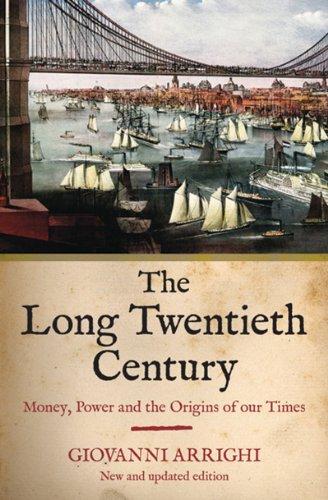
The Long Twentieth Century: Money, Power, and the Origins of Our Times
by
Giovanni Arrighi
Published 15 Mar 2010
These internal feuds were mild and easily recomposed in the citystates that were winning in the competitive struggle, most notably in Venice, but they were severe and uncontainable in the case of those city-states that were losing out (most notably in Genoa). In any event, as vividly portrayed by Jacob Burckhardt (1945: 4-64) in his classic study, Renaissance Italy was one of the clearest historical instances of “war of all against all.” The ruling groups of the city-states were constantly beset by enemies, THE RISE OF CAPITAL 93 and the pursuit of profit came to be embedded more firmly than ever in the pursuit of power: There were implacable exiles, the leaders of the faction out of power, prowling just beyond reach.
…
With her also came Tangier, England’s first base in the Mediterranean” (Hill 1967: 129). 204 THE LONG TWENTIETH CENTURY The foundations were thus laid of that “Empire of Outposts” out of which came the “continental inland expansion” of the next two centuries (Knowles 1928: 9-15) and the incorporation in the British-centered capitalist world-economy of the continents of America, India, Australia, and Africa. In the short run, however, England’s most important gain was the takeover of the so-called triangular Atlantic trade from the Dutch, which soon became for England what Levant trade had been for Venice and Baltic trade for Holland — its “mother trade.” As Eric Williams (1964) argued in his classic study, the circuit of trade through which (1) British manufactures were exchanged for African slaves, (2) African slaves were exchanged for American tropical products, and (3) American tropical products were exchanged for British manufactures, boosted at a critical conjuncture the effective demand and the capital resources required by the take-off of the British “industrial revolution.”
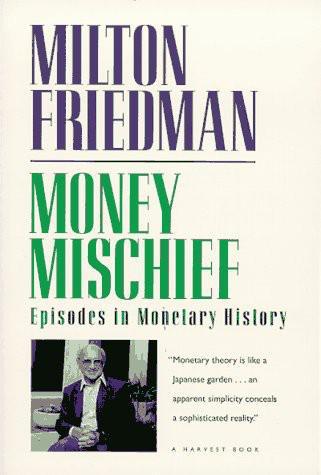
Money Mischief: Episodes in Monetary History
by
Milton Friedman
Published 1 Jan 1992
All in all, linking together the "gold yuan" and the earlier currency, prices in Nationalist territory in April 1949—by which time power had effectively changed hands—were more than 54 million times their level in December 1946. This was an average rate of rise of nearly 90 percent a month—far above the 50 percent a month that Phillip Cagan adopted, in his now classic study of hyperinflation, as separating hyperinflation from other inflationary episodes (1956, p. 25). The hyperinflation not only helped sweep the communists into power. Once the warfare was over, the communists were able to eliminate the hyperinflation, and that unquestionably helped to cement them in power (Greenwood and Wood 1978).
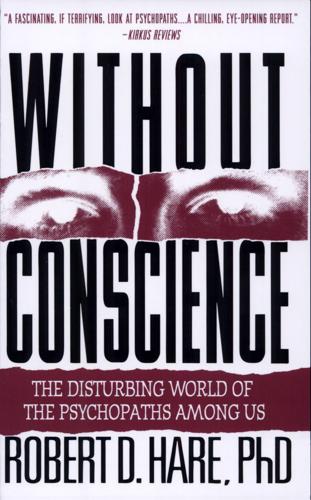
Without Conscience: The Disturbing World of the Psychopaths Among Us
by
Robert D. Hare
Published 1 Nov 1993
In the dark we are enjoying, with a subtle consciousness, aggressive and sexual pleasure at seemingly no cost.”4 These cinematic experiences may have a beneficial effect on psychologically healthy people, reminding them of the danger and destructiveness that psychopathy carries with it. On the other hand, these experiences may also serve as powerful role models for those with poorly developed internal standards, serious psychological problems, or feelings of alienation from mainstream society. REBEL WITHOUT A CAUSE In 1944, psychoanalyst Robert Lindner wrote a classic study of criminal psychopathy, Rebel Without a Cause.5 Lindner viewed psychopathy as a plague, a terrible force whose destructive potential is greatly underestimated. He described psychopaths in terms of their relationship to society: The psychopath is a rebel, a religious disobeyer of prevailing codes and standards a rebel without a cause, an agitator without a slogan, a revolutionary without a program; in other words, his rebelliousness is aimed to achieve goals satisfactory to him alone; he is incapable of exertions for the sake of others.
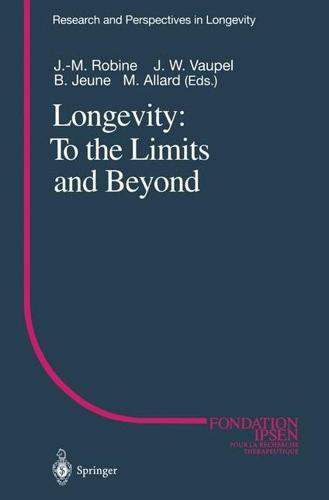
Longevity: To the Limits and Beyond (Research and Perspectives in Longevity)
by
Jean-Marie Robine
,
James W. Vaupel
,
Bernard Jeune
and
Michel Allard
Published 2 Jan 1997
These same principles of stochastic cell determination found in the lateral line system of frogs may also prevail in the vertebrate brain. In mammals and other vertebrates, it is well established that many more neurons are produced during development than survive in the adult, as presented in the classical,studies of Victor Hamburger, Ronald Oppenheimer, and others in the spinal cord, in which non-innervated neurons do not survive. The cerebral cortex, furthermore, develops through the dispersal of clonally related cells by migration within a generalized proto cortical map that does not precisely specify where each neuron will reside or what its connections will be (e.g.

Billions & Billions: Thoughts on Life and Death at the Brink of the Millennium
by
Carl Sagan
Published 11 May 1998
Millet and Joseph Fielding McConkie, The Life Beyond (Salt Lake City: Bookcraft, 1986). Chapter 3, Monday-Night Hunters Harvey Araton, "Nuggets' Abdul-Rauf Shouldn't Stand for It," The New York Times, March 14, 1996. A good anecdotal summary of professional sports and its admirers is Fans! by Michael Roberts (Washington, D.C.: New Republic Book Co., 1976). A classic study of hunter-gatherer society is The IKung San by Richard Borshay Lee (New York: Cambridge University Press, 1979). Most of the hunter-gatherer customs mentioned in this book apply to the IKung and to many other nonmarginal hunter-gatherer cultures worldwide—before they were destroyed by civilization.
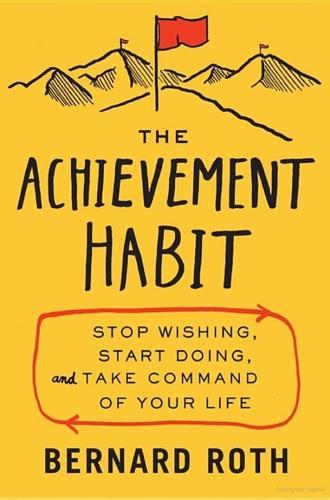
The Achievement Habit: Stop Wishing, Start Doing, and Take Command of Your Life
by
Bernard Roth
Published 6 Jul 2015
You can never be sure what someone else is thinking. Second, I was sure I would resist temptation, yet when push came to shove, I easily rationalized away my principles once someone gave me an excuse to do so. It gives me a lot of compassion for friends who, at the crucial moment, choose to drive the tractor. A classic study of anxiety over how one will act under pressure is described in Stephen Crane’s Red Badge of Courage. This novel gives us a vivid psychological portrayal of a young soldier beset by the anxiety that under fire he will be overcome by fear. As the war proceeds, he exposes his cowardice and ultimately his heroism.
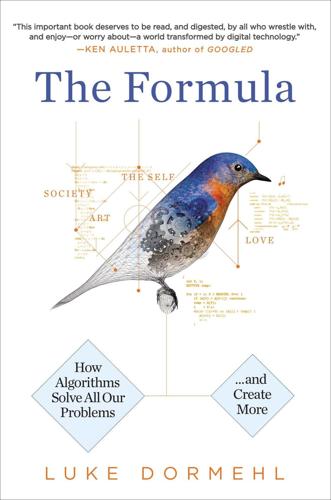
The Formula: How Algorithms Solve All Our Problems-And Create More
by
Luke Dormehl
Published 4 Nov 2014
“Its founders prefer to treat technology as an autonomous and fully objective force rather than spending sleepless nights worrying about inherent biases in how their systems—systems that have grown so complex that no Google engineer fully understands them—operate.”25 A narrative thread often explored in books and articles about Google is the degree to which Google’s rise has helped speed up the decline of traditional news outlets, like newspapers. In this sense, Google has displaced traditional media, even though it does not generate news stories itself. If Google’s algorithms ought to be subject to the same standards as newspapers, though, this poses some problems. In a classic study of newsroom objectivity, sociologist Gaye Tuchman observed that it was a fear of defamation that kept journalism objective. By reporting the views of others rather than relying on their own opinion, journalists were protected against allegations that they were biased in their reporting. In terms of Google’s auto-complete algorithm, it had also relied on quoting others rather than expressing opinions, since its suggested terms were based on the previous searches of thousands, or even millions, of users.
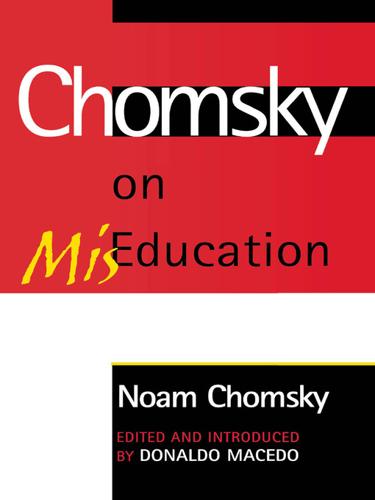
Chomsky on Mis-Education
by
Noam Chomsky
Published 24 Mar 2000
UNICEF, The State of the World’s Children 1997 (Oxford: Oxford University Press, Oxford, 1997); UNICEF, The Progress of Nations 1996 (New York: UNICEF House, 1996). 2. Thomas Friedman, New York Times (NYT), June 2, 1992; National Security Adviser Antony Lake, NYT, Sept. 26, 1993; historian David Fromkin, NYT Book Review, May 4, 1997, summarizing recent work. 3. On the general picture and its historical origins, see, inter alia, Frederic Clairmont’s classic study, The Rise and Fall of Economic Liberalism (Asia Publishing House, 1960), reprinted and updated (Penang and Goa: Third World Network, 1996); Michael Chossudovsky, The Globalization of Poverty (Penang: Third World Network, 1997). Clairmont has been an UNCTAD economist for many years; Chossudovsky is a professor of economics at the University of Ottawa. 4.
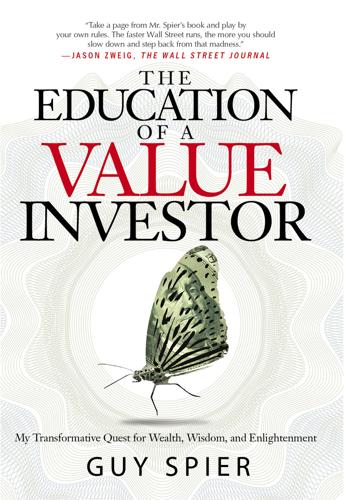
The Education of a Value Investor: My Transformative Quest for Wealth, Wisdom, and Enlightenment
by
Guy Spier
Published 8 Sep 2014
Companies, like ant species, must adopt strategies that enable them to thrive or they will be at risk of extinction. As I soon discovered, other areas of complexity research also provide helpful models for how the economic world operates. For example, the Danish theoretical physicist Per Bak coauthored a classic study of sandpiles that showed what happens when you keep dropping grains of sand in one area. The resulting pile reaches a state of “self-organized criticality”; avalanches then occur, but it’s impossible to predict either their timing or their size. This model offers intriguing insights into market crashes, which have much in common with these avalanches.
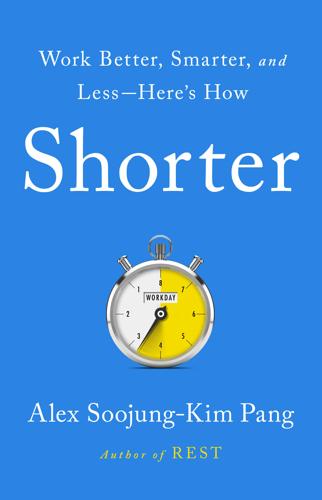
Shorter: Work Better, Smarter, and Less Here's How
by
Alex Soojung-Kim Pang
Published 10 Mar 2020
Iain Tate is quoted in Patrick Coffee, “W+K London Experiments with Forcing Employees Not to Overexert Themselves,” Adweek, March 25, 2016, www.adweek.com/agencyspy/wk-london-experiments-with-forcing-employees-not-to-overexert-themselves/104813, and Tate, “Working Differently at W+K London,” Medium, March 15, 2016, https://medium.com/@iaintait/thoughts-about-working-differently-at-w-k-london-802b09763ec5. On relaxation, the default mode network, and creativity, see Pang, Rest, 33–50. Four-Day Weeks Boost Long-Term Happiness and Job Satisfaction. The classic study of the Hawthorne Effect is Richard Gillespie, Manufacturing Knowledge: A History of the Hawthorne Experiments (Cambridge, UK: Cambridge University Press, 1991). The Swedish study of reduced working hours and happiness is in Helena Schiller et al., “Total Workload and Recovery in Relation to Worktime Reduction: A Randomised Controlled Intervention Study with Time-Use Data,” Occupational and Environmental Medicine 75 (2018): 218–226, https://oem.bmj.com/content/75/3/218.

Prediction Machines: The Simple Economics of Artificial Intelligence
by
Ajay Agrawal
,
Joshua Gans
and
Avi Goldfarb
Published 16 Apr 2018
The best churn models used machine learning, and (neural net) deep learning models generally outperformed all others. What changed? First, the data and computers were finally good enough to enable machine learning to dominate. In the 1990s, it was difficult to build large enough data sets. For example, a classic study of churn prediction used 650 customers and fewer than 30 variables. By 2004, computer processing and storage had improved. In the Duke tournament, the training data set contained information on hundreds of variables for tens of thousands of customers. With these additional variables and customers, machine learning methods started to perform as well, if not better, than regression.
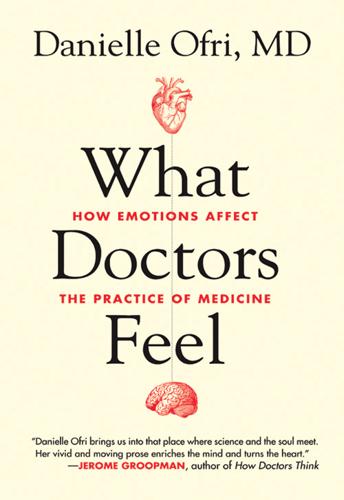
What Doctors Feel: How Emotions Affect the Practice of Medicine
by
Danielle Ofri
Published 3 Jun 2013
Two-thirds of the doctors felt angry and depressed in the days and weeks after receiving the disciplinary complaint. One-third felt guilty and ashamed. One-third lost all joy and pleasure in the practice of medicine. The shame component lingered, sometimes for years. Doctors retained strong emotional responses long after the incident—anger, depression, cynicism, wariness toward patients. A classic study of medical error polled more than 250 medical residents who had each committed a serious medical error, the type that led to severe adverse outcomes or even death.9 Only half of the residents ever discussed the error with their attendings, and only a quarter talked with the patients and families.

Art of Learning
by
Josh Waitzkin
Published 7 May 2007
In the two years following my first experience in Taiwan, I really buckled down in my training. I’ve described much of that work in the early chapters of Part II, but there was also another component to this preparation. Chinese martial arts tend to be very secretive, and Tai Chi Chuan is a particularly enigmatic discipline. If you read the Tai Chi Classics, study the philosophical foundation, practice the moving meditation, you will gain a sense of awareness, feel supple, and possibly be able to generate a lot of speed and power. But it is hard to translate these principles into viable martial application until you test yourself out in the ring and incrementally separate the real from the mythical.
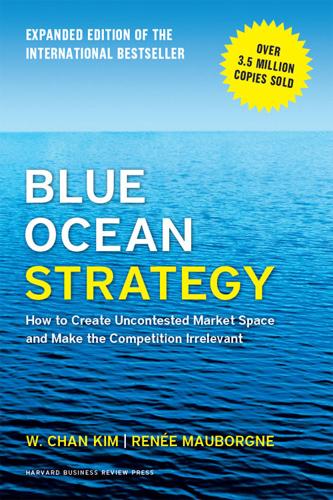
Blue Ocean Strategy, Expanded Edition: How to Create Uncontested Market Space and Make the Competition Irrelevant
by
W. Chan Kim
and
Renée A. Mauborgne
Published 20 Jan 2014
When individuals feel recognized for their intellectual worth, they are willing to share their knowledge; in fact, they feel inspired to impress and confirm the expectation of their intellectual value, suggesting active ideas and knowledge sharing.6 Similarly, when individuals are treated with emotional recognition, they feel emotionally tied to the strategy and inspired to give their all. Indeed, in Frederick Herzberg’s classic study on motivation, recognition was found to inspire strong intrinsic motivation, causing people to go beyond the call of duty and engage in voluntary cooperation.7 Hence, to the extent that fair process judgments convey intellectual and emotional recognition, people will better apply their knowledge and expertise, as well as their voluntary efforts to cooperate for the organization’s success in executing strategy.
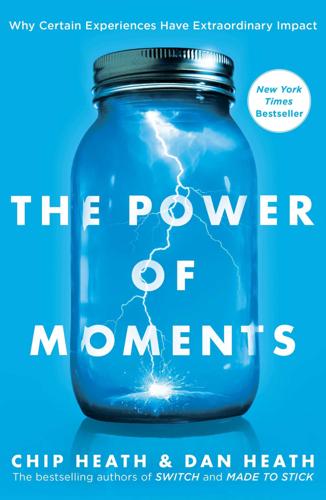
The Power of Moments: Why Certain Experiences Have Extraordinary Impact
by
Chip Heath
and
Dan Heath
Published 2 Oct 2017
I do this to ‘pop the cork’ and show that it’s safe.” He’s right to be concerned about people staying silent: One study found that 85% of workers felt “unable to raise an issue or concern to their bosses even though they felt the issue was important.” His solution—the confederate with the tough question—is well supported by evidence. There’s a classic study, conducted by Charlan Nemeth and Cynthia Chiles, demonstrating that one act of courage supports another. Let’s say you are a participant in the study. You are matched with three other people, and a researcher shows your group a series of 20 slides. After each one is presented, the researcher pauses to ask each of you what color the slide is.

Rebel Ideas: The Power of Diverse Thinking
by
Matthew Syed
Published 9 Sep 2019
As McAfee and Brynjolfsson put it: It is exactly because incumbents are so proficient, knowledgeable and caught up in the status quo that they are unable to see what’s coming, and the unrealised potential and likely evolution of the new technology . . . Existing processes, customers and suppliers all blind incumbents to things that should be obvious, such as the possibilities of new technologies that depart greatly from the status quo.21 In fact, this can be seen experimentally. A classic study by Robert Sternberg and Peter French pitted experts and novices at the card game bridge. Unsurprisingly, the experts performed better. They were the experts, after all. But then the researchers made some structural changes to the rules. Instead of players who put out the highest card winning, this was reversed.22 This change had little effect on the performances of the novices.

Mini Farming: Self-Sufficiency on 1/4 Acre
by
Brett L. Markham
Published 14 Apr 2010
Here in New Hampshire, there are a number of farming organizations—including one sponsored by the state—intended specifically for beginning farmers! Similar groups exist all across the country. Speaking of the Cooperative Extension Service, every state has at least one so-called land grant university. These universities were originally established under the Morrill Acts of 1862 and 1890 with primary missions to teach agriculture, classical studies, mechanical arts, and military tactics. The Hatch Act of 1887 established agricultural experiment stations at these universities to advance the state of agricultural science, and the Smith-Lever Act of 1914 established the Cooperative Extension Service to disseminate the data gained at the experiment stations.

Cultish: The Language of Fanaticism
by
Amanda Montell
Published 14 Jun 2021
All kinds of research points to the idea that humans are social and spiritual by design. Our behavior is driven by a desire for belonging and purpose. We’re “cultish” by nature. This fundamental human itch for connection is touching, but when steered in the wrong direction, it can also cause an otherwise judicious person to do utterly irrational things. Consider this classic study: In 1951, Swarthmore College psychologist Solomon Asch gathered together half a dozen students to conduct a simple “vision test.” Asch showed four vertical lines to the participants, all but one of whom were in on the experiment, and asked them to point to the two that were the same length. There was one obviously correct answer, which you needed zero skills other than eyesight to figure out, but Asch found that if the first five students pointed to a blatantly wrong answer, 75 percent of test subjects ignored their better judgment and agreed with the majority.
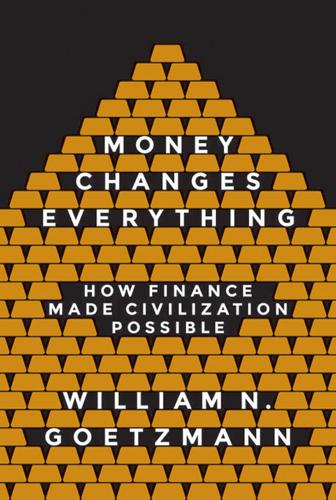
Money Changes Everything: How Finance Made Civilization Possible
by
William N. Goetzmann
Published 11 Apr 2016
“Modeling the Survival of Athenian Owl Tetradrachms Struck in the Period from 561–42 BC from Then to the Present,” in Proceedings of the 30th International Conference of the System Dynamics Society, vol. 5. St. Gallen, Switzerland: Systems Dynamics Society, pp. 4024–4043. 18. Xenophon. 1892. The Works of Xenophon, H. G. Daykins (trans.). London: Macmillan and Co., p. 331. 19. Aperghis, G. G. 1998. “A reassessment of the Laurion Mining lease records.” Bulletin of the Institute of Classical Studies 42(1): 1–20. 20. Papazarkadas, N. 2012. “Poletai,” in The Encyclopedia of Ancient History. http://onlinelibrary.wiley.com/doi/10.1002/9781444338386.wbeah04267/full. 21. Camp, John McKesson. 2007. “Excavations in the Athenian Agora: 2002–2007.” Hesperia 76(4): 627–663. CHAPTER 6 1. Van Wees, Hans. 2013.
…
Andreau, Jean. 1999. Banking and Business in the Roman World. Cambridge: Cambridge University Press. Angela, Alberto. 2009. A Day in the Life of Ancient Rome. New York: Europa Editions. Aperghis, G. G. 1998. “A reassessment of the Laurion mining lease records.” Bulletin of the Institute of Classical Studies 42(1): 1–20. Archibald, Zosia, John K. Davies, and Vincent Gabrielsen (eds.). 2011. The Economies of Hellenistic Societies, Third to First Centuries BC. Oxford: Oxford University Press. Archibald, Zosia Halina. 2013. Ancient Economies of the Northern Aegean: Fifth to First Centuries BC. Oxford: Oxford University Press.

Cultural Backlash: Trump, Brexit, and Authoritarian Populism
by
Pippa Norris
and
Ronald Inglehart
Published 31 Dec 2018
The second claim is that (2) ‘The double-ballot system and proportional representation tend to multipartyism.’41 While originally stated as a universal law, Duverger subsequently suggested that these claims were only probabilistic generalizations.42 The conditions under which this relationship holds, and its status as a law, have attracted considerable debate in the literature marked by continued reformulations of the original statement and many efforts to define precisely what is to ‘count’ as a party in order to verify these claims.43 Much of the literature, notably Lijphart’s classic study, supports Duverger’s generalization that Plurality electoral systems tend toward party dualism, while Proportional Representation is associated with multipartyism.44 Previous research compared the results of the national election for the lower house of parliament in 170 contests worldwide from 316 Party Fortunes and Electoral Rules 1995 to 2000.45 It found that the mean number of parliamentary parties (based on the simplest definition of parties as holding at least one seat) was around 5.22 under Majoritarian systems, 8.85 under Mixed systems, and 9.52 under Proportional Representation.
…
In the 2015 general election, while 8.4 percent of the Interwar generation reported voting UKIP, only 2 percent of the Millennials did so. As well as birth cohorts, Model 1 in Table 11.1 also includes a range of social background factors; none is significant except for education. This finding has been widely noted in previous studies of Brexit as well as in classic studies of authoritarianism.60 College education is consistently one of the strongest predictors of socially liberal and socially conservative values – and of support for Authoritarian-Populist parties and Brexit 386 % Voted Leave .06 .04 .61% .55% .45% .02 .00 .28% Interwar Baby boomers Gen X Millennials Generation Figure 11.4.

The Spirit Level: Why Greater Equality Makes Societies Stronger
by
Richard Wilkinson
and
Kate Pickett
Published 1 Jan 2009
Researchers on both sides of the Atlantic are clear that increased income inequality is responsible for increasing the segregation of rich and poor.281–283 The concentration of poor people in poor areas increases all kinds of stress, deprivation and difficulty – from increased commuting times for those who have to leave deprived communities to find work elsewhere, to increased risk of traffic accidents, worse schools, poor levels of services, exposure to gang violence, pollution and so on. Sociologist William Julius Wilson, in his classic study of inner-city poverty, refers to poor people in poor neighbourhoods as the ‘truly disadvantaged’.225 Two studies from the USA have shown that residential economic segregation increases people’s risk of dying, and one showed that more unequal cities were also more economically segregated.284–285 These processes will of course feed back into further reductions in social mobility.
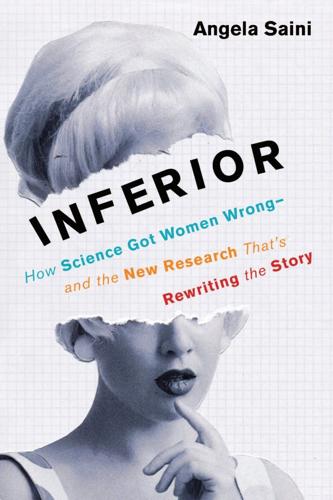
Inferior: How Science Got Women Wrong-And the New Research That's Rewriting the Story
by
Angela Saini
Published 29 May 2017
Gowaty, Patricia Adair, Rebecca Steinichen, and Wyatt W. Anderson. “Mutual Interest Between the Sexes and Reproductive Success in Drosophila pseudoobscura.” Evolution 56, no. 12 (2002): 2537–40. Gowaty, Patricia Adair, Yong-Kyu Kim, and Wyatt W. Anderson. “No Evidence of Sexual Selection in a Repetition of Bateman’s Classic Study of Drosophila melanogaster.” Proceedings of the National Academy of Sciences of the United States of America 109, no. 29 (2012): 11740–45. Trivers, Robert L. “Sexual Selection and Resource-Accruing Abilities in Anolis garmani.” Evolution 30, no. 2 (1976): 253–69. Janicke, Tim, et al. “Darwinian Sex Roles Confirmed Across the Animal Kingdom.”

The New Geography of Jobs
by
Enrico Moretti
Published 21 May 2012
Atlanta, Georgia, has the Centers for Disease Control, research universities Emory and Georgia Tech . . . Cleveland, Ohio, was an early home to venture capital, and the Cleveland Clinic is one of the premier research hospitals in the nation. Neither city today has significant activity in biotech” (pp. 4–5). [>] In a fascinating and now classic study: Zucker, Darby, and Brewer, “Intellectual Human Capital and the Birth of U.S. Biotechnology Enterprises”; Zucker et al., “Minerva Unbound”; Zucker, Darby, and Armstrong, “Commercializing Knowledge”; Zucker and Darby, “Capturing Technological Opportunity via Japan’s Star Scientists”; Zucker, Darby, and Armstrong, “Geographically Localized Knowledge”; Zucker and Darby, “Present at the Biotechnological Revolution.” [>] The attractive nature of economic development: In more recent work, Zucker and Darby show that today the United States has just over half of the world’s biotech stars.

The Complacent Class: The Self-Defeating Quest for the American Dream
by
Tyler Cowen
Published 27 Feb 2017
Even if, as data suggest, the migrants on average did not end up with better jobs or higher wages than those who stayed behind, they were at least able to escape the oppressive cultures from which they came. The natural response to disquietude was to look for changes in one’s natural and physical environment.4 Even for people who didn’t move permanently during these earlier eras, there was significantly more mobility back and forth between regions. Nicholas Lemann, in his classic study of African American migration, wrote: “For a time, in the late 1950s and early 1960s, it seemed as if the whole black society of Clarksdale and the Mississippi Delta had transferred itself to Chicago. Everybody was either living in Chicago, or back and forth from Chicago, or occasionally visiting Chicago.”5 This was a way to earn more money and see more of the world, but without cutting ties altogether with one’s home community.

Endless Forms Most Beautiful: The New Science of Evo Devo
by
Sean B. Carroll
Published 10 Apr 2005
Everything in our bodies is a variation on a mammalian or primate template. Thus, I believe that the weight of genetic evidence is telling us that the evolution of primates, great apes, and humans is due to changes more in the control of genes than in the proteins the genes encode. I am not the first to reach this conclusion. In a classic study three decades ago, Mary Claire King and Allan Wilson showed that the sequences of chimp and human proteins were nearly identical and drew the conclusion that evolutionary differences were due to changes in gene regulation. A host of eminent biologists in the 1960s and 1970s—including Linus Pauling, Emile Zuckerkandl, Eric Davidson, Roy Britten, and François Jacob—also deduced the same.
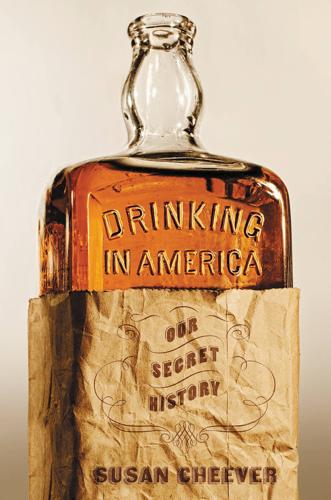
Drinking in America: Our Secret History
by
Susan Cheever
Published 12 Oct 2015
There are also, the CDC report says, more than a million alcohol-related emergency room visits as well as 10,000 traffic fatalities a year caused by drinking.2 Drinking is a cherished American custom—a way to celebrate and a way to grieve and a way to take the edge off. It brings people together. It makes social connection easy. It loosens inhibitions. “Alcohol has immediate and profound effects on behavior,” writes Dr. James Milam in his classic study Under the Influence. “At low doses, alcohol stimulates the brain cells, and the drinker feels happy, talkative, energetic, and euphoric. After one or two drinks, the normal drinker may experience some improvement in thought and performance.”3 This is the alcoholic sweet spot, and its looseness and clarity have been woven into the fabric of American history.

Cognitive Gadgets: The Cultural Evolution of Thinking
by
Cecilia Heyes
Published 15 Apr 2018
When imitating retrieval of a toy from a box, three- and four-year-old children do not only release the latches and open the doors impeding their access to the prize. They also copy the model’s extraneous actions—such as tapping the box with a wand—and show this “overimitation” even when they are able to tell the experimenter which actions are “silly” and which are necessary (Lyons, Young, and Keil, 2007). In this classic study of overimitation, and many others, it is not clear whether children are copying relations among body parts—what is called “imitation” in this book, and in cognitive science more generally—or whether they are reproducing relations among inanimate objects (for example, between the box and the wand), which is sometimes called “emulation.”
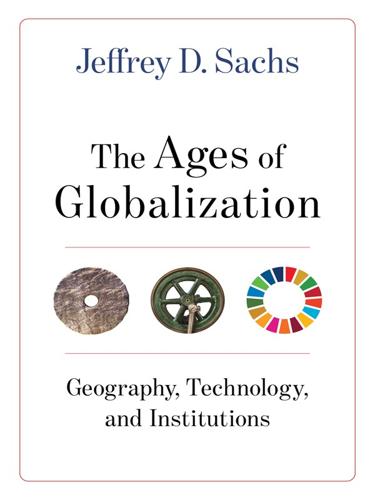
The Ages of Globalization
by
Jeffrey D. Sachs
Published 2 Jun 2020
Data on national and world incomes after 1980 are provided by the IMF in the World Economic Outlook database, https://www.imf.org/external/pubs/ft/weo/2019/01/weodata/index.aspx. 2. For a captivating history of the British industrial revolution with a strong focus on technological advances, including the steam engine, see the classic study by David Landes, Unbound Prometheus: Technological Change and Industrial Development in Western Europe from 1750 to the Present, (Cambridge: Cambridge University Press, 1969). 3. Jutta Bolt, Robert Inklaar, Herman de Jong, and Jan Luiten van Zanden, “Rebasing ‘Maddison’: New Income Comparisons and the Shape of Long-Run Economic Development,” GGDC Research Memorandum 174, January 2018. 4.
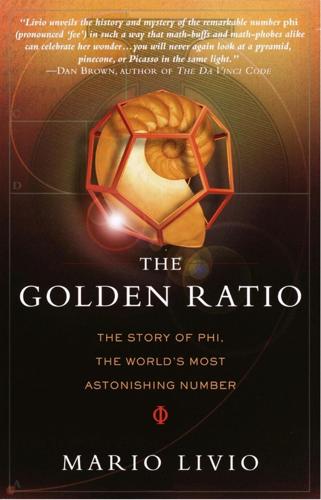
The Golden Ratio: The Story of Phi, the World's Most Astonishing Number
by
Mario Livio
Published 23 Sep 2003
Fig. 17: Hirmer Fotoarchiv Fig. 19: Reprinted with permission from Robert Dixon, Mathographics (Mineola: Dover Publications, 1987). Figs. 22 & 23, bottom: Reprinted with permission from H. E. Huntley, The Divine Proportion (Mineola: Dover Publications, 1970). Fig. 23, top: Alison Frantz Photographic Collection, American School of Classical Studies at Athens Fig. 28: Reprinted with permission from Trudi Hammel Garland, Fascinating Fibonaccis Mystery and Magic in Numbers © 1987 by Dale Seymour Publications, an imprint of Pearson Learning, a division of Pearson Education, Inc. Figs. 31–32: Reprinted with permission from Trudi Hammel Garland, Fascinating Fibonaccis Mystery and Magic in Numbers © 1987 by Dale Seymour Publications, an imprint of Pearson Learning, a division of Pearson Education, Inc.
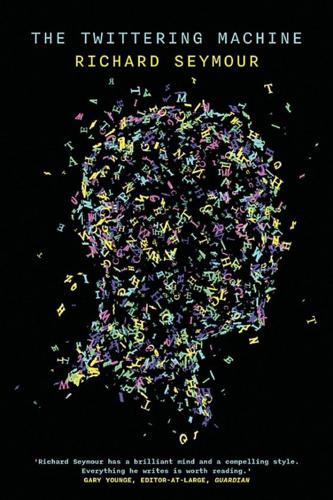
The Twittering Machine
by
Richard Seymour
Published 20 Aug 2019
The professed admiration for her was therefore complicated, exploitative on the part of the media and, sometimes, tacitly dehumanizing. The randomness, misfortune and complexity of cultural wants that led to Dobyne’s celebrity is typical of the way stars are made. The anthropologist Hortense Powdermaker, in her classic study of Hollywood, noticed that the randomness of success led to a tendency towards magical thinking in the movie industry.20 Hollywood formulae were like spells, their market research like divination, executive decisions justified by pseudo-telepathic ‘instinct’. These were magical techniques in aid of compelling Lady Luck.

The New Class Conflict
by
Joel Kotkin
Published 31 Aug 2014
Out of these conflicts rose a whole new set of industries dependent on the development and exploitation of science. As a prescient Winston Churchill remarked, “The new empires are those of the mind.”37 Despite the threat of thermonuclear war, the 1950s and 1960s were suffused with a spirit of technological optimism. In his classic study The Technological Society (1967), French philosopher Jacques Ellul drew a contemporary picture of the world of 2000, complete with regular shuttle service to the moon, widespread synthetic foods, and an end to both hunger and poverty.38 These assumptions, of course, have not been fulfilled even now, but the promise of such improvements—as is the case today—captivated many observers at the time.
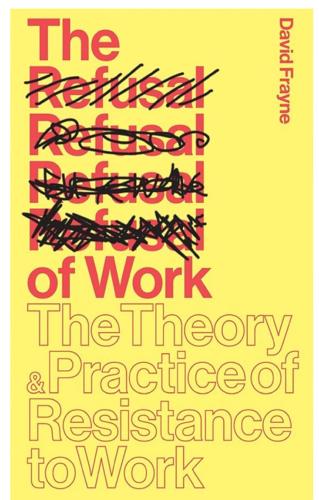
The Refusal of Work: The Theory and Practice of Resistance to Work
by
David Frayne
Published 15 Nov 2015
This new form is characterised not by the exclusion of human qualities from the labour process, but by the enrolment and exploitation of these qualities. The problem here is not that the labour process presents no opportunities for expression and identification, but that the employer expects workers to become fully involved and invested in the job. The insights developed around this new form of alienation are indebted to C. Wright Mills’ classic study White Collar (Mills, 1956), though discussions in this area were subsequently popularised by Arlie Hochschild and her theory of ‘emotional labour’ (Hochschild, 1983). Both authors essentially posed the same question: what are the consequences when instead of being asked to leave their human qualities at home in the morning, workers are expressly asked to bring their emotions, their personalities and their individuality to work?
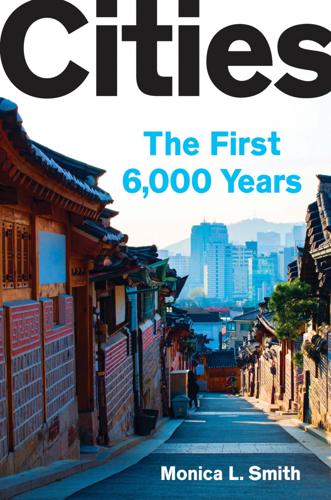
Cities: The First 6,000 Years
by
Monica L. Smith
Published 31 Mar 2019
(Liège, Belgium: Université de Liège, 1999), 119–23. Among the most desired objects: Michael Fulford, “Gallo-Roman Sigillata: Fresh Approaches, Fresh Challenges, Fresh Questions,” in Seeing Red: New Economic and Social Perspectives on Terra Sigillata, ed. Michael Fulford and Emma Durham (London: Institute of Classical Studies, University of London, 2013), 1–17. Feathered Serpent Pyramid: Cowgill, Ancient Teotihuacan. At Tikal, the excavation: Jones, “Marketplace at Tikal.” the same impressive stonework: McMahon, “Waste Management in Early Urban Southern Mesopotamia,” 19–39. McMahon discusses the appearance of stone orthostats in bathrooms; for the discussion of orthostats in public buildings, see Ömür Harmanşah, “Upright Stones and Building Stories: Architectural Technologies and the Poetics of Urban Space,” in Cities and the Shaping of Memory in the Ancient Near East (Cambridge, U.K.: Cambridge University Press, 2013).
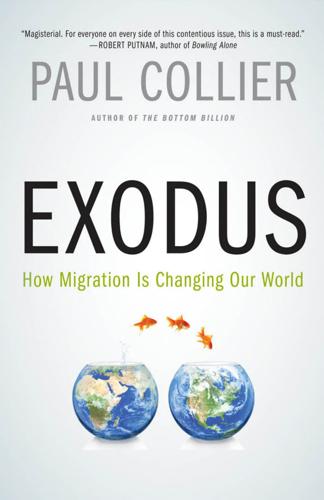
Exodus: How Migration Is Changing Our World
by
Paul Collier
Published 30 Sep 2013
The Cultures of Migrants So mutual regard, trust, and moral outrage against those who free ride all support an equitable and cooperative society. How does this relate to migration? Migrants bring not only the human capital generated in their own societies; they also bring the moral codes of their own societies. Thus, unsurprisingly, Nigerian immigrants to other societies tend to be untrusting and opportunistic. In a classic study of differences in cultural attitudes, Ray Fisman and Edward Miguel compared the payment of parking fines by diplomats in New York.8 During the key period, diplomats had legal immunity from fines, and so the only restraint on a refusal to pay was their own ethical standards. Fisman and Miguel found that the behavior of diplomats from different countries varied enormously but was well explained by the corruption level prevailing in the country of the diplomat, as measured by standard surveys.
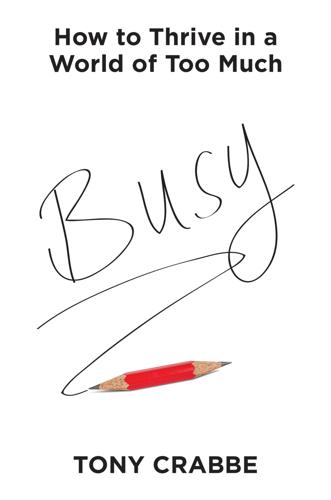
Busy
by
Tony Crabbe
Published 7 Jul 2015
What is important though, is what happened over the coming weeks. The researchers observed how often the children chose to draw of their own free will, when no reward was involved. Those who hadn’t been rewarded spent around twice as much time drawing as those who had been rewarded.5 This is the classic study that launched a focus on intrinsic motivation: motivation that comes from the activity itself, not from rewards. Remember, the children loved drawing, but after being rewarded, they were less interested unless there was a reward. They had a reason for drawing, and it wasn’t for the fun of it. The reward turned play into work, and it stayed work.
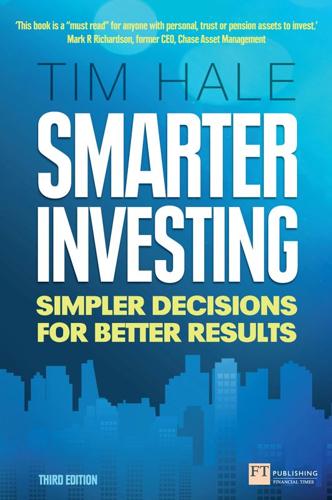
Smarter Investing
by
Tim Hale
Published 2 Sep 2014
Claims by active managers that they are favoured by bear markets as they can hold cash and defensive positions is not borne out in the two market crashes during the past ten years. To quote: ‘the opportunity does not translate to reality’. Investment policy outweighs investment strategy A classic study (Brinson et al., 1986) relating to actively managed US pension plans and the role of long-term policy versus short-term active management decisions concludes that: ‘Investment policy dominates investment strategy, explaining on average 93.6% of the variation in total plan returns.’ This has also become one of the most misquoted pieces of research in investment academia.

Suggestible You: The Curious Science of Your Brain's Ability to Deceive, Transform, and Heal
by
Erik Vance
Published 14 Sep 2016
And each time you make a copy, it looks a little different—a little more blurry and faded. So eventually you have to take a permanent marker and fill in some of the edges to make it appear sharper. Simply put, a false memory is an error in one of these steps. And once that error occurs, it’s almost impossible to correct. Take, for instance, a classic study by the legendary psychologist and memory expert Ulric Neisser. The morning after the explosion of NASA’s space shuttle Challenger in 1986, Neisser took a poll of where his students were when they first heard about it. Almost three years later he ran the poll again; almost all the answers had changed in some way.

Outnumbered: From Facebook and Google to Fake News and Filter-Bubbles – the Algorithms That Control Our Lives
by
David Sumpter
Published 18 Jun 2018
Ants can build nests that are over a metre high and that are dug several metres deep into the ground, they can construct a network of supply chains covering several square kilometres and some species even grow and farm their own food. But if you put ants in a bucket they become very stupid indeed. I first heard about the bucket experiment from biologist Nigel Franks at the University of Bristol. He and his colleagues were in Panama in 1989 when they came up with the idea, inspired by classic studies from the 1940s. They placed army ants in a bucket, the edges of which were coated with a material that prevented them from escaping, and filmed them from above. The ants went round and round in circles, and as they did so they got faster and faster. As they walked, they deposited a chemical pheromone, which led the ants behind them to think there must be something interesting to find further on.

The Mind Is Flat: The Illusion of Mental Depth and the Improvised Mind
by
Nick Chater
Published 28 Mar 2018
The output of each cycle will feed into the next – if we are to have a stream of coherent thought rather than an aimless daydream. 12 For example, K. A. Ericsson and H. A. Simon (1980), ‘Verbal reports as data’, Psychological Review, 87(3): 215–51. 13 J. S. Mill, The Autobiography (1873). 11. PRECEDENTS NOT PRINCIPLES 1 For analysis of the psychology of chess, see classic studies by A. D. de Groot, Het denken van de schaker [The thought of the chess player] (Amsterdam: North-Holland Publishing Co., 1946); updated translation published as Thought and Choice in Chess (The Hague: Mouton, 1965; corrected second edition published in 1978); W. G. Chase and H. A. Simon (1973), ‘Perception in chess’, Cognitive Psychology, 4: 55–81; and more recently, F.

About Time: A History of Civilization in Twelve Clocks
by
David Rooney
Published 16 Aug 2021
Gratwick, A. S. “Sundials, Parasites, and Girls from Boeotia.” The Classical Quarterly 29, no. 2 (1979): 308–23. Hannah, Robert. Time in Antiquity. London and New York: Routledge, 2009. Hoff, M. “The Early History of the Roman Agora at Athens.” Bulletin Supplement (University of London, Institute of Classical Studies), no. 55, The Greek Renaissance in the Roman Empire: Papers from the Tenth British Museum Classical Colloquium, 1989, 1–8. Hung, Wu. “Monumentality of Time: Giant Clocks, the Drum Tower, the Clock Tower,” in Monuments and Memory, Made and Unmade, ed. Robert Nelson and Margaret Olin, 107–32.
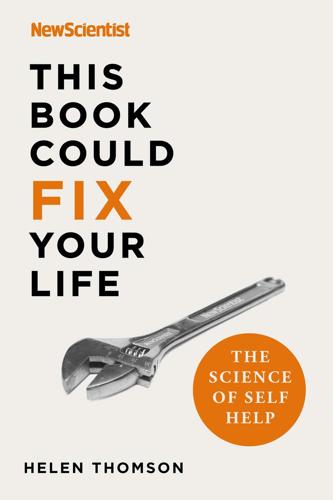
This Book Could Fix Your Life: The Science of Self Help
by
New Scientist
and
Helen Thomson
Published 7 Jan 2021
Oh, and if you came to the conclusion you were less likely to fall prey to biased thinking, that’s the illusory superiority bias, or the ‘above average’ effect. This is the belief, harboured by many in the West at least, that they are above average at everything from driving to performance at work. In one classic study, 93 per cent of drivers in the United States rated themselves as above average on their driving ability. In fact, the effect first came to light among a small sample of drivers in an earlier study who all rated themselves as above-average – despite having all been recently hospitalised in car crashes.
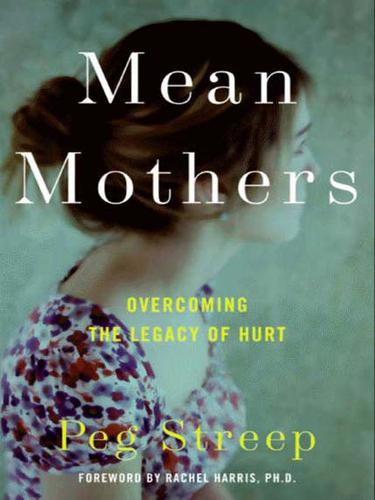
Mean Mothers: Overcoming the Legacy of Hurt
by
Peg Streep
Published 12 Oct 2009
Tronick found that in the conversation-like pattern of mother-infant interactions in which each partner appears to be responsive to the other, the mother and the infant were both equally influential in directing the interaction A mother’s facial expressions, her voice, her touch—all the areas of communication between mother and infant—teach her child much more than the lesson of “I love you.” The mother communicates all manner of information about the world and the baby’s place in it, including whether the world is safe or dangerous. In one classic study, researchers placed one-year-old infants on a visual cliff. Their mothers were then instructed to make their facial expressions communicate either happiness or fear. An astonishing 74 percent of infants whose mothers communicated happiness—the “It’s okay, sweetie” signal—“went over” the visual cliff; not one infant whose mother’s face communicated fear—the “Don’t go there” or “Stop” signal—did.

Gravity's Rainbow
by
Thomas Pynchon
Published 15 Jan 2000
Structurally, it's a stiffened chain of aromatic rings, hexagons like the gold one that slides and taps above Hilary Bounce's navel, alternating here and there with what are known as heterocyclic rings. The origins of Imipolex G are traceable back to early research done at du Pont. Plasticity has its grand tradition and main stream, which happens to flow by way of du Pont and their famous employee Carothers, known as The Great Synthesist. His classic study of large molecules spanned the decade of the twenties and brought us directly to nylon, which not only is a delight to the fetishist and a convenience to the armed insurgent, but was also, at the time and well within the System, an announcement of Plasticity's central canon: that chemists were no longer to be at the mercy of Nature.
…
Variations reported by Laszlo Jamf in the ACS Journal, year before last. Jamf was on loan again, this time as a chemist, to the Americans, whose National Research Council had begun a massive program to explore the morphine molecule and its possibilities—a Ten-Year Plan, coinciding, most oddly, with the classic study of large molecules being carried on by Carothers of du Pont, the Great Synthesist. Connection? Of course there's one. But we don't talk about it. NRC is synthesizing new molecules every day, most of them from pieces of the morphine molecule. Du Pont is stringing together groups such as amides into long chains.
…
Playful Seaman Bo-dine—none other—has seeded tonight's grounds with a massive dose of Laszlo Jamf's celebrated intoxicant, scored on Bodine's most recent trip to Berlin. The property of time-modulation peculiar to Oneirine was one of the first to be discovered by investigators. "It is experienced," writes Shetzline in his classic study, "in a subjective sense ... uh ... well. Put it this way. It's like stuffing wedges of silver sponge, right, into, your brain!" So, out in the mellow sea-return tonight, the two fatal courses do intersect in space, but not in time. Not nearly in time, heh heh. What Beláustegui fired his torpedo at was a darkrust old derelict, carried passively by currents and wind, but bringing to the night something of the skull: an announcement of metal emptiness, of shadow, that has spooked even stronger positivists than Beláustegui.

Global Crisis: War, Climate Change and Catastrophe in the Seventeenth Century
by
Geoffrey Parker
Published 29 Apr 2013
Thomas Robisheaux has argued that the enormous impact of the war came not just ‘from the harsh and inhuman conduct of the soldiery, but from the way all social, political, and religious order vanished and so contributed to the wild disorder and confusion at every level of society’.104 ‘The outstanding example in European history of meaningless conflict'? In the conclusion to her classic study of the Thirty Years War, first published in 1938, Dame Veronica Wedgwood stated sadly: ‘The war solved no problem. Its effects, both immediate and indirect, were either negative or disastrous. It is the outstanding example in European history of meaningless conflict.‘105 The evidence presented in this chapter lends some support to her verdict: not only Germany but also northern Italy, the Dutch Republic, Sweden, Switzerland and Denmark all suffered effects that were ‘either negative or disastrous’.
…
Had Don Gaspar persevered with his clerical career, he might have pursued advanced studies at one of Castile's Colegios Mayores (graduate colleges), which prepared men not only to be bishops and abbots but also to fill senior administrative and judicial positions in Castile and its American colonies. As Richard Kagan remarked in his classic study of the universities of Habsburg Spain, ‘no other occupation or career offered such possibilities for economic and social advancement’.21 Even Wang Daokun might have felt a twinge of envy. 49. Universities founded in Europe, 1600–60. Although the expansion of institutions of higher education in Europe slowed after 1600, the following decades also saw numerous foundations, particularly in areas where Catholics and Protestants struggled for control.
…
In Spain, a government committee called on Philip IV to ‘close down some grammar schools newly founded in villages and small towns, because with the opportunity of having them so near, the peasants divert their sons from the jobs and occupations in which they were born and raised, and put them to study’. In France, Cardinal Richelieu wanted to close three-quarters of the collèges de plein exercice (schools that provided a general education in Classical studies) because he, like Philip IV, reasoned that, if everyone received an education, ‘the sons of the poor would desert the productive occupations of their parents for the comforts of office’. The French scholar Gabriel Naudé agreed, predicting in 1639 that ‘the great number of colleges, seminaries and schools’ would increase the frequency of ‘revolutions of state’.

The Impact of Early Life Trauma on Health and Disease
by
Lanius, Ruth A.; Vermetten, Eric; Pain, Clare
Published 11 Jan 2011
Part 3 synopsis In Ch. 12, De Bellis focuses on perhaps the least studied and yet most detrimental form of early life trauma, neglect. Indeed he concludes that child neglect is the most chronic and prevalent form of child maltreatment. As opposed to the authors of Chs. 9 and 11, he brings the concept of attachment directly into the conceptualization of early life trauma. Reviewing Harlow’s classic studies of maternal deprivation and citing John Bowlby’s seminal work, De Bellis notes, “the social attachment between mother and infant is an essential experience-dependent interaction of normal development.” Thus, along with a large number of other current researchers, he moves the timeline of early trauma back to infancy.
…
Abusive families are likely to coerce children to minimize or deny abuse or its after-effects. This will affect memory as well as conscious withholding. In reviewing the evidence regarding recovered memory of abuse, Dalenberg and Palesh (Ch. 21) emphasize the comparable accuracy of recovered versus continuous memory of abuse. Perhaps the most startling aspect of Williams’ classic study of a past traumatic event [6,7] was the fact that 38% of women interviewed 17 years after the event reported no conscious recollection of it. An additional 14% reported that during some period of their life they could not recall the traumatic event. Documentation of the event occurrence had been obtained from hospital emergency room records.
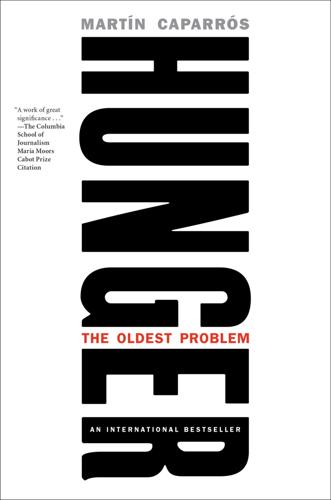
Hunger: The Oldest Problem
by
Martin Caparros
Published 14 Jan 2020
Jobs on the black market grew exponentially; the possibility of demanding decent working conditions became more and more utopian. Migration multiplied among those who could manage it. For those who couldn’t, the possibilities of social improvements disappeared; the future—a word without much meaning—ended up looking much too similar to the present. In their classic study, Free Markets and Food Riots (1994), authors John K. Walton and David Seddon note almost 150 protests against the IMF between 1976 and 1992 in these countries.10 Most started as food riots. During the 1990s the tendency was clear: the number of hungry people started to increase again, reaching about 850 million and continuing upward.
…
Hence, the US law stipulated that 75 percent of its food aid would be in the form of food manufactured, processed, and packaged in their country. The large grain companies that dominate the sector, such as Cargill, Bunge, and company, are those who benefit most: they get half the orders—and according to a classic study by Barrett and Maxwell, they charge receiving countries between 10 and 70 percent more than market price.7 The law also stipulates that 75 percent of the food be transported on US-owned ships. US merchant shipping is an unstable business; other countries with lower taxes and fewer labor rules ship at lower cost; only 3 percent of international trade to and from the United States is transported on US ships, so the transport of that food is one of the sector’s main life preservers.

Made to Stick: Why Some Ideas Survive and Others Die
by
Chip Heath
and
Dan Heath
Published 18 Dec 2006
Cialdini opens with the dilemma of the weatherman in a rainy city who regularly receives hate mail because viewers associate him with the news he delivers; he also discusses research on the “luncheon technique” that showed people were more likely to endorse political statements that they first heard while eating lunch. Cialdini’s book is the classic study on influence and one of the best books in the social sciences. “Rashomon can be seen as”: C. Vognar, “Japanese Film Legend Kurosawa Dies at 88,” Dallas Morning News, September 7, 1998, 1A. In 1929, Einstein protested: Einstein’s comments about the way people used the term relativity is from David Bodanis, E = mc2: A Biography of the World’s Most Famous Equation (New York: Walker & Company, 2000).
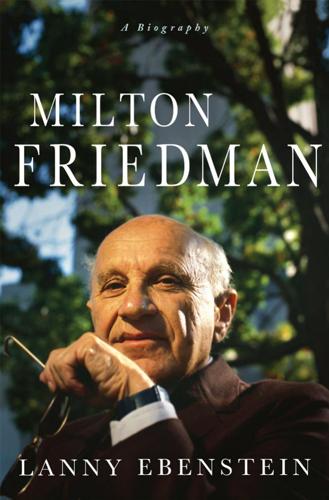
Milton Friedman: A Biography
by
Lanny Ebenstein
Published 23 Jan 2007
Other recent works in this line include Thomas Hall and David Ferguson’s The Great Depression: An International Disaster of Perverse Economic Policies (1998), Gene Smiley’s 2002 Rethinking the Great Depression and Jim Powell’s 2003 FDR’s Folly: How Roosevelt and His New Deal Prolonged the Great Depression. Smiley writes: “Although various aspects of their analysis have been criticized, chapters 7–9 of Milton Friedman and Anna Jacobson Schwartz’s classic study A Monetary History of the United States, 1867–1960 remain the starting point for studying the Great Depression and the recovery in the 1930s.”18 Friedman reviewed Powell’s manuscript in draft and provided this promotional blurb: “Admirers of FDR credit his New Deal with restoring the American economy after the disastrous contraction of 1929–33.
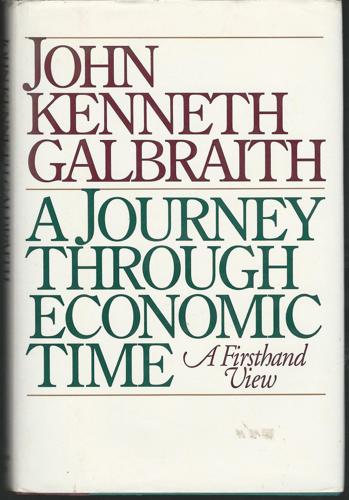
World Economy Since the Wars: A Personal View
by
John Kenneth Galbraith
Published 14 May 1994
As more goods are produced and owned, the greater are the opportunities for fraud and the more property that must be protected. If the provision of public law enforcement services does not keep pace, the counterpart of increased well-being will, we may be certain, be increased crime. The city of Los Angeles, in modern times, was the near-classic study in the problem of social balance. Magnificently efficient factories and oil refineries, a lavish supply of automobiles, a vast consumption of handsomely packaged products, coupled for many years with the absence of a municipal trash collection service which forced the use of home incinerators, made the air nearly unbreathable for an appreciable part of each year.

Mistakes Were Made (But Not by Me): Why We Justify Foolish Beliefs, Bad Decisions, and Hurtful Acts
by
Carol Tavris
and
Elliot Aronson
Published 6 May 2007
The story of this couple is in chapter 4, "Extramarital Affairs: The Pearl in the Oyster," by Julie Gottman, p. 50. 12 John Gottman, Why Marriages Succeed or Fail, p. 127; for his description of the fifty-six couples, see p. 128; note 7. 13 Donald T. Saposnek and Chip Rose (1990), "The Psychology of Divorce," in D. L. Crumbley and N. G. Apostolou (eds.), Handbook of Financial Planning for Divorce and Separation. New York: John Wiley. Their article is available online at http://www.mediate.com/articles/saporo.cfm. For a classic study of the ways that couples reconstruct their memories of their marriage and each other, see Janet R. Johnston and Linda E. Campbell (1988J, Impasses of Divorce: The Dynamics and Resolution of Family Conflict. New York: Free Press. 14 Jacobson and Christensen, Acceptance and Change in Couple Therapy, note 3, discuss new approaches to help partners accept each other rather than always trying to get the other to change. 15 Vivian Gornick (2002), "What Independence Has Come to Mean to Me: The Pain of Solitude, the Pleasure of Self-Knowledge," in Cathi Hanauer (ed.), The Bitch in the House.
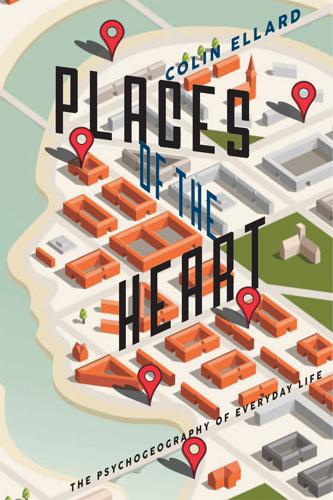
Places of the Heart: The Psychogeography of Everyday Life
by
Colin Ellard
Published 14 May 2015
Chapter 2 1Beesley quote from an interview with Fran Schechter for NOW magazine (2010, Available at: https://nowtoronto.com/art-and-books/features/art-as-organism/) 2Philip Beesley’s curriculum vitae may be found at: http://philipbeesleyarchitect.com/about/14K24_PB_CV.pdf 3One of the early and most influential accounts of rapid scene recognition may be found in Mary Potter’s landmark 1969 paper titled “Recognition Memory for a Rapid Sequence of Pictures,” published in the Journal of Experimental Psychology, (1969, Volume 81, pages 10–15). 4Fritz Heider’s classic study with Marianne Simmel was published in a paper titled “An Experimental Study of Apparent Behavior,” in 1944 in the American Journal of Psychology (Volume 57, pages 243–259). The video I described is easy to find online, for example at: https://www.youtube.com/watch?v=76p64j3H1Ng 5Albert Michotte’s work on causality is found in his beautiful book The Perception of Causality (Methuen, Andover, MA, 1962). 6I heard the story of the hoarder and the wet containers at a workshop held in Toronto in 2012 by the renowned psychologist David Tolin.
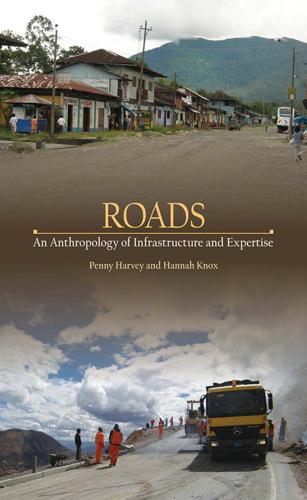
Roads: An Anthropology of Infrastructure and Expertise (Expertise: Cultures and Technologies of Knowledge)
by
Penny Harvey
and
Hannah Knox
Published 22 Jun 2015
Other key works include Bear 2007; Chalfin 2010; Jensen and Winthereik 2013; Larkin 2008; and the Lockrem and Lugo curated collection of Cultural Anthropology (2012). Key interventions on Latin American include Campbell and Hetherington 2014 and Carse 2014. 9. See Graham and Thrift 2007. 10. See, for example, the classic study by James Scott (1998) and, in a different vein, the ethnographic work of Caroline Humphrey (2005). 11. Tsing (1993) has discussed the failure of the promise of infrastructures to deliver in Indonesia; and Navaro-Yashin (2012) has explored the relationship between infrastructures and social differentiation in Cyprus.
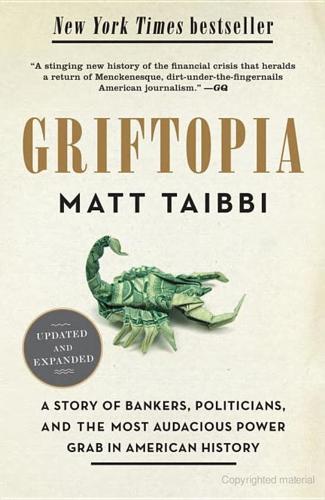
Griftopia: Bubble Machines, Vampire Squids, and the Long Con That Is Breaking America
by
Matt Taibbi
Published 15 Feb 2010
Yes, Goldman might be guilty of many things, they may even have stolen billions of your hard-earned tax dollars to buy themselves yachts and blowjobs, but we can’t throw out the baby with the bathwater! But things did shift a bit. The Narrative was wounded. The mainstream media act just like in the classic studies of herd animals: at the exact instant more than half of the herd makes a move to bolt, they all move. That’s what happened in the summer of 2009: for a variety of reasons, including the Friedman and Aleynikov scandals, the tide of public opinion turned against Goldman. The same on-their-knees/at-your-throat media reversal that George Bush felt at the end of his term was now being experienced by the bank.

The Impulse Society: America in the Age of Instant Gratification
by
Paul Roberts
Published 1 Sep 2014
In dozens of studies, people in possession of some form of power (managerial authority, say, or social status or just plain old wealth) are measurably more likely to violate social norms in the pursuit of self-interest. We’re more apt to be rude, to invade personal space, to use stereotypes, to cheat, and even to break the law. In one now-classic study, University of California–Berkeley psychologist Paul Piff found that “high-status” drivers (those in really nice cars) were nearly four times as likely as low-status drivers to cut off other drivers at an uncontrolled intersection and nearly three times as likely to drive through a crosswalk while a pedestrian was crossing.

How Doctors Think
by
Jerome Groopman
Published 15 Jan 2007
Arthur Elstein studied clinical reasoning, testing physicians' acumen with written descriptions of cases as well as with actors posing as patients with various diseases. Overall, Elstein estimated the rate of error in diagnosis at 15 percent, meaning one in six to seven patients was incorrectly assessed. Elstein's estimate agrees with classic studies of diagnostic errors of 10 to 15 percent, based on autopsies that revealed the missed diagnosis: A. S. Elstein, "Clinical reasoning in medicine," in Clinical Reasoning in the Health Professions, ed. J. Higgs and M. A. Jones (Woburn, Mass.: Butterworth-Heinemann, 1995), pp. 49–59; W. Kirch and C.
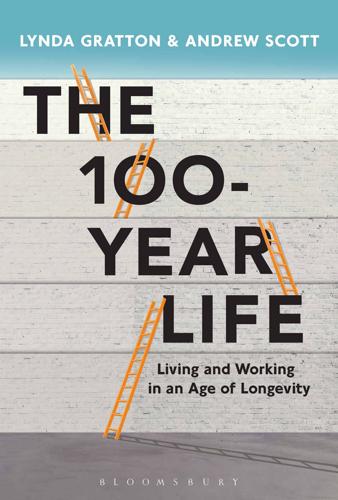
The 100-Year Life: Living and Working in an Age of Longevity
by
Lynda Gratton
and
Andrew Scott
Published 1 Jun 2016
The authors believe that age segregation is closely connected to ageism, since it sets up sharp distinctions between ‘us’ and ‘them’, and leads to stereotyping and associated prejudices. When the three stages become multiple stages, then people from different ages have a chance to engage in similar experiences. As Gordon Allport showed in his classic study, one weapon against stereotypes and prejudices is contact between groups.31 Perhaps as this happens, the age homogeneity of networks will begin to disintegrate, as people from different ages share experiences and, from this, create friendships. Perhaps old age will become less of a ‘separate country’.32 Agenda for Change This book is about what happens when many people across the world live to 100.

The End of College: Creating the Future of Learning and the University of Everywhere
by
Kevin Carey
Published 3 Mar 2015
Justin Smith Morrill, a representative from Vermont, pushed through the first Morrill Land-Grant Act, which was signed into law by President Lincoln. It granted each state rights to federal land in the western territories, the income from which would be used to create at least one college where the leading object shall be, without excluding other scientific and classical studies, and including military tactics, to teach such branches of learning as are related to agriculture and the mechanic arts . . . in order to promote the liberal and practical education of the industrial classes in the several pursuits and professions in life. Mechanic arts and practical education for the industrial classes were a far cry from Horace and Demosthenes, and for good reason.

Exploring the World of Lucid Dreaming
by
Stephen Laberge, Phd
and
Howard Rheingold
Published 8 Feb 2015
We expect current events to be like what has recently happened. Personal interests, occupations, and personality can strongly influence people’s experience. This fact is used in tests like the Rorschach inkblot test that use interpretations of ambiguous figures for personality assessment. In a classic study of imagination, Bartlett noted that subjects asked to interpret inkblots frequently reveal much information about their personal interests and occupation. For example, the same inkblot reminded a woman of a “bonnet with feathers,” a minister of “Nebuchadnezzar’s fiery furnace,” and a physiologist of “an exposure of the basal lumbar region of the digestive system.”2 See Figure 5.2: what does the inkblot look like to you?
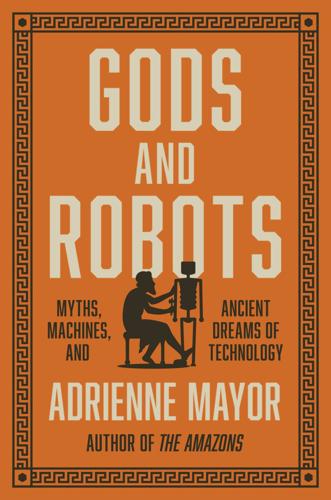
Gods and Robots: Myths, Machines, and Ancient Dreams of Technology
by
Adrienne Mayor
Published 27 Nov 2018
Classical Philology 86, 1:17–29. Donohue, Alice A. 1988. Xoana and the Origins of Greek Sculpture. Oxford. Dougherty, Carol. 2006. Prometheus. London: Routledge. Dow, Sterling. 1937. “Prytaneis. A Study of the Inscriptions Honouring the Athenian Councillors.” Hesperia Suppl. 1, Athens: American School of Classical Studies. Dudbridge, Glen. 2005. “Buddhist Images in Action.” In Books, Tales and Vernacular Culture: Selected Papers on China, 134–50. Leiden: Brill. Dunbabin, Katherine. 1986. “Sic erimus cuncti . . . The Skeleton in Greco-Roman Art.” Jahrbuch des Deutsches Archäologischen Instituts 101 (1986): 185–255.

I, Warbot: The Dawn of Artificially Intelligent Conflict
by
Kenneth Payne
Published 16 Jun 2021
Kennedy’s reflection came in the introduction he wrote to Sorensen, Theodore C. Decision-making in the White House: The Olive Branch or the Arrows. New York: Columbia University Press, 1963, p. xxxi. 16. See my forthcoming article, ‘Empathy and enmity: Kennedy and Khrushchev’s dance of minds’. The classic study is White, Ralph K. Fearful Warriors: A Psychological Profile of U.S.-Soviet Relations. London: Collier Macmillan, 1984. 17. BBC World News Impact, ‘Interview with Mark Sagar and Baby X’, 4 October 2013, https://youtu.be/XBsl3HlB8VE. For the research, Sagar, Mark , Mike Seymour, and Annette Henderson.

The Great Depression: A Diary
by
Benjamin Roth
,
James Ledbetter
and
Daniel B. Roth
Published 21 Jul 2009
Two indispensable books (complete with photos) on the devastating impact of the Great Depression on the everyday life of Americans are The Great Depression: America in the 1930s (Little, Brown, 1993) and Daily Life in the United States, 1920-1940 (Ivan R. Dee, 2002) by David E. Kyvig. John A. Garraty’s Great Depression: A Classic Study of the Worldwide Depression of the 1930s (Anchor Books, 1987) provides a thorough background on the effects of the economic downturn around the world. Radical Visions and American Dreams: Culture and Social Thought in the Depression Years (University of Illinois Press, 1998) by Richard H. Pells offers a valuable cultural history of the era from a leftist perspective.

Overdiagnosed: Making People Sick in the Pursuit of Health
by
H. Gilbert Welch
,
Lisa M. Schwartz
and
Steven Woloshin
Published 18 Jan 2011
Today, however, most abdominal aortic aneurysms are discovered by ultrasound or CT, imaging that can show structures much smaller than three centimeters, which is the diameter of a normal aorta. A two-centimeter difference in what can be detected—less than an inch—may not sound like much, but it is. A classic study of 201 men between ages sixty and seventy-five with hypertension and/or heart disease—the group most likely to have aneurysms—demonstrated just how much ultrasound can affect the apparent prevalence of aneurysms.15 Five aneurysms were found in this population during physical examinations, while eighteen were detected by ultrasound.

The Fourth Revolution: The Global Race to Reinvent the State
by
John Micklethwait
and
Adrian Wooldridge
Published 14 May 2014
Mill was the product of a group of Victorian intellectuals—the philosophical radicals—who devoted their lives to fashioning an alternative to Britain’s ancien régime of landed aristocrats and Anglican clergymen. They included the most important influence on him by far, his father. James Mill (1773–1836) had been born in poverty in Scotland but had earned a plum job with the mighty East India Company by dint of talent and hard work, producing a classic study of Britain’s involvement in India while also supporting his young family as a freelance journalist and training his eldest son, John Stuart, as an intellectual racehorse. James’s great watchwords were “liberty,” “reason,” and “effort,” and he believed that Britain’s traditional overlords were threats to all three.2 How could industry prosper when idle landlords lived off the fruit of other people’s labor?

The Map of Knowledge: How Classical Ideas Were Lost and Found: A History in Seven Cities
by
Violet Moller
Published 21 Feb 2019
Pasche, Sciences at the Court of Frederick II (Belgium: Brepols, 1994) Justin Marozzi, Baghdad: City of Peace, City of Blood (London: Allen Lane, 2014) John Jeffries Martin, Venice Reconsidered: The History and Civilisation of an Italian City State, 1297–1797 (Baltimore, Maryland: Johns Hopkins University Press, 2000) María Rosa Menocal, Ornament of the World: How Muslims, Jews and Christians Created a Culture of Tolerance in Medieval Spain (London: Little, Brown, 2002) Elizabeth Nash, Sevilla, Córdoba and Granada: A Cultural and Literary History (Oxford: Signal Books, 2005) Catherine Nixey, The Darkening Age: The Christian Destruction of the Classical World (London: Macmillan, 2017) John Julius Norwich, A History of Venice (London: Penguin, 2012) Vivian Nutton, The Unknown Galen (London: Institute of Classical Studies, 2002) ———, Ancient Medicine (London: Taylor & Francis, 2004) Norbert Ohler, The Medieval Traveller (Martlesham, Suffolk: Boydell Press, 1989) Katherine Park & Lorraine Daston (eds), The Cambridge History of Science, Volume 3: Early Modern Science (Cambridge: Cambridge University Press, 2016) O.
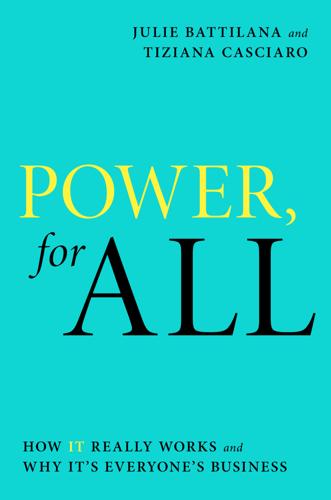
Power, for All: How It Really Works and Why It's Everyone's Business
by
Julie Battilana
and
Tiziana Casciaro
Published 30 Aug 2021
The figures of the auditing department’s formal structure and informal network are reproduced from this article. 8 For an analysis of how the visual representation of networks changes how we interpret them, see Cathleen McGrath, Jim Blythe, and David Krackhardt, “The Effect of Spatial Arrangement on Judgments and Errors in Interpreting Graphs,” Social Networks 19, no. 3 (1997): 223–242. 9 For an empirical study showing the (limited) influence of the formal chart on the advice network of an organization, see Tiziana Casciaro and Miguel Sousa Lobo, “Affective Primacy in Intraorganizational Task Networks,” Organization Science 26, no. 2 (2015): 373–89; for a review of research on the link between formal structure and networks in organizations, see Bill McEvily, Giuseppe Soda, and Marco Tortoriello, “More Formally: Rediscovering the Missing Link between Formal Organization and Informal Social Structure,” Academy of Management Annals 8, no. 1 (2014): 299–345. 10 Krackhardt, “Social Networks and the Liability of Newness,” 166. 11 Battilana and Casciaro, “Change Agents, Networks, and Institutions,” 381–98; Battilana and Casciaro, “The Network Secrets,” 62–68; and Debra Meyerson, “Radical Change, the Quiet Way,” Harvard Business Review 79, no. 9 (2001): 92–100. For a theory of the firm as a political entity, see James G. March, “The Business Firm as a Political Coalition,” The Journal of Politics 24, no. 4 (1962): 662–78. 12 For a classic study of how people gain influence through their network, see Daniel J. Brass, “Being in the Right Place: A Structural Analysis of Individual Influence in an Organization,” Administrative Science Quarterly 29, no. 4 (1984): 518–39. 13 For a historical recounting of the power of networks, see Niall Ferguson, The Square and the Tower: Networks and Power, from the Freemasons to Facebook (New York: Penguin Books, 2017). 14 William Samuelson and Richard Zeckhauser, “Status Quo Bias in Decision-Making,” Journal of Risk and Uncertainty 1, no. 1 (1988): 7–59. 15 Battilana and Casciaro, “The Network Secrets,” 62–68. 16 David Krackhardt measured reputational power by asking every company employee to rate everybody else in the company for their capacity to get things done despite resistance, and their capacity to influence others based on personal magnetism.
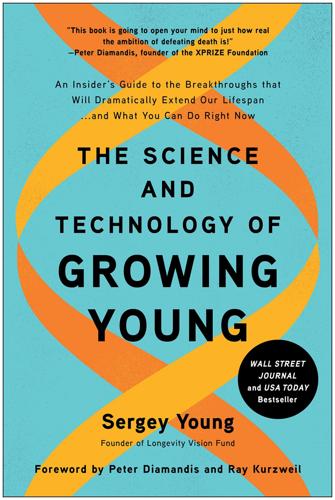
The Science and Technology of Growing Young: An Insider's Guide to the Breakthroughs That Will Dramatically Extend Our Lifespan . . . And What You Can Do Right Now
by
Sergey Young
Published 23 Aug 2021
Cappuccio et al., “Sleep duration and all-cause mortality: a systematic review and meta-analysis of prospective studies,” Sleep 33, no. 5 (2010), https://doi.org/10.1093/sleep/33.5.585. 41Bob Morris, “Arianna Huffington’s Sleep Revolution Starts at Home,” The New York Times, last modified April 28, 2016, https://www.nytimes.com/2016/05/01/realestate/arianna-huffingtons-sleep-revolution-starts-at-home.html; Marie Kondo, “The Joy of Sleep, With Arianna Huffington,” KonMari, accessed July 28, 2020, https://konmari.com/arianna-huffington-sleep/. 42Erin Wigger, “The Whitehall Study,” Unhealthy Work, last modified June 22, 2011, https://unhealthywork.org/classic-studies/the-whitehall-study/; Vicki Brower, “Mind-body research moves towards the mainstream,” EMBO reports 7, no. 4 (2006), https://doi.org/10.1038/sj.embor.7400671. 43“What is Cortisol?,” Endocrine Society, last modified November, 2018, https://www.hormone.org/your-health-and-hormones/glands-and-hormones-a-to-z/hormones/cortisol; “Chronic stress puts your health at risk,” Mayo Clinic, last modified March 19, 2019, https://www.mayoclinic.org/healthy-lifestyle/stress-management/indepth/stress/art-20046037; Bruce S.

Decisive: How to Make Better Choices in Life and Work
by
Chip Heath
and
Dan Heath
Published 26 Mar 2013
This leads us to an important concern about multitracking. Psychologists such as Barry Schwartz have written about the dangers of “choice overload,” our tendency to freeze in the face of too many options. Is multitracking likely to plunge people into choice overload? There is research suggesting that extreme multitracking is detrimental. A classic study by Columbia’s Sheena Iyengar and Mark Lepper monitored the behavior of consumers in a grocery store. One day, the store set up a sampling table with 6 different kinds of jam, and customers loved it; another day, the store set up a table with 24 different kinds of jam, and it was even more popular than the first.
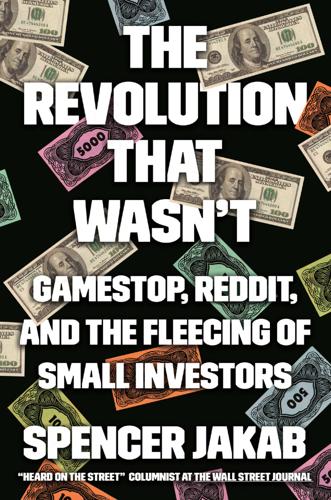
The Revolution That Wasn't: GameStop, Reddit, and the Fleecing of Small Investors
by
Spencer Jakab
Published 1 Feb 2022
Each trade is less costly owing to the elimination of commissions and less of a gap between the bid and offer price, but the new crop of retail investors, including those who propelled the GameStop squeeze, might be leaving nearly as much money on the table as their grandparents. And of course a lot more of them are in the market. “Trading Is Hazardous to Your Wealth” “Trading Is Hazardous to Your Wealth,” a classic study of retail-investor returns by Brad Barber of the Graduate School of Management at the University of California, Davis, and Terrance Odean of the Haas School of Business at the University of California, Berkeley, looked at data from more than sixty-six thousand retail brokerage accounts in the 1990s.[1] It showed that, even without the effect of commissions, the more people traded, the less they earned on average compared with just being passively invested in stocks.
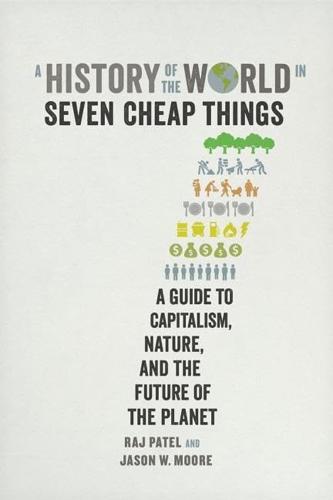
A History of the World in Seven Cheap Things: A Guide to Capitalism, Nature, and the Future of the Planet
by
Raj Patel
and
Jason W. Moore
Published 16 Oct 2017
Feudal lords wanted cash or grain, which could be easily stored and marketed, and they overwhelmingly consumed the modest surpluses wrung from the soil, leaving precious little to reinvest in agriculture.31 Absent the lords’ power and demands, peasants might have shifted to crop mixes that included garden produce alongside grains, perhaps solving the food problem. As for the number of people, family formation and population growth are not determined by an eternal procreational drive but rather shaped by a host of historical conditions turning on culture, class, and land availability. As Guy Bois notes in his classic study of Norman feudalism, a transition to different ways of working land, with more peasant autonomy and power over what and how to grow, would have allowed medieval Europe to feed up to three times as many people.32 But that transition never happened, and feudal arrangements staggered on until receiving a final coup de grace in 1347: the Black Death.33 Europe emerged from the Medieval Warm Period in poor shape.

The Master and His Emissary: The Divided Brain and the Making of the Western World
by
Iain McGilchrist
Published 8 Oct 2012
There is a poetic as well as historical truth in the fact that the imperial vastness of Roman architecture was made possible by the invention of concrete. ‘The everyday life of the average man – his whole political, economic, and social life – was transformed during Late Antiquity’, writes Hans Peter L’Orange, whose book Art Forms and Civic Life in the Late Roman Empire is a classic study of the relationship between the architecture and broader values of this period.150 His study brings out one after another the features of left-hemisphere dominance so beautifully, and in ways that are so relevant by analogy with our own situation, that I allow him to speak for himself. ‘The free and natural forms of the early Empire, the multiplicity and variation of life under a decentralised administration, was replaced by homogeneity and uniformity under an ever-present and increasingly more centralised hierarchy of civil officials.’
…
Their influence on the whole art of the West is undeniable, and extended to the landscape-painting of the Italians, but without preventing the characteristic interest of the Italian eye for nature from finding its own expression’ (p. 181). Later Kenneth Clark was to write that ‘Hubert van Eyck has painted in the Adoration of the Lamb the first great modern landscape … As in a landscape by Claude, our eye floats over the flowery lawns into a distance of golden light’ (1949, p. 15). The classic study of the topic, apart from a passage in Humboldt’s Cosmos, is that of Alfred Biese (1905); in 1882 he had published a volume on the development of a feeling for nature in the Ancient world (Die Entwicklung des Naturgefühls bei den Griechen und Römern), although it has to be admitted that, for a fascinating topic, it is rather a dull read. 36.
…
He lamented the lack of wisdom exhibited by the Cartesian philosophy of his time, and complained that the scholars of the day, ‘although they may become extremely learned in some respects, their culture on the whole (and the whole is really the flower of wisdom) is incoherent’ (1990, p. 77). His thought is known to many through his influence on James Joyce, but more significant is his impact on thinkers as diverse as Horkheimer, Croce, Collingwood, Heidegger, Habermas, Gadamer, Benjamin, Ricoeur, and Auerbach. He was the subject of a classic study by Isaiah Berlin (1976). See also Price, 1999. 32. Gray, 1935, vol. 3, pp. 1107 & 1079. 33. Gilpin, 1808, p. 47. 34. Packe, 1954, p. 16. 35. Mill, 2003, p. 66 (emphasis in original). 36. On reading Helvétius, who gave the opinion that legislation was the most important of earthly pursuits, he gasped: ‘And have I indeed a genius for legislation?
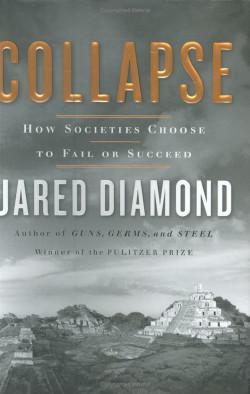
Collapse
by
Jared Diamond
Published 25 Apr 2011
Hence surviving on Tikopia required solving two problems for 3,000 years: How could a food supply sufficient for 1,200 people be produced reliably? And how could the population be prevented from increasing to a higher level that would be impossible to sustain? Our main source of information about the traditional Tikopian lifestyle comes from Firth's observations, one of the classic studies of anthropology. While Tikopia had been "discovered" by Europeans already in 1606, its isolation ensured that European influence remained negligible until the 1800s, the first visit by missionaries did not take place until 1857, and the first conversions of islanders to Christianity did not begin until after 1900.
…
Three books by Mats Lundahl will serve as an introduction into the literature on Haiti: Peasants and Poverty: A Study of Haiti (London: Croom Helm, 1979); The Haitian Economy: Man, Land, and Markets (London: Croom Helm, 1983); and Politics or Markets? Essays on Haitian Undervelopment (London: Routledge, 1992). The classic study of the Haitian revolution of 1781-1803 is C.L.R. James, The Black Ja-cobins, 2nd ed. (London: Vintage, 1963). The standard English-language history of the Dominican Republic is Frank Moya Pons, The Dominican Republic: A National History (Princeton, N.J.: Markus Wiener, 1998). The same author wrote a different text in Spanish: Manual de Historia Dominicana, 9th ed.
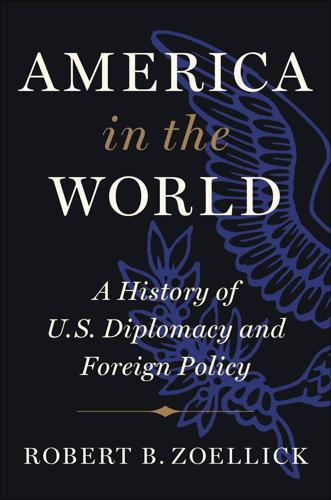
America in the World: A History of U.S. Diplomacy and Foreign Policy
by
Robert B. Zoellick
Published 3 Aug 2020
Then assistant secretary of state Dean Acheson, visiting Greece in December 1944, warned that “[t]he peoples of the liberated countries… are the most combustible material in the world….They are violent and restless.” He foresaw “agitation,” “arbitrary and absolutist controls,” and the “overthrow of governments.”14 Benn Steil, the author of the classic study of the Marshall Plan, points out that after World War I, when borders changed, people generally remained in place. After World War II, Europe was crisscrossed by tens of millions of displaced peoples, former slave laborers, released prisoners of war, and liberated but devastated Jews. Reprisals were a way of life.
…
In September, Colonel Leslie Groves, who had just completed building the massive new Pentagon, became chief of a new “Manhattan Engineering District” project. Bush became head of a three-person committee that would serve as a “board of directors,” with Conant guiding day-to-day issues.41 In Danger and Survival, the classic study of the first fifty years of the atomic bomb, McGeorge Bundy concluded that Bush was the “indispensable man” in the U.S. program. Bush understood the science, the engineering, and FDR’s Washington. Bush also had a direct relationship with the president—and Roosevelt’s trust.42 Bush did not engage in debates about the goals of atomic research.
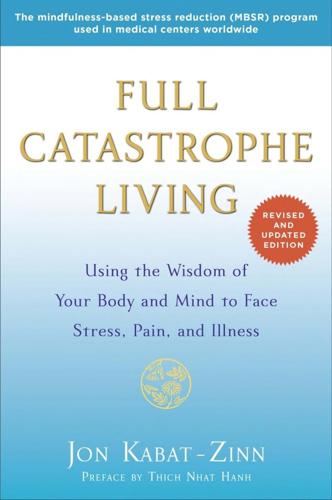
Full Catastrophe Living (Revised Edition): Using the Wisdom of Your Body and Mind to Face Stress, Pain, and Illness
by
Jon Kabat-Zinn
Published 23 Sep 2013
Self-Efficacy: Your Confidence in Your Ability to Grow Influences Your Ability to Grow One thought pattern that appears to be extremely powerful in improving health status is what is called self-efficacy. Self-efficacy is a belief in your ability to exercise control over specific events in your life. It reflects confidence in your ability to actually do things, a belief in your ability to make things happen, even when you might have to face new, unpredictable, and stressful occurrences. Classic studies by Dr. Albert Bandura and his colleagues at Stanford University Medical School showed that a strong sense of self-efficacy is the best and most consistent predictor of positive health outcomes in many different medical situations, including who will recover most successfully from a heart attack, who will be able to cope well with the pain of arthritis, and who will be able to successfully make lifestyle changes (such as quitting smoking).
…
They also studied self-referential processing in the narrative brain region described earlier in the Toronto study (page xlii), which is involved in mind wandering in general and, in people with social anxiety, with an exaggerated and highly critical self-focus that makes social interactions very challenging and unsatisfying for them. They showed that activity in this narrative region was reduced after MBSR, suggesting greater control over such negative self-perspectives.† In another classic study, Dr. Lynch showed that people lived longer after a myocardial infarction if they had a pet than if they didn’t. He also showed that just the presence of a friendly animal can decrease one’s blood pressure. This is suggestive evidence that relationality is key to our health. And it is relationality above all else, we might say, that is at the heart of mindfulness.

NurtureShock: New Thinking About Children
by
Po Bronson
and
Ashley Merryman
Published 2 Sep 2008
Simultaneously as they learn to craft and maintain a lie, kids also learn what it’s like to be lied to. But children don’t start out thinking lies are okay, and gradually realize they’re bad. The opposite is true. They start out thinking all deception—of any sort—is bad, and slowly realize that some types are okay. In a now classic study by University of Queensland’s Dr. Candida Peterson, adults and children of different ages watched ten video-taped scenarios of different lies—from benevolent white lies to manipulative whoppers. Children are much more disapproving of lies and liars than adults are; children are more likely to think the liar is a bad person and the lie is morally wrong.

Globish: How the English Language Became the World's Language
by
Robert McCrum
Published 24 May 2010
Britain’s economic indebtedness to the United States would soon be matched culturally and socially. In May 1917, the young Aldous Huxley, glimpsing the future, wrote in a letter that ‘France is really a first class power no longer. We [Britain] shall go on till on a level with Haiti and Liberia.’ As Paul Fussell puts it in his classic study The Great War and Modern Memory, ‘The economic ruin uncomplete by the Great War was finished by the Second, which necessitated a replay, but much magnified, of immense indebtedness to the United States. The Americanization of Europe from 1945 to the late sixties was the result.’ In 1919 the idea of such ‘Americanization’ was still as exotic and intoxicating as ragtime or the dry martini.

Affluenza: The All-Consuming Epidemic
by
John de Graaf
,
David Wann
,
Thomas H Naylor
and
David Horsey
Published 1 Jan 2001
“I call our work ‘gathering with a sense of purpose,’” says Roy. “I really believe that if we could get everyone in the country to go through our discussion courses, we could change the culture overnight.” Roy’s beliefs are right on target with research about how, and why, behavior change happens. Commitment, trust, and intent are all key factors. In one classic study, conducted thirty years ago, a researcher posed as a sunbather, spreading a blanket near another sunbather. After a few minutes, he asked, “Excuse me, I’m here alone and have no matches—do you have a light?” The researcher then got up and walked down the beach, leaving his blanket and radio behind.
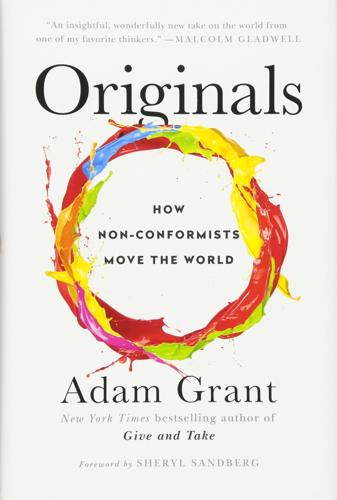
Originals: How Non-Conformists Move the World
by
Adam Grant
Published 2 Feb 2016
If you’re the first out of the gate with a new product, service, or technology, you can move up the learning curve earlier, gobble up prime space, and monopolize customers. These edges create barriers to entry for your competitors: their own efforts to innovate will be stifled by your patents and superior capabilities, and their growth will be stymied by the fact that it’s expensive to convince customers to make a switch. In a classic study, marketing researchers Peter Golder and Gerard Tellis compared the success of companies that were either pioneers or settlers. The pioneers were first movers: the initial company to develop or sell a product. The settlers were slower to launch, waiting until the pioneers had created a market before entering it.

Servant Economy: Where America's Elite Is Sending the Middle Class
by
Jeff Faux
Published 16 May 2012
But finance has a split personality. Lurking in the soul of the cautious, conventional Dr. Jekyll is an economically murderous Mr. Hyde who breaks out from time to time in a destructive speculative rampage. Virtually from the beginning of capitalism, money markets have shown a tendency to become casinos. In his classic study, Manias, Panics and Crashes: A History of Financial Crises, economic historian Charles Kindleberger observed that financial booms had led to busts in virtually every part of the capitalist world since the seventeenth century. The objects of financial desire differ—coins, tulips, real estate, commodities, mines, oil wells, housing, canals, roadways, government bonds—but the manias and panics follow a similar pattern.
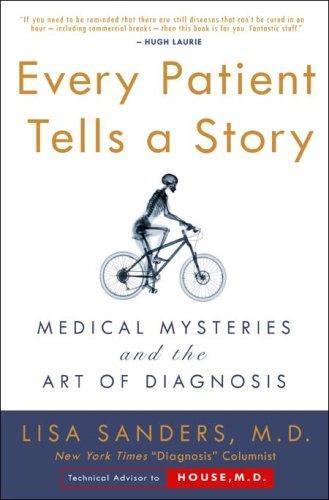
Every Patient Tells a Story
by
Lisa Sanders
Published 15 Jan 2009
It’s essential to know how well each of these individual tests performs. But this research still leaves the big question unanswered: is there any evidence that this old-fashioned practice really makes a difference in how patients do? There is surprisingly little research on this. Several now classic studies done in the 1960s and 1970s tried to assess which tools are most useful in helping doctors make a diagnosis. In these studies the most important tool was the simplest—doctors were able to correctly diagnose patients’ illnesses in most cases just by talking. The patient’s story contained the diagnostic tip-off up to 70 percent of the time.
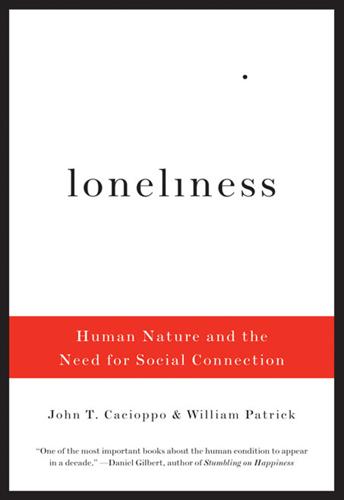
Loneliness: Human Nature and the Need for Social Connection
by
John T. Cacioppo
Published 9 Aug 2009
Health, Wealth, and Happiness Most of us eventually learn that genuine happiness over time does not equate with anything as simple as more gadgets, a bigger car, or a full belly. Happiness is not merely the opposite of pain, sadness, or discomfort.15 Nor is genuine happiness simply a transient mood state.16 Years ago a classic study showed that, within two years, the happiness of lottery winners, as well as the happiness of accident victims left quadriplegic by their injuries, returned to approximately the same level enjoyed by the particular individuals before they experienced either their windfall or their misfortune.17 Our research with older residents of Cook County has shown a similar stability in levels of happiness when tested over subsequent years, suggesting that it has a great deal to do with one’s fundamental disposition.

The Globalization Paradox: Democracy and the Future of the World Economy
by
Dani Rodrik
Published 23 Dec 2010
My account of the interwar period relies heavily on Ahamed’s fascinating book. 28 Laura Beers, “Education or Manipulation? Labour, Democracy, and the Popular Press in Interwar Britain,” Journal of British Studies, 48 (January 2009), p. 129. 29 Ibid. 30 Findlay and O’Rourke, Power and Plenty, p. 451. 31 The classic study of this experience is Albert O. Hirschman’s National Power and the Structure of Foreign Trade (Berkeley: University of California Press, 1980, first published 1945). 32 Findlay and O’Rourke, Power and Plenty, Table 8.3. As these authors note (p. 467) there is evidence that countries in the periphery that resorted to protection recovered sooner from (or were less affected by) the Great Depression. 33 See Barry Eichengreen and Doug Irwin, “The Protectionist Temptation: Lessons from the Great Depression for Today,” VoxEU.org, March 17, 2009, http://voxeu.org/index.php?

The New New Thing: A Silicon Valley Story
by
Michael Lewis
Published 29 Sep 1999
Beneath the hospital bill and the clinical description of Clark's shattered leg was a rough draft of a paper written by Clark, and dated just after his motorcycle accident. His paper was called "The Telecomputer." Page 50 4 Disorganization Man In 1956 a Fortune magazine writer named William H. Whyte published his classic study of American corporate life, The Organization Man. The book found its way onto the shelf crammed with evocative 1950s titles such as The Lonely Crowd and The Man in the Gray Flannel Suit. All these texts tried in one way or another to explain the strange uniformity of the American businessman. He commuted to work in his immaculate gray suit from his neat suburban tract house.

Rogue States
by
Noam Chomsky
Published 9 Jul 2015
Shafiqul Islam, “Capitalism in Conflict,” Foreign Affairs, special issue on “America and the World” (Winter 1989-90). 27. For discussion, keeping to the special case of protectionism, see Paul Bairoch, Economics and World History (Univ. of Chicago Press, 1993). Among many other sources, see Frederic Clairmont’s classic study, The Rise and Fall of Economic Liberalism (Asia Publishing House, 1960; reprinted and updated, Third World Network, 1996). On the general picture, see my World Orders Old and New, chap. 2. On the historic role of the state system (often military) in economic development in the US, see Nathan Rosenberg, Inside the Black Box (Cambridge Univ.
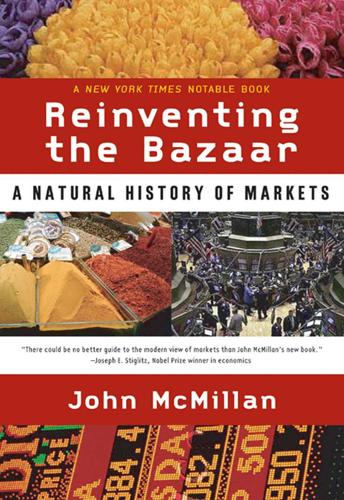
Reinventing the Bazaar: A Natural History of Markets
by
John McMillan
Published 1 Jan 2002
American Economic Review 85, 872–890. Temple, Jonathan. 1999. “The New Growth Evidence.” Journal of Economic Literature 37, 112–156. Templer, Robert. 1999. Shadows and Wind: A View of Modern Vietnam. New York, Penguin. Thompson, Homer A. 1976. The Athenian Agora: A Short Guide, Princeton, N.J., American School of Classical Studies at Athens. Timmer, C. Peter. 1997. “How Well Do the Poor Connect to the Growth Process?” Discussion Paper 17, Harvard Institute for International Development, Cambridge. Trouiller, Patrice, and Olliaro, Piero. 1999. “Drug Development Output: What Proportion for Tropical Diseases?” Lancet 354 (July 10).
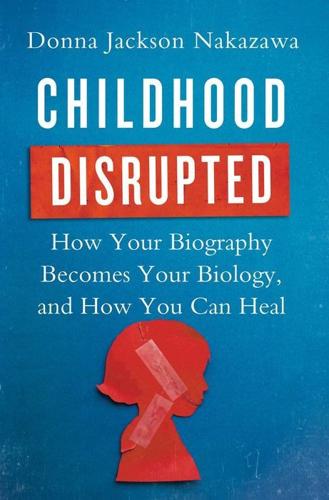
Childhood Disrupted: How Your Biography Becomes Your Biology, and How You Can Heal
by
Donna Jackson Nakazawa
Published 6 Jul 2015
The child can’t predict exactly when, why, or from where the next emotional or physical hit is coming. Researchers refer to stress that happens in unpredictable ways and at unpredictable times as “chronic unpredictable stress,” and they have been studying its effects on animal development for decades—long before Felitti and Anda’s investigation into ACEs first began. In classic studies, investigators expose animals to different types of stressors for several weeks, to see how those stressful stimuli affect their behavior. In one experiment, McCarthy and her postdocs exposed male and female rats to three weeks of chronic unpredictable mild stress. Every day, rats were exposed to a few low-grade stressors: their cage was rotated; they were given a five-minute swim, their bedding was dampened; they went for a day without food; they were physically restrained for thirty minutes; or they were exposed to thirty minutes of strobe lights.

The Sirens of Mars: Searching for Life on Another World
by
Sarah Stewart Johnson
Published 6 Jul 2020
HUNDREDS OF YEARS The mini-DVD is expected to last approximately five hundred years. Bruce Betts, “We Make It Happen,” The Planetary Report. THE OLDEST PIECES INCLUDED “Visions of Mars: The Stories,” The Planetary Society. VOLTAIRE’S “MICROMÉGAS” Voltaire, “Micromégas,” Blake Linton Wilfong, ed., Free Sci-Fi Classics. STUDY DROSOPHILA Jeffrey R. Powell, Progress and Prospects in Evolutionary Biology: The Drosophila Model (Oxford University Press, 1997). DUTCH BOOK Kees Boeke, Cosmic View: The Universe in 40 Jumps (New York: John Day Company, 1957). This book was also the inspiration for a famous short film, Powers of Ten, produced by Ray and Charles Eames in 1977.
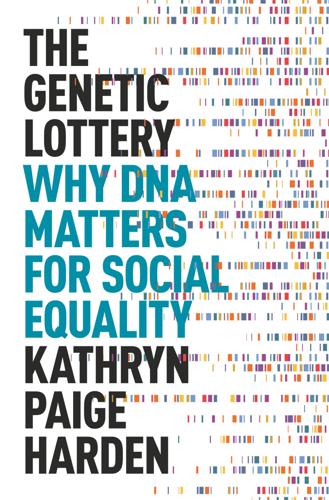
The Genetic Lottery: Why DNA Matters for Social Equality
by
Kathryn Paige Harden
Published 20 Sep 2021
Turkheimer notes that the e2 coefficient for IQ is only a bit larger than what is observed for height—0.2 in adulthood, 0.25 in childhood, versus 0.1 for height. But even that marginal difference could be due to greater difficulty with measuring IQ reliably. In studies using statistical techniques to correct for measurement error, the e2 for intelligence test performance is closer to 0.1. In a classic study of twins separated at birth and raised in separate households, the average difference in intelligence test scores between twins was about equal to the average difference in the test scores of a single person who took the test twice.19 That’s general cognitive ability, but we can also examine more-basic cognitive processes.

100 Years of Identity Crisis: Culture War Over Socialisation
by
Frank Furedi
Published 6 Sep 2021
In turn, the weakening of moral authority has both undermined the status of adulthood and led to a crisis of socialisation. The significance of this development has acquired its most striking expression in society’s struggle to endow meaning to people’s identity. This development was eloquently explained by the sociologist Peter Berger and his collaborators in their classic study, The Homeless Mind (1974). The authors of this text drew attention to the weakening of what they characterised as the ‘identity defining powers of institutions’. Their emphasis on the difficulty that society’s institutions had in providing norms and values through which individuals could lend meaning to their values drew attention to what would – with the passing of time − turn into one of the greatest problems facing public life.
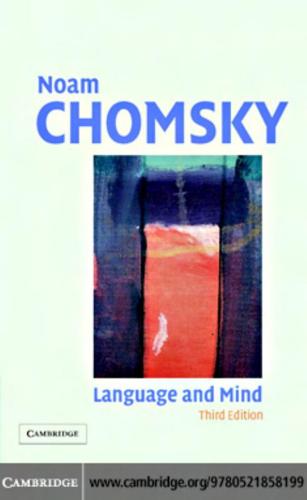
Language and Mind
by
Noam Chomsky
Published 1 Jan 1968
This poses a problem for the biologist, since, if true, it is an example of true “emergence” – the appearance of a qualitatively different phenomenon at a specific stage of complexity of organization. Recognition of this fact, though formulated in entirely different terms, is what motivated much of the classical study of language by those whose primary concern was the nature of mind. And it seems to me that today there is no better or more promising way to explore the essential and distinctive properties of human intelligence than through the detailed investigation of the structure of this unique human possession.

The Alternative: How to Build a Just Economy
by
Nick Romeo
Published 15 Jan 2024
This has helped legitimize behavior that was previously subject to moral judgment. If it’s simply human nature to pursue as much gain as possible, such profit seeking can’t be blameworthy. It’s just the way we are. The removal of moral considerations from the domain of economic behavior has been a gradual process. In a classic study, the economic historian Albert Hirschman charted a transformation in moral values and vocabulary across multiple European countries during the seventeenth and eighteenth centuries. Before and during this time, the desire to accumulate wealth was often judged in explicitly moral terms and regarded as a dangerous and potentially insatiable human drive.
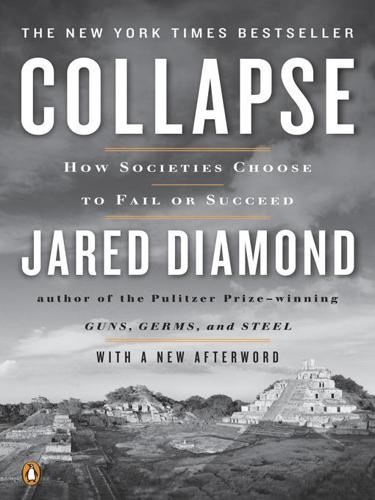
Collapse: How Societies Choose to Fail or Succeed
by
Jared Diamond
Published 2 Jan 2008
Hence surviving on Tikopia required solving two problems for 3,000 years: How could a food supply sufficient for 1,200 people be produced reliably? And how could the population be prevented from increasing to a higher level that would be impossible to sustain? Our main source of information about the traditional Tikopian lifestyle comes from Firth’s observations, one of the classic studies of anthropology. While Tikopia had been “discovered” by Europeans already in 1606, its isolation ensured that European influence remained negligible until the 1800s, the first visit by missionaries did not take place until 1857, and the first conversions of islanders to Christianity did not begin until after 1900.
…
Three books by Mats Lundahl will serve as an introduction into the literature on Haiti: Peasants and Poverty: A Study of Haiti (London: Croom Helm, 1979); The Haitian Economy: Man, Land, and Markets (London: Croom Helm, 1983); and Politics or Markets? Essays on Haitian Undervelopment (London: Routledge, 1992). The classic study of the Haitian revolution of 1781-1803 is C.L.R. James, The Black Jacobins, 2nd ed. (London: Vintage, 1963). The standard English-language history of the Dominican Republic is Frank Moya Pons, The Dominican Republic: A National History (Princeton, N.J.: Markus Wiener, 1998). The same author wrote a different text in Spanish: Manual de Historia Dominicana, 9th ed.

Global Catastrophic Risks
by
Nick Bostrom
and
Milan M. Cirkovic
Published 2 Jul 2008
Leslie, J. ( 1998) . The End of the World: The Science and Ethics of Human Extinction. London, New York. Routledge. A catalogue of real apocalyptic threats facing humanity. M anuel, F.E. and Fritzie, P . M . (1979) . Utopian Thought in the Western World (Cambridge: Harvard University Press) . The classic study of utopian thought and thinkers, from Bacon to Marx. Noble, D. (1998) . The Religion of Technology: The Divinity of Man and the Spirit of Invention (New York: Alfred A. Knopf) . A somewhat overwrought attempt to unveil the millennia! and religious roots of the space programme, artificial intelligence, and genetic engineering.
…
From the human experience thus far, especially in sciences such as physics and astronomy, the cost ofrunning large simulations may be very high, though it is still dominated by the capital cost of computer processors and human personnel, not the energy cost. However, as the hardware becomes cheaper and more powerful and the simulating tasks more complex, we may expect that at some point in future the energy cost will become dominant. Computers necessarily dissipate energy as heat, as shown in classical studies of Landauer ( 1 961) and Brillouin ( 1 962) with the finite minimum amount ofheat dissipation required per processing of 1 bit of information. 1 5 Since the simulation of complex human society will require processing a huge amount of information, the accompanying energy cost is necessarily huge.

The Railways: Nation, Network and People
by
Simon Bradley
Published 23 Sep 2015
His was a very personal business, and – like those of other early railway contractors – it effectively died with its founder. Brassey was perhaps the closest thing to a railroad baron that the British network produced. As for a British counterpart to the mighty folk heroes of the American frontier, the railway navvy has a very good claim. The archetype is described in Terry Coleman’s classic study The Railway Navvies (1965). Distinctive in his dress of bright velveteens, impenetrable in his slang, contemptuous of religion and hostile to the conventions of marriage and homemaking, the navvy lived apart from society in temporary shack-towns, until a rumour of better-paid work elsewhere sent him off ‘on the tramp’ once again.
…
Yet the new lines, infrastructure and improved rolling stock no longer delivered the same rates of return that had excited earlier generations of investors. Especially expensive projects included the enormous new stations and goods depots that were required to service the ever-growing cities. John Kellett’s classic study of railways and urban change cites the example of Huskisson goods station, built in the 1870s in Liverpool’s docks at a cost of £712,527.** If the traffic handled there had been surcharged at a rate to reflect the interest on this investment, the increase would have amounted to a prohibitive 3s 10½d per ton.
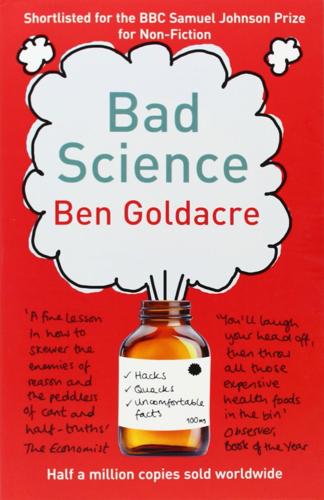
Bad Science
by
Ben Goldacre
Published 1 Jan 2008
The anthropologist Claude Levi-Strauss, in his paper ‘The Sorcerer and his Magic’, doesn’t quite know what to make of it: ‘but it is evident that he carries on his craft conscientiously, takes pride in his achievements, and warmly defends the technique of the bloody down against all rival schools. He seems to have completely lost sight of the fallaciousness of the technique which he had so disparaged at the beginning.’ Of course, it may not even be necessary to deceive your patient in order to maximise the placebo effect: a classic study from 1965—albeit small and without a control group—gives a small hint of what might be possible here. They gave a pink placebo sugar pill three times a day to ‘neurotic’ patients, with good effect, and the explanation given to the patients was startlingly clear about what was going on: A script was prepared and carefully enacted as follows: ‘Mr.

The Irrational Economist: Making Decisions in a Dangerous World
by
Erwann Michel-Kerjan
and
Paul Slovic
Published 5 Jan 2010
Pauly, The Wharton School Mark Pauly is the Bendheim Professor in the Department of Health Care Systems at The Wharton School of the University of Pennsylvania. He received his PhD in economics from the University of Virginia and is a former commissioner on the Physician Payment Review Commission, an active member of the Institute of Medicine, and one of the nation’s leading health economists. His classic study on the economics of moral hazard was the first to point out how health insurance coverage may affect patients’ use of medical services. Professor Pauly’s interest in health policy has led him to investigate ways to reduce the number of uninsured people through tax credits for public and private insurance and to create an appropriate design for Medicare in a budget-constrained environment.
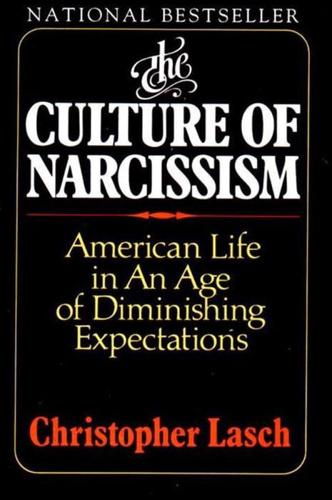
The Culture of Narcissism: American Life in an Age of Diminishing Expectations
by
Christopher Lasch
Published 1 Jan 1978
Work now retains so fewjtraces of play and the daily routine affords so few oppor, , , , , tunities to escape from the ironic self-consciousness that has itself assumed the qualities of a routine that people seek abandon in , play with more than the usual intensity. "At a time when image is one of the most frequently used words in American speech and writing, Joseph Epstein notes in a recent essay on sports, "one does not too often come upon the real thing The history of culture as Huizinga showed in his classic study of play Homo Ludens, appears from one perspective to consist of the gradual eradication of the play element from all cultural forms-from religion from the law, from warfare, above all from " " . , . , lete's pleasure to the spectator's, and reduced the spectator himself to a state of vegetative passivity-the very antithesis of the health and vigor sport ideally promotes.
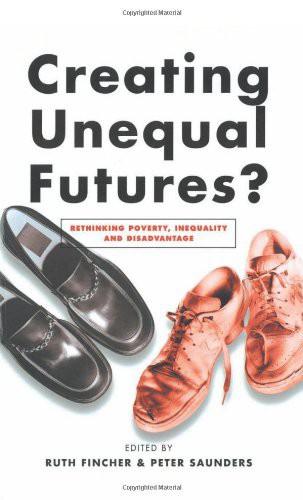
Creating Unequal Futures?: Rethinking Poverty, Inequality and Disadvantage
by
Ruth Fincher
and
Peter Saunders
Published 1 Jul 2001
The CDC, which facilitates and promotes joint venture arrangements between industry and indigenous people, will have its previously fixed capital base of $60 million augmented by an additional $10 million. LAND In a Western sense, land is a special case of capital. Notwithstanding the more romantic writings in classical studies of political economy, land is now regarded in economic theory as another 135 PDF OUTPUT c: ALLEN & UNWIN r: DP2\BP4401W\MAIN p: (02) 6232 5991 f: (02) 6232 4995 36 DAGLISH STREET CURTIN ACT 2605 135 CREATING UNEQUAL FUTURES? input in the production process. In contrast, land rights are a central plank of social justice and reconciliation processes for indigenous peoples.
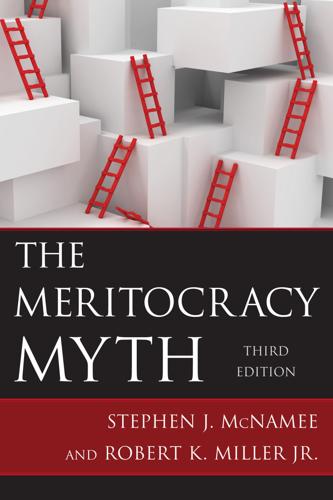
The Meritocracy Myth
by
Stephen J. McNamee
Published 17 Jul 2013
Numerous follow-up studies (Granovetter 1983; Lin, Vaughn, and Ensel 1981; Lin, Ensel, and Vaughn 1981; Lin 1982; Lin and Dumin 1986; DeGraaf and Flap 1988; Lin and Erickson 2008; Kendall 2008) demonstrate that weak ties are “strong” in facilitating occupational attainment. In short, whom you know matters. For example, in one early and now classic study of job placement, Granovetter (1974) showed that 56 percent of all job applicants found out about the job through a personal contact. An additional 19 percent of job applicants found out about the job through third-party contacts such as advertisements, employment agencies, university placement services, professional associations, or other formal means.
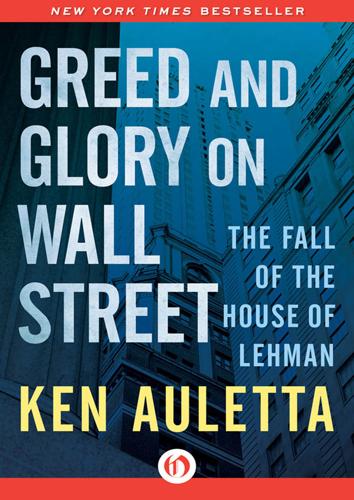
Greed and Glory on Wall Street: The Fall of the House of Lehman
by
Ken Auletta
Published 28 Sep 2015
Volatility, not stability, became the normal market environment—in 1983 alone, thirty billion shares or 60 percent of all outstanding stock changed hands. Among the traders who dominated the market, Lew Glucksman was one of the best. To the traders he hired Glucksman often handed out free copies of Charles Mackay’s Extraordinary Popular Delusions and the Madness of Crowds, the classic study of mob psychology and the irrationality of markets.* It gnawed at Glucksman that despite this rise of trading activity on the Street and at Lehman, despite the new importance of commercial paper and equities—trading and sales functions for which he had long been responsible at Lehman—he felt traders were still being treated shabbily.

The Constitution of Knowledge: A Defense of Truth
by
Jonathan Rauch
Published 21 Jun 2021
Haidt speaks of moral beliefs and statements, as opposed to identity-defining ones; I take the concepts to be similar. 21. See Dominic Abrams and John Levine, “The Formation of Social Norms: Revisiting Sherif’s Autokinetic Illusion Study,” in J. R. Smith and S. A. Haslam, eds., Psychology: Revisiting the Classic Studies (Sage Publications, 2012). 22. Saul McLeod, “Solomon Asch—Conformity Experiment,” Simply Psychology, December 28, 2018. 23. Interviewed by Sam Harris, Making Sense, podcast, October 8, 2019, 48:00. 24. Paul Starobin, Madness Rules the Hour: Charleston, 1860 and the Mania for War (PublicAffairs, 2017). 25.

Age of Anger: A History of the Present
by
Pankaj Mishra
Published 26 Jan 2017
Leo Damrosch, Jean-Jacques Rousseau: Restless Genius (New York, 2005), is an excellent biography. For those inclined to explore further the contradictions of this extraordinary figure, the two volumes by Jean Guéhenno would be very rewarding: Jean-Jacques Rousseau, trans. John and Doreen Weightman (New York, 1966). The classic study of Rousseau is by Jean Starobinski, Jean-Jacques Rousseau: Transparency and Obstruction, trans. Arthur Goldhammer (Chicago, 1988). See also Judith Shklar, Men and Citizens: A Study of Rousseau’s Social Theory (Cambridge, 1969); Arthur Melzer, The Natural Goodness of Man: On the System of Rousseau’s Thought (Chicago, 1990); and Mark Hulliung, The Autocritique of Enlightenment: Rousseau and the Philosophes (Cambridge, MA, 1994).
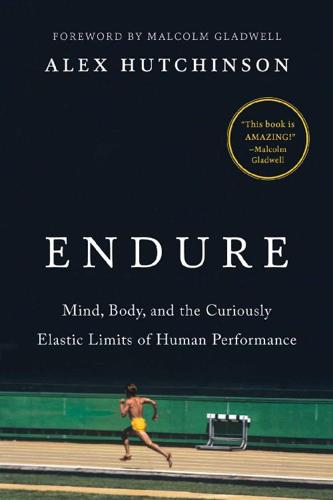
Endure: Mind, Body, and the Curiously Elastic Limits of Human Performance
by
Alex Hutchinson
Published 6 Feb 2018
As a restless undergraduate in the late 1970s, Joyner had been on the verge of dropping out of the University of Arizona—at six-foot-five, and with physical endurance that eventually enabled him to run a 2:25 marathon, he figured he might make a pretty good firefighter—when he was outkicked at the end of a 10K race by a grad student from the school’s Exercise and Sport Science Laboratory.39 After the race, the student convinced Joyner to volunteer as a guinea pig in one of the lab’s ongoing experiments, a classic study that ended up demonstrating that lactate threshold, the fastest speed you can maintain without triggering a dramatic rise in blood lactate levels, is a remarkably accurate predictor of marathon time. The seed was planted and Joyner was soon volunteering at the lab and embarking on the first stages of an unexpected new career trajectory that eventually led to a position as physician-researcher at the Mayo Clinic, where he is now one of the world’s mostly widely cited experts on the limits of human performance.
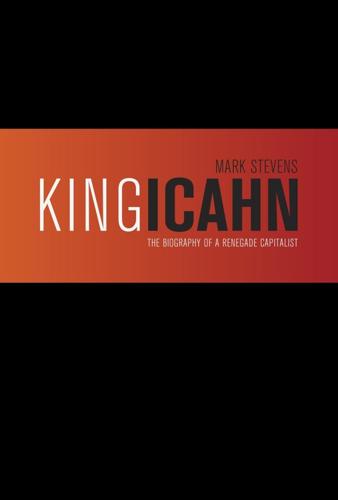
King Icahn: The Biography of a Renegade Capitalist
by
Mark Stevens
Published 31 May 1993
The product of a 1971 merger that linked two small, struggling securities firms—Burnham & Company and Drexel Firestone—the combined entity would rise to power on the strength of a young Wharton School graduate, Michael Milken, who had launched his business career with Drexel Firestone. Fascinated by a now-classic study of corporate bonds (conducted by W. Braddock Hickman), Milken came to the conclusion that bonds carrying low ratings from Moody’s or Standard & Poor’s were not the high risk instruments many thought them to be. In fact, by investing in a broad mix of long-term, low-rated bonds (which paid higher interest than top-grade bonds) investors could secure more attractive returns without assuming additional risks.

Drunk: How We Sipped, Danced, and Stumbled Our Way to Civilization
by
Edward Slingerland
Published 31 May 2021
Even 12,000 years ago, as Wadley and Hayden note, villages in the Fertile Crescent contained 200 to 300 people and already showed signs of private property, wealth inequality, and social stratification. After that, things got much worse, very quickly. Empirical studies have shown that the effect of alcohol on the human response to stress is similar to its effect on that of rats, as might be expected from our survey of alcohol’s physiological effects in Chapter Two. In one classic study,35 male volunteers from the Indiana University community were subjected to arguably more intense stressors than overcrowding in a cage: They were made to watch a digital clock countdown from 360 to 0, at which point they would receive a painful electric shock or have to give an extemporaneous speech, into a camera, on the topic, “What I like and dislike about my physical appearance.”
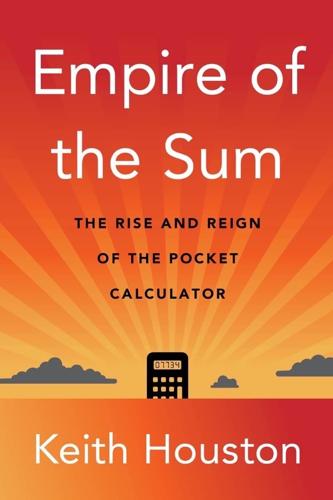
Empire of the Sum: The Rise and Reign of the Pocket Calculator
by
Keith Houston
Published 22 Aug 2023
(Suite Et Fin),” Revue Archéologique 3, no. 1 (March 27, 1846): 293–304. 24 “Alexandros Rizos Rangavis,” Aiora Press, accessed March 27, 2021, https://aiorabooks.com/2019/05/24/alexandros-rangavis/; Alexander Kitroeff, “Memoirs of First Greek-US Ambassador Offer Glimpse Into Post-Civil War America,” The Pappas Post (Gregory C. Pappas, July 29, 2020), https://www.pappaspost.com/memoirs-of-first-greek-us-ambassador-offer-glimpse-into-post-civil-war-america/. 25 Mabel Lang, “Herodotos and the Abacus,” Hesperia: The Journal of the American School of Classical Studies at Athens 26, no. 3 (April 16, 1957): 271–288, https://doi.org/10.2307/147100. 26 Herodotus, The Histories, trans. A. Godley (Cambridge, MA: Harvard University Press, 1920), 2.36.4, http://www.perseus.tufts.edu/hopper/text?doc=urn:cts:greekLit:tlg0016.tlg001.perseus-eng1. 27 Keith F. Sugden, “A History of the Abacus,” The Accounting Historians Journal 8, no. 2 (April 16, 1981): 3–5; “Papyrus Sallier 4 (EA10184,6),” British Museum, accessed April 16, 2021, https://www.britishmuseum.org/collection/object/Y_EA10184-6. 28 Demosthenes, Demosthenes with an English Translation, trans.
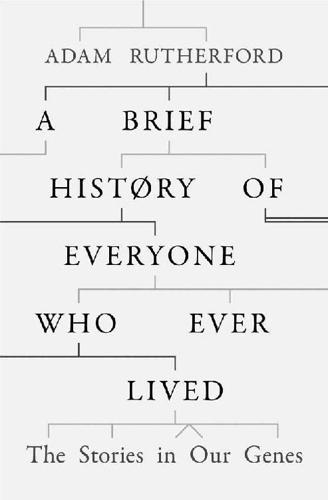
A Brief History of Everyone Who Ever Lived
by
Adam Rutherford
Published 7 Sep 2016
Covici, 1927; New York: Covici Friede, 1927; reprinted Ann Arbor, MI: University of Michigan Press, 1961) Adhikari, K., et al., ‘A genome-wide association scan in admixed Latin Americans identifies loci influencing facial and scalp hair features’, Nature Communications 7 (2016) Leslie, Stephen, et al., ‘The fine-scale genetic structure of the British population’, Nature 519 (2004), 309 Chapter 3: When we were kings Charlemagne Rohde, Douglas L.T., Olson, Steve and Chang, Joseph T., ‘Modelling the recent common ancestry of all living humans’, Nature 431 (2004), 562–6 Chang, Joseph, ‘Recent common ancestors of all present-day individuals’, Advances in Applied Probability 31 (1999), 1002–26 Ralph, Peter and Coop, Graham, ‘The Geography of Recent Genetic Ancestry across Europe’, PLOS Biology 11: 5 (2013) ‘Revealed: the Indian ancestry of William’, The Times (14 June 2013) Lucotte, Gérard, et al., ‘Haplogroup of the Y Chromosome of Napoléon the First’, Journal of Molecular Biology Research 1: 1 (2011) Richard III Seguin-Orlando, Andaine, et al., ‘Identification of the remains of King Richard III’, Nature Communications 5 (2014) Edwards, Russell, Naming Jack the Ripper: New Crime Scene Evidence, A Stunning Forensic Breakthrough, The Killer Revealed (Sidgwick & Jackson, 2014) The collapse of the Hapsburgs Alvarez, Gonzalo, Ceballos, Francisco C. and Quinteiro, Celsa, ‘The Role of Inbreeding in the Extinction of a European Royal Dynasty’, PLOS ONE 4: 4 (2009) Álvarez, Gonzalo, Ceballos, Francisco C. and Berra, Tim M., ‘Darwin was right: inbreeding depression on male fertility in the Darwin family’, Biological Journal of the Linnean Society 114 (2015), 474–83 Fareed, Mohd and Afzal, Mohammad, ‘Estimating the Inbreeding Depression on Cognitive Behavior: A Population Based Study of Child Cohort’, PLOS ONE 9: 10 (2014) McQuillan, Ruth, et al., ‘Evidence of Inbreeding Depression on Human Height’, PLOS GENETICS 8: 7 (2012) http://dx.doi.org/10.1371/journal.pgen.1002655 Kalaydjieva, Luba, et al., ‘Reconstructing the Population History of European Romani from Genome-wide Data Genetic studies of the Roma (Gypsies): a review’, BMC Medical Genetics 2 (2001), 5 Waller, John C., et al., ‘Prevalence of congenital anomaly syndromes in a Spanish Gypsy population’, Journal of Medical Genetics 29: 7 (1992), 483 Gazal, Steven, et al., ‘High level of inbreeding in final phase of 1000 Genomes Project’, Scientific Reports 5 (2015) Chapter 4: The end of race Uglow, Jenny, The Lunar Men: The Friends Who Made the Future 1730–1810 (Faber and Faber, 2003) Galton on cakes Galton, Francis, ‘Cutting a round cake on scientific principles’ Nature 75 (1906), 173 Galton, Francis, ‘On the Anthropometric Laboratory at the late International Health Exhibition’, Journal of the Anthropological Institute 14 (1884), 12 Galton, Francis, Hereditary Genius: An Inquiry Into Its Laws and Consequences (Macmillan, 1869) Hirschfeld, Ludwik and Hirschfeld, Hanka, ‘Serological Differences between the blood of different races: the result of researches on the Macedonian Front’, The Lancet 194: 5016 (1919), 673–718 Schneider, W.H., ‘The History of Research on Blood Group Genetics: Initial Discovery and Diffusion’, History and Philosophy of the Life Sciences 18 (1996), 282 On Rosalind Franklin’s grandfather Piper, Anne, ‘Light on a Dark Lady’, Trends in Biochemical Sciences, 23 (1998), 151–4 http://cwp.library.ucla.edu/articles/franklin/piper.html Richard Lewontin’s classic study on the biology of race Lewontin, R.C., ‘The Apportionment of Human Diversity’, Evolutionary Biology 6 (1972), 381–98 This paper has been subject to much scrutiny over the years, much worth reading, as it is not a simple subject. Richard Dawkins and Yan Wong discuss it in The Ancestor’s Tale: A Pilgrimage to the Dawn of Evolution (Weidenfeld & Nicolson, 2005), and Anthony Edwards critiqued it in 2003 in a paper entitled ‘Human genetic diversity: Lewontin’s fallacy’ (BioEssays 25: 8, 798–801).
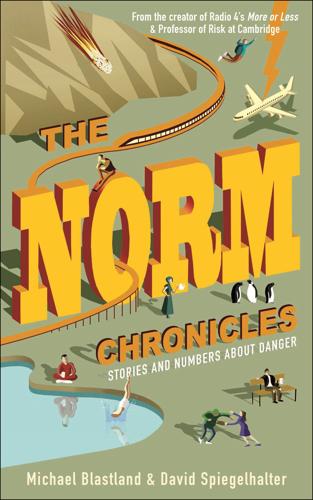
The Norm Chronicles
by
Michael Blastland
Published 14 Oct 2013
Figure 20: Some MicroLives: how many gained or lost for different activities This simple analysis only compares smokers with non-smokers, who may be different in all sorts of ways that could also influence their health. A more sophisticated analysis would consider the effect of stopping smoking, and fortunately that’s been done in a classic study on 40,000 UK doctors, many of whom gave up smoking during the period of the study from 1951 to 2001.4 They estimate a 40-year-old man who stopped smoking gained 9 years in life-expectancy, or 78,000 hours in total, and from this we can estimate around 2 cigarettes for a MicroLife. So 2 ciggies is roughly equivalent to 1 burger, when taken daily.* So what about the booze?

Why the West Rules--For Now: The Patterns of History, and What They Reveal About the Future
by
Ian Morris
Published 11 Oct 2010
A “Neo-Confucian” movement swept through the gentry, and in China’s hour of need, with the Khitans and Tanguts pressing in, the empire’s finest minds emulated Confucius by stepping forward to advise the ruler. Forget about rebirth and immortality, they insisted; the here-and-now is everything, and fulfillment comes from action in the world. “The true scholar,” one concluded, “should be the first to worry about the world’s troubles and the last to enjoy its pleasures.” The Neo-Confucians turned classical studies into a program for perfecting society. Men who had the philological and artistic skills to understand ancient culture properly, they claimed, could use antiquity’s virtue to save the modern world. Ouyang Xiu, for instance, who had stumbled across Han Yu’s writings as a boy, invented his own “ancient prose” style, made a name as a poet, historian, and collector of two-thousand-year-old bronzes, then rose high in the imperial service, championing fiscal and military reforms.
…
China’s new steppe frontier, by contrast, produced much milder challenges. The well-paid scholars in Kangxi’s scientific institutes felt no need to invent calculus for themselves or figure out that the earth went around the sun. There seemed to be much more profit in turning mathematics—like medicine—into a branch of classical studies. East and West each got the thought they needed. THE IRON LAW When Kangxi died in 1722, social development was moving higher than ever before. Twice in the past, in the Roman Empire around 100 CE and Song dynasty China a thousand years later, development had reached forty-three points, only to generate disasters that drove it down again.
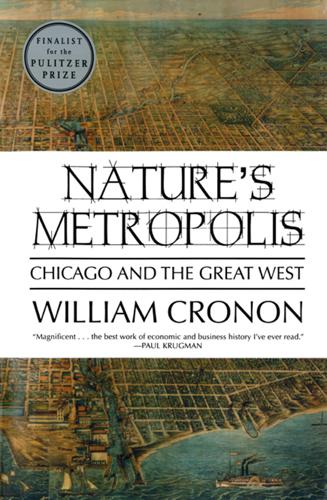
Nature's Metropolis: Chicago and the Great West
by
William Cronon
Published 2 Nov 2009
Harrison declared that “Nature .. . wrote on that low divide the first engineer’s report in favor of a ship-canal to unite the Mississippi and the lakes.” “Speech of Hon. Carter H. Harrison, of Illinois, on the Illinois and Michigan Canal, in the House of Representatives, Tuesday, May 21, 1878.” 39.On internal improvements schemes generally, see Howard, Illinois, 193–212; the classic study of canal development in the Old Northwest is Harry N. Scheiber, Ohio Canal Era: A Case Study of Government and the Economy, 1820–1861 (1969). See also Donald J. Pisani, “Promotion and Regulation: Constitutionalism and the American Economy,” JAH 74 (1987): 740–68. 40.Putnam, Illinois and Michigan Canal; Pierce, History of Chicago, vol. 1; Andreas, History of Chicago, 1:165–73; F.
…
For a suggestive collection by modern historians on similar issues, see Steven Hahn and Jonathan Prude, eds., The Countryside in the Age of Capitalist Transformation: Essays in the Social History of Rural America (1985). 111.Census figures cited in Henry J. Fletcher, “The Doom of the Small Town,” Forum 19 (April 1895): 215. 112.Ibid., 214, 222. On the general reasons for urban growth at the expense of rural areas, see the classic study of Adna Ferrin Weber, The Growth of Cities in the Nineteenth Century: A Study in Statistics (1899; reprint, 1963). 113.Wyckoff, Day with a Tramp, 61, 79. See also the fascinating discussion of urban-rural exploitation in the text of a contemporary socialist, A. M. Simons, The American Farmer (1906), 63–73.
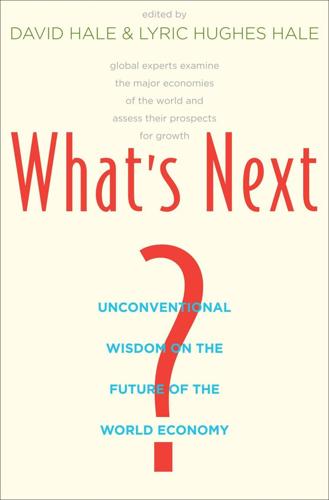
What's Next?: Unconventional Wisdom on the Future of the World Economy
by
David Hale
and
Lyric Hughes Hale
Published 23 May 2011
Nicholas Negroponte of MIT calls this self-censored media product “The Daily Me.”5 It represents another step toward a world in which people increasingly isolate themselves in a bubble of self-sustaining beliefs and immerse themselves in like-minded communities. Although we may like the idea of a debating chamber, in reality we prefer an echo chamber. In one classic study, Republicans and Democrats were offered various research reports from a neutral source. Both groups were most eager to receive coherent arguments that corroborated their preexisting mindsets. Bill Bishop, author of The Big Sort: Why the Clustering of Like-Minded America Is Tearing Us Apart, says that as the United States grows more politically segregated, “the benefit that ought to come with having a variety of opinions is lost to the righteousness that is the special entitlement of homogeneous groups.”6 A twelve-nation study found that Americans, particularly highly educated ones, are the least likely to discuss politics with people of different views.
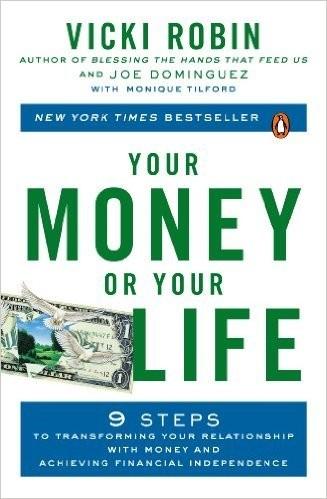
Your Money or Your Life: 9 Steps to Transforming Your Relationship With Money and Achieving Financial Independence: Revised and Updated for the 21st Century
by
Vicki Robin
,
Joe Dominguez
and
Monique Tilford
Published 31 Aug 1992
Even people who are doing well financially are not necessarily fulfilled. On those same worksheets we asked our seminar participants, “How much money would it take to make you happy?” Can you guess the results? It was always “more than I have now” by 50 to 100 percent. These findings are confirmed by numerous other studies on happiness. In one classic study, Roy Kaplan of the Florida Institute of Technology tracked 1,000 lottery winners over a span of ten years. Very few felt any greater happiness—or had any idea of what to do with the money. A surprising number were less happy six months later, having left jobs that had been a source of self-esteem and gained money they felt they didn’t deserve.
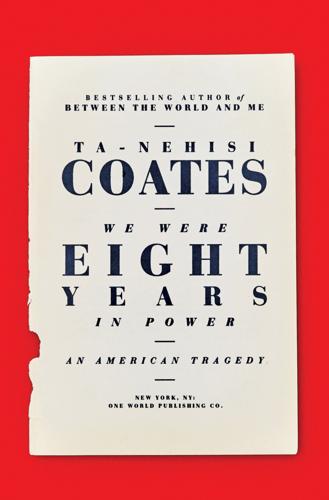
We Were Eight Years in Power: An American Tragedy
by
Ta-Nehisi Coates
Published 2 Oct 2017
They often saw themselves as reluctant caretakers of the less enlightened.” In particular, Cosby’s argument—that much of what haunts young black men originates in post-segregation black culture—doesn’t square with history. As early as the 1930s, sociologists were concerned that black men were falling behind black women. In his classic study, The Negro Family in the United States, published in 1939, E. Franklin Frazier argued that urbanization was undermining the ability of men to provide for their families. In 1965—at the height of the civil rights movement—Daniel Patrick Moynihan’s milestone report, “The Negro Family: The Case for National Action,” picked up the same theme.

The Diet Myth: The Real Science Behind What We Eat
by
Tim Spector
Published 13 May 2015
They all gained weight to very different extents, but in each case their weight gain was very similar to their twin’s.6 Although all the twins gained total weight and fat mass, some details varied too. Some pairs converted the calories not just into fat, but into additional muscle. They also seemed to gain the fat in the same places as their twin, around the belly or more unhealthily around the intestines and liver – what is called visceral fat. This classic study, in which the students were overfed like lab rats, might now have trouble getting ethical approval (though we don’t protect actors like Bradley Cooper who gained 40 lb for the film American Sniper and was paid millions of dollars for his role in it). The twins study unequivocally shows that much of how quickly we use energy or store fat and so gain weight is clearly down to our genes.
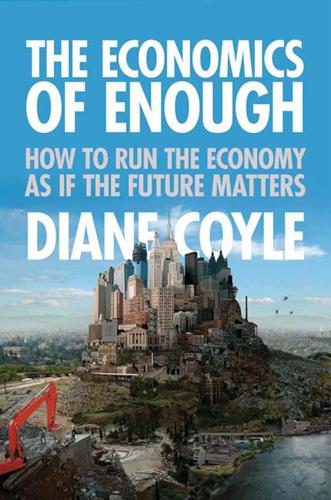
The Economics of Enough: How to Run the Economy as if the Future Matters
by
Diane Coyle
Published 21 Feb 2011
As name suggests, by analogy with physical capital or financial capital, social capital is a stock of wealth. It is something that can be accumulated over time, invested in, but a form of wealth linked to society rather than just an individual. An important book in stimulating the recent interest in the idea of social capital was a classic study of towns in Italy by Robert Putnam, the eminent Harvard sociologist. He noted from his field research that something intangible but vitally important distinguished towns in the north of the country from the south, making the former prosperous and dynamic places, and the latter persistently poor and suspicious.6 The “something” in those northern Italian towns comprised civic mindedness, an openness and willingness to help people outside the immediate family group, a sense of being part of a community whose success would bring collective and individual benefits.
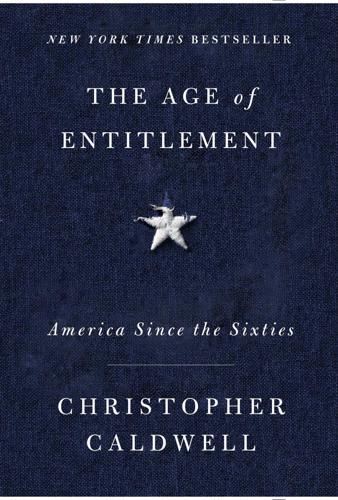
The Age of Entitlement: America Since the Sixties
by
Christopher Caldwell
Published 21 Jan 2020
Searle noted that by 1990, more than half of the students at Berkeley were non-white. There was no clamor in the general public to suppress heterodox thinking. Americans’ views on free speech had been remarkably consistent. In 1955, in the immediate aftermath of McCarthyism, the Harvard sociologist Samuel A. Stouffer published a classic study called Communism, Conformity and Civil Liberties. His goal was to figure out how willing people really were to let communists do three things: make a speech in their community, teach in a university, or have a book kept in the public library. After 1972, the National Opinion Research Center added several scenarios to Stouffer’s to test communities’ tolerance for speech that insulted their sensibilities on race, religion, and democracy.

Why We Drive: Toward a Philosophy of the Open Road
by
Matthew B. Crawford
Published 8 Jun 2020
Each of us wanted that puck like a greyhound wants the bunny—and would have taken one another’s head off to get it. But on another level, what I felt was an intense love for the moving bodies who chased it with me. Together we did something beautiful to behold, and we knew it. In Homo Ludens, his classic study of “the play element in culture,” Johan Huizinga wrote that play is marked by “a spirit of hostility and friendship combined.” He found this in sport; in ritualized combat; in the competitive dances, stylized insult trading and boasting matches of every culture that remains vital. I think this captures pretty well the social element of motor sport.

The Swerve: How the Renaissance Began
by
Stephen Greenblatt
Published 31 Aug 2011
The most promising student was Leonardo Bruni of Arezzo, a man about ten years older than Poggio, and like Poggio, from a very modest background. Bruni had set out to study law, but, along with other intellectually gifted men of his generation and particularly those in the orbit of Salutati, he had been seized by a passion for classical studies. In his case, the decisive factor was the study of ancient Greek, made possible when in 1397 Salutati invited the preeminent Byzantine scholar Manuel Chrysolaras to reside in Florence and give classes in a language that had been almost completely forgotten. “At the coming of Chrysolaras,”20 Bruni later recalled, “I was made to halt in my choice of lives, seeing that I held it wrong to desert law, and yet I reckoned it a crime to omit so great an occasion of learning the Greek literature.”

The Theory of the Leisure Class
by
Thorstein Veblen
Published 10 Oct 2007
Veblen was (to borrow James’s term) a ‘restless analyst’ of the American scene whose non-fiction study opened the way for the insistence by the novelists that sociology, economics, and literature share (and must share) a common aim to expose (through satire, wit, and passion) the lopsided nature of social institutions of power. Even today there are those who do not know how to deal with all the implications of Veblen’s classic study. Perhaps their quandary is caused by the fact, as one observer has stated, ‘no one remotely like Thorstein Veblen can ever be expected to appear again’.2 Certain economists and sociologists prefer to look away from this volume, finding themselves more at home with Veblen’s weighty series of articles on political economy, land systems, finance, business management, and the industrial arts.
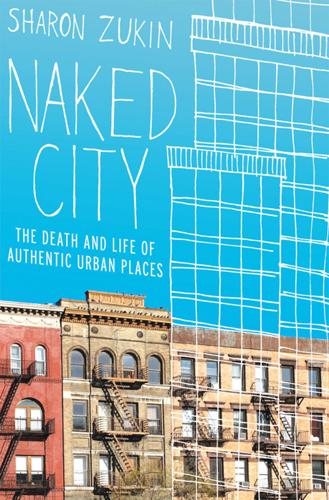
Naked City: The Death and Life of Authentic Urban Places
by
Sharon Zukin
Published 1 Dec 2009
Dutton, 1940); Lizabeth Cohen, A Consumers’ Republic: The Politics of Mass Consumption in Postwar America (New York: Knopf, 2003), pp. 41–53. The internal stratification of African American neighborhoods—and of all ghettos—in the face of racial segregation is, of course, widely noted, from such classic studies as W. E. B. Du Bois’s The Philadelphia Negro (1899), E. Franklin Frazier’s The Negro Family in Chicago (1932), and St. Clair Drake and Horace Cayton’s Black Metropolis (1945), to Mary Pattillo’s Black Picket Fences (Chicago: University of Chicago Press, 1999) and Black on the Block (Chicago: University of Chicago Press, 2007). 25.
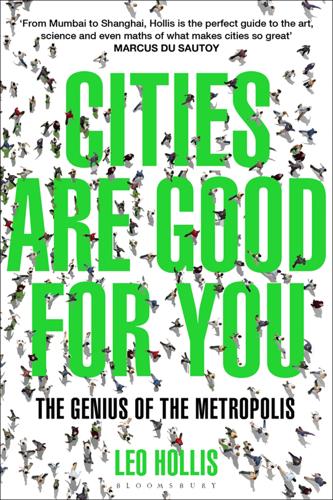
Cities Are Good for You: The Genius of the Metropolis
by
Leo Hollis
Published 31 Mar 2013
In addition, any project that provides planning solutions in the form of strong medicine, without consultation of the people it is going to affect, is also likely to confront unexpected consequences. Solutions from planners, developers, architects, politicians and urban bloggers are legion; but what if the community wants to reboot itself rather than have transformation imposed upon it from well-meaning decision-makers? Robert Putnam’s classic study of community, Bowling Alone, offers a disheartening view of modern society. With an abundance of observation material and statistics, he makes the watertight argument that our sense of community and our participation in communal activity has collapsed. Using the image of the lonely bowler throwing his ball down the alley, where once he would be part of a team, our sense of who we are and where we fit in has atomised and become dangerously small.

Decoding Organization: Bletchley Park, Codebreaking and Organization Studies
by
Christopher Grey
Published 22 Mar 2012
Secondly, notwithstanding the ideal-type of bureaucracy as evacuating all discretion from work by virtue of standard, formalized systems, spaces for discretion persist, and, moreover, their persistence is necessary in order for those systems to operate effectively. This was one of the basic insights of the ‘bureaucratic dysfunctionalist’ literature of the 1950s (Blau, 1955; Gouldner, 1954). So one point to note is that these classic studies continue to have a purchase and help us to make sense of organizational phenomena. However, what is also important is to appreciate how the bureaucratic aspects of BP undermine not only the received image of BP but also some of the analyses of its organization. Ratcliff (2006) makes much of how BP ‘encouraged everyone from intercept personnel to the top cryptanalysts to collaborate and brainstorm for improvements.
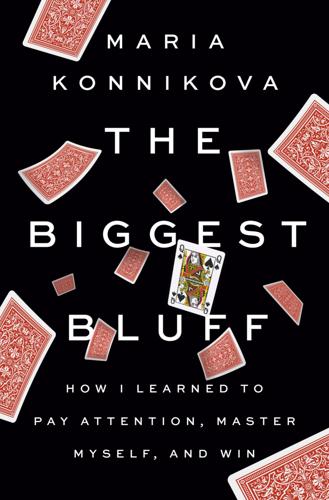
The Biggest Bluff: How I Learned to Pay Attention, Master Myself, and Win
by
Maria Konnikova
Published 22 Jun 2020
But our denial belies the fact that we often don’t really know why we make decisions—and we justify them with objective-sounding reasons even when, in reality, we were acting based on faulty intuitive reads. That’s not so bad if we were to listen to corrections. But instead, we often argue with the truth: if someone gives us our actual thought process, we dismiss it in favor of the version we’ve constructed for ourselves. In a series of now-classic studies, psychologists Richard Nisbett and Timothy Wilson found that people systematically denied the reason for their decision even after presented with evidence. First, they showed students a video clip of a college professor giving a lecture on the philosophy of education in a European accent. In some cases, he was warm and friendly in answering questions.

The Coming Wave: Technology, Power, and the Twenty-First Century's Greatest Dilemma
by
Mustafa Suleyman
Published 4 Sep 2023
GO TO NOTE REFERENCE IN TEXT Now humans produce hundreds Ibid., 228. GO TO NOTE REFERENCE IN TEXT Chapter 3: The Containment Problem Understanding technology is, in part Robert K. Merton, On Social Structure and Science (Chicago: University of Chicago Press, 1996), gives the classic study, but see also Ulrich Beck, Risk Society: Toward a New Modernity (London: SAGE, 1992), for how society has become dominated by the management of risks it has itself created. See also Edward Tenner, Why Things Bite Back: Technology and the Revenge of Unintended Consequences (New York: Vintage, 1997), and Charles Perrow, Normal Accidents: Living with High-Risk Technologies (Princeton, N.J.: Princeton University Press, 1984).

Europe: A History
by
Norman Davies
Published 1 Jan 1996
Papyrus continued to be used in Greek and Roman times, especially in lands close to the source of supply in the Nile delta. The largest find of classical papyri, some 800 in number, was extracted from the lava-sealed ruins of Herculaneum. Papyrology—the science of papyri—has made an immense contribution to classical studies. Since very few other forms of writing have survived over two millennia, it has greatly advanced knowledge of ancient Palaeography; and it has helped bridge the philological chasm between ancient and medieval Greek. It has supplied many texts from the lost repertoire of classical literature, including Aristotle’s Constitution of Athens, Sophocles’ Trackers, and Menander’s The Discontented Man.
…
[BIBLIA] [XATIVAH] BLACK ATHENA NO thesis has divided the world of classics more profoundly than that associated with the title of Black Athena. The traditionalists regard it as freakish; others maintain that it deserves close attention.1 The thesis has two separate aspects—one critical, the other propositional. The critical part argues with some force that classical studies were moulded by the self-centred assumptions of eighteenth- and nineteenth-century Europeans, and that the cultural debt of Greece and Rome to the older civilizations of the Near East was systematically ignored. The critic’s purpose, ‘to lessen European cultural arrogance’, would seem to be fruitful, though talk of ‘the Aryan model of Greek civilization’ is provocative.
…
They provide one of the basic explanations why western Germany escaped the tide of ‘neoserfdom’ which was to occur in the East (see pp. 583–4). In some parts of eastern Europe, such as Bohemia and Silesia, the influx of German settlers led to the merger of German and of local legal customs. In the later centuries, the revival of classical studies helped Roman law to extend its sphere at the expense of customary law. In 1495, for example, it was admitted to the Reichskammergericht or Supreme Court of Justice of the German Empire. Its impact was to be profound. Given the growing fragmentation of sovereignty in the Empire, it encouraged all princes to regard themselves as the sole fount of legislation, and in due course to flood every aspect of life with regulations.

The Ascent of Money: A Financial History of the World
by
Niall Ferguson
Published 13 Nov 2007
Stiglitz, Globalization and Its Discontents (New York, 2002), pp. 12, 14, 15, 17. 64 Abdelal, Capital Rules, pp. 50f., 57-75. 65 Paul Krugman, The Return of Depression Economics (London, 1999). 66 ‘The Fund Bites Back’, The Economist, 4 July 2002. 67 Kenneth Rogoff, ‘The Sisters at 60’, The Economist, 22 July 2004. Cf. ‘Not Even a Cat to Rescue’, The Economist, 20 April 2006. 68 See the classic study by Fritz Stern, Gold and Iron: Bismarck, Bleichröder and the Building of the German Empire (Harmondsworth, 1987). 69 George Soros, The Alchemy of Finance: Reading the Mind of the Market (New York, 1987), pp. 27-30. 70 Robert Slater, Soros: The Life, Times and Trading Secrets of the World’s Greatest Investor (New York, 1996), pp. 48f. 71 George Soros, The New Paradigm for Financial Markets: The Credit Crash of 2008 and What It Means (New York, 2008), p. x. 72 Slater, Soros, p. 78. 73 Ibid., pp. 105, 107ff. 74 Ibid., p. 172. 75 Ibid., pp. 177, 182, 188. 76 Ibid., p. 10. 77 Ibid., p. 159. 78 Nicholas Dunbar, Inventing Money: The Story of Long-Term Capital Management and the Legends Behind It (New York, 2000), p. 92. 79 Dunbar, Inventing Money, pp. 168-73. 80 André F.
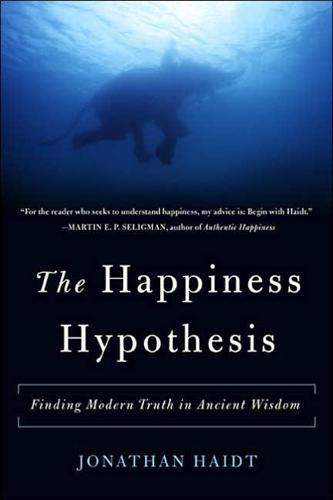
The Happiness Hypothesis: Finding Modern Truth in Ancient Wisdom
by
Jonathan Haidt
Published 26 Dec 2005
But although people quickly adapt to having more space,36 they don't fully adapt to the longer c o m m u t e , particularly if it involves driving in heavy traffic.37 Even after years of c o m m u t i n g , those whose c o m m u t e s are traffic-filled still arrive at work with higher levels of stress hormones. (Driving under ideal conditions is, however, often enjoyable and relaxing.)38 It's worth striving to improve your c o m m u t e . Lack of control. On e of the active ingredients of noise and traffic, the aspect that helps them get under your skin, is that you can't control them. In one classic study, David Glass and Jerome Singer exposed people to loud bursts of random noise. Subjects in one group were told they could termi-nate the noise by pressing a button, but they were asked not to press the button unless it was absolutely necessary. N o n e of these subjects pressed the button, yet the belief that they had some form of control m a d e the noise less distressing to them.

Coming Apart: The State of White America, 1960-2010
by
Charles Murray
Published 1 Jan 2012
Tocqueville, 1840, 514. 3. Olasky, 1992, 86. Chapters 5 and 6 of The Tragedy of American Compassion have a wide range of similar data. 4. Pollock, 1923, in Skocpol, 2003, 63–64. 5. Skocpol, 2003, especially chapters 2 and 3. 6. Ibid., 108–9. 7. Ibid., 110–11. 8. When Robert and Helen Lynd conducted their classic study of Muncie, Indiana, in the mid-1920s, they reported the memberships in organizations among their samples of “business-class” and “working class” respondents, effectively representing the white-collar and blue-collar occupations. Fifty-seven percent of working-class men and 36 percent of working-class wives (all of the respondents were married) belonged to at least one organization, numbers that are higher than any observed for Fishtown in the data present, but they pale in comparison to the percentages for the business class: 97 percent among the men and 92 percent among their wives.
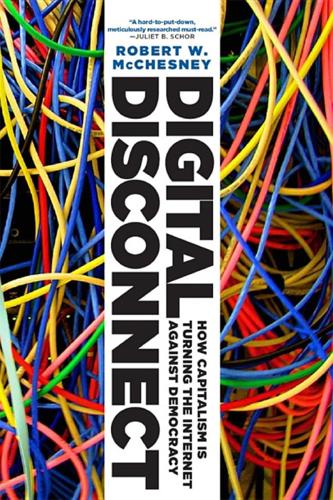
Digital Disconnect: How Capitalism Is Turning the Internet Against Democracy
by
Robert W. McChesney
Published 5 Mar 2013
For a sophisticated history of the relationship of commercialism to popular music in the United States, see David Suisman, Selling Sounds: The Commercial Revolution in American History (Cambridge, MA: Harvard University Press, 2009). 34. Tim Wu succinctly and persuasively explains the economic value of media conglomeration for giant firms in Tim Wu, The Master Switch: The Rise and Fall of Information Empires (New York: Knopf, 2010), chap. 17. 35. Ibid. 36. Ibid., 228–29. 37. A classic study along these lines is Todd Gitlin, Inside Prime Time, 2d ed. (Berkeley: University of California Press, 2000). 38. This is a finding that predominates in the political economy of communication tradition. A classic example: Erik Barnouw, The Sponsor: Notes on Modern Potentates (New York: Oxford University Press, 1978). 39.

Innovation and Its Enemies
by
Calestous Juma
Published 20 Mar 2017
Rural America was dominated by small, diversified farms employing nearly half of the country’s workforce and supporting nearly twenty-two million work animals. Today the agricultural sector is concentrated in sparsely populated rural areas on “large, specialized … highly productive and mechanized farms [that] employ a tiny share of U.S. workers and use five million tractors in place of the horses and mules of earlier days.”1 According to a classic study by Alan L. Olmstead and Paul W. Rhode, this transformation was “a gigantic Schumpeterian confrontation as the defenders of entrenched methods appealed to popular sentiments and tried to capture legal and political institutions to forestall the process of creative destruction.”2 Sensing that they were swimming against the tide, however, they sought accommodation and coexistence.
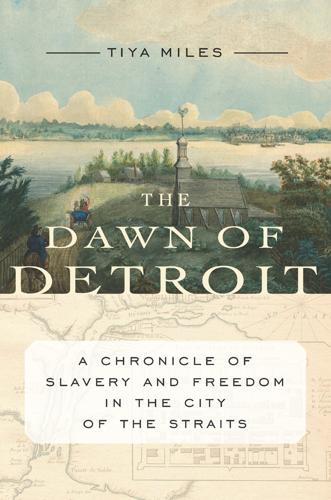
Dawn of Detroit
by
Tiya Miles
Published 13 Sep 2017
Anne’s Church in Detroit and the “corporation of the college of Detroit” (Michigania) in order to better prepare their own children in a moment when territorial administrators had their minds set on statehood and a citizenry defined mainly as white. Michigan officials would later trade a portion of this original 1817 land grant on the River Raisin for acreage in Ann Arbor near the Huron River. Here, the college was relocated from its original site in downtown Detroit and expanded to offer advanced courses of classical study.9 An iconic Midwestern and American educational institution, the University of Michigan was born of a compromise made by Native people in the context of a century of colonial warfare and land dispossession in the Great Lakes. Built on ill-gotten lands and funded, in part, by family wealth derived from slave labor, the University of Michigan system now shines as a cultural star of the state.
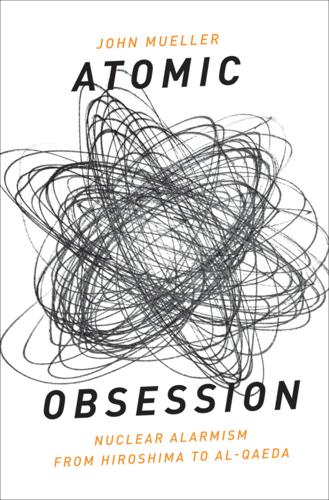
Atomic Obsession: Nuclear Alarmism From Hiroshima to Al-Qaeda
by
John Mueller
Published 1 Nov 2009
In moments of high stress and threat, people can be said to have three psychological alternatives: (1) to remain calm and rational, (2) to refuse to believe that the threat is imminent or significant, or (3) to panic, lashing out frantically and incoherently at the threat. Generally, people react in one of the first two ways. In her classic study of disaster behavior, Martha Wolfenstein concludes, “The usual reaction is one of being unworried.”32 In addition, the historical record suggests that wars simply do not begin by accident. In his extensive survey of wars that have occurred since 1400, diplomat-historian Evan Luard concludes, “It is impossible to identify a single case in which it can be said that a war started accidentally; in which it was not, at the time the war broke out, the deliberate intention of at least one party that war should take place.”
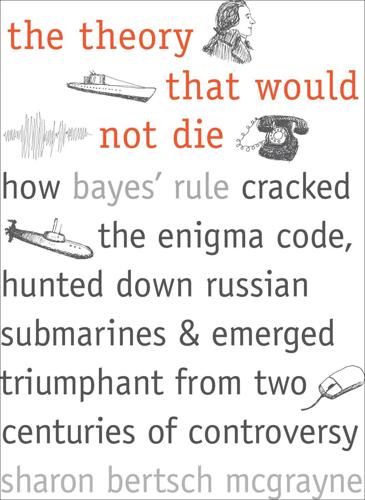
The Theory That Would Not Die: How Bayes' Rule Cracked the Enigma Code, Hunted Down Russian Submarines, and Emerged Triumphant From Two Centuries of Controversy
by
Sharon Bertsch McGrayne
Published 16 May 2011
At Amherst College he majored in classics and ancient history and took courses in economics and physics. He enrolled in calculus, his only formal math class, solely to capture a large cash prize for the best student. After graduating Phi Beta Kappa at the age of 19, he studied in Athens at the American School of Classical Studies between 1937 and 1939 and earned a Ph.D. in ancient history at Harvard in 1940. Over the next few years he published several articles about religious cults and slavery in ancient Greece. Schlaifer was a quick study, and he filled in for Harvard historians, economists, and physicists as they left for defense work during the Second World War.
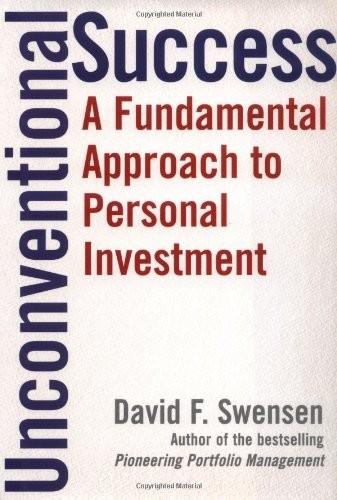
Unconventional Success: A Fundamental Approach to Personal Investment
by
David F. Swensen
Published 8 Aug 2005
During the seventy-eight years of the Ibbotson series, as shown in Table 1.1, one dollar invested in large-company stocks expanded 2,285 times, while bonds produced a 61 multiple, and cash, an 18 multiple. Small stocks demonstrated even more impressive results, as the 1925 dollar multiplied 10,954 times by 2003. Equity ownership beats holding bonds or cash, hands down. Similar results can be found in Jeremy Siegel’s Stocks for the Long Run. The third edition of Siegel’s classic study of capital markets returns shows U.S. stocks producing an 8.3 percent per annum compound return over the two centuries spanning 1802 to 2001. In a hard-to-believe statistic, one dollar invested in the stock market at the outset of the nineteenth century, with all gains and dividends reinvested, grows to $8.8 million at the beginning of the twenty-first century!
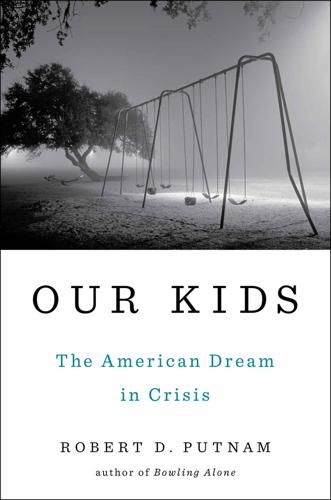
Our Kids: The American Dream in Crisis
by
Robert D. Putnam
Published 10 Mar 2015
Yet in terms of enrollment in early childhood education the United States ranks 32nd among the 39 countries in the Organisation for Economic Co-operation and Development (OECD). On average, across these advanced countries, 70 percent of three-year-olds are enrolled, compared to 38 percent in the United States.44 A few high-quality programs have been studied using the gold standard of program evaluation, with randomized controls and follow-up over decades. The classic studies of the initial Head Start program in the 1960s in Michigan and the Abecedarian Project in the 1970s in North Carolina showed remarkable effects: they boosted initial educational progress, reduced trouble with the law as the children became adults, and increased the participants’ lifetime income.45 Subsequent studies of Head Start have not shown such substantial effects, leading some to question whether the cost-benefit ratio of early childhood education is quite so favorable.
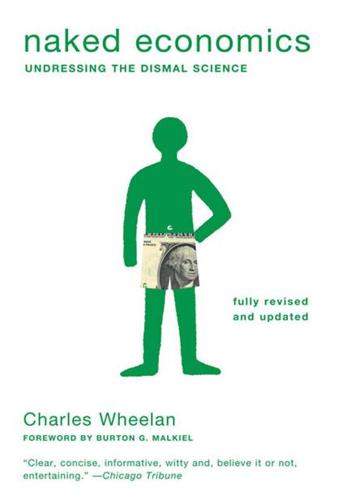
Naked Economics: Undressing the Dismal Science (Fully Revised and Updated)
by
Charles Wheelan
Published 18 Apr 2010
The team worked six hours a day for forty-two weeks in order to get eleven different permits from seven different government bodies. Their efforts, not including the time, cost $1,231, or 31 times the monthly minimum wage in Peru—all to open a one-person shop.11 Chapter 4 outlined all the reasons government should stick to the basics. Harvard economist Robert Barro’s classic study of economic growth in roughly one hundred countries over three decades found that government consumption—total government spending excluding education and defense—was negatively correlated with per capita GDP growth. He concluded that such spending (and the required taxation) is not likely to increase productivity and will therefore do more harm than good.
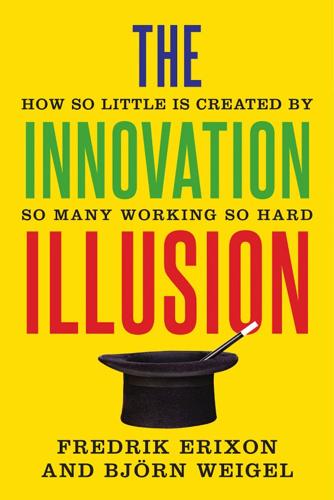
The Innovation Illusion: How So Little Is Created by So Many Working So Hard
by
Fredrik Erixon
and
Bjorn Weigel
Published 3 Oct 2016
This simplistic example shows one thing: the connection between performance and shareholders, and between owners and companies, is compromised in today’s capitalism. That connection makes up the control room of capitalism. Destroy that connection and a key feature of capitalism is lost. Adolf Berle and Gardiner Means, running with Smith’s old insight, raised this concern in a classic study first published in 1932. What happens, they asked, to companies that have diffused ownership fraught with agency problems? The separation of ownership and control, they argued, will eventually lead to companies that get led solely by management and executives because owners have far too little supervisory control.44 Management legend Peter Drucker answered the question posed by Berle and Means concerning the institutionalization of ownership and increased pension savings.

The People vs. Democracy: Why Our Freedom Is in Danger and How to Save It
by
Yascha Mounk
Published 15 Feb 2018
Ross, “Enforcing the Kulturkampf in the Bismarckian State and the Limits of Coercion in Imperial Germany,” Journal of Modern History 56, no. 3 (1984): 456–482. On Italy, Suzanne Stewart-Steinberg, The Pinocchio Effect: On Making Italians, 1860–1920 (Chicago: University of Chicago Press, 2007). Compare also the classic study in this genre, on France: Eugen Weber, Peasants into Frenchmen: The Modernization of Rural France, 1870–1914 (Stanford: Stanford University Press, 1976). 10. See Francis Ludwig Carsten, The Rise of Fascism (Berkeley: University of California Press, 1982); Sheri Berman, “Civil Society and the Collapse of the Weimar Republic,” World Politics 49, no. 3 (1997): 401–429; and the classic treatment of the question in William L.
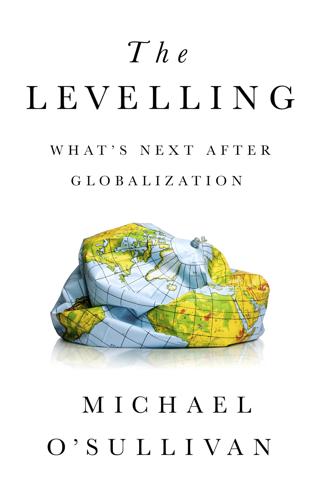
The Levelling: What’s Next After Globalization
by
Michael O’sullivan
Published 28 May 2019
National Bureau of Economics Research (NBER) Working Paper 14631, 2009. Ther, P. Europe since 1989: A History. Princeton University Press, 2016. Thornton, D. “Evidence on the Portfolio Balance Channel of Quantitative Easing.” Federal Reserve Bank of St. Louis Working Paper Series 2012-015A, 2012. Toffler, A. The Third Wave: The Classic Study of Tomorrow. Bantam Books, 1989. Tucker, P. Unelected Power: The Quest for Legitimacy in Central Banking and the Regulatory State. Princeton University Press, 2018. Vance, J. D. Hillbilly Elegy: A Memoir of a Family and Culture in Crisis. HarperCollins, 2016. Van Creveld, M. More on War. Oxford University Press, 2017.
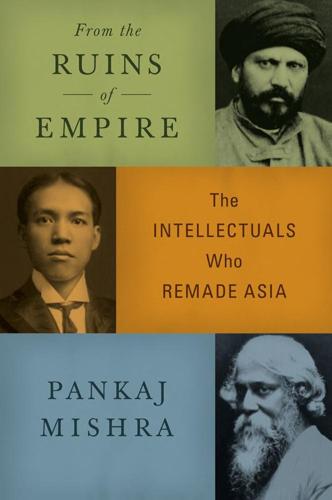
From the Ruins of Empire: The Intellectuals Who Remade Asia
by
Pankaj Mishra
Published 3 Sep 2012
Some notable though under-regarded contributions to this field are by Sanjay Subrahmanyam, whose The Portuguese Empire in Asia, 1500 – 1700: A Political and Economic History (Oxford, 2012) and Three Ways to Be Alien: Travails and Encounters in the Early Modern World (Brandeis, 2011) are essential reading. The Opium Wars (London, 2011) by Julia Lovell ably replaces the classic studies of the subject by Maurice Collis and Arthur Waley; it is especially good on the uses of the opium wars by Chinese nationalists over the decades. Jonathan Spence, in his masterpiece The Search for Modern China (New York, 1999), gives a characteristically elegant account of the opium tangles in addition to much else, while John K.
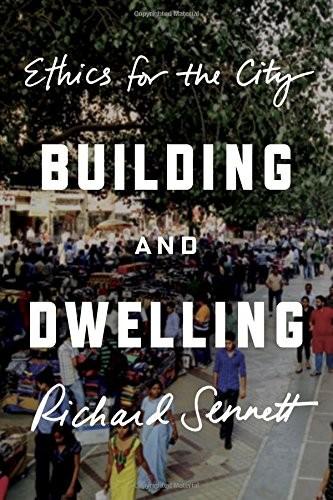
Building and Dwelling: Ethics for the City
by
Richard Sennett
Published 9 Apr 2018
Plus, for me, Richard Sennett and Jonathan Cobb, The Hidden Injuries of Class (New York: W. W. Norton, 1972); Sennett, The Corrosion of Character; Richard Sennett, Respect: The Formation of Character in an Age of Inequality (New York: W. W. Norton and London: Allen Lane, 2003); Richard Sennett, The Culture of the New Capitalism (New Haven: Yale University Press, 2006). 17. The classic study of gentrification is Sharon Zukin, Loft Living: Culture and Capital in Urban Change (Baltimore: Johns Hopkins University Press, 1982). ‘Holdouts’ are described by ShelterForce, a community organization. See shelterforce.org. 18. See Rachel Lichtenstein, Diamond Street: The Hidden World of Hatton Garden (London: Hamish Hamilton, 2012). 19.
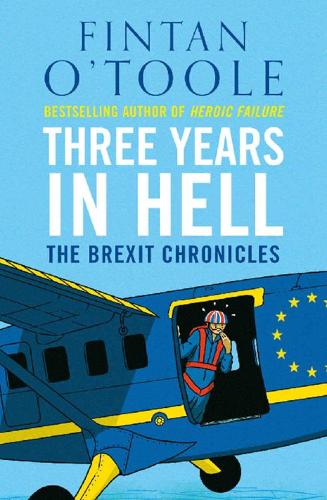
Three Years in Hell: The Brexit Chronicles
by
Fintan O'Toole
Published 5 Mar 2020
But Johnson knows the answer: they do so, in England at least, because knowingness is essential to being included. You have to be ‘in on the joke’ – and Johnson has shown just how far some English people will go in order not to look like they are not getting it. The anthropologist Kate Fox, in her classic study Watching the English, suggested that a crucial rule of the national discourse is what she called The Importance of Not Being Earnest: ‘At the most basic level, an underlying rule in all English conversation is the proscription of “earnestness.”’ Johnson has played on this to perfection – he knows that millions of his compatriots would rather go along with his outrageous fabrications than be accused of the ultimate sin of taking things too seriously.
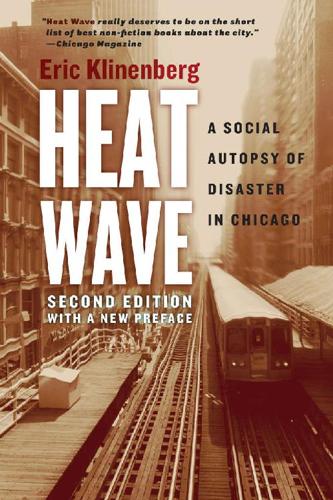
Heat Wave: A Social Autopsy of Disaster in Chicago
by
Eric Klinenberg
Published 11 Jul 2002
In addition, Martinez and colleagues (1989) discovered geographical patterns in heat wave mortality among the elderly. 7. See note 12 of the introduction for a discussion of Chicago’s community areas. 8. There is an enormous literature on the historical development and social conditions of Chicago’s African-American regions. The classic study of the Black Belt is St. Clair Drake and Horace Cayton, Black Metropolis ([1945] 1993). 9. Despite significant reductions in the crime rates during the late 1990s, the levels of violent crime in poor black areas of the city remain comparatively high, making it difficult for residents to feel safe in the streets.
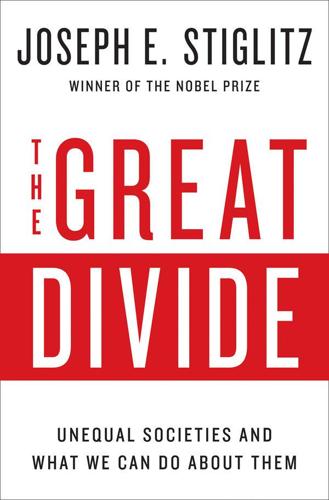
The Great Divide: Unequal Societies and What We Can Do About Them
by
Joseph E. Stiglitz
Published 15 Mar 2015
Moolakkattu, eds., Territoriality, Citizenship, and Peacebuilding: Perspectives on Challenges to Peace in Africa (Pietermaritzburg, South Africa: Adonis & Abbey, 2013). 16. Lars-Erik Cederman, Nils B. Weidmann, and Kristian Skrede Gleditsch, “Horizontal Inequalities and Ethnonationalist Civil War: A Global Comparison,” American Political Science Review 105, no. 3 (2011), pp. 487–89. 17. The World Bank’s classic study Voices of the Poor highlighted that the poor suffered not just from a lack of income but from insecurity and a lack of voice. This was subsequently reflected in the decennial World Bank’s World Development Report on Poverty in 2000. The International Commission on the Measurement of Economic Performance and Social Well-Being (2010) emphasized that metrics of performance (including output and inequality) had to be expanded beyond just conventional measures of GDP and/or income.

Apollo's Arrow: The Profound and Enduring Impact of Coronavirus on the Way We Live
by
Nicholas A. Christakis
Published 27 Oct 2020
Still, the emergence of drugs such as remdesivir and dexamethasone, and others to come, vindicated the whole strategy of deploying the nonpharmaceutical interventions to flatten the curve. By buying time, we allowed ourselves the opportunity to use our capacities for teaching and learning in order to enhance our survival. * * * One classic study of immunity and symptoms related to coronavirus (involving the 229E strain, which causes the common cold), published in 1990, involved an odd twist.85 Fifteen volunteers were deliberately infected with the virus. They all went on to develop cold symptoms, and the amount of circulating antibodies in their blood was periodically monitored for a year, at which point the levels were observed to be very low.

When Einstein Walked With Gödel: Excursions to the Edge of Thought
by
Jim Holt
Published 14 May 2018
Surveys have shown that religious people live longer (probably because they have healthier lifestyles) and feel happier (perhaps owing to the social support they get from church). Judging from birthrate patterns in the United States and Europe, they also seem to be outbreeding secular types, a definite Darwinian advantage. On the other hand, Dawkins is probably right when he says that believers are no better than atheists when it comes to behaving ethically. One classic study showed that “Jesus people” were just as likely to cheat on tests as atheists and no more likely to do altruistic volunteer work. Oddly, Dawkins does not bother to cite such empirical evidence; instead, he relies, rather unscientifically, on his intuition. “I’m inclined to suspect,” he writes, “that there are very few atheists in prison.”

Rationality: What It Is, Why It Seems Scarce, Why It Matters
by
Steven Pinker
Published 14 Oct 2021
When people are asked to verify the logic of these arguments, both of which commit the formal fallacy of denying the antecedent, liberals mistakenly ratify the first and correctly nix the second; conservatives do the opposite.28 In Duck Soup, Chico Marx famously asked, “Who ya gonna believe, me or your own eyes?” When people are in the throes of the myside bias, the answer may not be their own eyes. In an update of a classic study showing that football fans always see more infractions by the opposing team, Kahan and collaborators showed a video of a protest in front of a building.29 When the title labeled it a protest against abortion at a health clinic, conservatives saw a peaceful demonstration, while liberals saw the protesters block the entrance and intimidate the enterers.

The Bookshop: A History of the American Bookstore
by
Evan Friss
Published 5 Aug 2024
GO TO NOTE REFERENCE IN TEXT The main attraction: Hugh Morrison, Early American Architecture: From the First Colonial Settlements to the National Period (New York: Oxford University Press, 1952), 88–89; and Hugh Amory, “Under the Exchange: The Unprofitable Business of Michael Perry, a Seventeenth-Century Boston Bookseller,” in Bibliography and the Book Trades: Studies in the Print Culture of Early New England, ed. David D. Hall (Philadelphia: University of Pennsylvania Press, 2005). GO TO NOTE REFERENCE IN TEXT Those Athenian stalls: Homer A. Thompson and R. E. Wycherley, The Agora of Athens: The History, Shape and Uses of an Ancient City Center (Princeton, NJ: American School of Classical Studies at Athens, 1972), 171; and Lionel Casson, Libraries in the Ancient World (New Haven: Yale University Press, 2001), 17–30. See also Henry Curwen, A History of Booksellers: The Old and the New (London: Chatto and Windus, 1873). GO TO NOTE REFERENCE IN TEXT New Englanders were hungry: John Dunton, The Life and Errors of John Dunton, Citizen of London, vol. 1 (London: J.

Sorting Things Out: Classification and Its Consequences
by
Geoffrey C. Bowker
and
Susan Leigh Star
Published 25 Aug 2000
Turning now to other presentations and classifications of tuberculosis by a novelist and a sociologist, we will see the complex dialectic of irrevocably local biography and of standard classification. Moving through Tuberculosis and Its Classification The next sections rely on detailed readings of two classic studies of tuberculosis sanatoria and hospitals. The first is Thomas Mann’s The Magic Mountain (1929) chronicling a Swiss hospital and the seven-year sejourn of a young German engineer there, Hans Castorp. The account was based on Mann’s experience as a visitor to a similar institution, when his wife was incarcerated for lung disease.
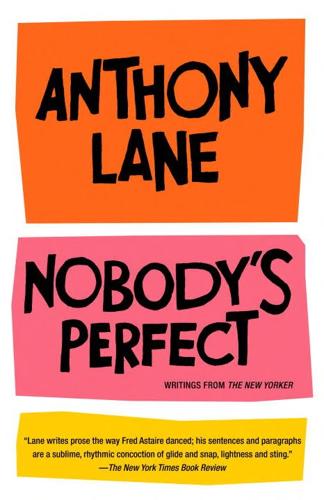
Nobody's Perfect: Writings From the New Yorker
by
Anthony Lane
Published 26 Aug 2002
In descending order of height, it consists of Natalie (Cameron Diaz), Alex (Lucy Liu), and the misleadingly named Dylan (Drew Barrymore). The first is blond, the second dark, and the third a redhead, but they switch wigs, outfits, and, occasionally, languages with such reckless zeal that, were Wim Wenders directing this picture, I would call it a classic study of ontological meltdown and the disintegrating self. At one genuinely troubling moment, two of the three girls turn into guys, complete with suits and mustaches; I caught the sound of spluttering and zapping, and a quick look around the theatre confirmed that this innocent twist of plot had caused five hundred male sexual radars to implode simultaneously.
…
In the event that you ever come across the three volumes of Housman’s Classical Papers in a secondhand bookstore, grab them; even if you don’t have a word of Latin or Greek (and Housman convinces you that it is better to have no words than to have the wrong ones), his sense of passionate glee, as he whets his intellectual knives for the purposes of ritual disembowelment, offers the reader as unflagging a demonstration of native wit as can be found in English since the reign of Sydney Smith. Housman has none of Smith’s tolerance or Christian benignity, but this is the arena of pure scholarship, where slackness is a sin beyond purgation. By now you could be forgiven for thinking that what Housman meant by classical studies had nothing to do with literature—or, at any rate, that he treated ancient texts not as founts of wisdom but as diseased bodies that required unflinching attention if they were to be made whole. He even dismissed Manilius, on whom he expended half his existence, as “facile and frivolous.” Some readers have found this attitude not merely perplexing but distressing, as if Housman were using his professional skills to deny himself the pleasures of the text—as if to admit that you were moved by Propertius, say, were somehow to admit failure.

Behave: The Biology of Humans at Our Best and Worst
by
Robert M. Sapolsky
Published 1 May 2017
“Sweetie, I love that you question things, but if you run into the street and I scream ‘Stop,’ you stop.” A lower-SES childhood is rife with threat. The other theme is preparing the child for the tough world out there—for the poor, adulthood consists of the socially dominant treating them in an authoritarian manner. Class differences in parenting were explored in a classic study by the anthropologist Adrie Kusserow of St. Michael’s College, who did fieldwork observing parents in three tribes—wealthy families on Manhattan’s Upper East Side; a stable, blue-collar community; and a poor, crime-ridden one (the last two both in Queens).58 The differences were fascinating. Parenting in the poor neighborhood involved “hard defensive individualism.”
…
What is the neurobiology of obedience to authority, when you’re being ordered to do something wrong? A similar mixture as with conformity, with the vmPFC and the dlPFC mud-wrestling, with indices of anxiety and glucocorticoid stress hormones showing up to bias you toward subordination. Which leads us to consider classic studies of “just following orders.” Asch, Milgram, and Zimbardo The neurobiology of conformity and obedience won’t soon be revealing much about the core question in this field: if the circumstances are right, is every human capable of doing something appalling simply because they’ve been ordered to, because everyone else is doing it?
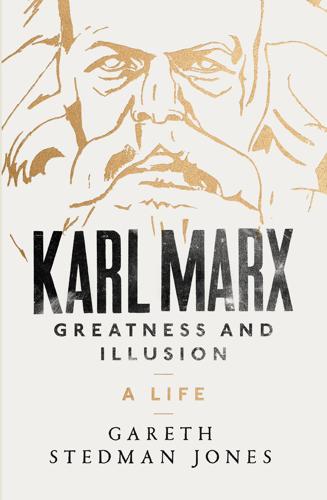
Karl Marx: Greatness and Illusion
by
Gareth Stedman Jones
Published 24 Aug 2016
What has now to be explained is how family circumstance, the critical condition of German religion and philosophy, and, above all, Karl’s own soaring intellectual ambitions combined to shape such a singular stance. 2 The Lawyer, the Poet and the Lover 1. HENRIETTE PRESSBURG AND HER CHILDREN So far, nothing has been said about Karl’s mother, Henriette, née Pressburg. Generally, she has received cursory and for the most part condescending treatment. In his classic study of 1918, Franz Mehring devoted less than half a paragraph to her, noting only that ‘she was completely absorbed in her domestic affairs’, and that she could only speak broken German.1 Why her German grammar and spelling remained so poor remains a mystery. It cannot simply be ascribed to her upbringing in the Netherlands, or her preference for Dutch, since her sister, Sophie, not only spoke and wrote good German, but also had mastered several other languages.
…
Therefore, as noted earlier (see here), Maurer, the historian of ancient Germany, when ‘analysing this commune of secondary formation, was able to reconstruct the archaic prototype’.169 ‘The vitality of primitive communities’, Karl claimed, ‘was incomparably greater than that of Semitic, Greek, Roman, etc. societies, and a fortiori that of modern capitalist societies.’170 Or, as he noted of the work of the American anthropologist Lewis Henry Morgan, both on the Grecian gens and on the character of the Iroquois, ‘unmistakeably … the savage peeps through’.171 Karl was inspired by Morgan’s depiction of the gens as that form of primitive community which preceded patriarchy, private property, class and the state. Morgan inferred the existence of the gens, both from his contemporary researches on the tribes of North America, especially the Iroquois, and from his classical study of Greece and Rome.172 Excited by the new world which prehistory had opened up, Karl now had a vision that encompassed not ‘merely’ bourgeois society, but the whole trajectory of ‘civilization’ since the downfall of the primitive community. Remarkably, Karl had come to agree with the French ‘utopian’ socialist Charles Fourier that ‘the epoch of civilization is characterised by monogamy and private property in land’ and that ‘the modern family contained within itself in miniature all the antagonisms which later spread through society and its state’.173 ‘Oldest of all’, he noted, primitive community contained ‘the existence of the horde with promiscuity; no family; here only mother-right could have played any role’.174 One of the most interesting features of Karl’s new focus upon the durability and ‘viability’ of the archaic village community was the way in which it invited the restatement of the conception of human nature so eloquently spelled out by him in 1843 and 1844 during his time in Paris.

Capitalism 4.0: The Birth of a New Economy in the Aftermath of Crisis
by
Anatole Kaletsky
Published 22 Jun 2010
(One can see why many of today’s academics fear the return of economics to its philosophical and literary roots.) If any of these giants of economic thinking lived today and submitted their papers to leading academic journals or applied for jobs at elite universities, they would be ridiculed and rejected. As Thomas Kuhn explained fifty years ago in his classic study of scientific progress, The Structure of Scientific Revolutions, academic establishments fight hard to resist paradigm shifts, even in physics, chemistry, and other objective, empirically testable hard sciences. In economics, with all its ideological connections, a paradigm shift will be resisted even more fiercely, despite the spectacular failures the crisis revealed.
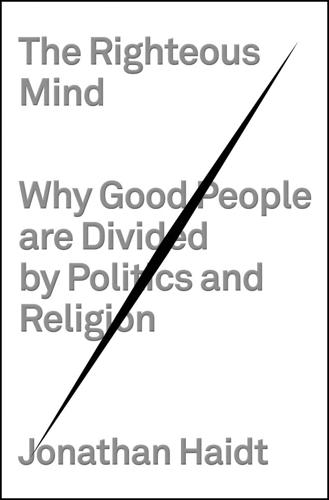
The Righteous Mind: Why Good People Are Divided by Politics and Religion
by
Jonathan Haidt
Published 13 Mar 2012
The exception to this rule is that when the material benefits of a policy are “substantial, imminent, and well-publicized,” those who would benefit from it are more likely to support it than those who would be harmed. See also D. T. Miller 1999 on the “norm of self-interest.” 36. Kinder 1998, p. 808. 37. The term is from Smith, Bruner, and White, as quoted by Kinder 1998. 38. See the classic study by Hastorf and Cantril (1954) in which students at Dartmouth and Princeton came to very different conclusions about what had happened on the football field after watching the same film showing several disputed penalty calls. 39. Lord, Ross, and Lepper 1979; Munro et al. 2002; Taber and Lodge 2006.
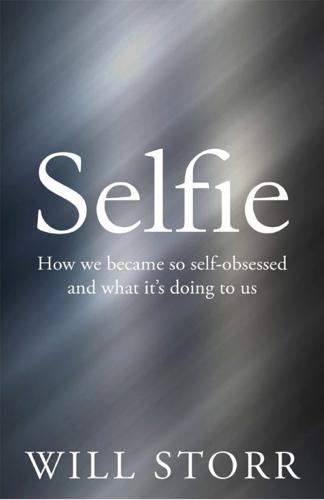
Selfie: How We Became So Self-Obsessed and What It's Doing to Us
by
Will Storr
Published 14 Jun 2017
babies universally prefer faces of their own race: Just Babies, Paul Bloom (Bodley Head, 2013), p. 105. Children as young as six: Just Babies, Paul Bloom (Bodley Head, 2013), p. 113. The effect of our tribal brains has been shown in numerous experiments: For more information, see my previous book, The Heretics (Picador, 2013). One classic study of this effect is ‘Experiments in intergroup discrimination’, H. Tajfel, Scientific American (1970), vol. 223, pp. 96–102. we are great apes that sit in the primate superfamily Hominoidea: http://australianmuseum.net.au/humans-are-apes-great-apes. Caring about what others think of us: The Self Illusion, Bruce Hood (Constable, 2011), p. 138.

To the Ends of the Earth: Scotland's Global Diaspora, 1750-2010
by
T M Devine
Published 25 Aug 2011
Ferrier, acclaimed by some in his own time as the most significant philosopher in Europe, and Alexander Bain, Regius Professor of Logic at Aberdeen, also with a distinguished international reputation, are very worthy of serious academic consideration. So too is Edward Caird, leader of the ‘Scottish Idealists’. In social studies, Sir James Frazer was a pioneering anthropologist. Educated at both Glasgow and Cambridge, his background in classical studies was also influenced by Kelvin, who stimulated him to search for the absolute laws of nature. His seminal work was the monumental two-volume The Golden Bough, first published in 1890, which gave powerful new insights into the study of early societies. His contemporary, Patrick Geddes, also established a world-class reputation through his studies of the new cities that were transforming all the industrializing countries and his conviction that life for their citizens could be improved through effective planning and a serious effort to understand the environment.

The Working Poor: Invisible in America
by
David K. Shipler
Published 12 Nov 2008
This can set up a culture clash between the Latino parent and “the harried, hurried medical care provider in the United States,” he noted. “If you feel that you’ve been slighted, you’re not going to follow through with therapy, you’re not going to come back for a return visit, and that will affect your health.” Fatalism figured in “a classic study showing that Latinos are significantly more likely to believe that a diagnosis of cancer is an act of God and there’s not much you can do about it,” he said. “They probably won’t screen themselves as much, they won’t adhere to therapy, and they’ll present in the later stages of the disease.” Language also divides, sometimes dangerously.
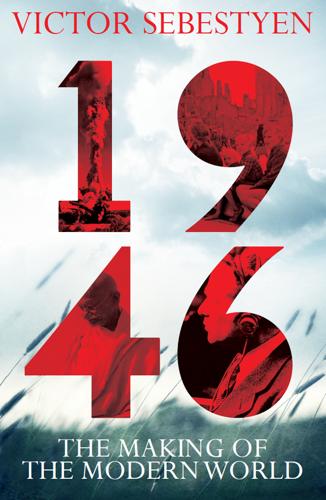
1946: The Making of the Modern World
by
Victor Sebestyen
Published 30 Sep 2014
That we stayed alive is our guilt.9 Jaspers’s most famous pupil, Hannah Arendt, made an abstract point which the German de-Nazification tribunals turned, with few philosophical niceties, into a concrete form of judicial practice. Arendt, a Jew, spent much of the 1930s and the war years in exile in the US. Author of the classic study The Origins of Totalitarianism, one of the first books to argue that fascism and communism were essentially two sides of the same coin, she passionately opposed the concept of collective guilt: ‘Where all are guilty, nobody in the last analysis can be judged.’10 * As time went on, the questionnaire became more thorough – and a lot more bureaucratic.
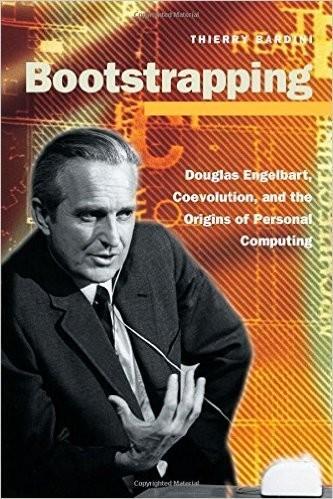
Bootstrapping: Douglas Engelbart, Coevolution, and the Origins of Personal Computing (Writing Science)
by
Thierry Bardini
Published 1 Dec 2000
See the Hackers' DIctIonary, avail- able on-line at the following ftp address: ftp://sailor.gutenberg.org/pub/gutenberg/ etext9 2!j argn I o. txt. 25. See MacCormac (1984), for an examination of the "brain as a computer" metaphor in the histoncal perspective of the eighteenth-century metaphor of "man as a machIne." Also see Mitcham (1986) for a thorough survey of the classic studies concerning the human (socIal, cultural, ethIcal, and relIgious) dImensIons of com- puters. Lars-Erik Janlert has focused on this representation of "the computer as a person," and concluded, at the opposite of the original eighteenth-century metaphor of "man as a machine," that "the person view, however, is the exact antithesis: make man the measure of mach,nes!"

Vultures' Picnic: In Pursuit of Petroleum Pigs, Power Pirates, and High-Finance Carnivores
by
Greg Palast
Published 14 Nov 2011
Ronald Roberts had gone to sniff the scene ahead of us and ask BP questions without raising questions himself. His real name isn’t Ronald, it’s Zachary : Zach Roberts the photojournalist. But if you Google “Ronald” Roberts, you get a photo of a Florida sex offender, deceased, as well as the author of the classic study Fish Pathology. Despite the oil still barfing out of its Macondo hole, BP was in holocaust denial mode: The fish were not dead. And, BP said, if they were dead, BP didn’t kill them. Investigating fish murder isn’t my game. So I would need an expert who wasn’t full of shit and wasn’t full of industry money.

The Tyranny of Experts: Economists, Dictators, and the Forgotten Rights of the Poor
by
William Easterly
Published 4 Mar 2014
Over the succeeding centuries, individual freedom would take shape in these free cities in northern Italy and spread to other parts of Europe. FROM TYRANNY TO RIGHTS IN EUROPE It was going to be a long journey to get to individual rights. The starting point in Europe was not hopeful. As one classic study of the individual in the Middle Ages in Europe puts it: “the individual was no more than a recipient of orders, of commands, of the law, and as a layman, in particular, he was merely a passive spectator who was to obey.”10 Medieval culture placed no value on the individual; it recognized no right for the individual to choose his (much less her) own path.
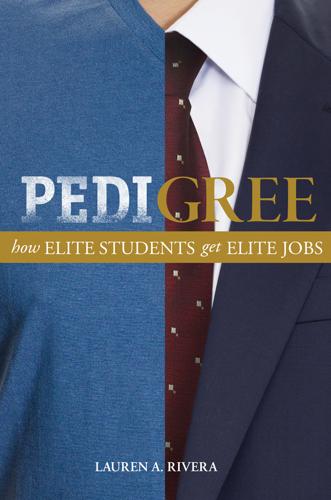
Pedigree: How Elite Students Get Elite Jobs
by
Lauren A. Rivera
Published 3 May 2015
For discussions, see Ambady and Weisbuch 2010; Collins 2004. 24. Addressing methodological issues of interviewing elites, sociologist Susan Ostrander (1993) noted that a hallmark of elites is that they tend to begin research interviews by interviewing the researcher. 25. For example, in her classic study The Managed Heart, Arlie Hochschild (1983) found that airplane flight crews were hired for their ability to engage in surface acting, presenting a consistently cheerful attitude to passengers. Such sustained performance required a large amount of emotional labor that could take a toll on employees’ well-being.

The Divided Nation: A History of Germany, 1918-1990
by
Mary Fulbrook
Published 14 Oct 1991
Cf. the entry under 'Reichs-Autobahnen' in the Volksbrockhaus, p. 563: 'die nationale Bedeutung der Reichsautobahnen liegt darin, dass sie weite Landesteile dem Verkehr erschliessen und das ineinanderwachsen der deutschen Stämme färdern.' 14. See R. J. Overy, The Nazi Economic Recovery 193238 (London: Macmillan, 1982); V. Berghahn, Modern Germany (Cambridge: Cambridge University Press, 1982), pp. 1489. 15. See Kershaw, Nazi Dictatorship, op. cit., ch. 7; the classic study is David Schoenbaum, Hitler's Social Revolution (London: Weidenfeld and Nicolson, 1969; orig. 1966). 16. Quoted in Helmut Krausnick, 'Judenverfolgung' in Hans Buchheim et al., Anatomie des SS-Staates (Munich: dtv, 1967), vol. II, p. 279. 17. Cf. David Astor, 'Adam von Trott: A Personal View' in Hedley Bull (ed.), The Challenge of the Third Reich (Oxford: Clarendon Press, 1986), pp. 2732; see also Michael Balfour's discussion of Trott in Withstanding Hitler, pp. 17987.

If You're So Smart, Why Aren't You Happy?
by
Raj Raghunathan
Published 25 Apr 2016
Ariely and his colleagues conducted several other studies to assess the impact that incentives have on performance. Across all these studies, a consistent pattern emerged: participants performed better when they didn’t have the pressure of a monetary reward hanging over their heads like Damocles’ sword.* These findings are, of course, broadly consistent with those from the classic studies (conducted in the 1980s) on intrinsic motivation. As those studies showed, extrinsic rewards and incentives—carrots and sticks—worsen (rather than improve) performance. The reason why extrinsic rewards hurt our performance is because they distract us from getting into flow; when we are rewarded or punished based on outcome of goal pursuit, we lose the ability to focus on the process of goal pursuit.
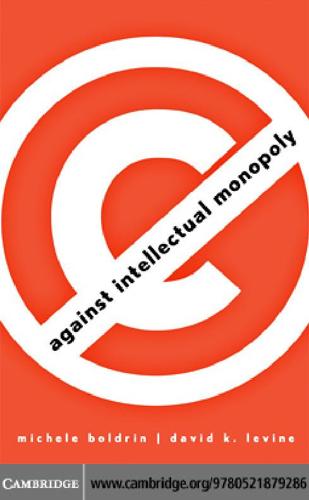
Against Intellectual Monopoly
by
Michele Boldrin
and
David K. Levine
Published 6 Jul 2008
One possible starting point among many is Urban (2000). Two other judicial rulings that were instrumental in the process of extending patents to the agricultural and biotechnological sector are Ex parte Hibbert in 1985 and Ex parte Allan in 1987. 24. Alston and Venner (2000), Abstract. For a classical study of the diffusion of agricultural innovation in the US in the period before the PVPA bill made it a big monopolies feast, the technically inclined reader should consult Griliches (1957), who beautifully documents competitive innovation at work. The many sweeping statements we have made, here and in the previous chapter, in relation to the agricultural sector and the irrelevance of patents for its technological development, are based on the scientific research reported in Butler and Marion (1985), Campbell and Overton (1991), Griliches (1960), Kloppenburg (1988), McClelland (1997), among others. 25.

Mapping Mars: Science, Imagination and the Birth of a World
by
Oliver Morton
Published 15 Feb 2003
But if so, then landing-site selection is still a necessary evil. Missions that land add to our understanding of a planet with data that simply can’t be sensed from orbit. There is no way to explore without them. And as they add to the science, they also change its context. They provide us with the opportunity to create real places. In his classic study Place and Placelessness, the Canadian geographer Edward Relph explains how much more there is to a place than the objective facts of its spatial coordinates. “In our everyday lives places are not experienced as independent, clearly defined entities that can be described simply in terms of their location or appearance.

Straphanger
by
Taras Grescoe
Published 8 Sep 2011
There is a corresponding sense of group: our cozy warrens are just for us, not for those of you outside.” Today’s expressways cover ancient canals, and major avenues follow the ridge and valley roads of ancient Edo. “In Europe, cities grew by repeatedly breaking through and expanding beyond the hard shell of the city walls,” Jinnai Hidenobu wrote in his classic study, Tokyo: A Spatial Anthropology. “In Edo, by contrast, the location of the temples and shrines and their use of the land around them meant that the city’s life solidified inside a series of soft shells.” In European cities, stone walls were built to protect the people; in densely settled Japanese cities, the people served as the walls.

Jihad vs. McWorld: Terrorism's Challenge to Democracy
by
Benjamin Barber
Published 20 Apr 2010
Tom Peters, Liberation Management: Necessary Disorganization for the Nano-second Nineties (New York: Alfred A. Knopf, 1993), p. 6. 15. William Gibson, with his trilogy of works in the early eighties (Neuromancer, Count Zero, and Mona Lisa Overdrive), introduced the notion of cyberspace (from Norbert Wiener’s classic study of interactive communications technology and cybernetics in the late forties) into general parlance. Technically, the term refers to the invisible electronic information space between the computer keyboard (input) and the computer screen (output). The New York Times devoted nearly an entire issue of its Book Review to computer-generated books and the literary culture of cyberspace in 1994, and since then it has reviewed CD-ROM “books” as well. 16.

Super Continent: The Logic of Eurasian Integration
by
Kent E. Calder
Published 28 Apr 2019
The Diplomat, May 12, 2017, https://thediplomat.com/2017/05/who-is-actually-attending -chinas-belt-and-road-forum/. 70. Wang, The Belt and Road Initiative, 37. 71. Ibid., 191. chapter 3 1. Zbigniew Brzezinski, The Grand Chessboard: American Primacy and Its Geostrategic Imperatives (New York: Basic Books, 1997), 31. 2. For the classic study of Deng Xiaoping and his key role in making Chinese politicaleconomic history, see Ezra F. Vogel, Deng Xiaoping and the Transformation of China (Cambridge, MA: Belknap Harvard, 2011). 3. On the early genesis of the Four Modernizations, see Immanuel Chung-yueh Hsu, China without Mao: The Search for a New Order, 2nd ed.

Open: The Story of Human Progress
by
Johan Norberg
Published 14 Sep 2020
As Friedrich Hayek explained: ‘civilisation rests on the fact that we all benefit from knowledge that we do not possess’.17 Such constant cooperation and exchange give us better access to the services and goods we need, so long as we can trust that others will be there to scratch our backs if we have scratched theirs. One classic study showed that chimpanzees are more willing to share food with chimps who have recently groomed them, and more likely to respond aggressively to requests for food from chimps who had not recently groomed them.18 But chimps have not taken this to the next level by systematically keeping track of free riders and helpers in the larger group, to administer rewards and punishments.

Persians: The Age of the Great Kings
by
Lloyd Llewellyn-Jones
Published 15 Mar 2022
—Touraj Daryaee, University of California, Irvine “This is an engaging, pacy account of the Persian Empire which is based on a rich range of sources. Going right up to the use of Cyrus the Great in modern Iran, the ‘Persian Version’ on which Professor Lloyd-Jones focuses has much to tell us about how different cultures create history and use it to tell their stories.” —Helen King, professor emerita, Classical Studies, The Open University “A masterful account and evocation of the history and culture of the first true world empire.” —Aidan M Dodson, Hon Professor of Egyptology, University of Bristol “For too long, the world of Achaemenid Persia has been viewed through the eyes of often hostile foreigners.

England: Seven Myths That Changed a Country – and How to Set Them Straight
by
Tom Baldwin
and
Marc Stears
Published 24 Apr 2024
In much the same way as the university has no centre, the English Establishment lets a thousand contradictions bloom. As Housman says at the end: ‘Oxford in the Golden Age! The hairshirts versus the Aesthetes; the neo-Christians versus the neo-Pagans; the study of classics for advancement in the fair of the world versus the study of classics for the advancement of classical studies − what emotional storms, and oh what a tiny teacup.’21 As an island of inclusion and tolerance in a sea of prejudice and ignorance, or a point of stability in a turbulent world, such an imaginary Oxford had real value. For the same reasons it is filled with myth, the university was where people with sharply varying views have been able to live, argue and sometimes fall in love with each other.

Investing Amid Low Expected Returns: Making the Most When Markets Offer the Least
by
Antti Ilmanen
Published 24 Feb 2022
Only in the past decade have asset owners been able to negotiate typical hedge fund fees down to 1–1.5% fixed fee plus 10–15% performance fee. Yet the most popular hedge fund managers can still charge 2+20 or even more. I will not focus on fixed versus performance fee for hedge funds and private asset funds but try to cover all-in fees. Mutual funds and long-only institutional funds do not charge performance fees. The classic study before the last decade, French (2008), documented that mutual fund fees and institutional fund fees edged lower between 1980 and 2006, but since investors raised the weights of high-fee hedge funds, there was no downward trend in total annual fees paid. During this period, the excess fees investors spent trying to outperform passive US indices averaged 67bp.
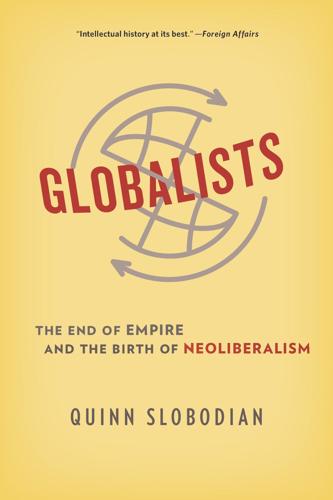
Globalists
by
Quinn Slobodian
Published 16 Mar 2018
Taking the position of Chamber secretary in 1918, Mises was obliged to advise the government and write expert evaluations of new laws in the interwar period, a duty that peaked with leading a three-person Economic Commission in 1930.12 Even if he is remembered for his work on social philosophy and theories of money and credit, Mises earned his livelihood for much of his adult life as a forthright advocate for the needs of business, including with the Chamber of Commerce in the 1920s and 1930s, and the National Association of Manufacturers (NAM) and Foundation for Economic Education after his emigration to the United States.13 The location of the Vienna Chamber of Commerce on the Ringstrasse was heavy with symbolism and helps illustrate the milieu out of which the Austrian strain of neoliberalism emerged. The boulevards themselves were built in the wake of the revolutions of 1848 on the vacant land that had once been the medieval city walls. In his classic study of fin-de-siècle Vienna, Carl Schorske describes how the liberal city government used the Ringstrasse to showcase its vision of social order, building the parliament and city hall alongside theaters and the university.14 The developments echoed those under way in Paris under the direction of Baron George-Eugène Haussmann.

Inflated: How Money and Debt Built the American Dream
by
R. Christopher Whalen
Published 7 Dec 2010
Hazlitt made the case that the U.S. policy of flooding the world with dollars, via loans, grants and other measures, would not generate wealth in the United States or the recipient nations.12 That is precisely the policy that Washington followed, however, on again and off again, since 1867; to use the expansion of the paper money supply to drive nominal economic growth, even if it meant a reduction in the real value of the currency. In a similar vein, Milton Friedman and Anna Schwartz calculated the growth in the U.S. money supply over the period of their classic study of American money, 1867 to 1960: The public held 50 times as many dollars of currency at the end of the 93 years spanned by our figures as at the beginning; 243 times as many dollars of commercial bank deposits; and 127 times as many dollars of mutual savings deposits. The total we designate as money multiplied 157-fold in the course of these nine decades, or at the rate of 5.4 per cent.
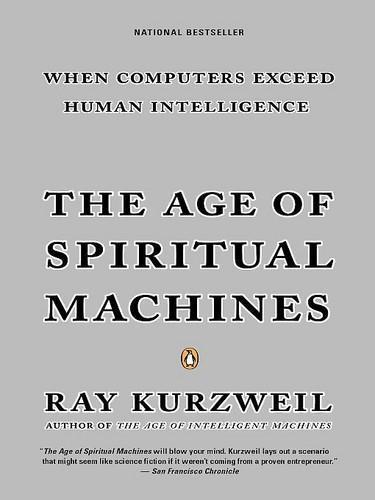
The Age of Spiritual Machines: When Computers Exceed Human Intelligence
by
Ray Kurzweil
Published 31 Dec 1998
A Bibliography of Computer Music: A Reference for Composers. Iowa City: University of Iowa Press, 1981. Toepperwein, L. L., et al. Robotics Applications for Industry: A Practical Guide. Park Ridge: Noyes Data Corporation, 1983. Toffler, Alvin. Powershift. New York: Bantam Books, 1990. ————. The Third Wave: The Classic Study of Tomorrow. New York: Bantam Books, 1980. Toffoli, Tommaso and Norman Margolis. Cellular Automata Machines: A New Environment for Modeling. Cambridge, MA: MIT Press, 1987. Torrance, Stephen B., ed. The Mind and the Machine: Philosophical Aspects of Artificial Intelligence. Chichester, UK: Ellis Horwood, 1986.

The Medical Detectives
by
Berton Roueche
Published 1 Jan 1980
DeMonbreun, professor of pathology at Vanderbilt University School of Medicine, successfully isolated a colony of H. capsulatum spores and cultivated them to definitive fungoid maturity. Darling's other errors eluded detection even longer—until 1945. Their exposure was the joint accomplishment of three now classic studies. One of these was the Archives of Internal Medicine case review. The others were the work of the team of Amos Christie and J. C. Peterson, both professors of pediatrics at Vanderbilt, and a team headed by C. E. Palmer, then director of the United States Public Health Service Tuberculosis Research Office, in Washington.
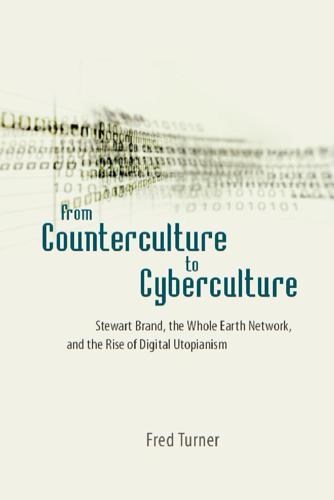
From Counterculture to Cyberculture: Stewart Brand, the Whole Earth Network, and the Rise of Digital Utopianism
by
Fred Turner
Published 31 Aug 2006
This pattern of giving without expectation of immediate reward had deep roots in the San Francisco Bay area counterculture; for Rheingold and others, it was this pattern that distinguished the sorts of information exchange happening in places like the WELL from those of ordinary, cash-and-carry markets.43 As several generations of sociologists and anthropologists have pointed out, though, a gift economy is not simply a system for the exchange of valuable goods. It is also a system for the establishment of social order.44 Marcel Mauss argued in The Gift, his classic study of exchange relations in pre-industrial societies, that there is no such thing as a “pure gift.” Gifts entail obligations and generate cycles of exchange that serve to establish and maintain structural relations between givers and receivers. Moreover, as Mauss suggested, the gift itself never stands outside social or economic relations.

Exploding the Phone: The Untold Story of the Teenagers and Outlaws Who Hacked Ma Bell
by
Phil Lapsley
Published 5 Feb 2013
See AT&T, Notes on Distance Dialing, 1968, section 5, p. 14 <db1001>. 227–228 “We would sit there”: Mark Bernay, author interview, 2011. 228 “We didn’t even know,” “It’s not something”: Wayne Perrin, notes and author interview, 2008. 228 “all sorts of shortages these days” and subsequent description: Andrew H. Malcolm, “The ‘Shortage’ of Bathroom Tissue: A Classic Study in Rumor,” New York Times, February 3, 1974 <db1031>. The perception of a shortage was due to a confluence of factors, not just Carson’s joke. In particular, a congressman had issued a press release a few weeks earlier stating that the United States might soon face a serious shortage of toilet paper and that rationing might be necessary.
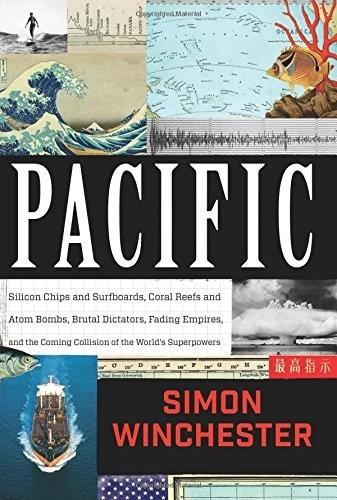
Pacific: Silicon Chips and Surfboards, Coral Reefs and Atom Bombs, Brutal Dictators, Fading Empires, and the Coming Collision of the World's Superpowers
by
Simon Winchester
Published 27 Oct 2015
Reimer, the director of the Centre for Climate, Environment, and Chronology at Queens University, Belfast’s School of Geography, have also written on the topic, encouraging the acceptance of 1950 as the “present” in the new dating system that has replaced AD and BC with BP. CHAPTER 1: THE GREAT THERMONUCLEAR SEA Details of the crucial conversations between President Truman and his CIA director, Admiral Souers, which led to the decision to develop fusion weapons, later to be tested on Bikini and Enewetak atolls, can be found in Richard Rhodes’s classic study of the development of hydrogen bombs, Dark Sun. The matter of then selling the test program to the Bikinians is more than amply covered in Holly Barker’s Bravo for the Marshallese, Connie Goldsmith’s Bombs over Bikini, and Jack Niedenthal’s For the Good of Mankind—the last being the cynically persuasive argument put forward by the generals and admirals who came a-courting the eagerly patriotic islanders.
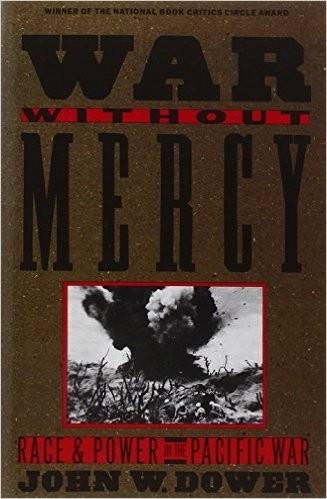
War Without Mercy: PACIFIC WAR
by
John Dower
Published 11 Apr 1986
Still, those who became professionally engaged with Japan were with few exceptions uncommonly zealous in insisting upon their subject’s “uniqueness” and its unparalleled predisposition to the “irrational” and the “illogical.” The English scholar-diplomat George Sansom, the most esteemed Western expert on Japanese culture in the years prior to Pearl Harbor, was attracted to Japan because it was “so peculiarly sui generis.” John Embree, an American anthropologist who wrote a classic study of a Japanese village in the 1930s, agreed that “Japan and the Japanese are different from other nations, or rather, as Japanese nationalists phrase it, they are ‘unique among the peoples and cultures of the world.’ ”3 Compton Pakenham, an English military officer raised in Japan, who knew Konoe Fumimaro, later prime minister, as a boy and spent a half year attached to a Japanese Army regiment before the war, contributed a long series of articles on Japanese psychology to Newsweek magazine in 1945.

The Gamble: General David Petraeus and the American Military Adventure in Iraq, 2006-2008
by
Thomas E. Ricks
Published 14 Oct 2009
After four years in Iraq, no one seemed to expect the Americans to develop a way to operate differently and more effectively. The shift was all the more unexpected because it came as President Bush was politically cornered. Usually, “sustained strategic boldness . . . requires a solid foundation of popular support,” Oxford historian Piers Mackesy observed in The War for America, his classic study of how the British managed to lose the American Revolutionary War in 1781 after appearing to have won it just a year earlier. But in agreeing to a troop escalation, Bush was operating from a position of extraordinary political weakness. Not only was he deeply unpopular, he had reversed course at a time when it seemed that stubborn persistence was his sole virtue as a leader: After years of saying he would heed the advice of his military, Bush had split with the overwhelming view of his top military leaders, from the Pentagon to Central Command to the top general in Iraq.
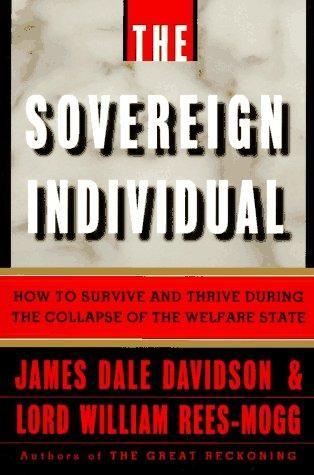
The Sovereign Individual: How to Survive and Thrive During the Collapse of the Welfare State
by
James Dale Davidson
and
William Rees-Mogg
Published 3 Feb 1997
There is an obvious temptation to think that the growth of big cities is a direct function of population growth. But this is not necessarily so. Every human on earth could be packed into Texas, with each family living in its own detached house with a yard, and still have some of Texas left over. As Adna Weber argued in the classic study The Growth of Cities in the Nineteenth Century, population growth alone does not explain why people live in urban settings rather than dispersed in the countryside. In 1890, Bengal had about the same population density as England. Yet Bengal's urban population was just 4.8 percent, while England's was 61.7 percent.25 Historically, cities were walled off from the countryside to keep marauders and the lower classes out.

Multitude: War and Democracy in the Age of Empire
by
Michael Hardt
and
Antonio Negri
Published 1 Jan 2004
There is no way to conceive of the U.S. military at this point as “the people in arms.” It seems rather that in postmodern warfare, as in ancient Roman times, mercenary armies tend to become the primary combat forces. It is strange to have to note how backward the theories of an RMA are with respect to the classic studies of the art of war by such authors as Machiavelli and Clausewitz—something of which today’s traditionalist military theorists are keenly aware. The insistence on a war without casualties, and on the technological asymmetry of the ruling armed forces with respect to all others, strips the social face from the art of war, along with the problem of bodies and their power.
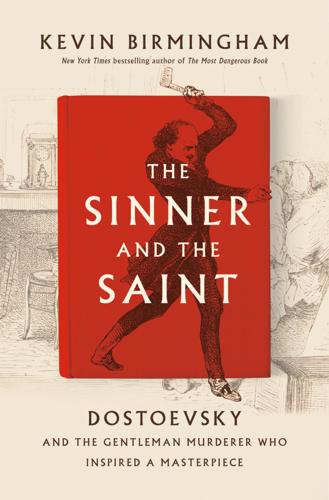
The Sinner and the Saint: Dostoevsky and the Gentleman Murderer Who Inspired a Masterpiece
by
Kevin Birmingham
Published 16 Nov 2021
.: Harvard University Press, 2016); Claudia Verhoeven’s detailed examination of Dmitri Karakozov’s assassination attempt as well as the investigation, trial, and uproar surrounding it, The Odd Man Karakozov: Imperial Russia, Modernity, and the Birth of Terrorism (Ithaca, N.Y.: Cornell University Press, 2009); Abbott Gleason’s Young Russia: The Genesis of Russian Radicalism in the 1860s (New York: Viking, 1980); and Franco Venturi’s classic study, Roots of Revolution: A History of the Populist and Socialist Movements in Nineteenth Century Russia (New York: Knopf, 1960). Dostoevsky’s Dead House guides much of my narration of his prison years. Dostoevsky disguised names and altered enough details to present the work as fiction in order to appease the imperial censors, but the memories were so painful that he once became ill after reading excerpts.
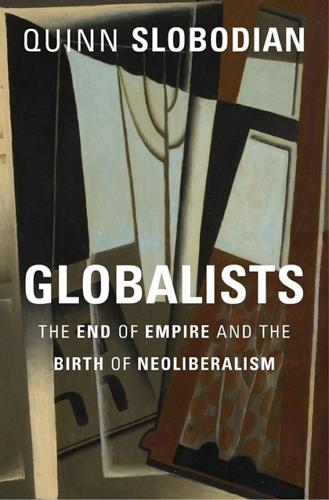
Globalists: The End of Empire and the Birth of Neoliberalism
by
Quinn Slobodian
Published 16 Mar 2018
Taking the position of Chamber secretary in 1918, Mises was obliged to advise the government and write expert evaluations of new laws in the interwar period, a duty that peaked with leading a three-person Economic Commission in 1930.12 Even if he is remembered for his work on social philosophy and theories of money and credit, Mises earned his livelihood for much of his adult life as a forthright advocate for the needs of business, including with the Chamber of Commerce in the 1920s and 1930s, and the National Association of 32 GLOBALISTS Manufacturers (NAM) and Foundation for Economic Education a fter his emigration to the United States.13 The location of the Vienna Chamber of Commerce on the Ringstrasse was heavy with symbolism and helps illustrate the milieu out of which the Austrian strain of neoliberalism emerged. The boulevards themselves w ere built in the wake of the revolutions of 1848 on the vacant land that had once been the medieval city walls. In his classic study of fin- de-siècle Vienna, Carl Schorske describes how the liberal city government used the Ringstrasse to showcase its vision of social order, building the parliament and city hall alongside theaters and the university.14 The developments echoed those under way in Paris under the direction of Baron George-Eugène Haussmann.

Small Wars, Big Data: The Information Revolution in Modern Conflict
by
Eli Berman
,
Joseph H. Felter
,
Jacob N. Shapiro
and
Vestal Mcintyre
Published 12 May 2018
The conflict data were even detailed enough for Vanden Eynde to see that the large majority of victims belonged to the specific groups of civilians who typically collaborated with the Indian government against the rebels. This type of retaliatory violence has gone largely unstudied in the recent empirical literature, for lack of large data sets and variation that lends itself to estimating causal effects. It is more common in earlier, more qualitative research, such as Stathis Kalyvas’s classic study of the Greek civil war.65 In order to rule out reverse causality (violence affecting economic conditions), Vanden Eynde studied the consequences of variation in income generated by variation in rainfall; this is a very strong relationship in rural India, which has a highly localized pattern of monsoon rains affecting crop yields within regions and within years.66 Decreases in income generated by weak rainfall increase violence initiated by insurgents, which might seem at first glance like evidence for relative deprivation or opportunity costs—except that the increased violence is not directed against security forces but against civilians.

Sorting Things Out: Classification and Its Consequences (Inside Technology)
by
Geoffrey C. Bowker
Published 24 Aug 2000
Deleting the name Harley from the registration form is perceived as an insult to the owner, and this insult is stitched together in the article with others that come from the gov ernment toward bikers (restricting meeting places, insisting on helmet wearing, being overly enthusiastic in enforcing traffic violations by bikers ). This is a pure example of the politics of essence, of identity politics. It is echoed in many areas of life, for example, in James Davis' ( 1 99 1 ) classic study Who Is Black ? where the question of the one-drop rule in the United States, and the rejection of mixed-race people as a legitimate category is an old and a cruel story. The central process here is the distillation of the sine qua non out from the messy and crenellated surrounds-the rejection of marginality in favor of purity.

If Mayors Ruled the World: Dysfunctional Nations, Rising Cities
by
Benjamin R. Barber
Published 5 Nov 2013
Good advice for keeping your schedule and sanity intact, but not for keeping your job—which entails cultivating the community at every turn and engaging in every corner of a city’s civic network. Local democracy demands commitment. No doubt, Harvard would also advise against having His Honor run into burning buildings or break up muggings, but it’s hard imagining a mayor worth his salt who would heed such counsel. As Robert Dahl wrote in his classic study of governance, the success of most mayors is not gained from being “at the peak of a pyramid but rather at the center of intersecting circles.”32 What we find at the center of intersecting circles in the city is a home-boy. Mayors are homeboys—“homies” if you like. “People know who we are, they see us on the street,” notes Philadelphia’s Mayor Nutter.

When They Go Low, We Go High: Speeches That Shape the World – and Why We Need Them
by
Philip Collins
Published 4 Oct 2017
By the standards of the early twenty-first century some of these improvements seem minor and from a base so low that it seems like an injustice. But this creeping piecemeal process is exactly how progress in the material conditions of the people of England has come about. The Condition of the English Working Class is, as the name implies, a classic study of the condition of England question. The rhetoric of Orator Hunt at St Peter’s Field provided the stimulus to seek representation in Parliament. The rhetoric of John Bright and Richard Cobden in the Free Trade Hall and in Parliament provided the answer that comes from the good will of commerce.
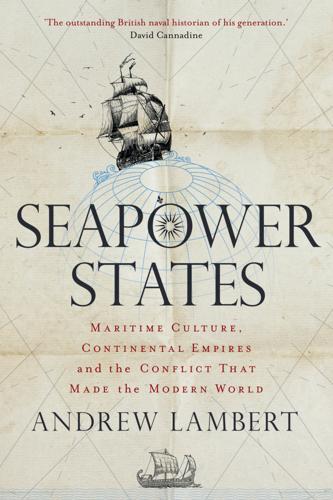
Seapower States: Maritime Culture, Continental Empires and the Conflict That Made the Modern World
by
Andrew Lambert
Published 1 Oct 2018
Lehmann, ‘The Polyeric Quest: Renaissance and Baroque Theories about Ancient Men of War’, PhD thesis, Rotterdam, 1995, pp. 59–60. 40. F. Oliviera, Arte de Guerra do Mar: Estrategia e Guerra naval no Tempo dos Descombrimentos, Lisbon: Ediçöes 70 Lda, for a facsimile and a modern setting of the text. Introduction by A. S. Ribeiro, 41. Boxer, Four Centuries of Portuguese Expansion, pp. 47–8. 42. Ibid., pp. 49–53. 43. The classic study of Portugal’s client relationship with the British is in A. D. Francis, The Methuens and Portugal, 1691–1708, Cambridge: Cambridge University Press, 1966, p. 268. 44. Boxer, Four Centuries of Portuguese Expansion, pp. 65–8. 45. Ibid., pp. 81–2, 87–8. 46. Ibid., p. 54. Chapter 7 1. In the case of Russia and China the need of the post-1950 United States navy for a suitable naval threat has sustained impressive research efforts directed at the naval development of first the Soviet Union and then China.
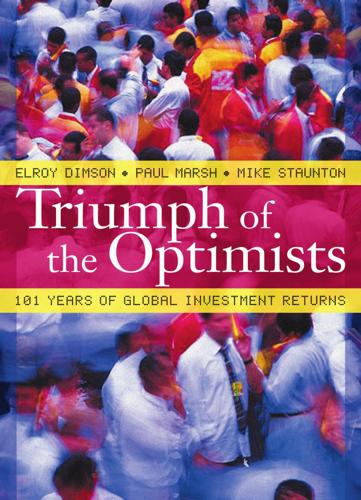
Triumph of the Optimists: 101 Years of Global Investment Returns
by
Elroy Dimson
,
Paul Marsh
and
Mike Staunton
Published 3 Feb 2002
Ball and Bowers (1986) provide a complementary, though brief, historical analysis. We are grateful to Bob Officer for making his database available to us, and also to Ray Ball and John Bowers for providing their own data for Australia. Officer compiled equity returns from a variety of indexes. The early period made use of data from Lamberton’s (1958) classic study. This is linked over the period 1958–74 to an accumulation index of fifty shares from the Australian Graduate School of Management (AGSM) and over 1975–79 to the AGSM value-weighted accumulation index. Subsequently, we use the Australia All-Ordinary index. Bond returns are based on the yields on New South Wales government securities from the start of the century until 1914.
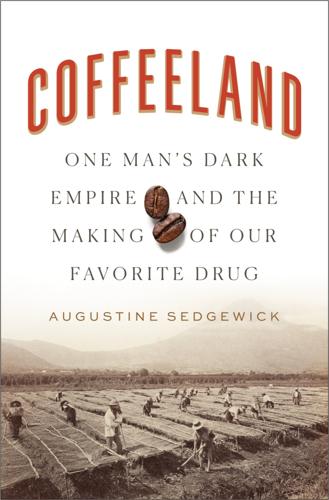
Coffeeland: One Man's Dark Empire and the Making of Our Favorite Drug
by
Augustine Sedgewick
Published 6 Apr 2020
Between five and seven thousand people, divided into loosely coordinated battalions and armed primarily with machetes, rose up at the peak of the harvest season to overturn the order of coffee production, to “make the workers the owners.” Some of the revolutionaries were members of the Communist Party of El Salvador; the “great majority” were people who had worked on coffee plantations and had decided that they would not live that way another day.2 “In a revolution,” wrote historian C. L. R. James in his classic study of Haiti, The Black Jacobins, “when the ceaseless slow accumulation of centuries bursts forth into volcanic eruption, the meteoric flares and flights above are a meaningless chaos and lend themselves to infinite caprice and romanticism unless the observer sees them always as projections of the sub-soil from which they came.”3 In El Salvador in January 1932, revolution ran through the center of the coffee economy as surely as the railroad tracks and telegraph lines ringing the Santa Ana Volcano.
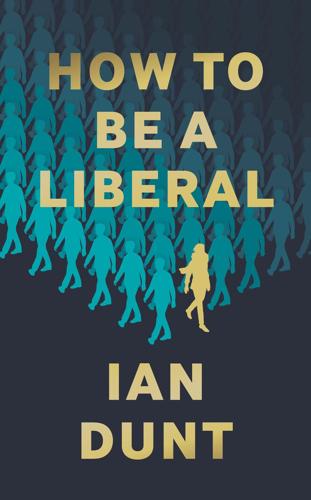
How to Be a Liberal: The Story of Liberalism and the Fight for Its Life
by
Ian Dunt
Published 15 Oct 2020
Other accounts of group identity and prejudice without competitive circumstances can be found in Henri Tajfel’s Experiments in Intergroup Discrimination, in volume 223 issue 5 of Scientific American or Social Categorisation and Intergroup Behaviour, by Henri Tajfel, MG Billig, RP Bundy and Claude Flament, in volume 1 issue 2 of the European Journal of Social Psychology. For a general modern appraisal of these studies read Social Psychology: Revisiting the Classic Studies, edited by Joanne R. Smith and S. Alexander Haslam. The potentials and dangers, but mostly dangers, of new technology are laid out in The People Vs Tech, by Jamie Bartlett, which is very cogent and well judged, and Stand Out of Our Light by James Williams, which is the best account of the attention economy and a poetic, melancholic description of what it is doing to the quality of human life.

Spies, Lies, and Algorithms: The History and Future of American Intelligence
by
Amy B. Zegart
Published 6 Nov 2021
When groupthink strikes, even smart, motivated, well-intentioned, rational individuals working in highly cohesive groups make poor collective decisions. How can this be? Because cohesion turns out to be a double-edged sword. The problem isn’t that there’s too much friction in the group. It’s that there’s too little. Irving Janis, the psychologist who coined the term groupthink in his classic study of the Vietnam War and other U.S. foreign policy fiascoes, found that in high-pressure, high-stakes situations, the need for group affiliation and cohesion can assume overwhelming importance, fostering over-optimism, sloppy thinking, and an inflated sense of the group’s morality. Maintaining group cohesion in the face of external pressures drives members to shy away from questioning, dissenting, and exploring alternative viewpoints—even though these are precisely the types of behaviors found to improve analysis.89 When groupthink arises, the whole becomes worse than the sum of the parts.

Waging a Good War: A Military History of the Civil Rights Movement, 1954-1968
by
Thomas E. Ricks
Published 3 Oct 2022
Their interview ended memorably with Gandhi’s farewell comment that “it may be through the [American] Negroes that the unadulterated message of non-violence will be delivered to the world.” Speaking with another American in the 1940s, Gandhi asked about the treatment of its Black people and then said, “A civilization is to be judged by its treatment of minorities.” King also was familiar with Thurman’s classic study, Jesus and the Disinherited, which portrays Christianity as a “survival kit” for “people who stand with their backs against the wall.” So King may not have been showing all his nonviolent cards to Rustin and other out-of-town experts. And if he consciously put a Christian face on Gandhi’s philosophy, as he appears to have done, following Thurman’s lead, that was an act of strategic genius.
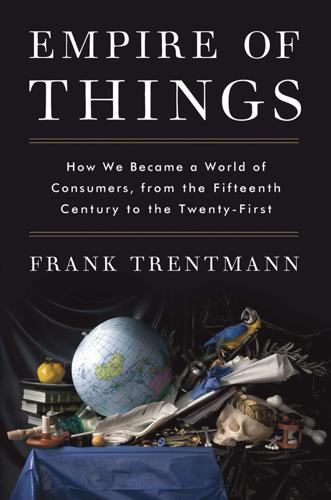
Empire of Things: How We Became a World of Consumers, From the Fifteenth Century to the Twenty-First
by
Frank Trentmann
Published 1 Dec 2015
The demands on heritage require appropriate display and packaging: tweeds and sheepdogs; cheese wrapped in paper, not plastic; a little soil on vegetables to indicate their natural freshness. In reality, of course, heritage is an industry like any other and local markets exist in the modern world, not outside it. Local farmers, too, use abattoirs. Nor are vegetables automatically organic because they are local, as many customers presume. In her classic study of the regional market in Carpentras, near Avignon, Michèle de la Pradelle reconstructed this theatre of illusion and self-deception. Potatoes here were deliberately kept muddy and presented in bulk to suggest they came straight from the farm. In reality, very few small farmers survived in the region.
…
According to a survey of 404 mid-sized and large manufacturing firms: see Pertti Haaparanta et al., ‘Firms and Public Service Provision in Russia’, Bank of Finland, Institute for Economies in Transition, BOFIT Discussion paper no. 16 (2003), Helsinki. 47. Michael Heller, ‘Sport, Bureaucracies and London Clerks 1880–1939’, in: International Journal of the History of Sport 25, no. 5, 2008: 579–614. 48. James E. Roberson, Japanese Working-class Lives: An Ethnographic Study of Factory Workers (London, 1998). The classic study of the salaryman is Ezra Feivel Vogel, Japan’s New Middle Class: The Salary Man and His Family in a Tokyo Suburb (Berkeley, CA, 1963). 49. Peter H. Lindert, Growing Public: Social Spending and Economic Growth since the Eighteenth Century (Cambridge, 2004). 50. http://www.oecd.org/document/9/0,3746,en_2649_33933_38141385_1_1_1_1,00.html. 51.
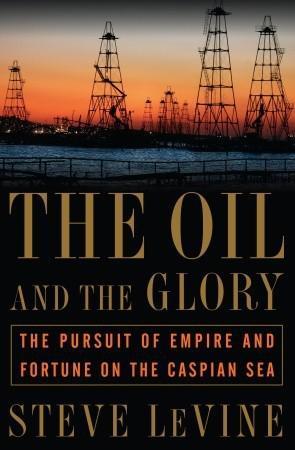
The Oil and the Glory: The Pursuit of Empire and Fortune on the Caspian Sea
by
Steve Levine
Published 23 Oct 2007
A thirty-seven-year-old Indiana native, Forsythe wore enormous round glasses and her hair up in an attempt to look older. Like White, her youthful appearance had caused her to be chronically underestimated. She had grown up as a child prodigy, graduating from Indiana University at age sixteen with a triple major—political science, Russian literature, and classical studies. After sticking around for an additional two years “just to get old enough to do something,” Forsythe toured the far-flung Soviet republics, acquainting herself with its non-Russian nationalities. “I looked like I was about twelve,” she said, “so I was fairly unthreatening to the Russians.” In 1987, she entered government service in the State Department.

The Relentless Revolution: A History of Capitalism
by
Joyce Appleby
Published 22 Dec 2009
By the early twentieth century it was marketing half the electrical products in the international market. At the same time Germany achieved almost a monopoly of European commerce in fine chemicals, dyestuffs, and optics. The Scope of Industries Germans devoted substantial resources to scientific education even while they shared the high premium Europeans put on classical studies. German researchers during the nineteenth century only later found practical applications for their discoveries. And those applications were astounding! Germans gained more knowledge of energy, electricity, and optics than their peers in France and Great Britain combined. Academic researchers and business leaders worked hand in glove in what contemporaries sometimes called a secret marriage.

The end of history and the last man
by
Francis Fukuyama
Published 28 Feb 2006
.: Cornell University Press, 1963), pp. 152-153. 3 Internal dissent against Hitler was manifest in the July 1944 plot against his life, and would perhaps have become as pervasive as it did in the Soviet Union had the regime survived a few more decades. 4 On this point, see the Introduction to Guillermo O’Donnell and Philippe Schmitter, eds., Transitions from Authoritarian Rule: Tentative Conclusions about Uncertain Democracies (Baltimore: Johns Hopkins University Press, 1986d), p. 15. 5 5. The classic study of this subject is Juan Linz, ed., The Breakdown of Democratic Regimes: Crisis, Breakdown, and Reequilibriation (Baltimore: Johns Hopkins University Press, 1978). 6 Quoted from a Swiss journalist in Philippe C. Schmitter, “Liberation by Golpe: Retrospective Thoughts on the Demise of Authoritarianism in Portugal,” Armed Forces and Society 2, no. 1 (November 1975): 5-33. 7 See ibid.; and Thomas C.

Hyperion
by
Dan Simmons
Published 15 Sep 1990
Both had lived their entire lives on Barnard’s World, one of the oldest but least exciting members of the Hegemony. Barnard’s was in the Web, but it made little difference to Sol and Sarai since they could not afford frequent farcaster travel and had little wish to go at any rate. Sol had recently celebrated his tenth year with Nightenhelser College, where he taught history and classical studies and did his own research on ethical evolution. Nightenhelser was a small school, fewer than three thousand students, but its academic reputation was outstanding and it attracted young people from all over the Web. The primary complaint of these students was that Nightenhelser and its surrounding community of Crawford constituted an island of civilization in an ocean of corn.
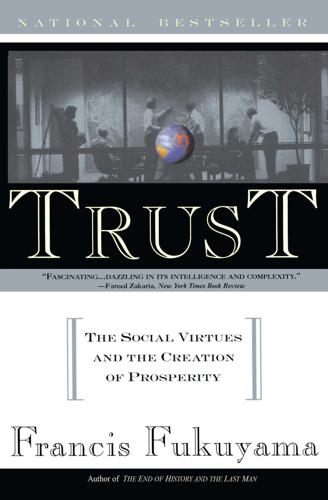
Trust: The Social Virtue and the Creation of Prosperity
by
Francis Fukuyama
Published 1 Jan 1995
Because a high degree of competition exists among families, reflecting the absence of a generalized sense of trust within the society, cooperation in group activities outside family or lineage ties is strictly limited. Compare this situation to the description of social life in the small southern Italian town of “Montegrano” in Edward Banfield’s classic study, The Moral Basis of a Backward Society: The individual’s attachment to the family must be the starting place for an account of the Montegrano ethos. In fact, an adult hardly may be said to have an individuality apart from the family: he exists not as “ego” but as “parent”…. In the Montegrano mind, any advantage that may be given to another is necessarily at the expense of one’s own family.

Coming of Age in the Milky Way
by
Timothy Ferris
Published 30 Jun 1988
New York: Brentano’s, 1920. Losee, J. An Historical Introduction to the Philosophy of Science. London: Oxford University Press, 1972. Short survey, with an emphasis on the history of the concept of experimentation. Lovejoy, Arthur O. The Great Chain of Being. Cambridge, Mass.: Harvard University Press, 1953. Classic study of a durable metaphor. Lubbock, Constance A. The Herschel Chronicle. New York: Macmillan, 1933. Memoirs by William Herschel’s granddaughter. Lucretius. De Rerum Natura, trans. Cyril Bailey. London: Oxford University Press, 1947. —————. On Nature (De Rerum Natura), trans. Russel Geer. Indianapolis: Bobbs-Merrill, 1965.

Dereliction of Duty: Johnson, McNamara, the Joint Chiefs of Staff, and the Lies That Led to Vietnam
by
H. R. McMaster
Published 7 May 1998
Lyndon Johnson, Remarks at the Department of Defense Cost Reduction Awards Ceremony, 28 July 1965, Public Papers of the Presidents: Lyndon B. Johnson, 1965, vol. 2, p. 793. 78. The following is from Lyndon Johnson, The President’s News Conference of July 28, 1965, Public Papers of the Presidents: Lyndon B. Johnson, 1965, vol. 2, pp. 794–803. EPILOGUE 1. George Herring’s now classic study of American involvement in Vietnam provides the most lucid statement of this interpretation. “U.S. involvement in Vietnam was not primarily a result of errors of judgment or of the personality quirks of the policymakers, although these things existed in abundance. It was a logical, if not inevitable outgrowth of a world view and a policy—the policy of containment—which Americans in and out of government accepted without serious question for more than two decades.”

Ghosts of Empire: Britain's Legacies in the Modern World
by
Kwasi Kwarteng
Published 14 Aug 2011
He was a famous seducer of women, who managed to marry his long-term mistress, the wife of Lord Cowper, only when he was fifty-five and she fifty-eight, even though smart society in London knew that they had been occasional lovers for twenty years. He was a sportsman who enjoyed boxing and field sports, but was also regarded as something of an intellectual and had, unusually, gone to Edinburgh University for a couple of years to learn some Philosophy and Economics, before resuming, at Cambridge University, the customary Classical studies he had pursued at Harrow.6 With a practised diplomat’s eye, Palmerston could see that, in the early 1840s, competition among European manufacturers would make commercial markets on the continent of Europe difficult for British goods to penetrate. As a consequence of this competition, Britain should ‘unremittingly endeavour to find in other parts of the world new vents for our industry’.
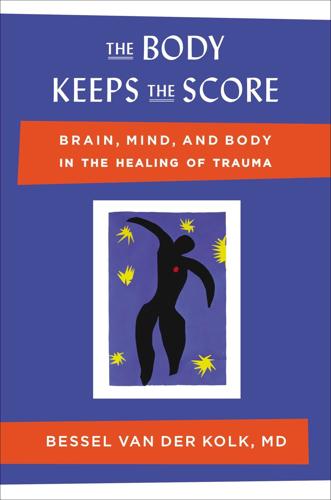
The Body Keeps the Score: Brain, Mind, and Body in the Healing of Trauma
by
Bessel van Der Kolk M. D.
Published 7 Sep 2015
Marilyn remembered having turned to her mother for protection, but when she ran to her and tried to hide herself by burying her face in her mother’s skirt, she was met with only a limp embrace. At times her mother remained silent; at others she cried or angrily scolded Marilyn for “making Daddy so angry.” The terrified child found no one to protect her, to offer strength or shelter. As Roland Summit wrote in his classic study The Child Sexual Abuse Accommodation Syndrome: “Initiation, intimidation, stigmatization, isolation, helplessness and self-blame depend on a terrifying reality of child sexual abuse. Any attempts by the child to divulge the secret will be countered by an adult conspiracy of silence and disbelief.

A Generation of Sociopaths: How the Baby Boomers Betrayed America
by
Bruce Cannon Gibney
Published 7 Mar 2017
To accomplish this, Senator Justin Morrill, a founder of the Republican Party, proposed massive federal intervention (a rather different sort of radical Republican agenda than we see today). Morrill wanted the government to contribute land whose sale would fund colleges to, “without excluding other scientific and classical studies and including military tactics… teach such branches of learning as are related to agriculture and the mechanic arts… [and] promote the liberal and practical education of the industrial classes.”7 The Morrill Act of 1862 provided over seventeen million federal acres for those purposes, an area slightly larger than the state of West Virginia.
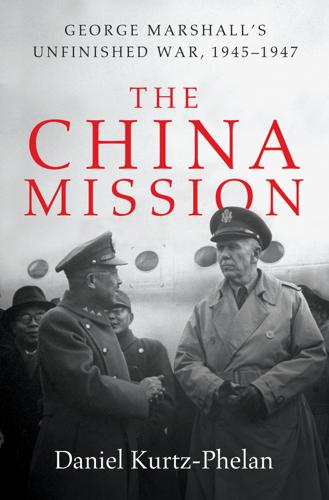
The China Mission: George Marshall's Unfinished War, 1945-1947
by
Daniel Kurtz-Phelan
Published 9 Apr 2018
Marshall’s refusal to craft history is doubly striking because he so highly valued its study. It was the only subject at which he excelled in school. Even in the middle of the war, he read thick volumes on Napoleon and ancient Rome, and asked newspaper publishers to encourage Americans to study history’s “great lessons pertinent to the tragic problems of today.” Decades later, in a classic study of how decision makers use (and misuse) history, Richard Neustadt and Ernest May would single out Marshall for his ability to think in “time-streams”—drawing a web of connections between the present and the past in order to illuminate possible paths into the future. “By looking back,” they wrote, “Marshall looked ahead.”
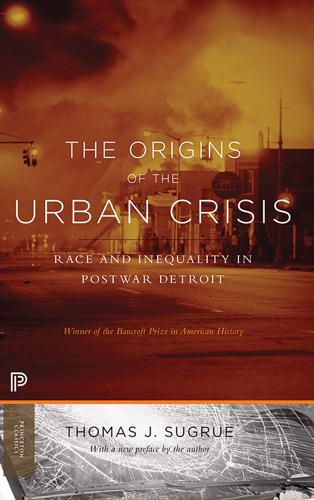
The Origins of the Urban Crisis
by
Sugrue, Thomas J.
Research Division, Detroit Commission on Community Relations, “Earnings of the Experienced Labor Force By Sex, Color, and Industry, Detroit Metropolitan Area,” February 1963, in DNAACP, Part I, Box 24, Folder: Commission on Community Relations. 79. Michigan Chronicle, September 21, 1946; Detroit Free Press, November 10, 1961. 80. Michigan Chronicle, September 21, 1946; Incident Report, CCR, Part I, Series 1, Box 4, Folder 47–57a; Monthly Report, Northwest Branch, Detroit Urban League, October 1951, DUL, Box 44, Folder A8–9. 81. The classic study remains Elliot Liebow, Tally’s Corner: A Study of Negro Streetcorner Men (Boston: Little Brown, 1967), see especially 29–71. Descriptions of street corner life, like Liebow’s, were deeply humanistic and offered liberal policy prescriptions for the alleviation of poverty. Beginning in the late 1960s, however, cultural descriptions of poverty became the basis of conservative arguments about the fecklessness of black men.
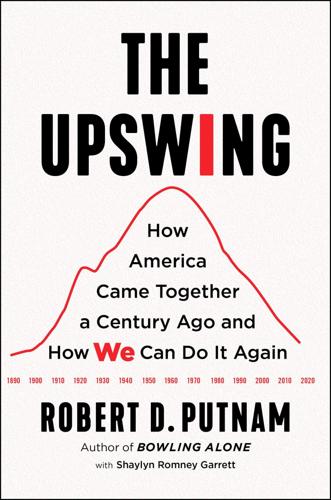
The Upswing: How America Came Together a Century Ago and How We Can Do It Again
by
Robert D. Putnam
Published 12 Oct 2020
According to historian Rowland Berthoff, “the immigrants, who had been accustomed to a more tightly knit communal life than almost any American could now recall, were quick to adopt the fraternal form of the American voluntary association in order to bind together their local ethnic communities against the unpredictable looseness of life in America.”22 The growing importance of associations among blacks followed much the same pattern, including mutual aid, burial, and social associations, and fraternal and women’s groups. In his classic study The Philadelphia Negro at the turn of the century, W. E. B. Du Bois emphasized the importance of black societies, such as the Odd Fellows and Freemasons, in furnishing “pastime from the monotony of work, a field for ambition and intrigue, a chance for parade, and insurance against misfortune”—virtually the same benefits that attracted millions of whites into such organizations in these years.
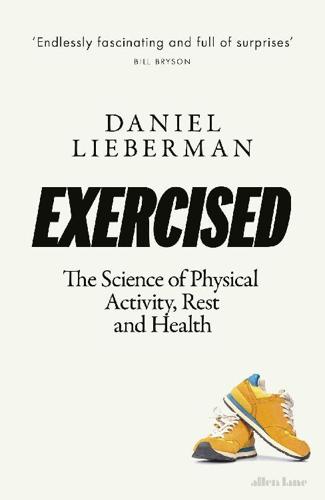
Exercised: The Science of Physical Activity, Rest and Health
by
Daniel Lieberman
Published 2 Sep 2020
Knopf). 29 King, W. (1864), The reputed fossil man of the Neanderthal, Quarterly Journal of Science 1:88–97. The quotation is from page 96. 30 Among the Inuit, body fat percentages are about 12 to 15 percent in males and 19 to 26 percent in females. See Churchill, S. E. (2014), Thin on the Ground: Neanderthal Biology, Archeology, and Ecology (Ames, Iowa: John Wiley & Sons). 31 One classic study showed that the racket arm professional tennis players use to whack millions upon millions of balls can be one-third thicker than the arm used just for tossing. Because muscles generate the major forces that bones must resist, it makes sense to infer that archaic humans such as Neanderthals were very strong.
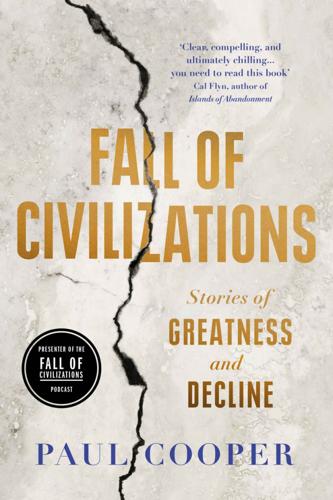
Fall of Civilizations: Stories of Greatness and Decline
by
Paul Cooper
Published 31 Mar 2024
United Kingdom, University of California Press, 1980. Bowman, Alan and David Thomas. The Vindolanda Writing Tablets (Tabulae Vindolandenses II). London, British Museum Press, 1994. Breeze, David J. ‘Auxiliaries, Legionaries, and the Operation of Hadrian’s Wall.’ Bulletin of the Institute of Classical Studies. Supplement, no. 81, 2003, pp. 147–151. Carlson, David R. ‘Bede on Roman Britain’s End.’ Latomus, vol. 73, no. 1, 2014, pp. 188–199. Cassius Dio. Roman History, Volume IX: Books 71–80. Trans. Earnest Cary, Herbert B. Foster. (‘Loeb Classical Library’) Cambridge, MA, Harvard University Press, 1927.

Stranger Than Fiction: Lives of the Twentieth-Century Novel
by
Edwin Frank
Published 19 Nov 2024
Trollope himself as a novelist, about English society as a theme for the novelist, or, failing information on these points, about the complex human heart.” James’s sally captures the conventional view of the day of what the novel should do quite exactly, and the criticism would have been all the more wounding since Trollope certainly shared its assumptions. That view, as described in Ian Watt’s classic study The Rise of the Novel, had gradually taken shape, especially in England, over the course of the eighteenth century. Samuel Richardson’s novels, the tragic Clarissa (1748) above all, had introduced a new emotional realism to the genre. Their epistolary form allowed the novelist to put his pen in the hand of his characters, who are set free to track the motions of their minds and hearts, in which the reader may become as absorbed as they are.

Equality
by
Darrin M. McMahon
Published 14 Nov 2023
The classic account is Frank Snowden Jr., Before Color Prejudice: The Ancient View of Blacks (Cambridge, MA: Harvard University Press, 1983). Contrast Benjamin Isaac, The Invention of Racism in Classical Antiquity (Princeton, NJ: Princeton University Press, 2004); Seneca, De benificis, 3.20. 14. Musonius Rufus: The Roman Socrates. Lectures and Fragments, ed. and intro. Cora E. Lutz, vol. 10, Yale Classical Studies (New Haven, CT: Yale University Press, 1947). 15. Epictetus, Discourses, 1.2.7–11, in The Discourse of Epictetus: The Handbook, Fragments, trans. Robin Hard, ed. Christopher Gill (London: Everyman, 1995), 8. 16. Mary Beard, SPQR: A History of Ancient Rome (New York: Liveright, 2015), 319; Neal Wood, Cicero’s Social and Political Thought (Berkeley: University of California Press, 1988), 96–97. 17.
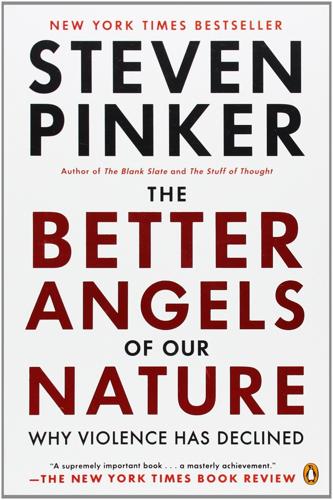
The Better Angels of Our Nature: Why Violence Has Declined
by
Steven Pinker
Published 24 Sep 2012
Unlike the more gimmicky theories of the crime decline, massive imprisonment is almost certain to lower crime rates because the mechanism by which it operates has so few moving parts. Imprisonment physically removes the most crime-prone individuals from the streets, incapacitating them and subtracting the crimes they would have committed from the statistics. Incarceration is especially effective when a small number of individuals commit a large number of crimes. A classic study of criminal records in Philadelphia, for example, found that 6 percent of the young male population committed more than half the offenses.157 The people who commit the most crimes expose themselves to the most opportunities to get caught, and so they are the ones most likely to be skimmed off and sent to jail.
…
That jibes with a psychological theory that myopic discounting arises from a handoff between two systems inside the skull, one for rewards that are imminent, another for rewards that are far in the future or entirely hypothetical.81 As Thomas Schelling put it, “People behave sometimes as if they had two selves, one who wants clean lungs and long life and another who adores tobacco, or one who wants a lean body and another who wants dessert, or one who yearns to improve himself by reading Adam Smith on self-command . . . and another who would rather watch an old movie on television.” 82 Freud’s theory of the id and the ego, and the older idea that our lapses are the handiwork of inner demons (“The devil made me do it!”) are other expressions of the intuition that self-control is a battle of homunculi in the head. The psychologist Walter Mischel, who conducted classic studies of myopic discounting in children (the kids are given the agonizing choice between one marshmallow now and two marshmallows in fifteen minutes), proposed, with the psychologist Janet Metcalfe, that the desire for instant gratification comes from a “hot system” in the brain, whereas the patience to wait comes from a “cool system.” 83 In previous sections we have caught glimpses of what the hot and cool systems might be: the limbic system (whose major parts are exposed in figure 8–2) and the frontal lobes (seen in figure 8–3).
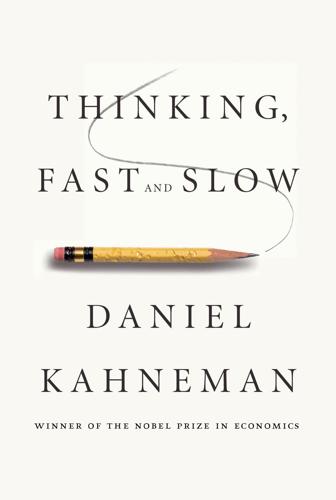
Thinking, Fast and Slow
by
Daniel Kahneman
Published 24 Oct 2011
In one experiment, rats were consistently exposed to a sequence in which the onset of a light signals that an electric shock will soon be delivered. The rats quickly learned to fear the light, and the intensity of their fear could be measured by several physiological responses. The main finding was that the duration of the shock has little or no effect on fear—all that matters is the painful intensity of the stimulus. Other classic studies showed that electrical stimulation of specific areas in the rat brain (and of corresponding areas in the human brain) produce a sensation of intense pleasure, so intense in some cases that rats who can stimulate their brain by pressing a lever will die of starvation without taking a break to feed themselves.
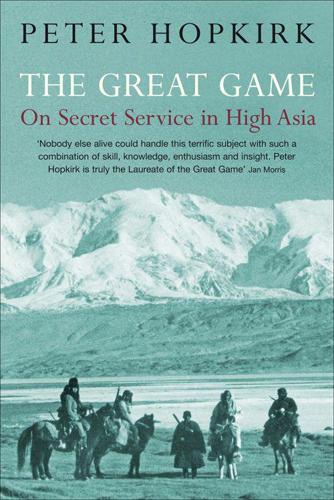
The Great Game: On Secret Service in High Asia
by
Peter Hopkirk
Published 2 Jan 1991
Indeed, both were to publish detailed accounts of their adventures and experiences with the mujahedin. Meanwhile, though foiled by Palmerston in his attempt to bring Russia and Britain into collision, Urquhart had returned with fresh vigour to the Russophobe cause, and, among other things, was organising the smuggling of arms to the Circassians. John Baddeley, in his classic study The Russian Conquest of the Caucasus, published in 1908, attributes the successes of the Circassians in large part ‘to these efforts’. However, he accuses Urquhart and his collaborators of thus prolonging a war which the Circassians could never win, and of feeding them with false hopes of receiving British support.
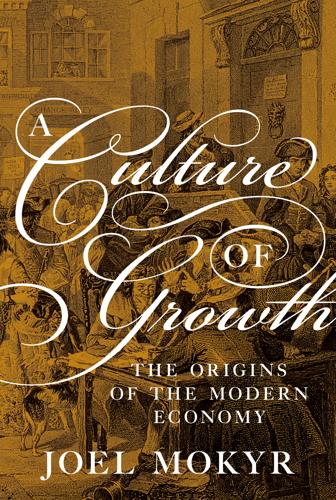
A Culture of Growth: The Origins of the Modern Economy
by
Joel Mokyr
Published 8 Jan 2016
Yet, as Nathan Sivin (1975, p. 161) notes, “in China the new tools were used to rediscover and recast the lost mathematical astronomy of the past and thus to perpetuate traditional values rather than to replace them.” Unlike Europe, Chinese intellectuals found it difficult to shake loose from the iron grip of the past. Mathematics, medicine, and most other forms of useful knowledge were studied and reflected on, but remained mostly a branch of classical studies. Attempts to apply this knowledge to practical uses were taking place, and when new ideas or products appeared, the Chinese were not averse to them. But unlike their European counterparts, Chinese scholars never came to believe that useful knowledge and its capacity to generate material progress through its applications was one of the raisons d’être of natural philosophy.
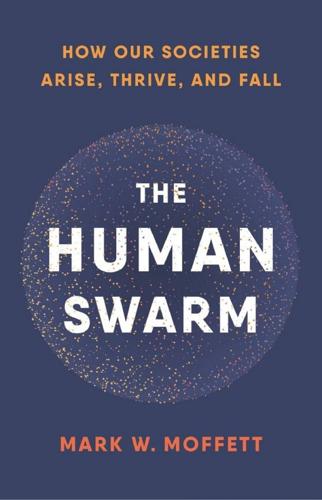
The Human Swarm: How Our Societies Arise, Thrive, and Fall
by
Mark W. Moffett
Published 31 Mar 2019
Syphilis may have been brought back to Europe from America, but to a much less widely destructive effect than smallpox had in the Americas. 36 Heinz (1975), 21. 37 Tajfel & Turner (1979). 38 Bain et al. (2009). 39 Koval et al. (2012). 40 Reese et al. (2010); Taylor et al. (1977). 41 As far as I can tell there is little research on this question, although one study shows that infants maintain more eye contact with same-race individuals (Wheeler et al. 2011) and there is a classic study demonstrating that white people maintain less eye contact with black job applicants (Word et al. 1974). 42 Mahajan et al. (2011); but see also Mahajan et al. (2014). 43 Another option is that the link we make between outsiders and the sense of disgust arose in humans (D Kelly 2013). 44 Henrich (2004a); Henrich & Boyd (1998); Lamont & Molnar (2002); Wobst (1977). 45 Gil-White (2001). 46 Reviewed by Kleingeld (2012). 47 Leyens et al. (2003), 712. 48 Castano & Giner-Sorolla (2006). 49 Wohl et al. (2011).

Blueprint: The Evolutionary Origins of a Good Society
by
Nicholas A. Christakis
Published 26 Mar 2019
From one point of view, the exchange of bride-wealth is adaptive, because, during times of drought, men cannot assemble the requisite amount, and so marriages (and, quite likely, births) are postponed to a time when the food supply might again be adequate (though it is unclear whether the Turkana themselves are aware of the possible benefits of such cyclicity). 46. Gulliver, Preliminary Survey, p. 199. 47. Ibid., pp. 198–199. This classic study of Turkana marriage, conducted in 1951, reported no instance in which this trait (fertility) was noted as essential in a partner. As many as 50 percent of firstborn children are conceived prior to marriage, according to Dyson-Hudson, Meekers, and Dyson-Hudson, “Children of the Dancing Ground,” p. 26. 48.

Lonely Planet Kenya
by
Lonely Planet
AThe Kingdon Field Guide to African Mammals (Jonathan Kingdon; 2nd ed, 2015) The latest edition of the classic field guide covering over 1150 species. There's also the travel-friendly Kingdon Pocket Guide to African Mammals (2016). AThe Behavior Guide to African Mammals (Richard Despard Estes; 1991) Classic study of the behaviour of mammal species. Estes' follow-up The Safari Companion: A Guide to Watching African Mammals (1993) is an excellent, slightly more accessible alternative. ABirds of Kenya and Northern Tanzania (Dale A Zimmerman, David J Pearson and Donald A Turner; 2005) The birding field guide of choice for East Africa.
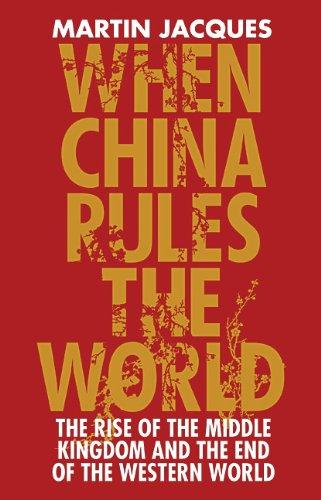
When China Rules the World: The End of the Western World and the Rise of the Middle Kingdom
by
Martin Jacques
Published 12 Nov 2009
The price of eternity, in other words, has been a greatly diminished political role. During the Tokugawa era (1603-1867), real political power was exercised by the military in the person of the shogun. The emperor enjoyed little more than symbolic and ceremonial significance, although formally the shogun remained answerable to him. Ruth Benedict, in her classic study of Japan, The Chrysanthemum and the Sword, makes the interesting observation that ‘Japan’s conception of her Emperor is one that is found over and over among the islands of the Pacific. He is the Sacred Chief who may or may not take part in administration. In some Pacific Islands he did and in some he delegated his authority.

The Stuff of Thought: Language as a Window Into Human Nature
by
Steven Pinker
Published 10 Sep 2007
To ensure that these weren’t rare errors from unusual children, the psychologist Jess Gropen and I corroborated the finding in two ways. First, we sifted through online corpora of children’s speech, where we found similar errors.23 Second, we used a method for assessing generalizations called the wug test, after a classic study by the psychologist Jean Berko Gleason.24 Gleason showed children a cartoon of a little bird and said, “Here is a wug. Now there are two of them. There are two . . .”—at which point four-year-olds happily filled in the blank with wugs, a form they could not have memorized from adults. In our case we told children that mooping meant to move a sponge to a purple cloth, turning it green.
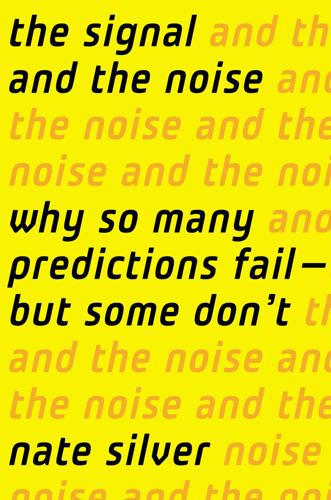
The Signal and the Noise: Why So Many Predictions Fail-But Some Don't
by
Nate Silver
Published 31 Aug 2012
Brian Cartwright, “That Great Derek Jeter Conspiracy,” FanGraphs, January 17, 2009. http://www.fangraphs.com/blogs/index.php/the-great-derek-jeter-conspiracy/. 2. Halley’s Comet was first sited on Christmas Day in 1758. See Peter Lancaster Brown, Halley and His Comet (Suffolk, England: Blandford Press, 1985). 3. Mary Frances Williams, “The Sidus Iulium, the Divinity of Men, and the Golden Age in Virgil’s Aeneid,” Leeds International Classical Studies, vol. 2, issue 1, 2003. http://lics.leeds.ac.uk/2003/200301.pdf 4. The exact date of the invention of the World Wide Web is disputed but in 1990 Berners-Lee established the first successful connection between an HTTP client and the Internet. The set of hypertext documents called the World Wide Web are not to be confused with the Internet, the network by which the World Wide Web is accessed, which as everyone knows was invented by Al Gore. 5.
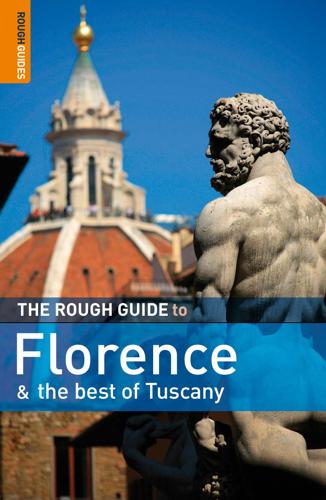
The Rough Guide to Florence & the Best of Tuscany
by
Tim Jepson
,
Jonathan Buckley
and
Rough Guides
Published 2 Mar 2009
Inside are a couple of fine monuments: on the left wall of the single aisle you’ll find Bernardo Rossellino’s worn-down tomb of Gemignano Inghirami, and set into the floor near the high altar is the slab of Francesco di Marco Datini (1335–1410), Prato’s most celebrated citizen. The subject of Iris Origo’s classic study, The Merchant of Prato, 215 Datini became one of Europe’s richest men through his dealings in the cloth trade, and played a crucial role in the rationalization of accounting methods: on his death, his offices were found to contain tens of thousands of scrupulously kept ledgers, all inscribed “To God and profit”.

City: Urbanism and Its End
by
Douglas W. Rae
Published 15 Jan 2003
Galster, “Polarization, Place, and Race,” North Carolina Law Review 71, no. 5 ( June 1993), or John F. Cain, “The Influence of Race and Income on Racial Segregation and Housing Policy,” in Housing Desegregation and Federal Policy, edited by John M. Goering (Chapel Hill: University of North Carolina Press, 1986). The classic study of race in New Haven predates the arrival of this family, as well as most other black households. See Warner, New Haven Negroes. 13. I have relied heavily here on one exceptional collection of work on the history and consequences of zoning in the United States, namely, Haar and Kayden, Zoning and the American Dream. 14.
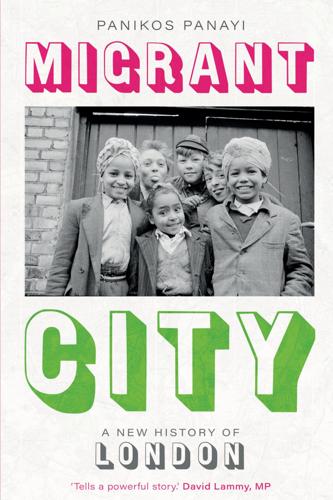
Migrant City: A New History of London
by
Panikos Panayi
Published 4 Feb 2020
Marriot, Beyond the Tower, pp. 169–91. 54. V. D. Lipman, ‘Jewish Settlement in the East End – 1840–1940’, in Newman, Jewish East End, pp. 17–40. 55. Caroline Adams, Across Seven Seas and Thirteen Rivers: Life Stories of Pioneer Sylhetti Settlers in Britain (London, 1987). 56. See two of the classic studies of the history of migrant settlement in the USA, which take these two contrasting perspectives: Oscar Handlin, The Uprooted: The Epic Story of the Great Migration that Made the American Peoples, 2nd edn (Boston, MA, 1973); and John Bodnar, The Transplanted: A History of Immigrants in Urban America (Bloomington, IN, 1985). 57.
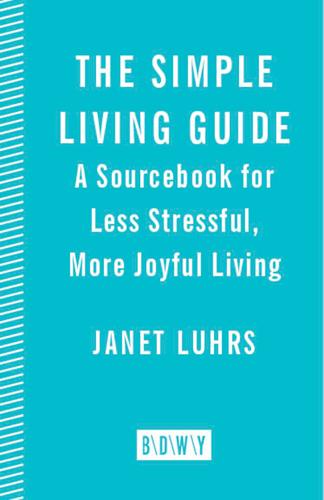
The Simple Living Guide
by
Janet Luhrs
Published 1 Apr 2014
Stoddard takes life and shows it for the miracle that it is, explains why our relationship to it has been altered in our modern culture, and provides methods for finding the keys to rediscover the awe. There’s a special focus on grace in our lives: getting it, earning it, relishing it. How to Get Control of Your Time and Your Life by Alan Lakein (New York: New American Library, 1996) Classic study on the perennial nag of balancing time and life. Helpful guide to solving some critical problems related to fatigue, stress, and willpower and opening the flowers of creativity. Private Moments, Secret Selves by Jeffrey Kottler, Ph.D. (New York: Ballantine Books, 1990) Solitary time need not be anxious time or time for boredom.
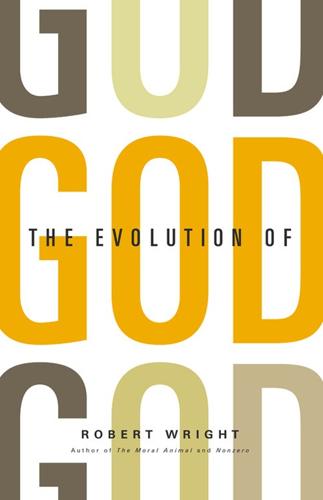
The Evolution of God
by
Robert Wright
Published 8 Jun 2009
Among the Ona of Tierra del Fuego, payment for service was rare, but, as one anthropologist observed, “one abstains from anything and everything” that might put the shaman “out of sorts or irritate him.” 35 Moreover, in pre-agricultural societies, as in modern societies, high social status, however intangible, can ultimately bring tangible benefits. Ojibwa shamans, one anthropologist reports, received “minimal remuneration,” working for “prestige, not pay. One of the symbols of religious leadership prestige was polygyny.… Male leaders took more than one wife.” 36 In his classic study The Law of Primitive Man, E. Adamson Hoebel observed that, among some Eskimo, “a forceful shaman of established reputation may denounce a member of his group as guilty of an act repulsive to animals or spirits, and on his own authority he may command penance.… An apparently common atonement is for the shaman to direct an allegedly erring woman to have intercourse with him (his supernatural power counteracts the effects of her sinning).” 37 So here is the pattern: in pre-agricultural societies around the world, people have profited, in one sense or another, by cultivating a reputation for special access to the supernatural. 38 It’s enough to make you wonder: Might they, in the course of establishing their bona fides, sometimes resort to deceit?
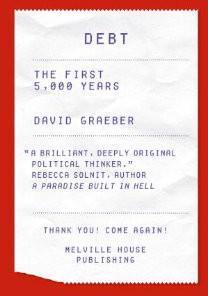
Debt: The First 5,000 Years
by
David Graeber
Published 1 Jan 2010
Snell (1919:240) notes that kings while touring their domains would sometimes seize cattle or other goods by right of “preemption” and then pay in tallies, but it was very difficult to get their representatives to later pay up: “Subjects were compelled to sell; and the worst of it was that the King’s purveyors were in the habit of paying not in cash down, but by means of an exchequer tally, or a beating … In practice it was found no easy matter to recover under this system, which lent itself to the worst exactions, and is the subject of numerous complaints in our early popular poetry.” 16. It is also interesting to note, in this regard, that the Bank of England still kept their own internal accounts using tally sticks in Adam Smith’s time, and only abandoned the practice in 1826. 17. See Engels (1978) for a classic study of this sort of problem. 18. Appealing particularly to debtors, who were understandably drawn to the idea that debt is simply a social arrangement that was in no sense immutable but created by government policies that could just as easily be reshuffled—not to mention, who would benefit from inflationary policies. 19.

Werner Herzog - a Guide for the Perplexed: Conversations With Paul Cronin
by
Paul Cronin
Published 4 Aug 2014
The senses are always working the horizon for sustenance, the strategy for the chase being wrought minutely by instinct, the whole being braced for the struggle leading to the kill. Like a predator, he takes his spoils quickly and his rest at whatever hideaway happens to be near by and convenient. The hunt – his creative activity – is everything, and all else (possessions, meals, accommodations, social life) incidental to it. Herbert Golder is Professor of Classical Studies at Boston University, and the Editor-in-Chief of Arion, A Journal of Humanities and the Classics. He has worked with Werner Herzog since 1988 on films such as Little Dieter Needs to Fly, Wings of Hope, My Best Fiend, Invincible, The White Diamond and The Wild Blue Yonder. He played Rabbi Edelmann in Invincible and co-wrote the script for My Son, My Son, What Have Ye Done.
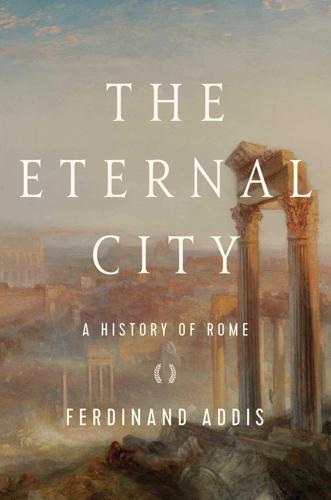
The Eternal City: A History of Rome
by
Ferdinand Addis
Published 6 Nov 2018
Moore, Timothy J., The Theatre of Plautus: Playing to the Audience. Austin: University of Texas Press, 2010. Segal, Erich, Roman Laughter: the Comedy of Plautus. Cambridge, MA: Harvard University Press, 1968. Slater, Niall W., ‘Plautine Negotiations: the Poenulus Prologue Unpacked’, in Yale Classical Studies 29 (1992): 131–46. Wiseman, T. P., Roman drama and Roman history. Exeter: University of Exeter Press, 1998. Concord Astin, A. E., Scipio Aemilianus. Oxford: Clarendon Press, 1967. Patterson, John R., Political Life in the City of Rome. London: Bristol Classical, 2000. Richardson, Keith, Daggers in the Forum: The Revolutionary Lives and Violent Deaths of the Gracchus Brothers.
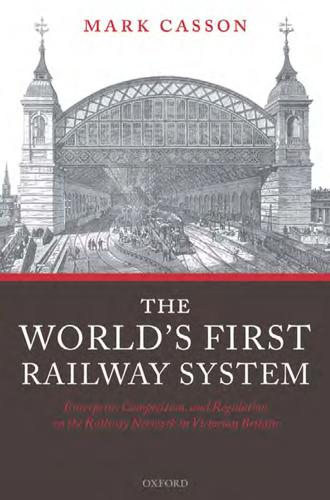
The World's First Railway System: Enterprise, Competition, and Regulation on the Railway Network in Victorian Britain
by
Mark Casson
Published 14 Jul 2009
Talented young men preferred to make a career in Church or State rather than ‘trade’—religious zeal and social reform provided them with greater emotional satisfaction than what was perceived as the venal pursuit of personal profit. The most prestigious schools and universities in England taught classical studies rather than science and technology, because a knowledge of the Greek and Roman empires was considered to be more relevant for careers in the army, Church, or colonial service. As private enterprise was drained of talent, entrepreneurship declined, the rate of profit diminished and investment was reduced.
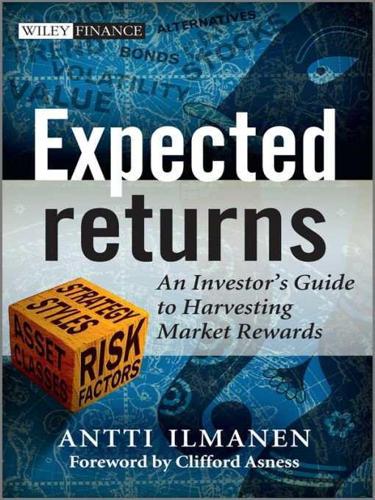
Expected Returns: An Investor's Guide to Harvesting Market Rewards
by
Antti Ilmanen
Published 4 Apr 2011
Many observers assume trend growth near 2%, in line with evidence from the past century, but there are stories to justify more optimistic and pessimistic paths. These speed limits obviously differ between advanced (mature) and emerging economies. How do speed limits on economic growth translate to speed limits on long-term asset returns? Diermeier–Ibbotson–Siegel (1984), in a classic study on speed limits, note that the supply of total investment returns equals income returns for all assets, plus growth in the aggregate market value of investable assets, minus new issues. If the aggregate value of investable assets is assumed to be a fixed proportion of social wealth, they should in the long run grow at the same speed.
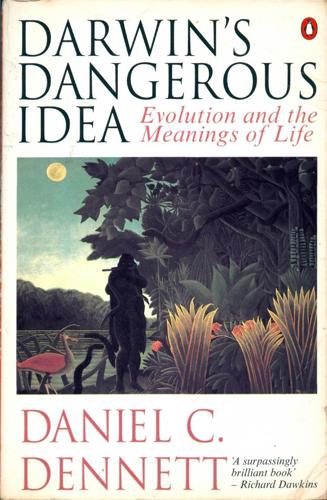
Darwin's Dangerous Idea: Evolution and the Meanings of Life
by
Daniel C. Dennett
Published 15 Jan 1995
Huxley quickly saw his error and attempted to restore a Darwinian account of culture — by an appeal to the force of group selection! History does have a way of repeating itself. 3. Peter Kivy informed me after the Mandel Lecture that this oft-quoted passage is counterfeit — not Mozart at all. I found it in Jacques Hadamard's classic study, The Psychology of Inventing in the Mathematical Field (1949, p. 16), and first quoted it myself in Dennett 1975, one of my first forays into Darwinian thinking. I persist in quoting it here, in spite of Kivy's correction, because it not only expresses but exemplifies the thesis that memes, once they exist, are independent of authors and critics alike.

The Empathic Civilization: The Race to Global Consciousness in a World in Crisis
by
Jeremy Rifkin
Published 31 Dec 2009
If that’s the case, says de Waal, then “[e]mpathy is precisely such a mechanism.”45 In other words, the empathic impulse is the biological means of fostering communication, at least among the more evolved mammalian species. Close observation of other species shows a steady progression of the empathic impulse in biological evolution. For example, in a classic study conducted more than half a century ago, researchers found “that rats that had learned to press a lever to obtain food would stop doing so if their response was paired with the delivery of an electric shock to a visible neighboring rat.”46 Subsequent experiments with rhesus monkeys yielded the same results—except, in the latter case, the emotional response was more long- lasting and had deeper consequences.
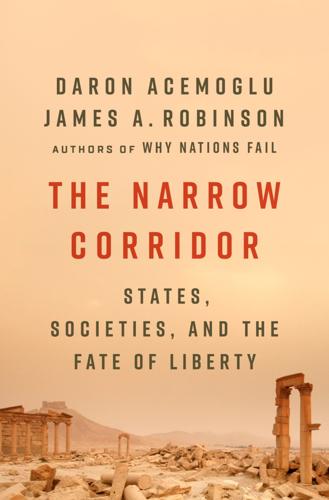
The Narrow Corridor: States, Societies, and the Fate of Liberty
by
Daron Acemoglu
and
James A. Robinson
Published 23 Sep 2019
Hong Kong: Hong Kong University Press. ——— (2007). Emperor and Ancestor: State and Lineage in South China. Stanford, CA: Stanford University Press. Fawcett, Peter (2016). “‘When I Squeeze You with Eisphorai’: Taxes and Tax Policy in Classical Athens.” Hesperia: The Journal of the American School of Classical Studies at Athens 85, no. 1: 153–99. Feinstein, Charles H. (2005). An Economic History of South Africa: Conquest, Discrimination and Development. New York: Cambridge University Press. Feng, Li (2013). Early China: A Social and Cultural History. New York: Cambridge University Press. Fergusson, Leopoldo, Ragnar Torvik, James A.

Escape From Rome: The Failure of Empire and the Road to Prosperity
by
Walter Scheidel
Published 14 Oct 2019
Imperial China 900–1800. Cambridge, MA: Harvard University Press. Motyl, Alexander J. 2001. Imperial ends: The decay, collapse, and revival of empire. New York: Columbia University Press. Mouritsen, Henrik 1998. Italian unification: A study in ancient and modern historiography. London: Institute of Classical Studies. Mouritsen, Henrik 2001. Plebs and politics in the late Roman republic. Cambridge: Cambridge University Press. Mouritsen, Henrik. 2007. “The civitas sine suffragio: Ancient concepts and modern ideology.” Historia 56: 141–58. Mouritsen, Henrik. 2017. Politics in the Roman republic. Cambridge: Cambridge University Press.
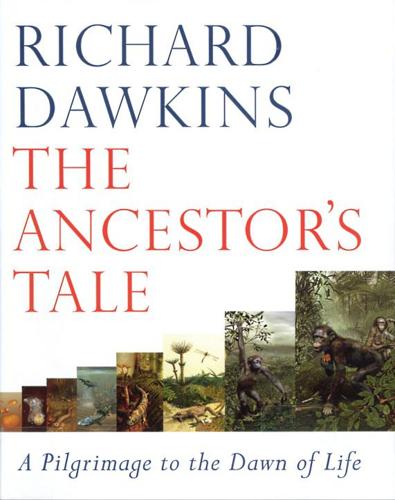
The Ancestor's Tale: A Pilgrimage to the Dawn of Evolution
by
Richard Dawkins
Published 1 Jan 2004
It takes air into its lung to supplement its gills in oxygen-poor water. When first discovered in 1870, modern lungfish living in Queensland were united with fossil fish more than 200 million years old under the same name, Ceratodus. This gives an indication of how little they have changed during that time. Let's not get carried away, however. A classic study published in 1949 by the British palaeontologist T. S. Westoll showed that, although the lungfish have indeed stagnated for the last 200 million years or so, they evolved much more rapidly before that. In the Carboniferous Period, from around 350 million years ago, they were really racing along, before they slowed down almost to a stop about 250 million years ago, towards the end of the Permian Period.

Enlightenment Now: The Case for Reason, Science, Humanism, and Progress
by
Steven Pinker
Published 13 Feb 2018
Psychologists have long known that the human brain is infected with motivated reasoning (directing an argument toward a favored conclusion, rather than following it where it leads), biased evaluation (finding fault with evidence that disconfirms a favored position and giving a pass to evidence that supports it), and a My-Side bias (self-explanatory).21 In a classic experiment from 1954, the psychologists Al Hastorf and Hadley Cantril quizzed Dartmouth and Princeton students about a film of a recent bone-crushing, penalty-filled football game between the two schools, and found that each set of students saw more infractions by the other team.22 We know today that political partisanship is like sports fandom: testosterone levels rise or fall on election night just as they do on Super Bowl Sunday.23 And so it should not be surprising that political partisans—which include most of us—always see more infractions by the other team. In another classic study, the psychologists Charles Lord, Lee Ross, and Mark Lepper presented proponents and opponents of the death penalty with a pair of studies, one suggesting that capital punishment deterred homicide (murder rates went down the year after states adopted it), the other that it failed to do so (murder rates were higher in states that had capital punishment than in neighboring states that didn’t).

A History of Judaism
by
Martin Goodman
Published 25 Oct 2017
Leaman, eds., The Cambridge Companion to Medieval Jewish Philosophy (Cambridge, 2003) contains essays on the philosophical approach to Judaism taken by medieval Jews from the ninth to the sixteenth century under the influence of Islam and Christianity. L. Jacobs, A Tree of Life: Diversity, Flexibility, and Creativity in Jewish Law, 2nd edn (London and Portland, Oreg., 2000) is a classic study, packed with erudition and insights, which covers more than just the medieval period. The illuminating presentation of complex medieval and later texts in D. R. Blumenthal, Understanding Jewish Mysticism: A Source Reader, 2 vols. (New York, 1978–82) encourages sympathetic understanding of mystical trends while precluding simple explanations.
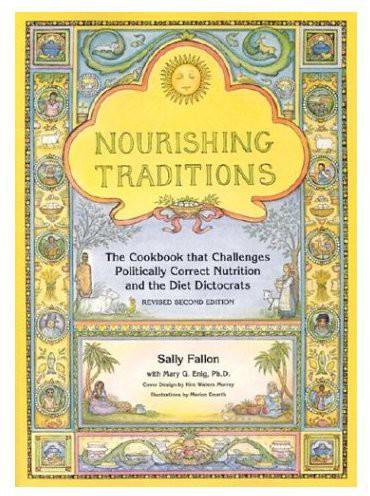
Nourishing Traditions: The Cookbook That Challenges Politically Correct Nutrition and The...
by
Sally Fallon
,
Pat Connolly
and
Mary G. Enig, Phd.
Published 14 May 1995
Price Foundation PMB 106-380, 4200 Wisconsin Avenue, NW Washington, DC 20016 (202) 333-HEAL Real Health Breakthroughs Dr. Douglass' Real Health Breakthroughs 819 N. Charles Street, Baltimore, MD 21201 (978) 514-7851 Books: The following recommended books may be ordered from New Trends Publishing (877) 707-1776 or Radiant Life (888) 593-8333. Nutrition and Physical Degeneration by Weston A. Price, DDS: The classic study of isolated populations on native diets and the disastrous effects of processed foods and commercial farming methods on human health. Published in 1939, Dr. Price's findings have as much relevance today as they did 60 years ago. The book includes Price's unforgettable photographs showing the superb dentition and facial development of peoples living on nutrient-dense foods.
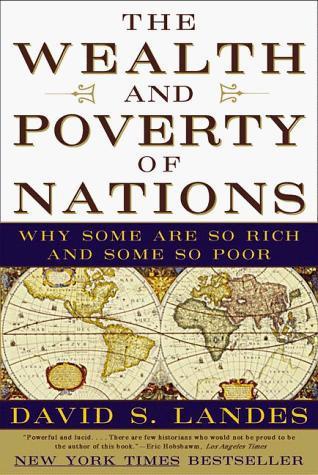
The Wealth and Poverty of Nations: Why Some Are So Rich and Some So Poor
by
David S. Landes
Published 14 Sep 1999
Cynics might even say that dependency doctrines have been Latin America’s most successful export. Meanwhile they are bad for effort and morale. By fostering a morbid propensity to find fault with everyone but oneself, they promote economic impotence. Even if they were true, it would be better to stow them. The Portuguese-Brazilian Way Gilberto Freyre, in his classic study of Brazilian civilization, The Masters and the Slaves, distinguishes between Spanish and Portuguese policies of colonial settlement. Where the Spanish introduced national as well as religious restrictions, the Portuguese cared only for religion. The immigrant could come from anywhere, so long as he was Roman Catholic.

The Great Sea: A Human History of the Mediterranean
by
David Abulafia
Published 4 May 2011
Early types of humans inhabited the lands bordering the Mediterranean 435,000 years before the present, to judge from evidence for a hunters’ camp set up near modern Rome; others built a simple hut out of branches at Terra Amata near Nice, and created a hearth in the middle of their dwelling – their diet included rhinoceros and elephant meat as well as deer, rabbits and wild pigs.1 When early man first ventured out across the sea’s waters is uncertain. In 2010, the American School of Classical Studies at Athens announced the discovery in Crete of quartz hand-axes dated to before 130,000 BC, indicating that early types of humans found some means to cross the sea, though these people may have been swept there unintentionally on storm debris.2 Discoveries in caves on Gibraltar prove that 24,000 years ago another species of human looked across the sea towards the mountain of Jebel Musa, clearly visible on the facing shore of Africa: the first Neanderthal bones ever discovered, in 1848, were those of a woman who lived in a cave on the side of the Rock of Gibraltar.

The Age of Surveillance Capitalism
by
Shoshana Zuboff
Published 15 Jan 2019
From now on, all serious writings on the internet and society will have to take into account The Age of Surveillance Capitalism.” —Joseph Turow, Robert Lewis Shayon Professor of Communication, Annenberg School, University of Pennsylvania “In the future, if people still read books, they will view this as the classic study of how everything changed. The Age of Surveillance Capitalism is a masterpiece that stunningly reveals the essence of twenty-first-century society, and offers a dire warning about technology gone awry that we ignore at our peril. Shoshana Zuboff has somehow escaped from the fishbowl in which we all now live and introduced to us the concept of water.

Palo Alto: A History of California, Capitalism, and the World
by
Malcolm Harris
Published 14 Feb 2023
The Central Pacific wasn’t about to capitulate to the sandlot crowd. Instead, Stanford gathered his family—which now included Leland Jr., born in 1868—and servants and got out of town. Like other prominent robber barons of the day, the Stanfords “sought security in a country estate,” as Kenneth T. Jackson put it in his classic study, Crabgrass Frontier: The Suburbanization of the United States, providing a model for elites looking to dodge racial strife a century later.4 In 1876, they bought a 650-acre farm, called Mayfield Grange, in Santa Clara County off the train tracks south of the city. No fan of the contemporary Grange Movement of organized farmers, Stanford renamed the area for a big tree next to the tracks: Palo Alto.
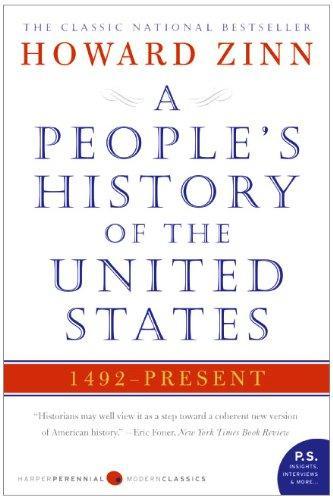
A People's History of the United States
by
Howard Zinn
Published 2 Jan 1977
During a period when neither the State nor the nation faced any sort of exterior threat, we find that Virginia felt the need to maintain a security force roughly ten percent of the total number of its inhabitants: black and white, male and female, slave and free! Rebellion, though rare, was a constant fear among slaveowners. Ulrich Phillips, a southerner whose American Negro Slavery is a classic study, wrote: A great number of southerners at all times held the firm belief that the negro population was so docile, so little cohesive, and in the main so friendly toward the whites and so contented that a disastrous insurrection by them would be impossible. But on the whole, there was much greater anxiety abroad in the land than historians have told of. . . .

Bourgeois Dignity: Why Economics Can't Explain the Modern World
by
Deirdre N. McCloskey
Published 15 Nov 2011
But eighteenth-century politics also depended heavily on rhetoric, the very words and ideas, such as the widespread translation of the manual for drilling infantrymen in massed gunfire written by Prince Maurice of the Netherlands, and the widespread use of Italian plans for cannon-resistant fortifications. And in sweeter ways, too. As Gabriel Almond and Sidney Verba put it in their classic study of political attitudes, the good “civic culture” to which they attribute the success of Western liberalism is “based on communication and persuasion.”3 It is a bourgeois rhetoric. “Civic,” after all, is from Latin cives, citizen of a city-state, and “bourgeois” means at root merely such a citizen, standing in the forum or agora to argue his case among the piles of vegetables and amphoras of wine offered there for sale.
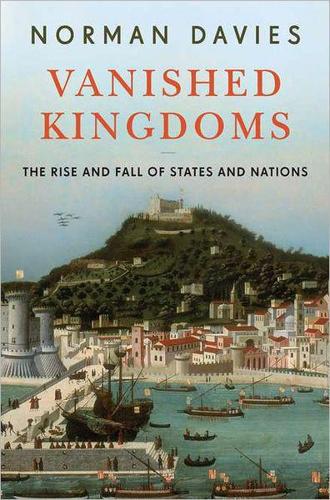
Vanished Kingdoms: The Rise and Fall of States and Nations
by
Norman Davies
Published 30 Sep 2009
After the abolition of serfdom, the speech, the costumes, the music, the legends, the songs and dances and the everyday practices of various regions all became badges of pride for the newly liberated rural class, and were standardized and formalized in new ways. They also attracted the attention of early ethnographers. František Rˇehorˇ (1857–99) was a Czech who was taken in his boyhood to a farm near Lemberg, and who spent a lifetime recording Ruthenian folklore.35 Semyon Ansky (1863–1920) was a Jewish socialist who made a now classic study of Galician Jewry during the First World War.36 Stanisław Vincenz (1888–1971) was a Pole born in Hutsul country who was to spend most of his life in exile. His famous analysis of Hutsul culture, Na Wysokiej Połoninie, ‘On the High Pasture’, was not published until the world of his youth had been destroyed.37 Education, of course, was the key to social advancement.

The Rise and Fall of American Growth: The U.S. Standard of Living Since the Civil War (The Princeton Economic History of the Western World)
by
Robert J. Gordon
Published 12 Jan 2016
The quotation is from McWilliams (1942, p. 301). 37. Atack, Bateman, and Parker (2000, figures 7.13 and 7.14, pp. 316–17). The eight Midwestern states are Ohio, Indiana, Michigan, Illinois, Wisconsin, Minnesota, Iowa, and Missouri. The six Deep South states are South Carolina, Georgia, Alabama, Mississippi, Louisiana, and Texas. 38. The classic study of the relations between sharecroppers and merchants is provided by Ransom and Sutch (1977). Green (1986, p. 49) states that only about a quarter of the African American heads of households owned land. 39. Fite (1984, pp. 5–6). 40. Haines (2000, table 4.2, p. 156). 41. Smith (1984, p. 222). 42.

Vanished Kingdoms: The History of Half-Forgotten Europe
by
Norman Davies
Published 27 Sep 2011
After the abolition of serfdom, the speech, the costumes, the music, the legends, the songs and dances and the everyday practices of various regions all became badges of pride for the newly liberated rural class, and were standardized and formalized in new ways. They also attracted the attention of early ethnographers. František Řehoř (1857–99) was a Czech who was taken in his boyhood to a farm near Lemberg, and who spent a lifetime recording Ruthenian folklore.35 Semyon Ansky (1863–1920) was a Jewish socialist who made a now classic study of Galician Jewry during the First World War.36 Stanisław Vincenz (1888–1971) was a Pole born in Hutsul country who was to spend most of his life in exile. His famous analysis of Hutsul culture, Na Wysokiej Połoninie, ‘On the High Pasture’, was not published until the world of his youth had been destroyed.37 Education, of course, was the key to social advancement.

In Europe
by
Geert Mak
Published 15 Sep 2004
One week later, in Dresden, Victor Klemperer referred to the Auschwitz camp as ‘a fast-moving slaughterhouse’. On 27 February, 1943 he said that it was ‘no longer probable that Jews will return alive from Poland’. So they knew about it. Were they the only ones with eyes and ears? Tens of thousands of Wehrmacht soldiers were involved, directly or indirectly, in the mass executions in Poland. In his classic study of the activities of a typical death squad, Reserve Police Battalion 101, Christopher Browning shows that the battalion was in a state of continual flux: respectable fathers from Hamburg reported for duty, took part in mass executions, then went home to carry on life as usual. One of the commanders, newly married, even took his young bride along: in the market square at Miedzyrzec she was a direct witness to the murder of the local Jews.

Networks, Crowds, and Markets: Reasoning About a Highly Connected World
by
David Easley
and
Jon Kleinberg
Published 15 Nov 2010
We will consider specifically how new behaviors, practices, opinions, conventions, and technologies spread from person to person through a social network, as people influence their friends to adopt new ideas. Our understanding of how this process works is built on a long history of empirical work in sociology known as the diffusion of innovations [114, 345, 376]. A number of now-classic studies done in the middle of the 20th century established a basic research strategy for studying the spread of a new technology or idea through a group of people, and analyzing the factors that facilitated or impeded its progress. Some of these early studies focused on cases in which the person-to-person influence was due primarily to informational effects: as people observed the decisions of their network neighbors, it provided indirect information that led them to try the innovation as well.
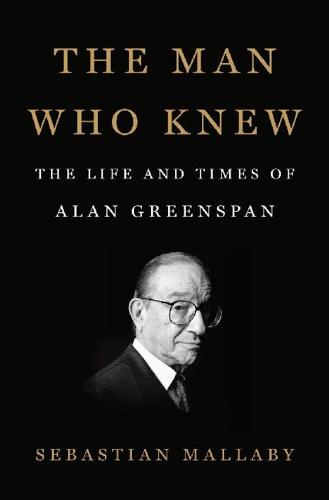
The Man Who Knew: The Life and Times of Alan Greenspan
by
Sebastian Mallaby
Published 10 Oct 2016
Even after he embraced econometrics, and even after he became chairman of the Fed, Greenspan never shed his conviction that the quality of an economist’s data mattered more than the sophistication of his modeling. • • • In 2011, during one of our long conversations in his office in Washington, Greenspan plucked a faded green volume from a shelf. It was a copy of Measuring Business Cycles, Arthur Burns’s classic study of the vicissitudes of the American economy, co-written with the father of empiricism, Wesley Mitchell. The text had been lovingly preserved since Greenspan’s time at Columbia six decades earlier. “Open it,” Greenspan invited me. I let the book fall open at random. The page was dominated by tables and charts: pig iron production, railroad stock prices, call money interest rates.
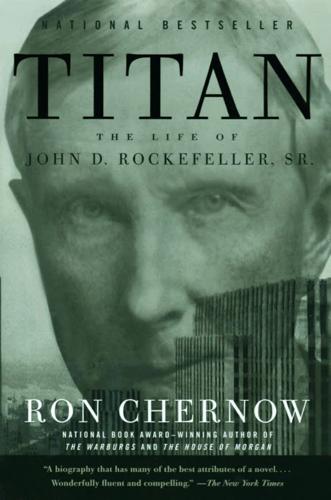
Titan: The Life of John D. Rockefeller, Sr.
by
Ron Chernow
Published 1 Jan 1997
Browning, who created the tiny Browning School with just two classes: one built around Junior, the other around William’s son Percy. A Rockefeller operation from the outset, it was set up in a family-owned brownstone on West Fifty-fifth Street, with John and William paying Browning’s salary and reserving the right to screen applicants. From the beginning, the school emphasized manual crafts as well as classical studies and was animated by an egalitarian spirit. Nettie Fowler McCormick of the Chicago reaper clan sent her two sons, Harold and Stanley, and the student body of twenty-five also included two sons of William’s estate superintendent in Greenwich, Connecticut. The Browning School was yet another attempt by John D. to prevent his children from putting on airs or slipping into idle dissipation.

Debt of Honor
by
Tom Clancy
Published 2 Jan 1994
Chavez almost stopped at the rebuke, not from insult, but from surprise. He'd never seen his partner rattled before. As a result, his reply was measured and reasoned. "I think we just saw something important. I think he was playing with them. Last year for one of my courses we saw a Nazi film, a classic study in how demagogues do their thing. A woman directed it, and it reminded me—" "Triumph of the Will, Leni Riefenstahl," Clark said. "Yeah, it's a classic, all right. By the way, you need a haircut." "Huh?" The training was really paying off, Major Sato knew without looking. On command, all four of the F-15 Eagles tripped their brakes and surged forward along the runway at Misawa.
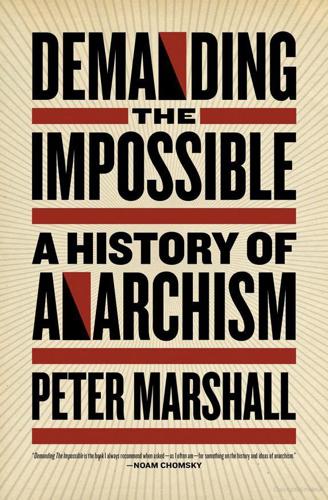
Demanding the Impossible: A History of Anarchism
by
Peter Marshall
Published 2 Jan 1992
There will be no more schools or churches because the entire world will become one church and school. People will farm in the morning, make music in the afternoon and fuck whenever they want to.7 The counter-culture which erupted in America in the late 1960s has been described, not implausibly, as ‘the new anarchism’.8 Theodore Roszak, in his classic study The Making of a Counter-Culture (1970), specifically listed among its major sources and ingredients anarchist social theory. In his rhapsodic Where the Wasteland Ends (1972), he further recommended anarchism as a politics uniquely swayed by ‘organic sensibility … born of a concern for the health of cellular structure in society and a confidence in spontaneous self-regulation’.

Lonely Planet Ireland
by
Lonely Planet
Wolfe Tone attempted to enlist French help in his uprising, but the French failure to land an army of succour in 1796 left the organisation exposed to retribution and the men met their bloody end in the Battle of Vinegar Hill in 1798. Three years later, the British sought to put an end to Irish agitation with the Act of Union, but the nationalist genie was already out of the bottle. The Great Hunger by Cecil Woodham-Smith is the classic study of the Great Famine of 1845–51. The Famine, O'Connell & Parnell The 19th century was marked by repeated efforts to wrest some kind of control from Britain. There were the radical Republicans, who advocated use of force to found a secular, egalitarian republic that tried – and failed – in 1848 and 1867.

Ireland (Lonely Planet, 9th Edition)
by
Fionn Davenport
Published 15 Jan 2010
Wolfe Tone looked to France for help, and Loyalist Protestants prepared for possible conflict by forming the Protestant Orange Society, which later became known as the Orange Order. The tragic failure of the French to land an army of succour in 1796 left the organisation exposed to retribution and the men met their bloody end in the Battle of Vinegar Hill in 1798. * * * The Great Hunger by Cecil Woodham-Smith is the classic study of the Great Famine of 1845–51. * * * The Act of Union, passed in 1801, was the British government’s vain attempt to put an end to any aspirations towards Irish independence, but the nationalist genie was well out of the bottle and two distinct forms of nationalist expression began to develop.

The Secret World: A History of Intelligence
by
Christopher Andrew
Published 27 Jun 2018
The most persuasive interpretation of the sometimes conflicting evidence on the journée des dupes is Petitfils, Louis XIII, ch. 15. 91. Hugon, Au service du roi catholique, p. 595. 92. Blanning, Pursuit of Glory, loc. 5017. 93. There is, for example, no reference to Rossignol (though a number to Père Joseph) in the classic study by J. H. Elliott, Richelieu and Olivares, or in the most recent British biography of Richelieu, by Anthony Levi. Petitfils, Louis XIII, contains numerous references to Père Joseph but mentions Rossignol only in passing as one of those whose company Richelieu enjoyed and esteemed (pp. 590, 605). 94.

Food Allergy: Adverse Reactions to Foods and Food Additives
by
Dean D. Metcalfe
Published 15 Dec 2008
. • All patients at risk for a food-induced anaphylactic reaction should be provided with an emergency plan and appropriate medications, for example epinephrine autoinjector, to initiate therapy in case of an accidental allergen ingestion. Introduction Although fatal allergic reactions have been recognized for over 4500 years [1], it was not until the 20th century that the syndrome of anaphylaxis was fully characterized. In their classic studies, Portier and Richet described the rapid death of several dogs that they were attempting to immunize against the toxic sting of the sea anemone [2]. Since this reaction represented the opposite of their intended “prophylaxis,” they coined the term “anaphylaxis,” or “without or against protection.”

The Defence of the Realm
by
Christopher Andrew
Published 2 Aug 2010
The growing priority given to the Islamist threat was, however, marked by the appointment of Jonathan Evans, one of the leading high-fliers of his generation, as G9 (Middle Eastern counter-terrorism) in the autumn of 1998. Evans had joined the Service in 1980 immediately after graduating from Bristol University in classical studies. On his first day in Gower Street, he was greeted by an older Service officer from a military background with the words: ‘Ah, one of the young intellectuals!’ ‘The nicest thing anyone ever said about me,’ Evans recalls.49 Nine years after his appointment as G9, he became DG. Like all other Western security and intelligence agencies, the Security Service had no prior warning of the 9/11 attacks on New York and Washington.

The Rough Guide to Mexico
by
Rough Guides
Published 15 Jan 2022
Until recently this was an isolated agrarian community inhabited by Nahuatl-speaking people whose lives had changed little between the time of the Conquest and the beginning of the twentieth century. Given its history as an important stronghold of the original Zapatista movement, it was on Tepoztlán that anthropologist Oscar Lewis based his classic study Life in a Mexican Village, in which he traced the effects of the Revolution. In recent years, though, new roads and a couple of luxury hotels have begun to change things – Tepoztlán has become a popular weekend retreat from the capital, with its good selection of restaurants and quality arts and crafts shops, though midweek it is still a peaceful spot.

Southeast Asia on a Shoestring Travel Guide
by
Lonely Planet
Published 30 May 2012
From the low-lying coastal areas, the country rises through no fewer than 129 active volcanoes – more than any country in the world – to the snow-covered summit of Puncak Jaya (4884m) in Papua. Despite the incredible diversity of its landscapes, it is worth remembering that Indonesia is predominantly water; Indonesians refer to the country as Tanah Air Kita (literally ‘Our Earth and Water’). Wildlife In his classic study, The Malay Archipelago, British naturalist Alfred Russel Wallace divided Indonesia into two zones. To the west of the so-called Wallace Line (which runs between Kalimantan and Sulawesi and south through the straits between Bali and Lombok) the flora and fauna resemble that of the rest of Asia, while the species and environments to the east become increasingly like those of Australia.
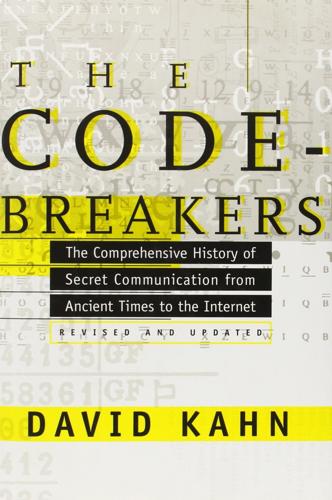
The Codebreakers: The Comprehensive History of Secret Communication From Ancient Times to the Internet
by
David Kahn
Published 1 Feb 1963
He then matched these signs to Linear B on the basis of resemblances in form and in frequency, and announced the identification of 14 signs. With these as a start, he began work to recover the Minoan language. The most valuable of the limited studies was a series of articles by Dr. Alice B. Kober, assistant professor of classical studies at Brooklyn College. In 1944 she presented a close textual analysis of tablets with an adze ideogram, and in 1945 pointed out that the final signs in words on ten “chariot” tablets varied. As Evans had suggested ten years earlier, she concluded that “it is highly probable that the language of the Linear Class B documents was inflected.”